TYPE DESIGN INFORMATION PAGE last updated on Mon May 6 09:21:03 EDT 2024
FONT RECOGNITION VIA FONT MOOSE
|
|
|
|
|
Type design in Russia | ||
|
|
|
|
SWITCH TO INDEX FILE
110design
|
Cofounder in 2011 of Cyreal, a Russian foundry. There, he designed typefaces such as Rationale (2011, with Olexa Volochay and VladimirPavlikov), Vidaloka (2011, a didone done with Olga Karpushina), Alike (2009, with Svetlana Sebyakina), and Adamina (2011, a text typeface for small print: free at OFL). I am not sure if Iceland (2011, Cyreal: free at Google Web Fonts) is also his. Typefaces made in 2012: Junge (a delicate roman face, free at Google Web Fonts, which was inspired by the calligraphy of Günther Jung), Merge Pro Greek and Cyrillic (codesigned with Kosal Sen, Philatype), Jacques Francois and Jacques Francois Shadow (Cyreal: co-designed with Manvel Shmavonyan, they are revivals of Enschedé No. 811 by J.F. Rosart; free at Google Web Fonts). Suisse International Condensed Cyrillic won an award at Modern Cyrillic 2014. Sumana (2015, free at Google Web Fonts, and published by Cyreal) is a family of Latin and Devanagari fonts for text setting and web usage. The Latin counterpart is derived from Lora by Olga Karpushina, Cyreal. Its vertical and horizontal metrics are adjusted to better match with the Devanagari. [Google] [MyFonts] [More] ⦿ |
Design site in Moscow. Creators of the geometric figure (Latin) stencil typeface Caribe Modular (2013), which was created as a project for the British Higher School of Art & Design. Intrnal Hybrid (2013) was also completed at the British Higher School of Art & Design in Moscow. Deriz (2013) is a high-contrast didone titling face. Intrnal Hybrid (2013) is a grungy techno Cyrillic typeface. Vintage and Coupage Font emulates various wood type and letterpress styles. [Google] [More] ⦿ | |
| |
Russian designer of the deco typeface Plein (1993, with A. Kustov). [Google] [More] ⦿ | |
Russian designer of Rublenaya Shadow (1957). [Google] [More] ⦿ | |
Designer at Soft union of the Cyrillic fonts Half-Ustav (1994) and Evangelie (1994), with Nikita Vsesvetskii. [Google] [More] ⦿ | |
AaAAaAlena
| Russian programmer. In 2021, she released the simple script typeface Duck Footprint for Latin and Cyrillic. [Google] [MyFonts] [More] ⦿ |
Chelyabinsk, Russia-based designer of the free Latin / Cyrillic typefaces Elfabe (2018) and One (2018, a brush script). [Google] [More] ⦿ | |
Academy
| Cyrillic font available from Paratype. Academy was designed circa 1910 at the Berthold type foundry (St.-Petersburg). It was based on Sorbonne (H. Berthold, Berlin, 1905), which represented the American Type Founders' reworking of Cheltenham of 1896 (designed in turn by Bertram G. Goodhue and Morris Fuller Benton) and Russian typefaces of the mid-18th century. Paratype: A low-contrast text typeface with historical flavour. The modern digital version was designed at Polygraphmash type design bureau in 1989 by Lyubov Kuznetsova. [Google] [More] ⦿ |
Swiss type technology expert of Russian origin. At ATypI 2005 in Helsinki, he spoke on Church Slavonic. [Google] [More] ⦿ | |
Russian designer of the decorative hacker font Cabra (2016). Dafont link. [Google] [More] ⦿ | |
Creative designer in Moscow who made a Cyrillic font called Origami (2013). This typeface was obtained by scanning cut and folded strips of paper, and has a hand-made dadaist appearance. I am not sure that it has been digitized. [Google] [More] ⦿ | |
Agor2012 Studio (or: Drem Bike Shop)
| Russian designer of Sesibo (2017, +BiFur), Galumbra (2016, handcrafted) and Grunge Lane Font (2016). Creative Market link. [Google] [More] ⦿ |
Codesigner with Jovanny Lemonad of the free squarish sans typeface Bully (2016). [Google] [More] ⦿ | |
Airunreal
| Stalingrad, Russia-based designer of the free AI and EPS-format Eco font (2017), which consists of foliated caps. Behance link. Creative Market link. [Google] [More] ⦿ |
Anna (Akina 686) is the Russian designer of the spiky almost medieval typefaces Cactus (2011) and Cactus Cyrillic (2011). [Google] [More] ⦿ | |
Alan N. Po
| |
Albert Arzumanyan
| |
Albert Filatov
| |
In 2018, Albert Kapitonov and Dmitry Kirsanov revived the early 20th-century typeface Lehmann Egyptian from the Berthold and Lehmann type foundries in St. Petersburg, and published it at Paratype. FontShop link. Klingspor link. [Google] [MyFonts] [More] ⦿ | |
Russian designer of the handwriting font Purple (2021) and the warped Latin & Cyrillic font Surge Sea (2021). [Google] [More] ⦿ | |
Moscow-based designer of the Latin / Cyrillic text typeface Ringvaart (2012). [Google] [More] ⦿ | |
Moscow-based designer. During his studes there in 2016, he co-designed the free constructivist / art nouveau / pre-Petrine Latin / Cyrillic typeface Dobrozrachniy with Misha Panfilov (Russian Fonts). Behance link. [Google] [More] ⦿ | |
Alternate URL. Dafont link. Behance link. [Google] [More] ⦿ | |
In 2014, Pavel Efremov, Danil Plyutenko and Aleksander Smolnikov (Saint Petersburg) co-designed the Praktik typeface during their studies at BHSAD in Moscow. In 2017, Aleksander designed the free EPS format Rusty Georgia, which is based upon Carter's Georgia. [Google] [More] ⦿ | |
Russian type foundry, est. 2016. [Google] [MyFonts] [More] ⦿ | |
Saint Petersburg, Russia-based designer (b. 1994) of the free shadow typeface family Airment (2018). [Google] [More] ⦿ | |
Aleksandr Andreev
| |
Novosibirsk, Siberia-based creator of the free pixelized typeface Upheaval Pro (2012), which is a Greek / Cyrillic extension of Upheaval by Brian Kent. In 2013, he created the pixelish typeface Dusty Pro for Latin, Greek, Cyrillic and Hebrew. It is an extension of Andreas Nylin's Dusty. Symvola (2014) is a free typeface containing basic Latin and Greek characters. The design is inspired by the time machine's interface from Space Quest IV and puzzle panels from The Witness. Omnic Sans (2016) is a free artificial language font that is based on the Omnic script used in the Overwatch by Blizzard Entertainment. In 2016, he also designed the free typeface Starseed Pro. Behance link. [Google] [More] ⦿ | |
| |
As a student in the TypeType education program in 2016-2017, she designed the Venetian antiqua Foundata. [Google] [More] ⦿ | |
Designer of the beautiful Cyrillic serif family Leksa (a winner at Paratype K2009) and the accompanying Leksa Sans family from 2004 until 2007. This was followed by equally gorgeous families such as Fence (2009, an ultra-fat artistic beauty). Skoropix is an experimental pixel typeface done with FontStruct. She also made Belladonna (2008, a stunning modern typeface for Latin and Cyrillic; a winner at Paratype K2009 and Grand Prize winner at Granshan 2011), Skoropix (with FontStruct), and the experimental typeface Cless (2009). She spoke about Cyrillic at ATypI 2008 in St. Petersburg. She received a TypeArt 05 award for the display family Fourty-nine face. Alternate URL. At MyFonts, one can buy Gorodets [2009: a Russian decoration typeface based on traditional wood-painting style from the town Gorodets on the Volga river, Russia], Leksa and Leksa Sans], Blonde Fraktur (2010: written with a quill by Alexandra Korolkova and prepared in digital form by Alexandra Pushkova), Airy (2010, a curly script), Airy Pictures (2010, animal and plant dingbats), Bowman (2010: a blackboard children's script), PT Serif (2011, Paratype's superfamily of 38 fonts, co-designed with Vladimir Yefimov and Olga Umpeleva; Open Font Library link), PT Circe (2011, a geometric sans family with a neat Thin weight; Third Prize for Cyrillic text typefaces at Granshan 2011), and Cless (2010: ultra fat and counterless). Together with Isabella Chaeva, she made PT Mono (2012, Google Web Fonts and Open Font Library). In 2012, Vasiliy Biryukov and Alexandra Korolkova co-designed the Christmas dingbat font Gingerbread House, together with a plump display face, Gingerbread. In 2013, Vasily Biryukov and Alexandra Korolkova co-designed the soft roundish sans typeface Kiddy Kitty (link). In 2014, she cooperated with Maria Selezenava on a revamped Journal Sans typeface at Paratype, called Journal Sans New (Latin and Cyrillic). This geometric sans in the style of Erbar Grotesk and Metro Sans is a major extension of the Journal Sans typeface (1940-1956, SPA, in metal form, and 1990s in digital form). Still in 2014, she co-designed Stem, a geometric large x-height Latin / Cyrillic sans serif with optical sizing, with Isabella Chaeva and Maria Selezeneva at Paratype. This was followed in 2015 by Stem Text. In 2015, she and Alexander Lubovenko co-designed Circe Rounded, which is an extension of her earlier Circe typeface (2011), both published by Paratype. In 2018, Paratype extended that family with Circe Slab (by Alexandra Korolkova and Olexa Volochay). Still in 2015, Alexandra Korolkova and Alexander Lubovenko published Aphrosine at Paratype, a typeface based on pointed pen script and situated somewhere between handwriting and calligraphy. Many alternatives and smart OpenType features help Aphrosine look like real handwriting. Codesigner of Kudryashev Display (2015, Isabella Chaeva, Alexandra Korolkova and Olga Umpeleva). Kudryashev Display is a set of light and high-contrast typefaces based on Kudryashev text typeface. In addition to Kudryashev Display and Kudryashev Headline typefaces, the type family includes also two Peignotian sans-serif typefaces of the same weight and contrast, with some alternates. The serif styles were designed by Olga Umpeleva in 2011, the sans styles were created by Isabella Chaeva in 2015 with the participation of Alexandra Korolkova. In 2016, she designed FF Carina, a delicate and absolutely stunning decorative didone. In 2018, Alexandra Korolkova and Manvel Shmavonyan designed Fact at Paratype. Fact (2018) is based on Frutiger. The Fact type system contains 48 upright styles with variations in width and weight and eight italics of normal width. At the end of 2018, Alexandra Korolkova, Alexander Lubovenko, and the Paratype team finished Six Hands, which is a collection of six handcrafted typefaces: Black, Brush, Chalk, Marker, Condensed and Rough. In 2019, Vitaly Kuzmin and Alexandra Korolkova co-designed the free sans serif typeface Golos Text at Paratype. It was originally commissioned by Smena (AIC Group) for state and social service websites. Typefaces from 2020: Sber (the type system for Russia's Sber Bank; by Korolkova and the Paratype team), Tupo Vyaz (a free modular closed sans serif font with very simple design and some elements from the northern variant of Vyaz slavonic calligraphic hand), Grrr (at Paratype, with Dmiry Goloub; a techno family characterized by an oversized lower case f). MyFonts interview. Kernest link. Klingspor link. View Alexandra Korolkova's typefaces. Speaker at ATypI 2019 in Tokyo. [Google] [MyFonts] [More] ⦿ | |
Graphic designer and illustrator in Moscow, who the Cyrillic decorative caps alphabet Chameleon (2015). [Google] [More] ⦿ | |
Typefaces from 2015: Sacred (alchemic, mysterious), LAM and Larch Brush. Typefaces from 2016: Line Flat (circuit font), Line Flat Icons. Typefaces from 2018: Volos (a great textured poster font), Ancient Geometry (alchemic), Slowik Emphasis (a geometric logo font). She also specializes in alchemic symbolism, with sets of ornaments called Golden Section, Unalome (a script with Buddhist symbols) and Sacred Symbols. [Google] [More] ⦿ | |
Saint Petersburg, Russia-based designer of a couple of Cyrillic display typefaces in 2018. [Google] [More] ⦿ | |
Russian designer of the blurry Latin/Cyrillic font FD Median (2003). He calls himself the "Flying Dutchman". [Google] [More] ⦿ | |
| |
Nizhny Novgorod, Russia-based designer of the free Latin / Cyrillic poster font Lumberjack (2015, with Jovanny Lemonad). See also at Dafont. Behance link. [Google] [More] ⦿ | |
Russian creator of the ornamental caps typeface Fusion II. [Google] [More] ⦿ | |
Aleksei Labsin is a graphic designer in Moscow. In 2015, he created the Cyrillic typefaces Beda and Hruschoby. Behance link. [Google] [More] ⦿ | |
Packaging designer in Moscow, who created the free Cyrillic weaving vector format typeface Water Plant in 2016. [Google] [More] ⦿ | |
Russian designer of the Cyrillic/Latin font PremudryCyr, based on an original by Tom Murphy. He also made Rublik (2001). [Google] [More] ⦿ | |
Moscow-based designer of the vernacular Latin / Cyrillic typeface Lingo Way (2016). [Google] [More] ⦿ | |
Russian codesigner (with Ivan Gladkikh and Alexandr Kalachëv) of Days and Days One (2009, a display sans face), and with Jovanny Lemonad of Metro (2009, constructivist) and Stalin One (2012, constructivist face, free at Google Web Fonts). Behance link. Typetype link. [Google] [More] ⦿ | |
Russian designer of the old Slavonic-inspired display typeface Kramola (2015, Latin and Cyrillic). [Google] [More] ⦿ | |
Novomoskovsk, Russia-based designer of the custom techno typeface Vis-a-Vis (2015) and the StarWars font Warcase (2015). Behance link. [Google] [More] ⦿ | |
Moscow-based designer of the connect-the-dots Cyrillic typeface Air (2016). [Google] [More] ⦿ | |
Alena Marusena
| |
Kursk, Russia-based designer of Wave (2019: a Cyrillic dry brush typeface). [Google] [More] ⦿ | |
Behance link. [Google] [More] ⦿ | |
Alena Tsemkalo
| |
Moscow-based designer of these Cyrillic typefaces in 2014: Cross Type, Art Type (all-caps ornamental typeface on the theme of breasts). [Google] [More] ⦿ | |
Moscow-based designer of Cross Type (2014: an artsy display typeface). [Google] [More] ⦿ | |
Nizhny Novgorod Oblast, Russia-based designer of the Chalk Eco font in 2015. [Google] [More] ⦿ | |
Moscow-based designer of the Cyrillic typeface Gore (2015), which is a hybrid of Kekur and Paratype's Rodeo. In 2015, he designed the free vector format font Shadow Cross. [Google] [More] ⦿ | |
In 2016, Saint Petersburg, Russia-based Alex Cotton and Stepan Lyaptsev co-designed the free handcrafted Cyrillic typeface Alcotton. Behance link for Stepan Lyaptsev. [Google] [More] ⦿ | |
Saint Petersbug, Russia-based designer of a rounded monoline Latin titling font (2014). Behance link. [Google] [More] ⦿ | |
Alex Denisov
| |
Typefaces from 2017: Curator (a curvy decorative didone), Gluck (a rounded monoline sans family with outlined and double outlined styles), Laser Dots, Zarathustra (a soft blackletter typeface family), Pedrera and Pedrera Script, Hooley (advertized as a party font), Forma (free counterless typeface), Fuego (calligraphic script), Arc Boutant (a vintage ballpoint-laden text typeface), Moloko (script), Etalon (a 33-style organic sans family), Molodos All Caps, Click (Stripes, Black), Geometry Pair, Venzel (an interesting experimental deco typeface), Batllo (inspired by Gaudi), Pluma (handwriting). Typefaces from 2018: Pistoletto (a jelly or toothpaste script inspired by the work of Roy Lichtenstein and Michelangelo Pistoletto), Lento (a monoline script family), Rajomon (a dry brush typeface), Solomonk (an inky script), Ma Tilda, Warka, Abudabi (connected script), Lunar, Tilda (a monoline sans with character), Jeunes (connected script), Danken (a textured all caps typeface family), Salud (a hand-drawn slab serif, with some interesting sketched and arched styles), Hoochie, Brutto (stencil with alyering and coloring potential), Hvala, Mafond (slab serif), Tadaam, Liberal (a simple monoline sans). Typefaces from 2019: Etewut Serif, Etewut Sans, New Lobster (sigange script). Typefaces from 2020: Vulgary (a glistening oily font family), Spiro 2020 (a rounded sans), Chakra (script), Baker ST (spurred, all caps), Geraldica (a monoline script). Typefaces from 2021: Domosed (sci-fi), Riley Wow (a round oily font for emulating glows). As Etewut Graphics in Florence Italy, he published Pronto (2018, a monoline sans) and Allora (2018). Typefaces from 2022: Domosed Slab Serif. [Google] [MyFonts] [More] ⦿ | |
Alex Frukta
| |
Alex Frukta
| |
Aka Alex Gorilla. Alex Gart (Chelyabinsk, Russia) created the commercial alchemic typeface The Elementarity (2013). It can be bought here. He also made Weather Icons (2013). Behance link. Graphic River link for buying his typefaces. [Google] [More] ⦿ | |
Alex Ivanov
| |
| |
Alexander Alexandrowitsch Roth
| |
Russian type designer. His Colmena (2009, ParaType) was designed for books for children. This font used to be called FD Harvey. Klingspor link. [Google] [MyFonts] [More] ⦿ | |
Russian artist, art critic and historian, 1870-1960, who drew Alphabet in Pictures in 1904. [Google] [More] ⦿ | |
Alexander Bobrov
| |
| |
Moscow-based designer of Julieta (2018), Raspberry (2018), Lemon Tree (2018), Truffle (2018), the brush script typeface Submarine (2018) and the handcrafted typefaces Luminous (2018), Derby (2018), Melting (2018) and Honey Berry (2018). [Google] [More] ⦿ | |
Russian creator of Psi Hoe Pate's Altern-8 (2012, a squarish typeface for Latin and Curillic created using FontStruct). [Google] [More] ⦿ | |
Russian designer of the Cyrillic/Latin version of Allen R. Walden's font Terminator. Obsolete home page. [Google] [More] ⦿ | |
| |
Illustrator in Petrozavodsk, Russia, who designed the handcrafted Cyrillic poster typeface Heikko Script (2014). [Google] [More] ⦿ | |
Russian codesigner with Olga Chekina of Tsar Saltan, a display font which won an award at Paratype K2009. [Google] [More] ⦿ | |
| |
Designer of Techno (1993) and RussianH (Bersearch). [Google] [More] ⦿ | |
| |
Moscow-based designer of the Cyrillic caption font Bipolar (2018). [Google] [More] ⦿ | |
Russian designer of the Cyrillic/Latin version of Friedrich Poppl's font Laudatio. [Google] [More] ⦿ | |
Aka Saint-Sanches. Saint Petersburg, Russia-based designer of Italian Roundhand (2017), a Latin / Cyrillic typeface based on the work of C.P. Zaner, ca. 1900. Other typefaces from 2017 include Unadorned Hairline (perhaps a silent movie font) and Skeleton Letters (a curly decorative monoline typeface family, with monogram ornaments). Creative Market link. Behance link. Graphicriver link. [Google] [More] ⦿ | |
Russian designer of the free all caps sans typefaces Next Art Bold (2017) and Next Art Thin (2017) for Latin and Cyrillic. In 2018, he published the extensive free all caps sans typeface family Songer. In 2019, he released the hybrid typeface Comic Helvetic. [Google] [More] ⦿ | |
Designer in Saratov, Russia, who created a multilined caps typeface in 2012. [Google] [More] ⦿ | |
Saint Petersburg, Russia-based designer of Art Font (2016), Rustica (2015, calligraphic alphabet), Rust Cursiv (2015), Antiqua Cvadrato (2015), Capitalis Roman (2014, a calligraphic alphabet), Futurista (2015). In 2016, he designed the hand-drawn typeface Krita. [Google] [More] ⦿ | |
A list of digital typefaces influenced by Rodchenko's constructivist alphabets. [Google] [MyFonts] [More] ⦿ | |
Alexander Samburov
| |
Russian designer of the Russian Road Sign Font (2013), in which the Cyrillic part is based on standards GOST 10807-78 and GOST R 52290-2004. This font is used on Russian road signs. There is a Latin part, which is not standardized. Free download. [Google] [More] ⦿ | |
| |
Moscow, Russia-based type designer who specializes in handdrawn fonts, especially for children's books. Creator of Rooster Squad (2021), Logica Sans (2021: minimalistic and monolinear), Cheeky Tommy (2021), Mouse Paw (2021: a script font made with a mouse), and Deep Inside (2021: a tall handcrafted typeface). [Google] [MyFonts] [More] ⦿ | |
Alexander Sheliketo
| |
Alexander Shimanov
| |
Typefaces from 2014: Game Font 7, Square Sans Serif 7, High Sans Serif 7, Smooth Line 7, Bright Line 7, Double Line 7, Rounded Line 7, Rounded Sans Serif 7, Android 7, Arial Narrow 7, Bold Sans Serif 7, Light Sans Serif 7 (avant-garde sans), Modern Sans Serif 7, Software Kit 7 (dingbats), Advanced Sans Serif 7m Strong Line 7. Typefaces from 2015: Steel Blade 7, Semi Rounded Sans Serif 7, Bold Game Font 7, Double Force 7, Roman Font VII, Game Sans Serif 7, Sans Serif Plus 7, Soft Sans Serif 7, Smooth Pixel 7, Clear Metal 7, Military Font 7 (stencil). Typefaces from 2019: Clear Line 7. Open Font Library link. Fontspace link. See also here. Aka Chess 7 and as Style 7. [Google] [More] ⦿ | |
| |
Russian designer of the Western reverse contrast wedge serif typeface Rever (2019, Paratype). [Google] [MyFonts] [More] ⦿ | |
Alexander Tarbeev
| |
Alexander Tiunov
| |
Graphic designer and illustrator in Krasnodar, Russia. He created some experimental typefaces in 2009-2010. [Google] [More] ⦿ | |
Alexandr Kalachëv
| |
| |
During her studies in Moscow, Alexandra Ashikhina designed an octagonal typeface for Latin and Cyrillic in 2019. [Google] [More] ⦿ | |
Saint Petersburg-based designer of a few display typefaces in 2014, including Cat, Avi, Look, Holes, Cara, Ho, Minich, and SK. [Google] [More] ⦿ | |
| |
| |
Ivanovo, Russia-based designer of Science Things (2016, +dingbats) and the children's font My Family (2016). [Google] [More] ⦿ | |
| |
| |
During her studies at the British Higher School of Design in Moscow, Alexandra Pavlenko created the dry brush font Archeology (2017), an onion print typeface (2017), the very fat poster font Play (2017) and the prismatic typeface Strips (2017). [Google] [More] ⦿ | |
| |
| |
| |
During her studies at Stroganov Moscow State University of Arts and Industry, Alexandra Tarnavskaya created the Cyrillic display typeface Glitch (2015). Behance link. [Google] [More] ⦿ | |
Moscow, Russia-based designer of the constructivist typeface Rodchenko Condensed (2017). [Google] [More] ⦿ | |
| |
Or Aleksey Achyo. Omsk, Siberia-based designer of the free Pacman-inspired typeface Accio Beta (2016). Behance link. [Google] [More] ⦿ | |
Alexei Chekulayev
| |
Russian in Munich who designed the Mac font "Russian" in 1993. [Google] [More] ⦿ | |
Alexei Vanyashin
| |
| |
| |
Saint Petersburg, Russia-based designer of the free Latin / Cyrillic modular typeface Molodost (2018) and the free hipster typeface Nesovremenny (2019). [Google] [More] ⦿ | |
Rostov-on-Don, Rissia-based designer of the artsy typeface Pozds (2016), and the ghastly Horror Font (2016). Behance link. [Google] [More] ⦿ | |
Russian designer of TypeWriterNormal and EuroStyle. In 2010, he made the perforated plate font Performance (ParaType). FontShop link. [Google] [MyFonts] [More] ⦿ | |
Behance link. [Google] [More] ⦿ | |
Alexey Dombrovskiy was born in 1964 in Russia (Uzlovaya, Tula region). He graduated from the Tula Polytechnical Institute in 1986. He works in book design. He cooperates with various publishing houses and designs books for the Russian Academy of Sciences, the Russian Entomological Society, the Moscow State University, the Tula State University, and printed matter for the Bolshoi Theatre, the Moscow Kremlin Museums, the State Hermitage Museum. Author of some articles on the history of initials, a topic about which he spoke at ATypI 2008 in St. Petersburg. In that talk, he covered these phases of initial caps development in Russia:
| |
Aka Alexey Blogoodf and Aleksei Fetisov. Designer in Moscow. In 2017, he designed the display typeface Koras (blackboard bold), Arktica, Arcachon (organic sans), Arcachon Dots, Arugula (handcrafted), Adequate (thick rounded sans), Public Icons, the organic sans typeface Iconic, the decorative blackletter font Kaligry, Fluffy, the bilined titling typeface Blogoodf, and the vintage script font Jewel. | |
Alexey Frolov
| Designer in St. Petersburg, Russia, b. 1992, aka Alexey Frukta. He made the free fonts Kankin (2012, a heavy display typeface for Latin and Cyrillic), Silverfake (2012), Tetra (2011. +Cyrillic), Pacifica (2011), Perforama (2010), Velvet Drop (2010) and Bardelin (2010), Sumkin (2010, a fat signage typeface for Latin and Cyrillic), SumkinfreetypeMRfrukta2010, TotShrift-BoldBold (2010), Bext (2010), the leaf-themed display typeface Kaori (2010, Latin and Cyrillic), Grandnover (2010), and the futuristic typefaces Kvadro (2009), Brava Novella (2010, heavy slab serif) and Kardon (2010), downloadable here. Some of his fonts are commercial, including the beautiful fat display typeface Houston (2013). Behance link. Klingspor link. Hellofont link. Gumroad link. [Google] [More] ⦿ |
Russian type designer. In 1992, he and Alexey Chekulaev formed Double Alex. They co-designed Bastion Kontrast at Double Alex Font Studio, a family based on Helvetica, and a number of other typefaces. [Google] [More] ⦿ | |
Rostov-on-Don, Russia-based designer of the organic sans typeface Happy Sprat (2017). Creative Market link. Behance link. [Google] [More] ⦿ | |
He contributed to the GNU Freefont project via FreeSerif Cyrillic, and some of the Greek symbols. He also provided valuable direction about Cyrillic and Greek typesetting. Kernest link. Fontspace link. Another URL. Google Plus link. Abstract Fonts link. [Google] [MyFonts] [More] ⦿ | |
Alexey Kustov
| |
Russian graphic designer. Does some corporate identity design. [Google] [More] ⦿ | |
Typefaces from 2017: Mayland (monoline script). Typefaces from 2019: Deskmark Pro Slab. Behance link. Creative Market link. His foundry is called Newface. [Google] [MyFonts] [More] ⦿ | |
Russian graphic designer who created AM Racy (2017), the Victorian (Latin) typeface AM Fame (2017) and the display typeface AM Consist (2017). [Google] [MyFonts] [More] ⦿ | |
Saint Petesburg, Russia-based designer of the medieval decorative Cyrillic typeface Alebarda (2017). [Google] [More] ⦿ | |
| |
Digital artist in Tagil, Russia. He creates innovative geometric alphabets and has published great typographic posters. [Google] [More] ⦿ | |
Alexey Potapov
| |
Moscow-based designer of the free octagonal typeface RMS Sans (2019) for Latin and Cyrillic. [Google] [More] ⦿ | |
Alexey Rud
| |
Designer at Type Market (Moscow) of the Cyrillic font family EuropeCond (1995). [Google] [More] ⦿ | |
| |
During his studies at the School of Type design in Saint Petersburg, Russia, Alexey Skvortsov designed the two-style text typeface Bilingua (2016-2017), which covers Latin and Cyrillic. [Google] [More] ⦿ | |
| |
Alexey Velichkin (Moscow) created the rough Cyrillic army stencil font Ist Bridzh (2014). Behance link. [Google] [More] ⦿ | |
Alfi Design
| In 2018, Albert Filatov (Saint Petersburg, Russia) published Citifont, a Latin / Cyrillic serif typeface with a robust outlook, that according to him was made for navigation in the city of Saint Petersburg, Russia. In 2018, he designed the futuristic / sci-fi / LED font Space for Latin and Cyrillic, and the wide display sans typeface Muha. Port Anchor (2018) is a decorative typeface. Typefaces from 2019: Raster (a free blocky constructivist font). [Google] [More] ⦿ |
| |
Graphic designer and illustrator in Moscow who created some Latin typefaces in 2013. Behance link. [Google] [More] ⦿ | |
Graphic designer in Moscow, who created the grid-based Cyrillic typeface Po-Russki (2015). Behance link. [Google] [More] ⦿ | |
During her studies at the British Higher School of Art in Moscow, Alina Smolina created a layered Cyrillic typeface called Colored (2013). Blow to Didot (2013) is a deconstructed didone typeface. Stick Wand (2013) is a Cyrillic stick font. [Google] [More] ⦿ | |
Moscow-based designer of the handcrafted typeface Osolki Pechalki (2018). [Google] [More] ⦿ | |
Saint Petersburg, Russia-based designer of the experimental prismatic Cyrullic typeface simply called Decorative (2016). [Google] [More] ⦿ | |
Barnaul, Siberia-based designer of the techno typeface Array (2017). [Google] [More] ⦿ | |
Alisa Katrevich
| |
Moscow, Russia-based designer of an op-art typeface for the 26th Brno biennal in 2014. [Google] [More] ⦿ | |
Moscow-based designer of the Cyrillic display typeface Graphical (2013). Behance link. [Google] [More] ⦿ | |
Russian language type news and blog site managed by the Jakovlev Type Foundry. Subpage on Russian fonts. [Google] [More] ⦿ | |
Russian designer in 2019 of the script typefaces Serendipity, Creativity, Sunset Beach and Someone. [Google] [More] ⦿ | |
Moscow, Russia-based designer, at The British Higher School of Art and Design, of the Cyrillic typefaces Mondrian (2018) and Crosstype (2018). [Google] [More] ⦿ | |
Krasnodar, Russia-based designer of the handcrafted Cyrillic typeface Introvert's Portrait (2017). [Google] [More] ⦿ | |
Moscow-based type and graphic designer who was born in 1991 in Ardatov. Creator of Alya Hand (2010, a curly typeface based on her handwriting, which was done with Konstantin Boldovskiy of the Russian foundry Konst.ru. [Google] [MyFonts] [More] ⦿ | |
Moscow-based designer of the Cyrillic display typeface Kanitel (2014). [Google] [More] ⦿ | |
| |
| |
Amazingmax
| Maxim Avdeev (aka Amazingmax) is the Kazan, Russia-based creator (b. 1997) of some futuristic/game fonts in 2009: AmazXakep, AmazDooMLeft, AmazDooMLeft2, AmazDooMLeftOutline, AmazDooMRight, AmazDooMRight2, AmazDooMRightOutline, AmazS.T.A.L.K.E.R.Italic, AmazS.T.A.L.K.E.R.v.2.0. In 2010, he made the AmazGoda family of comic book typefaces. In 2011, he added AmazHand_First, AmazHand_First_Alt, AmazHand_First_Alt_X, AmazHand_First_Hard, AmazHand_First_Smooth. Fonts from 2012: Amaz Mega Grunge. [Google] [More] ⦿ |
Tomsk, Russia-based calligrapher and lettering artist. In 2018, he published the wonderful Cyrillic ink splatter typeface Hazrskij. [Google] [More] ⦿ | |
An An
| Anik Ya (An An) is the graphic designer in Saint Petersburg, Russia, who created the design culture typeface Rasoir (2014), named after the Miu Miu Rasoir sunglasses. She also created the experimental typeface Kaiv (2014), which is named after sunglasses by Paul Smith. [Google] [More] ⦿ |
Typefaces from 2017: Grunge Dry Brush (an extension of her 2016 typeface), Ink Brush, Bold Brush, Bold Grunge Display, Dry Brush, Bold Dry. [Google] [More] ⦿ | |
Moscow, Russia-based designer of the experimental Cyrillic typeface Linius (2017). [Google] [More] ⦿ | |
Moscow-based student who created the Latin/Cyrillic renaissance antiqua typeface family Orlando (2012). [Google] [More] ⦿ | |
During her studies at British Higher School of Art and Design in Moscow, Anastasia Aiguzina designed the straight-edged techno typeface Kurskaya (2016, for Latin). [Google] [More] ⦿ | |
Prolific art director from Moscow who is now located in New York. Her work includes the fashion mag Latin/Cyrillic typeface Cadre (2014), the prismatic custom typeface Icon Face (2014, done for a make-up school) and a few other fashion industry fonts. Behance link. [Google] [More] ⦿ | |
Anastasia Averina
| |
Russian designer at TypeMarket of AllegroScript (1995), Palladium (1994-1995), SonetSerif (1996, based on Stone Serif from 1987), Anastasia Script (1996: based on Shelley Script (Matthew Carter, 1972)), and Oliver New (1995, TypeMarket: based on Antique Olive by Roger Excoffon, Olive, 1962-1968). ParaType link. [Google] [More] ⦿ | |
Saint Petersburg, Russia-based designer of the colorful Cyrillic initial caps alphabet Razrabotka (2017). [Google] [More] ⦿ | |
Russian graphic designer. She made the neon-sign based Cyrillic typeface Provoloka (2009). [Google] [More] ⦿ | |
Russian designer of these handcrafted typefaces in 2017: Cute Monsters, Horror Story, Autumn Blessings, Hello Fall, Christmas Fonts, Summer Flowers, Hello Summer Cutout, Stars and Types, Aleksandr (children's hand), Lily Bloom (floriated alphabet). Typefaces from 2018: Star Studded, Raccoon Chubby, Naturia (floriated), The Mermaid Story, Squishy. Typefaces from 2019: Fireworks, Mellow Soldier, This Is Love, Surprise Party. Christmas Mornings. Creative Fabrica link. [Google] [More] ⦿ | |
Saint Petersburg, Russia-based designer of the Cyrillic paperclip typeface Razrabotka Akcidentnogo (2018). She also cyrillicized Agonz's Ailerons in 2018. [Google] [More] ⦿ | |
Anapa, Russia-based designer of a curly connected Latin / Cyrillic script typeface and of the sketched Chalk Cyrillic in 2016. Aka Inky Owl. Typefaces from 2022: Kit Cloudkicker (in a child's hand), Paperboard (a paper cutout font), Pumpkin Magic (a brush font), Sunny Citrus (a bold grungy font), Hocus Pocus (a paper cutout font). [Google] [MyFonts] [More] ⦿ | |
Russian poet who designed the handwriting fonts 47 (2008) and Denistina (2007). Aka X-tina and as Christina-S. Dafont link, where the designer is called Chrissette. [Google] [More] ⦿ | |
Illustrator and graphic designer in Saint Petersburg, Russia. Creator of the girlish Latin / Cyrillic script typeface Lila Paris (2015) and of the handcrafted Ampersands (2015). Creative Market link. [Google] [More] ⦿ | |
Moscow-based designer of an eperimental Cyrillic typeface (2015). [Google] [More] ⦿ | |
Moscow-based graphic designer. In 2019, she created Feminist by combining Futura and Bodoni. [Google] [More] ⦿ | |
Creator of the great Cyrillic poster font Author (2014). Anastasia is based in Samara, Russia. [Google] [More] ⦿ | |
Designer, with Ivan Gladkikh (Jovanny Lemonad) of the free typeface USSR Stencil (2016), published by Typetype in Russia. [Google] [More] ⦿ | |
Moscow-based designer of the formal calligraphic typeface Hertsgard (2018). [Google] [More] ⦿ | |
In 2019, she designed the wavy Somnambulist, the brush script Huckleberry Gateau, and the monoline script Winsomeness. [Google] [More] ⦿ | |
Moscow-based designer of the experimental Latin / Cyrillic typefaces Grungedidot (2013), Multilayer Font (2013), and Modular Font (2013). [Google] [More] ⦿ | |
Saint Petersburg, Russia-based designer (b. 1993) of the sketched Latin / Cyrillic typeface Stripe (2016). [Google] [More] ⦿ | |
Saint Petersburg, Russia-based designed of the amoebic Cyrillic font Amorfus (2019). [Google] [More] ⦿ | |
Yakutsk, Siberia-based designer of the rounded sans typeface Bekunuk for Latin and Cyrillic (2019). [Google] [More] ⦿ | |
Saint Petersburg-based creator of Milan (2012) and Kidot (2013). She writes: Kidot font was created as a corporate font for KIDSTUDIO. It was born from professional passion to design & typography. A child of bauhaus and modernism. Honest & pure. Created by Anastasia Yakovleva & Marco Innocenti. [Google] [More] ⦿ | |
Saint Petersburg, Russia-based designer of the squarish typeface So Close (2015). [Google] [More] ⦿ | |
Russian type designer who received a TypeArt 05 award for the display family EZZ. [Google] [More] ⦿ | |
At HSE Art & Design School in Moscow, Anastasija Gorbova designed Treestick (2018). [Google] [More] ⦿ | |
| |
Sochi, Russia-based designer of the handcrafted shadow typeface Daddy Font (2017). Behance link. Creative Market link. [Google] [More] ⦿ | |
At Siberian Federal University, Anastasiya Shlyatseva (Krasnoyarsk, Russia) created a pixelish Latin / Cyrillic typeface in 2017. [Google] [More] ⦿ | |
During her graphic design studies at BHSAD in Moscow, Anastasiya Shtern designed the Latin display typeface Modul (2013) and the mechanical ornamental caps typeface for Cyrillic called Reconstruction (2013). [Google] [More] ⦿ | |
Also written Anatolij Kudrjavcev. Russian type designer who developed the extensive Cyrillic sans family PT Parangon from 1996 until 2002. Paratype states: This type family belonges to Neogrotesque subclass of closed Sans Serif. Letterforms of lower case is based on the tradition of 1710 Civil type and some modern Italic types. For Parangon Poluustav and Parangon Ustav, he received two awards at TypeArt 05. [Google] [MyFonts] [More] ⦿ | |
Krasnoyarsk, Russia-based designer of a constructivist octagonal Latin / Cyrillic typeface in 2016. He also designed the free dot matrix typeface Cadet (2016). Typefaces from 2017: Eight Line Grecian Condensed (wood type revival). Behance link. [Google] [More] ⦿ | |
London, UK-based designer of the octagonal Latin /Cyrillic typeface AS Izhevsk (2018), which is inspired by the industrial city of Izhevsk. [Google] [More] ⦿ | |
Graphic designer and illustrator in Moscow. Creator of a colorful type poster (2009) for a children's book based on Futura. From it he derived a painted-look version of Futura (2009). Home page. Another URL. Another typeface. [Google] [More] ⦿ | |
Russian creator of an experimental font obtained by combining several fonts made by students at the British Higher School of Art and Design in Moscow. [Google] [More] ⦿ | |
Andrei Gorshkov
| |
Andrei Izotov (Moscow State University) is the creator of the old Slavonic typeface Church AI (1995), which can be found here. [Google] [More] ⦿ | |
Russian designer of the beautiful Open Font Library uncial Cyrillic typeface Ostromirovo (2008), which is based on Ostromirovo evangeliye [Ostromir Gospel] (1056-1057). Other typefaces there include Rus Sans Pokrytie (2009, based on Luxi Sans; withdrawn in 2010) and Rus Sans 3 (2010). [Google] [More] ⦿ | |
Saint Petersburg, Russia-based designer who created a modern Latin / Cyrillic sans typeface with an extensive set of dingbats, Garage Tools, in 2017 in cooperation with Jovanny Lemonad. Behance link. [Google] [More] ⦿ | |
Russian designer of the vector format typeface Watercolor (2017). [Google] [More] ⦿ | |
Russian type designer. Agfa/Monotype designer of the Cyrillic fonts Bodoni Poster Cyrillic, Nevsky (Western style), Pskov (octagonal font), Tatlin (in the style of early Russian constructivism). [Google] [MyFonts] [More] ⦿ | |
| |
Russian creator of a nail-themed all caps Cyrillic typeface in 2012. [Google] [More] ⦿ | |
Moscow-based motion graphics designer. He created the comic book style typeface Fence Font (2009). Home page. Another URL. [Google] [More] ⦿ | |
Moscow-based designer of Probe 10px (2014, Open Font Library), Omnibus Regular (2015, a sans; +Cyrillic), a free pixel typeface, and Omnibus Serif (2015, also free). Behance link. Open Font Library link. [Google] [More] ⦿ | |
Designer at ATRI, Graphic bureau Az-Zet of the Cyrillic/Latin font AZ NewsPaperC (1990-1995), which is similar to News Gothic by Morris Fuller Benton, ATF, 1908. [Google] [More] ⦿ | |
Behance link. [Google] [MyFonts] [More] ⦿ | |
Russian designer (b. 1975, Moscow) who won an award at Bukvaraz 2001 for Handmade (hand sign font), and for Rouble, a minimalist Latin/Cyrillic font made in 1999-2001. He received a TypeArt 05 award for the dingbat family Astra. Other typefaces include Lenta, Moloko and Svoboda. He graduated from Moscow State University of Art (named after S. Stroganov in 2001). The astronomical signs font Astera was published by Paratype in 2008. Other Paratype fonts by him include Brusque (2008, renamed Rouble), Cliche (2008, stencil face), FastFingers (2008, remake of Handmade), Powerview (2010, with Yana Kutyina), Chetwerg (2014, which won an award at Modern Cyrillic 2014), and Vataga (2008, a human typefaces dingbat font co-designed with Yana Kutyina). [Google] [MyFonts] [More] ⦿ | |
Andrey Chernevich
| |
| |
Artist and founder and CEO of Kula Tech who is based in Moscow. In 2010, he created the abstract typeface Tot Kexit. [Google] [More] ⦿ | |
| |
| |
Moscow-based graphic and type designer (1923-1997). Designer of ParaType Magistral (1997, digitized by Dmitry Kirsanov), a geometric display sans based on the artwork of Kryukov (1923-1997). Also available at URW. Both Latin and Cyrillic versions exist. During 20 years starting from the early 60s, Andrey Kryukov headed the Studio of Applied Graphics at Moscow Artists' Union. He worked as a designer for large Russian companies and organizations like Vneshtorgizdat, Trade Chamber, Muzyka Publishing and Melodia. [Google] [MyFonts] [More] ⦿ | |
Andrey Kudryavtsev
| |
Andrey Kudryavtsev Type Foundry (or: AKTF)
|
Andrey Kudryavtsev designed Spacexplorer (2012), Necromant (2012), Flexy Sans (2011), Otrada (2011, signage script), Micronica (2008), a font shaped like old TV screens, Karlson (2009), Imperator (2010, a Trajan face), Alter (2010), Sommelier (2011), Alebarda (2009), Rubicon (2009) and Flexy Sans (2009). Typefaces made in 2012 include the macho slightly flared Antey (Latin and Cyrillic) and the strong display sans typeface Tambov. In 2013, AKTF published Softipen Script. In 2014, he created Qwincey FY (a high-contrast slightly flared almost Peignotian sans family, published by FontYou), Warren Narrow and Achille II Cyr FY (together with the Fontyou team of Alisa Nowak and Gregori Vincens). Typefaces from 2015: Smile Pro (a fat multi-style handcrafted poster family of exceptional beauty; together with Rodrigo Araya), Ardilla Small (a rounded small x-height sans done together with Rodrigo Araya; inspired by the children's show Peppa Pig), Plumps, Antey, Crisper. Typefaces from 2016: Pequena Pro Cyrillic (Rodrigo Typo), Robest (unicase). Typefaces from 2017: AK Sans, Hatter Cyrillic Display (a Halloween font), La Pica (by Rodrigo Araya and Andrey Kudryavtsev), Fairystory (curly typeface), Kreker (a rounded poster sans), Stickout (comic book style). Typefaces from 2018: Czarevitch (a Cyrillic and Cyrillic simulation pair), Skaz (a psychedelic type inspired by the Victorian typeface Ringlet), Sitari, Dozer, Squick (a comic book / children's font family by Franco Jonas, Andrey Kudryavtsev and Rodrigo Araya), Freept (a free marker font), Nightelf, Ingot (a condensed rounded blackletter), Insolenta. Ding (2018) is a great fattish cartoon font that was co-designed by Rodrigo Araya Salas, Andrey Kudryavtsev and Franco Jonas. See also its extensions, Ding Pro (2019) and Ding Extra (2019). Typefaces from 2019: Clarence Alt (a an almost bubblegum children's book sans by Franco Jonas, Rodrigo Araya Salas and Andrey Kudryavtsev). Typefaces from 2020: La Pica Bonus (a vernacular or supermarket style font and dingbat family by Andrey Kudryavtsev and Rodrigo Araya Salas), Ancoa Slanted (an angular display family in 15 styles; by Andrey Kudryavtsev, Rodrigo Araya Salas and Franco Jonas Hernandez), Skippie (a comic book family by Andrey Kudryavtsev, Rodrigo Araya Salas, Bruno Jara Ahumada and Franco Jonas, and four sets of dingbats including Skippie Monster Lucha Libre and Skippie Monster Halloween), Ancoa (an angular 19-style layerable typeface by Andrey Kudryavtsev, Rodrigo Araya Salas and Franco Jonas Hernandez). Typefaces from 2022: Chessnota (a chess font). Behance link. Creative Market link. Myfonts link. Klingspor link. View the typefaces made by AKTF. Patreon link. [Google] [MyFonts] [More] ⦿ |
Russian type designer. He created the free monospaced Anka Coder family in 2010, which was developed for printing of source code. The fonts cover Latin and Cyrillic, among other things. The font names: AnkaCoder-C75-b, AnkaCoder-C75-bi, AnkaCoder-C75-i, AnkaCoder-C75-r, AnkaCoder-C87-b, AnkaCoder-C87-bi, AnkaCoder-C87-i, AnkaCoder-C87-r, AnkaCoder-b, AnkaCoder-bi, AnkaCoder-i, AnkaCoder-r. Download sites: Google Code Archive, Google, Open Font Library. [Google] [More] ⦿ | |
Ekaterinburg, Russia-based calligrapher. Creator of a Latin Kanzlei-style blackletter alphabet (2015). [Google] [More] ⦿ | |
Russian designer of the Cyrillic/Latin version of Ray Larabie's fonts Monofonto and Neuropol, and of Newland Black (after Rudolf Koch's Neuland, 1923). He also made OCR B (a Cyrillic version) and Dollar. [Google] [More] ⦿ | |
Graphic designer in Saint Petersburg, Russia, who created the 3d Cartoon Font in 2013. [Google] [More] ⦿ | |
Russian designer of the molecular monolinear sans typeface Grossesbuch (2021) for Latin and Cyrillic. In 2022, he published Life Cinema Screen, a poster font that is both stylish and retro. [Google] [MyFonts] [More] ⦿ | |
Andrey V. Panov
| |
Russian co-designer with Jovanny Lemonad of Flow (2010, a free pair of Latin hand-printed typefaces). [Google] [More] ⦿ | |
St. Petersburg (Russia)-based designer of Lemur Light (2007) and Berta Drug (2008). Dafont link. Another URL. [Google] [More] ⦿ | |
Magnitogorsk, Russia-based graphic designer who created Simple Line Icons (2015) and the grid-based squarish typeface Mebius (2015). [Google] [More] ⦿ | |
Typefaces from 2021: Charming Lines, Tutti Frutti, Sweet Apricot, Magical Time, Tropicana, Garden's Secrets. [Google] [More] ⦿ | |
Illustrator who studied at the British Higher School of Art and Design in Moscow in 2012. She created several beautiful lettering posters. [Google] [More] ⦿ | |
Anik Ya
| |
Moscow-based designer of the thin hipster typeface Geronimo (2018) for Latin and Cyrillic. [Google] [More] ⦿ | |
| |
Moscow-based illustrator. In 2020 she drew English Animals Alphabet for children's books. [Google] [More] ⦿ | |
| |
Graphic designer in Moscow. Creator of an unnamed artistic Latin script typeface in 2013. [Google] [More] ⦿ | |
Saint Petersburg, Russia-based designer of the squarish and quite innovative all caps Animal Alphabet (2018). [Google] [More] ⦿ | |
Moscow-based designer of the shaky handcrafted typeface Lefty (2015), which emulates left-handed writing of a right-handed person. [Google] [More] ⦿ | |
Anna Chaykovskaya was born in Severodvinsk in 1961. An art-critique, journalism, teacher. Since 2001 Anna Chaykovskaya is an assistant editor-in-chief of the "Kuitpohod" magazine in Moscow. At ATypI 2008 in St. Petersburg, she spoke about the end of the era of wood type. [Google] [More] ⦿ | |
Designer of the playful typeface Redrum (2014), and of the experimental typefaces Muscari (2014), Eat (2014), Milk (2014), Forest Fish (2014) and Polychrome (2014). Anna is based in Saint Petersburg, Russia. [Google] [More] ⦿ | |
Yekaterinburg, Russia-based designer of the free Latin / Cyrillic sans typefaces AC Line (2013) and AC Boucle (2015). [Google] [More] ⦿ | |
| |
During her studies, Yekaterinburg, Russia-based Anna Drozd designed the free experimental Latin / Cyrillic typeface Abraxas (2019). [Google] [More] ⦿ | |
Anna Grosh was born in Krasnoyarsk City, Siberia and now resides in San Francisco, California. She earned a Bachelor degree in Architecture from the Krasnoyarsk State Academy of Architecture and Construction, and completed a Masters in Interior Design at the Open Social Academy of Design in Moscow. She is in the process of getting her second masters in graphic design at the Academy of Art University. She specializes in typographic design, illustration and graphic design. In 2010, she embarked on an ornamental typeface. She is working on an ornamental caps typeface. Old Behance link. [Google] [More] ⦿ | |
Artist and illustrator from Russia, b. Aldan, Siberia, now located in St. Petersburg. In 2004 she graduated from the Saint-Petersburg Pedagogical University. In 2020, she drew an Animals Alphabet for children's books. In 2017, she drew a (Latin) Watercolor Alphabet. [Google] [More] ⦿ | |
In 2019, Maria Doreuli and Anna Khorash released the variable font CoFo Peshka at Future Fonts. Inspired by the industrial and military lettering in the Soviet era, it is named after the Pe-2 aircraft also called the Peshka. CoFo Peshka features weight and width axes. Future Fonts link. [Google] [More] ⦿ | |
During her studies, Kursk, Russia-based Anna Kipot (now based in Saint Petersburg) created Display Face 32 Bit (2015). [Google] [More] ⦿ | |
Behance link. [Google] [More] ⦿ | |
Russian designer of the modular techno typeface Flickulor (2018, made with FontStruct). She also designed the street art Cyrillic font Amons (2018). FontStruct link. [Google] [More] ⦿ | |
Student at the British Higher School of Art and Design in Moscow. Behance link. Creator of Bradbury Disgrace (2012, grungy) and Outer Space Crime (2012). [Google] [More] ⦿ | |
Russian designer of the Cyrillic poster font Viris (2017). [Google] [More] ⦿ | |
Graphic designer in Moscow. During a type design workshop in 2017, Anna Lukyanchenko designed the dada typeface Psychodelic Serifim. She writes: I was inspired by Dmitrovskaya station in Moscow metro and created two sets of characters, based on trapezium: characters from one set are wide on the top, and from the other set on the bottom. They can be combined or used separately. This Latin / Cyrillic all caps typeface has no relationship with the psychedelic style of the 1960s and 1970s. [Google] [More] ⦿ | |
This Moscovite designed Band Regular and Band Rounded, a pair of angular typefaces for Latin and Cyrillic. [Google] [More] ⦿ | |
Izhevsk, Russia-based designer of an exquisite floral drawing alphabet in 2019. [Google] [More] ⦿ | |
During her university studies in Moscow, Anna Morgan created the Latin / Cyrillic typeface New Gothic (2014). [Google] [More] ⦿ | |
| |
Graphic designer in Moscow, who created a circle-based typeface for Latin and Cyrillic in 2015. [Google] [More] ⦿ | |
Moscow-based designer of a typographic John Lennon poster in 2013. [Google] [More] ⦿ | |
Moscow, Russia-based designer of the decorative caps typeface Paul Klee (2016). [Google] [More] ⦿ | |
Type designer in Moscow. At WDC Fonts, she created the Venetian serif typeface Stiana (2013, with Eugen Sudak), based on models by Nicholas Jenson and William Morris. Stiana covers Latin, Greek and Cyrillic. [Google] [MyFonts] [More] ⦿ | |
Moscow-based designer. In 2015, she made the Flos typeface. Behance link. [Google] [More] ⦿ | |
Moscow-based designer of the decorative Cyrillic caps typeface Accidental (2016). [Google] [More] ⦿ | |
Saint-Petersburg, Russia-based teacher at Saint Petersburg University Of Technology And Design. Creator of elaborate hand-drawm ornamental caps (2013). Behance link. [Google] [More] ⦿ | |
Anna Seslavinskaya
| |
Anna Shmeleva is a freelance journalistic author. She has worked with a number of local and professional periodicals in Russia on machine translation of texts, speech recognition, artifical intelligence, computer graphics and type design. Together with Vladimir Yefimov, she is the author of a series of books entitled Great typefaces, volumes 1 and 2. At ATypI 2008 in St. Petersburg, she spoke about Script typefaces and graphology. She is associated with ParaType. [Google] [More] ⦿ | |
Moscow-based student designer of a counterless blocky modular typefaces for Latin and Cyrillic, 2012. [Google] [More] ⦿ | |
Moscovite who created a brush / comic book style Cyrillic typeface in 2012. [Google] [More] ⦿ | |
Russian type designer active at TypeType in St. Petersburg. In 2020, Marina Khodak and Anna Tikhonova co-designed TT Marxiana (TypeType). It is an attempt to reconstruct a set of pre-revolutionary fonts that were used in the layout of the Niva magazine, published by the St. Petersburg publishing house A.F. Marx, and includes antiqua, grotesque and elzevir styles. In 2021, she designed the thin roman capital lettering typeface TT Ricordi Nobili which was inspired by an inscription carved into the stone floor of a cathedral in Florence. Still in 2021, she published TT Ricks (+Variable), a 3-style angry hipster font with pointy serifs that evoke tension and even nervous breakdown. [Google] [MyFonts] [More] ⦿ | |
Anna Tsuranova
| |
During her studies in Moscow, Anna Tyshchenko designed a set of icons (2017). [Google] [More] ⦿ | |
Moscow-based designer of the round brush typeface Boom Boom Type (2012). She also made Pur Type (2012) and Freelove (2012, designed on a circle grid). [Google] [More] ⦿ | |
| |
Anna Zakharchenko
| |
Murygino, Russia-based designer of the handcrafted monoline typeface Gilda (2017, Latin and Cyrillic). Creative Market link. [Google] [More] ⦿ | |
| |
Anonymous Typedesigners
| Russian designer of the hand-painted font AN Swish (2020). [Google] [MyFonts] [More] ⦿ |
Moscow-based designer of a modular monoline typeface in 2012. In 2013, at the British Higher School of Art and Design in Moscow, he created the paperclip typeface Stepan, the shaky typeface Artquake, the display typeface Duchess, and Sketch Font (alphadings). [Google] [More] ⦿ | |
Designer at Graphic bureau Az-Zet of the Cyrillic/Latin font AZGaramondC (1990-1995). Anton published Dikovina and DikovinaBildchen at Type Market in Moscow in 1995. [Google] [More] ⦿ | |
Graphic and web designer in Volgograd, Russia, who created the free Latin / Cyrillic handcrafted typeface Bemount (2015), the free rounded sans typeface Shirota (2015, for Latin and Cyrillic), and the free font Highliner (2015). Behance link. [Google] [More] ⦿ | |
Anton Didenko
| |
| |
Russian designer of Kuzma, a typeface that won an award at Paratype K2009. [Google] [More] ⦿ | |
Anton Izorkin
| |
Art director in Kazan, Russia, who created the electronic circuit font Circuit TYZ (23014). [Google] [More] ⦿ | |
Russian designer in the South Ural. Creator of the Western font families IFC Wild Rodeo (2010), Rio Grande (2010), IFC Railroad (2010), I.F.C.LOSBANDITOS-Bold (2010, Tuscan), IFC Hotrod Type (2011, nuts and bolts face), IFC Hardball (2011), IFC Boothill (2012, Western face), and IFC Insane Rodeo (2010). IFC stands for Inked Font Customs. [Google] [More] ⦿ | |
| |
Saint Petersburg, Russia-based designer of the constructivist Cyrillic typeface Accidentnyj (2018). [Google] [More] ⦿ | |
All fonts are in vector format. Aka Malina Shop. [Google] [More] ⦿ | |
Saint Petersburg, Russia-based designer of Monster Alphabet (2017). He specializes in childen's book illustrations. [Google] [More] ⦿ | |
Moscow-based designer (with Denis Mas) of the decorative Cyrillic caps typeface Entertaining Mechanics (2014). [Google] [More] ⦿ | |
Russian type designer who has his own type foundry. His typefaces include the free blackboard bold French Forge (2013). [Google] [MyFonts] [More] ⦿ | |
St. Petersburg-based graphic designer who made the experimental typeface Can You Read Music (2010), in which letters are replaced by music notes. [Google] [More] ⦿ | |
Typefaces from 2020: TT Octosquares (an octagonal superfamily by Antonina Zhulkova, Yulia Gonina and Kseniya Karataeva; TT Octosquares comes with a 3-axis variable type option), TT Runs (a 20-style sports sans by the TypeType team in cooperation with Vika Usmanova, Antonina Zhulkova and Philipp Nurullin). In 2020, she co-designed TT Lakes Neue, a 91-style sans family by Vika Usmanova, Antonina Zhulkova and Kseniya Karataeva at TypeType. Tt is a functional sans-serif that draws inspiration from Finnish signs of the functionalism era. TT Lakes Neue is an almost monolinear sans, with ovals in the form of rounded rectangles, reminiscent of Nebiolo's Microgramma. It comprises a useful variable font. In 2021, Antonina Zhulkova and Yulia Gonina designed TT Autonomous, a 25-style wide brutal technological sans family that includes a monospaced subfamily and a trio of variable fonts. Later in 2021, Antonina Zhulkova, Pavel Emelyanov and Yulia Gonina (aided by Radik Tukhvatullin and Marina Khodak) co-designed the 32-style geometric sans TT Fors which comes in standard, display and variable versions. In 2021, Zhulkova designed TT Ricordi Allegria (a sleek and elegant flared all caps yet contemporary Florentine sans for Latin and Cyrillic that was inspired by the half-erased lettering in Basilica di Santa Croce, Florence) and TT Globs (+Variable), a 3-style Latin-only typewriter-style slab serif. Typefaces from 2022: TT Fellows (a monolinear sans with 18 static fonts and one variable font; by Antonina Zhulkova, Yulia Gonina and the TypeType team). [Google] [MyFonts] [More] ⦿ | |
Russian designer of the Victorian typeface Chelyabinsk Trucker (2009, copyright RockSquare). [Google] [More] ⦿ | |
Moscow-based designer of the scratchy inky Cyrillic typeface Teriyaki (2017). [Google] [More] ⦿ | |
Moscow-based designer of the scribbly handcrafted Cyrillic typeface Teriyaki (2017). [Google] [More] ⦿ | |
In 2021, she contributed GT Maru Emoji (+Color) to Thierry Blancpain's rounded sans typeface superfamily, GT Maru. [Google] [More] ⦿ | |
| |
| |
Anza Letters
|
Her typefaces from 2020: Orchid (an ornamented sans), Avocado (a stylish display serif), Wanderlust, Snowflake, Warmth (a retro brush font for Latin and Cyrillic), Sunshine, Breaking Rules (a paper cutout typeface), Feel Free, Bravo (a prismatic SVG font for Latin and Cyrillic), Virgo (a serif stencil), Grotesque, Ander, America, Quirky Spring (a playful rounded hand-drawn typeface), Retro Vibes. Typefaces from 2019: Nuova (a modern stencil family), Caramel (an upright script), Daenerys (a script and serif duo), Didone (an over-the-top swashy ball terminal didone), Mood Board (script), One Upon A Time (an octagonal and script font duo), Abstract, Summer in Paris (font duo), Nordic Dream, Organic, Poster (a heavy sans), Throne (a free dry brush SVG font), Primavera (brush script), Emotion Sans, Emotion SVG, Emotions Brush, Mobile (a modular sans), Fleuriste (a decorative duoline font), Lovely (a tall monoline script), School SVG, Aloha SVG (a watercolor script), Sport, Alpha & Omega (a signature script), Rio Love, Delight Grunge, Quirky, Oh My Child (textured). Typefaces from 2018: Protect, Shadow (an all caps fashion mag titling sans family in ten styles), Ultra Violet (sans), Fall in Love Script, White Christmas (a brushed SVG font), Golden Leaves Script, Alesya (script), Rush. [Google] [More] ⦿ |
Moscow-based designer of the experimental Cyrillic typeface Nadachu (2018). [Google] [More] ⦿ | |
At Saint Petersburg State University (in Saint Petersburg, Russia), rdak Mukanova designed the experimental typeface Cumulus (2016). [Google] [More] ⦿ | |
Saint Petersburg, Russia-based student-designer of the Latin / Cyrillic typeface Estandar (2017). [Google] [More] ⦿ | |
Moscow-based designer of the Latin / Cyrillic pixel game font Wiwy (2017). Behance link. [Google] [More] ⦿ | |
Russian creator of the (free) calligraphic script fonts Allegretto Script One and Two (2004). Designer of the Cyrillic font Champignon Script (2004), which can be found here. [Google] [More] ⦿ | |
Russian designer of Propisi7 (2004, a connected Cyrillic school script). [Google] [More] ⦿ | |
Kirov, Russia-based creator of the free Latin / Cyrillic slab serif typeface Alkonaut (2014). Behance link. [Google] [More] ⦿ | |
Graduate of the Academic Art College in Moscow, who now works as a designer in Moscow. Creator of the amoebic experimental Cyrillic typeface Clara (2013). [Google] [More] ⦿ | |
The old pages were shareware: Arsenal Font Collections Volumes 1 through 7 (25MB in total). With the new page, I have no idea any longer how to download. They say that all their truetype fonts support European Number, estimated symbol, Spain, France, Italy, UK currency symbols and seventeen European languages: English, Albanian, Breton, Dutch, Danish, Irish, Icelandic, Spanish, Italian, Catalan, German, Norwegian, Portuguese, French, Finnish, Swedish, as well as Speech-Romance. The font families: Lanset, Simpler, Technocrat, Triangler, Algidus, Campus, ReportSans, Broker, Frudger, LineaSans, Plakat, Dodger, Calyx, Glade, Kena, Lugger, Bento, Vizora, Writ, Noter, Meccano, Runder, Simpler 3D, Harder 3D. Many of the fonts in the Arsenal collection were designed by W. Chufarofsky, and some jointly by W. Chufarofsky and I. Slutsker, ca. 1998. Examples: Egyptian Outline Condensed (1997, by W. Chufarofsky and M. Slutsker), Dexter Outline (1996, W. Chufarofsky). List of 1206 fonts that I compiled for the historic record. [Google] [More] ⦿ | |
During his studies at Stieglitz State Academy of Art and Design, Arseny Selivanov ( Saint Petersburg, Russia) cyrillicized Erbar Grotesk (2019). [Google] [More] ⦿ | |
| |
Art Lebedev
| Art Lebedev is Artemis Lebedev's large design studio in Moscow, est. 1995. In 2020, it had 300 employees, and oiffices in New York, Kiev (Ukraine) and Moscow. It has a subsection on Russian typography. A listing of their retail typefaces:
Additional custom typefaces: 19oclock (2004, Yuri Gordon: for Vernost Kachestvu confectionery factory), BBPlay (2006: a pixelish typeface by Pavel Radyuk for Ergo screens), Copycat (2019, Ksenia Erulevich), CSKA (2016, Erken Kagarov), Hyundai (2016), MVideo (2013, Olga Umpeleva and Ksenia Erulevich), Permian (2011: sans, serif and slab: a free family by Ilya Ruderman done for the city of Perm via Art Lebedev Studio), Russian Premier League (2018, Ksenia Erulevich, Nikolay Nedashkovsky, and Konstantin Lukyanov), Scripticus (2013, Julia Sysmäläinen), SPb (2015, Ksenia Erulevich), Vlas (2018, Konstantin Lukyanov), Yandex (2013, Ksenia Erulevich, Taisiya Lushenko, and Elena Novoselova), Zaryadye (2017, Taisiya Lushenko). View the typefaces designed by Art Lebedev Studio. [Google] [MyFonts] [More] ⦿ |
Art Loft
| Moscow-based designer of the PNG-format typeface Fire (2017). [Google] [More] ⦿ |
| |
Artcoast Design (was: Mankoff)
|
Since 2016, he operates as Art Coast Studio. His free bilined hipster typeface Brokes (2016) outhipsters even the coolest hipsters. He also created the letterpress emulation typeface Jameson (2016), the appealing (regular and rough) poster typeface Weisshorn (2016), the grungy letterpress font Ovsyanka (2016), and the handcrafted typeface Norquay (2016). Typefaces from 2017: Santens Script (dry brush). Typefaces from 2020: Tipio. Typefaces from 2021: Regolith (an all caps display sans with or without a stripe texture), Roadside Motel (a poster font), Planet Jupiter (a great all caps cartoon font), SA Tampico (mimicking writing on wooden crates), Tampico Symbols, Howard (an ultra-condensed titling font). Typefaces from 2022: SA Woodland Hills (an all caps monolinear rounded sans for Latin and Cyrillic). |
Artcoast Studio
|
|
Or Artem Andryushkin. Designer, with Ivan Gladkikh (Jovanny Lemonad) of the free typeface Flow (2010), published by Typetype in Russia. [Google] [More] ⦿ | |
Saint Petersburg, Russia-based designer of a rounded sans typeface in 2017. Behance link. [Google] [More] ⦿ | |
Cheboksary, Russia-based designer (b. Arkhangelsk, 1977) at AType of the paperclip fonts Scripio A, Scripio B and Scripio C (2003), Scripio A Simple (2004), Doughnut (2005: with the plumpness and a bit of the DNA of Bronislaw Zelek's Bron), Galleon (2004: a faux italic), Cubes (3d), Sennit (2003: textured like sandals), D Block A (2003: blackboard bold), and Fatman (2003). [Google] [MyFonts] [More] ⦿ | |
| |
Artem Nevsky
| |
The web links of Alyona Vorotnikova and Artem Vorotnikov are interspersed. Saint Petersburg, Russia-based designers of the great dry brush typeface Shuher (2018). [Google] [More] ⦿ | |
| |
Artemius Lebedev
| |
As part of Kiosk Works (or: Playfaces Type foundry) in Moscow, Russia, Artemiy Kremer designed the experimental Latin / Cyrillic typeface Afform (2019). [Google] [More] ⦿ | |
Designer located in Moscow. Behance link. Creator of the free alchemic typeface Indi Bonga (2012). [Google] [More] ⦿ | |
Saint Petersburg, Russia-based designer of the Latin / Cyrillic beveled display typeface Qui (2016) and the script font Old Motorcycle (2019). [Google] [More] ⦿ | |
Russian designer of these script and calligraphic typefaces in 2019: Dreamlike, Umbrella, Wild South, Adelmo, Aromutta. [Google] [More] ⦿ | |
Arthur Ilyin
| |
Russian designer of the all caps typeface Header (2016). [Google] [More] ⦿ | |
Saint Petersburg, Russia-based designer of an experimental typeface in 2015. [Google] [More] ⦿ | |
Ufa, Russia-based designer of the free bold blocky italic sans typeface White NT (2021). [Google] [More] ⦿ | |
Russian designer of Solution, a type family that won an award at Paratype K2009. His Metrofont Regular (2012) won an award at New Cyrillic 2012. [Google] [More] ⦿ | |
ASCON
| Russian outfit, credited with the Latin/Cyrillic sans serif typefaces GOST-2.304-81typeA and GOST-2.304-81typeB (1996 and 2000). Check also here for GOST 26.00885 and Symbol 26.00885, also semi-technical drawing typefaces, possibly derived from CAD applications. Designer: Sergey Komarov (Ukraine). This site has GOST-forDrawing, GOST-2.304-81typeA, GOST-typeA, GOST-2.304-81typeB, GOST_type_B. See also here. [Google] [More] ⦿ |
Asterisk
| Russian designer of Mobius (2020: a ribbon font based on the famousd Möbius strip), Working Dead (a straight brush font) (2020), Camden Queen (2020), Lighthouse Keeper (a blackletter-inspired font) (2020), Margoth (a 7-style squarish, monolinear, rounded sans) (2020). [Google] [MyFonts] [More] ⦿ |
Talented Russian illustrator in Saint Petersburg. Flickr page. She made some nice ornamental caps alphabet [perhaps not a font] and drew interesting typographic posters such as Logoman (2011). [Google] [More] ⦿ | |
Drawing artist and illustrator from St. Petersburg, Russia. Flickr page. She created some beautiful illustrated caps in 2009. Also of interest is her Logoman ink on paper drawing (2010). [Google] [More] ⦿ | |
Moscow-based designer of the Cyrillic display typeface Duomo (2018). [Google] [More] ⦿ | |
| |
Russian type foundry. Their Cyrillic/Latin fonts include: AZ HighWay (Leonid Silkin, 1990-1995, based on Broadway by Morris Fuller Benton, ATF, 1928), AZ LatinWide (1990-1995, by Kirill Tchouvashew, based on Stephenson Blake's Wide Latin), AZ LifeSigns (1990-1995, Serge Agronsky: astrological symbols), AZ McLeud (1990-1995, by Victor Kuchmin, based on American Uncial by Victor Hammer, 1943), AZ NewsPaper (1990-1995, by Andrey Andreev, based on News Gothic by Morris Fuller Benton, ATF, 1908), AZ ParagonNord (1990-1995, by Serge Agronsky, based on Elizavetinskaya, Lehmann type foundry (St. Petersburg, 1904-1907), which in turn was based on Russian metal typefaces of the mid-18th century), AZ Poligon (1990-1995, by Leonid Silkin: a kitchen tile font). [Google] [More] ⦿ | |
(Extinct?) Russian foundry that produced Latin, Armenian and Cyrillic fonts. Fonts included Chiseled 1 and 2, Stratos, Jacker, Serpentine Bold and Domingo. [Google] [More] ⦿ | |
Ave
| Saint Petersburg, Russia-based designer of Sigillium (2022: a 4-style flared, beveled, embossed and carved serif typeface), New Comer Sans (imitating Comic Sans) (2022). [Google] [MyFonts] [More] ⦿ |
Moscow-based designer. While studying at the British Higher School of Art and Design in Moscow, she created an ink spot typeface (2012). [Google] [More] ⦿ | |
Bakoma fonts
| The Bakoma fonts were made by Basil Malyshev, author of Bakoma TeX. BaKoMa TeX uses fonts in ATM compatible PostScript Type 1 format These fonts was produced by automatical conversion from Knuth's Computer Modern MetaFont codes. The conversion technology was designed by Basil K. Malyshev in 1994-1995. Later, the technology was improved to handle hint replacement, and the collection was extended by additional fonts. Some of Bakoma TeX is commercial now, but the fonts are still free. They are originally in type 1, but subsequent truetype and opentype versions have been developed too. Here is a grouped listing:
|
| |
Basil K. Malyshev
| |
Bersearch
| Bersearch is a distributor of Cyrillic typefaces. RussianH has four weights, and was made in Moscow by Russian typographers Dmitry Akindinov and Alex Romanov. Free demo fonts. [Google] [More] ⦿ |
Russian page with scans of several Russian ornamental and display alphabets. [Google] [More] ⦿ | |
Outfit in Moscow that designed a textured type kit---not a font---called Mixo in 2018. [Google] [More] ⦿ | |
Besttypeco
|
Typefaces from 2018: Rasty King, Stone Soul, Beauty Script, Quake Love, Mashroom, Kansai, Monstermash, Freedom, Wire, Enjoy, Transmitter, Claster, Camsay, Stronger, Parabellum, Jiguliny, Youthful, Lucky Station (monoline script), Solitary (signature script), Salt Lake, No Limits, Amber Rose, Batallion, Best Choice, BlackLabel, Blitz, Brighton Beach, Buttery, Candyman, Ceremony, Cinthia, Coliseum, Crimson Thunder, Desert Strike, Fresh Bakery, Friendship, Glam Rock, Great Wall, Hardwired, Health, High Way, Holy Cow, My Darling, Hey Kent, Instance, Jennifer, Lazer, Master of Horror, Mengano, Muggle, New Wave, Power of Love, Prince Charming, Pure Love, Quake Love, Rock Star, Sanctuary, Santy Fergason, Satori, Special Blend, Stereotype, Sun Light, Amsterdam, The Love, Malorry, Sterling, Venture, Welcome to the Jungle, Wondery, Zero Style, Berzeker, Equestrain, William, Salto, Solitude, Satirically, The Strokes, Home Sweet Home, Wondery (Treefrog style), Special Blend, Black Label, Felicita, Heart of Stone (Treefrog style), Golden Palace, Silvia One Love, Mr. Jester (signature script), Handsome Devil, Twilight Zone, Mature, Stay Clean, Paranoid (slab serif), Dogmatic (signage script), Stayer, The Mercury, Maranta, Scary Stories. Typefaces from 2019: Velomo CB, Bounty, Dreaming (a dry brush font), The Queen (a free calligraphic script), The Sangria, Islanders, Impulse, Raconteurs, The Black Hawk, Scream Team, Bon Voyage, Bryan Herman, Sanitary, Last Factory, Solited, Wimmer, Beauty, Showtime, Moorland Lovely Star. Typefaces from 2020: Predators, Gilbery (an old typewriter font). [Google] [MyFonts] [More] ⦿ |
Black Orbit Art
|
The deco typeface Twentyone (2020) was co-designed by Gajana Aslanjan, Gumilang Anggara Ruslan, Slava Antipov, and Fidan Aslanova. In 2021, Slava released Quanty (a free geometric sans for Latin and Cyrillic), Mars Wars (octagonal and militaristic), and the headline sans typefaces Phonk and Phonk Sans (a wide branding sans in 20 styles) for Latin and Cyrillic. Typefaces gfrom 2022: Gella Display (40 styles; a headline or poster sans with considerable internal contrast). [Google] [MyFonts] [More] ⦿ |
Russian designer of the Latin/Cyrillic font Ocean (2002). He works at Portfolio.kg. [Google] [More] ⦿ | |
Stained glass windows inspired the design of the Latin / Cyrillic display typeface Khin (2013) by graphic design student Bo Kibza (Moscow, Russia). [Google] [More] ⦿ | |
Russian designer of the Cyrillic font OCR B. [Google] [More] ⦿ | |
Full list, at the end of 2008: AngstRidden (angst-ridden handwriting, dated 2002 under the label Mahoney Fine Arts), Bolt-Cutter-Light, Bolt-Cutter-Nasty, Bolt-Cutter, CSAR-Italic, CSARVESTMENT (illuminated caps), Bloody Irish Bastard or Congeal (2001), Deborah (Western), DeborahCondensed, DeborahExtrasOrnaments, DeborahFancyDress, Dominatrix, EutemiaI-Italic, EutemiaII-BoldItalic, EutemiaIII-BoldItalic, EutemiaOrnaments, GeneticEngine, GideonPlexus, KREMLINMINISTRY-DemiBoldItalic, Kremlin-Advisor-Display-Kaps-Bold, Kremlin-Samovar-Extra-Bold, Kremlin-Samovar, Kremlin-Soviet-Italic, Kremlin-Tsaritsa-Italic, Kremlin, KremlinAdviser, KremlinAlexander-Bold, KremlinBolshevik-Bold, KremlinComrade, KremlinCzar, KremlinDuma-Bold, KremlinEmperor-Bold, KremlinEmpire, KremlinGeorgianI3D, KremlinGrandDuke, KremlinImperial, KremlinKiev, KremlinKommisar, KremlinKourier-II, KremlinKourierII-Bold, KremlinMenshevik-Bold, KremlinMenshevik-BoldItalic, KremlinMinister-Black, KremlinMinister-Bold, KremlinMinister, KremlinMinisterBlack3D-Bold, KremlinOrthodoxChurch, KremlinPravda-Italic, KremlinPravda, KremlinPremier, KremlinStarets, KremlinSynod, MarquisDeSade, MarquisDeSadeAlternates, MarquisDeSadeOrnaments, Kremlin Chairman, Metal-Macabre, NewSymbolFont, ODINS-SPEAR-HOLLOW (2002, runes), ODINS-SPEAR (runic), OurSacredRights-Bold, PhatGrunge-Bold, Precious (calligraphic), StarmanCrusader, TEK-HED-AGGRESIVE (the TEK (techno) series is from 2003), tEK-HED-ANGRY, TEK-HED-BOLIMIC, TEK-HED-LAZY, TekHedRegular, ThorsHammerCarved (2008, chiseled look), csar, csarparadedress. Fonts from 2009: Vlad tepes II (creepy). Fonts from 2010: Sarcophagus. Fonts from 2012: Baris Cerin (a bastardized Garamond caps face). Fonts from 2013: Precious (connected formal script). Fontspace link. Open Font Library link for Tyler Schnitzlein. [Google] [More] ⦿ | |
| |
Lyubertsy, Russia-based graphic designer. Creator of the free font Polkadog (2009), designed in memory of his dog Artur. Behance link. [Google] [More] ⦿ | |
Russian designer of the experimental font PT Duetto (2001-2002, Paratype). FontShop link. Klingspor link. . [Google] [MyFonts] [More] ⦿ | |
Designer of Dusha V5 (2014) for the FIFA World Cup in Russia in 2018. Free download. Dusha is discussed at Type Today, in light of an aggressive tweet by Christian Koeberlin who pointed out the similarities between the Russian World Cup designs and those of the previous World Cup in Brazil. Brandia had created a proposed design, and asked Dino dos Santos to make a typeface from their proposed drawings. Dino objected to many design details, but they were never implemented. [Google] [More] ⦿ | |
BraveBros
| Tolyatti, Samara Oblast, Russia-based designer of Maker (2016, a creepy handcrafted typeface). His main products are icons, however. Creative Market link. [Google] [More] ⦿ |
BrightHead Studio
|
Chereda also created an experimental Cyrillic pixel font in 2009. In 2013, Michael published the free Latin / Cyrillic text typeface Marta and the free Latin / Cyrillic sans typeface Bravo. In 2017, Chereda designed the neogrotesque typeface Studio Sans for Latin and Cyrillic. Behance link. Fontspring link. [Google] [MyFonts] [More] ⦿ |
18-month program in Russian type design, also called Type and Typography. Teachers: Vladimir Yefimov (type history), Tagir Safayev (personal experience), Vladimir Krichevsky (type&typography), Alexander Tarbeev (type technologies), Eugeny Dobrovinsky (calligraphy&typography), Yury Gordon (personal experience), Valery Golyzhenkov (modern typography), Vera Evstaf'eva (calligraphy), Ilya Ruderman (modern typography; coordinator of the program), Denis Serikov (FontLab course), Alexey Shevzov (type copyrighting, type as a business), Yury Yarmola (FontLab, future type technologies), Andy Clymer (modern production technologies). The class of 2010 got together and made a free font, Amperisk [PDF file], which is a composite of 11 fonts made by them during their studies. [Google] [More] ⦿ | |
Brownfox
|
Brownfaox specializes in the design and production of Latin and Cyrillic fonts for print and for screen. They are the organizers of the first Russian international type conference Serebro Nabora. Their first typefaces in 2012, all posted at Google Web Fonts, include Simonetta (readable angular typeface: see here), Sevillana (curly upright script by Olga Umpeleva), Geometria (a geometric sans by Vyacheslav Kirilenko and Gayaneh Bagdasaryan), and Henny Penny (a playful decorative typeface, also by Olga Umpeleva). In 2013, we also find Super Disco (an art disco layered typeface family by Gayaneh Bagdasaryan). Institut (2013) is an industrial-strength sans typeface designed by Vyacheslav Kirilenko with participation of Gayaneh Bagdasaryan. In 2013-2014, Gayaneh Bagdasaryan and Dmitry Rastvortsev created the Latin / Cyrillic sans typeface family Brutal Type (Brownfox) that is genetically linked to DIN. Typefaces from 2014: Gerbera (a sans face co-designed with Vyacheslav Kirilenko), Formular (by Vyacheslav Kirilenko and Gayaneh Bagdasaryan: a Swiss sans family for Latin and Cyrillic), Activist (a minimalist all caps typeface commissioned by the Anticorruption Foundation). Typefaces from 2015: Nolde (a Latin / Cyrillic titling typeface named after german-Danish printer Emil Nolde; by Vyacheslav Kirilenko and Gayaneh Bagdasaryan). Typefaces from 2016: Wermut (a dagger-serifed transitional Latin / Cyrillic text typeface family by Gayaneh Bagdasaryan and Vyacheslav Kirilenko, published at Brownfox). Typefaces from 2017: Aeroport (by Gayaneh Bagdasaryan & Vyacheslav Kirilenko). Typefaces from 2022: Jet (the authors, Gayaneh Bagdasaryan and Vyacheslav Kirilenko, write: Jet is an assertive italic sans that anticipates the return of the simpler, optimistic times when progress was considered positive and forward seemed to be the only way to go). Behance link. Fontspace link. [Google] [MyFonts] [More] ⦿ |
Russian calligraphic blog. Russian type and calligraphy glossary and links. [Google] [More] ⦿ | |
Calmius Software
| Calmius Software is a Russian company at which Vladislav V. Dorosh designed the Cyrillic font family Irmologion in 1996. This includes Evangelie-Ucs, Feofan-Ucs, Indiction Unicode (1996-2017), Indycton-ieUcs, IndyctonUcs, Irmologion-Caps-Ucs-SpacedOut, Irmologion-Caps-Ucs, Irmologion-Caps-ieUcs-SpacedOut, Irmologion-Caps-ieUcs, Irmologion-Caps-kUcs-SpacedOut, Irmologion-Caps-kUcs, Irmologion-Ucs-SpacedOut, Irmologion-Ucs, Irmologion-ieUcs-SpacedOut, Irmologion-ieUcs, Irmologion-kUcs-SpacedOut, Irmologion-kUcs, Pochaevsk-Caps-Ucs-SpacedOut, Pochaevsk-Caps-Ucs, Pochaevsk-Caps-ieUcs-SpacedOut, Pochaevsk-Caps-ieUcs, Pochaevsk-Caps-kUcs-SpacedOut, Pochaevsk-Caps-kUcs, Pochaevsk-Ucs-SpacedOut, Pochaevsk-Ucs, Pochaevsk-ieUcs-SpacedOut, Pochaevsk-ieUcs, Pochaevsk-kUcs-SpacedOut, Pochaevsk-kUcs, Psaltyr-Ucs-SpacedOut, Psaltyr-Ucs, Psaltyr-ieUcs-SpacedOut, Psaltyr-ieUcs, Psaltyr-kUcs-SpacedOut, Psaltyr-kUcs, Render-Script, Slavjanic-Ucs-SpacedOut, Slavjanic-Ucs, Slavjanic-ieUcs-SpacedOut, Slavjanic-ieUcs, Slavjanic-kUcs-SpacedOut, Slavjanic-kUcs, Triodion-Caps-Ucs-SpacedOut, Triodion-Caps-Ucs, Triodion-Caps-ieUcs-SpacedOut, Triodion-Caps-ieUcs, Triodion-Caps-kUcs-SpacedOut, Triodion-Caps-kUcs, Triodion-Ucs-SpacedOut, Triodion-Ucs, Triodion-ieUcs-SpacedOut, Triodion-ieUcs, Triodion-kUcs-SpacedOut, Triodion-kUcs, VertogradUcs, Zlatoust-Ucs-SpacedOut, Zlatoust-Ucs, Zlatoust-ieUcs-SpacedOut, Zlatoust-ieUcs, Zlatoust-kUcs-SpacedOut, Zlatoust-kUcs. Pochaevsk was made after an original by Nikita Simmons. See also here. Here we find some Old Slavonic fonts made in 2008 by Dorosh: Wilno-Ostrog.ttf, Wilno-Ostrog_2.ttf, WilnoCapsUcs. Here we find these fonts by Dorosh: Irmologion-Caps-Ucs-SpacedOut, Irmologion-Caps-Ucs, Irmologion-Caps-ieUcs-SpacedOut, Irmologion-Caps-ieUcs, Irmologion-Caps-kUcs-SpacedOut, Irmologion-Caps-kUcs, Irmologion-Ucs-SpacedOut, Irmologion-Ucs, Irmologion-ieUcs-SpacedOut, Irmologion-ieUcs, Irmologion-kUcs-SpacedOut, Irmologion-kUcs, Pochaevsk-Caps-Ucs-SpacedOut, Pochaevsk-Caps-Ucs, Pochaevsk-Caps-ieUcs-SpacedOut, Pochaevsk-Caps-ieUcs, Pochaevsk-Caps-kUcs-SpacedOut, Pochaevsk-Caps-kUcs, Pochaevsk-Ucs-SpacedOut, Pochaevsk-Ucs, Pochaevsk-ieUcs-SpacedOut, Pochaevsk-ieUcs, Pochaevsk-kUcs-SpacedOut, Pochaevsk-kUcs. |
Free download. [Google] [More] ⦿ | |
Cairo, Egypt-based designer, at GUC, of the rounded sans typeface Baymax (2019). [Google] [More] ⦿ | |
Character webzone
| This site is devoted to Russian characters: the history of the written language, paleography, Cyrillic characters, Glagolitic characters, photos of manuscripts, fonts made in Russia, miniatures, dropped characters, vignettes. Even though in Cyrillic, this is a superb site to look at! By Sergey Vladimirovich Kuznetsov. [Google] [More] ⦿ |
Typefaces from 2017: Old Maple, Jelani (free African motif font), Keril Devil (rounded fat comic book style), Tino Script, Fun Bang, Alsynya (fat finger font), Miss Lavanda, Demetriss, Sacral Town (alchemic), Mr. Lonely, Malanya, Retano Script, Black Shepherd (a skeletal bones font), Summerrine, The Nordlike, Bekabuga Display, Basnow Grunge, Inversus (grungy slab serif), Raisia Script, Disquise Brush. Typefaces from 2018: Forgotten November, Thirty One, Immensely, Spring Feel, Cracky (glaz krak), Jelani Display (tribal), Frisky Wind (brush), Lovely Valentine, Blue April (scratchy), New Years Story. Typefaces from 2019: Coffee Bear (a dry brush font). Typefaces from 2020: Mister Burn, Jack Simple, Fragile Bones. Typefaces from 2021: Lonely Angels (brush script). [Google] [More] ⦿ | |
Choo Studio
| Saint Petersburg, Russia-based designer of these display typefaces in 2018: Wood You (a wooden tiles font), Pretty Weirdo (pixel style), Pixel Glitch, Cloudy, Sparkle, Retro Kiddo. [Google] [More] ⦿ |
Russian designer of the marker pen font Romarker (2017). [Google] [More] ⦿ | |
Church Slavonic Initiative
|
|
Russian type technology site with articles. [Google] [More] ⦿ | |
CM-Super font package
| CM Super is a huge type 1 family of fonts released under the GNU license by Vladimir Volovich in October 2001. For the cognoscenti: The CM-Super package contains Type 1 fonts converted from METAFONT fonts and covers entire EC/TC and LH fonts (Computer Modern font families). All European and Cyrillic writings are covered. Each Type 1 font program contains ALL glyphs from the following standard LaTeX font encodings: T1, TS1, T2A, T2B, T2C, X2, and also Adobe StandardEncoding (585 glyphs per non-SC font and 468 glyphs per SC font), and could be reencoded to any of these encodings using standard dvips or pdftex facilities (the corresponding support files are also included). Fonts were created using TeXtrace (based on AutoTrace and Ghostscript), t1utils and a bunch of Perl scripts, and were optimized and hinted using FontLab 3.1. The set of UniqueID values was registered at Adobe. Each font shape comes in 14 font sizes ranging from 5pt to 35.83pt (or 11 font sizes for typewriter fonts ranging from 8pt to 35.83pt). The developers offer this overview: The list of provided font shapes is included below: rm, Modern Roman sl, Modern Slanted ti, Modern Italic cc, Modern Caps and Small Caps ui, Modern Unslanted Italic sc, Modern Slanted Caps and Small Caps ci, Modern Classical Serif Italic bx, Modern Bold Extended bl, Modern Bold Extended Slanted bi, Modern Bold Extended Italic xc, Modern Bold Extended Caps and Small Caps oc, Modern Bold Extended Slanted Caps and Small Caps rb, Modern Roman Bold bm, Modern Roman Bold Variant ss, Modern Sans Serif si, Modern Sans Serif Slanted sx, Modern Sans Serif Bold Extended so, Modern Sans Serif Bold Extended Slanted tt, Modern Typewriter st, Modern Typewriter Slanted it, Modern Typewriter Italic tc, Modern Typewriter Caps and Small Caps vt, Modern Variable Width Typewriter vi, Modern Variable Width Typewriter Italic dh, Modern Dunhill Roman fb, Modern Fibonacci Medium fs, Modern Fibonacci Slanted ff, Modern Funny Roman fi, Modern Funny Italic Each font shape comes in 14 font sizes ranging from 5pt to 35.83pt (or 11 font sizes for typewriter fonts ranging from 8pt to 35.83pt). Also, the following 13 one-sized font shapes are included, Computer Modern SliTeX Sans Serif Quotation sfli8, Modern SliTeX Sans Serif Quotation Inclined sflb8, Modern SliTeX Sans Serif Quotation Bold sflo8, Modern SliTeX Sans Serif Quotation Bold Oblique sfltt8, Modern LaTeX Typewriter isflq8, Modern SliTeX Sans Serif Quotation Invisible isfli8, Modern SliTeX Sans Serif Quotation Inclined Invisible isflb8, Modern SliTeX Sans Serif Quotation Bold Invisible isflo8, Modern SliTeX Sans Serif Quotation Bold Oblique Invisible isfltt8, Modern LaTeX Typewriter Invisible sfsq8, Modern Sans Serif Quotation sfqi8, Modern Sans Serif Quotation Inclined sfssdc10, Modern Sans Serif Demi Condensed Also, the following 14 fonts from Computer Modern Concrete family are included (font file names correspond to the scheme used in EC Concrete fonts), .. sform10, Modern Concrete Roman sfosl5 .. sfosl10, Modern Concrete Slanted sfoti10, Modern Concrete Italic sfocc10, Modern Concrete Caps and Small Caps Also, the following 19 fonts from Computer Modern Bright family are included (font file names correspond to the scheme used in European Computer Modern Bright fonts), Computer Modern Bright Roman sfbmo{8,9,10,17}, Modern Bright Oblique sfbsr{8,9,10,17}, Modern Bright Semibold sfbso{8,9,10,17}, Modern Bright Semibold Oblique sfbbx10, Modern Bright Bold Extended sfbtl10, Modern Typewriter Light sfbto10. Modern Typewriter Light Oblique Fonts were created using TeXtrace (based on AutoTrace and Ghostscript), t1utils and a bunch of Perl scripts, and were optimized and hinted using FontLab 3.1. The set of UniqueID values was registered at Adobe. We use AGL compliant glyph names when possible (there are some glyphs which are neither present in AGL nor in Unicode). It should also be noted that the fonts use precise (non-integer) glyph widths which better match the TFM widths than just rounding to the nearest integer. These widths are generated using the best approximation (based on continued fractions) with the denominator not exceeding 107 to fit in 1 byte in CharString. Apparently, such subtle technique was used first in BSR/Y&Y CM fonts. I'd like to thank Peter Szabo for TeXtrace, Martin Weber for AutoTrace, and FontLab Ltd. for providing a copy of FontLab. It should be noted that while creating these fonts we intentionally and on principle used only automatic methods which do not require font designers talents. The aim was to use TOTALLY automatic conversion of METAFONT fonts to Type 1 format, automatic optimization and hinting, with the best achievable quality of final Type 1 fonts, to be able to re-generate the fonts if necessary (e.g., when a new version of original METAFONT fonts will be released). Undoubtedly, there are fields for improvement of this approach, which we will use in future versions of the fonts, but even now the fonts seem to look and print quite good (we hope :-). It appears that careless approach to FontLab's optimization and auto-hinting facilities could lead to loss of quality of the original font (some glyph shapes could be broken), so we used the most precise optimization, and hope that optimized and hinted fonts are indeed better than original traced fonts (also, they are significantly smaller in size). So far, we did not find any bugs in optimized fonts. There are 434 Type 1 outline fonts (*.pfb) in the CM-Super font set, and they cover 2536 TeX fonts! Read about the package in CM-Super: Automatic creation of efficient Type 1 fonts from METAFONT fonts (Vladimir Volovich, TUGBoat, 24(1):75-78, 2003). The font names: ISFLB8, ISFLI8, ISFLO8, ISFLQ8, ISFLTT8, SFBBX10, SFBI0500, SFBI0600, SFBI0700, SFBI0800, SFBI0900, SFBI1000, SFBI1095, SFBI1200, SFBI1440, SFBI1728, SFBI2074, SFBI2488, SFBI2986, SFBI3583, SFBL0500, SFBL0600, SFBL0700, SFBL0800, SFBL0900, SFBL1000, SFBL1095, SFBL1200, SFBL1440, SFBL1728, SFBL2074, SFBL2488, SFBL2986, SFBL3583, SFBM0500, SFBM0700, SFBM0900, SFBM1000, SFBM1095, SFBM1200, SFBM1440, SFBM1728, SFBM2074, SFBM2488, SFBM2986, SFBM3583, SFBMO10, SFBMO17, SFBMO8, SFBMO9, SFBMR10, SFBMR17, SFBMR8, SFBMR9, SFBSO10, SFBSO17, SFBSO8, SFBSO9, SFBSR10, SFBSR17, SFBSR8, SFBSR9, SFBTL10, SFBTO10, SFBX0500, SFBX0600, SFBX0700, SFBX0800, SFBX0900, SFBX1000, SFBX1095, SFBX1200, SFBX1440, SFBX1728, SFBX2074, SFBX2488, SFBX2986, SFBX3583, SFCC0500, SFCC0600, SFCC0700, SFCC0800, SFCC0900, SFCC1000, SFCC1095, SFCC1200, SFCC1440, SFCC1728, SFCC2074, SFCC2488, SFCC2986, SFCC3583, SFCI0500, SFCI0600, SFCI0700, SFCI0800, SFCI0900, SFCI1000, SFCI1095, SFCI1200, SFCI1440, SFCI1728, SFCI2074, SFCI2488, SFCI2986, SFCI3583, SFDH0500, SFDH0600, SFDH0700, SFDH0800, SFDH0900, SFDH1000, SFDH1095, SFDH1200, SFDH1440, SFDH1728, SFDH2074, SFDH2488, SFDH2986, SFDH3583, SFFB0500, SFFB0600, SFFB0700, SFFB0800, SFFB0900, SFFB1000, SFFB1095, SFFB1200, SFFB1440, SFFB1728, SFFB2074, SFFF0900, SFFF1000, SFFF1095, SFFF1200, SFFF1440, SFFF2488, SFFI0900, SFFI1000, SFFI1095, SFFI1200, SFFI1440, SFFI1728, SFFI2074, SFFS0500, SFFS0600, SFFS0700, SFFS0800, SFFS0900, SFFS1000, SFFS1095, SFFS1200, SFFS1440, SFFS1728, SFFS2074, SFIT0800, SFIT0900, SFIT1000, SFIT1095, SFIT1200, SFIT1440, SFIT1728, SFIT2074, SFIT2488, SFLB8, SFLI8, SFLO8, SFLQ8, SFLTT8, SFOC0500, SFOC0600, SFOC0700, SFOC0800, SFOC0900, SFOC1000, SFOC1095, SFOC1200, SFOC1440, SFOC1728, SFOC2074, SFOC2488, SFOC2986, SFOC3583, SFOCC10, SFORM10, SFORM5, SFORM6, SFORM7, SFORM8, SFORM9, SFOSL10, SFOSL5, SFOSL6, SFOSL7, SFOSL8, SFOSL9, SFOTI10, SFQI8, SFRB0500, SFRB0600, SFRB0700, SFRB0800, SFRB0900, SFRB1000, SFRB1095, SFRB1200, SFRB1440, SFRB1728, SFRB2074, SFRB2488, SFRB2986, SFRB3583, SFRM0500, SFRM0600, SFRM0700, SFRM0800, SFRM0900, SFRM1000, SFRM1095, SFRM1200, SFRM1440, SFRM1728, SFRM2074, SFRM2488, SFRM2986, SFRM3583, SFSC0500, SFSC0600, SFSC0700, SFSC0800, SFSC0900, SFSC1000, SFSC1095, SFSC1200, SFSC1440, SFSC1728, SFSC2074, SFSC2488, SFSC2986, SFSC3583, SFSI0500, SFSI0600, SFSI0700, SFSI0800, SFSI0900, SFSI1000, SFSI1095, SFSI1200, SFSI1440, SFSI1728, SFSI2074, SFSI2488, SFSI2986, SFSI3583, SFSL0500, SFSL0600, SFSL0700, SFSL0800, SFSL0900, SFSL1000, SFSL1095, SFSL1200, SFSL1440, SFSL1728, SFSL2074, SFSL2488, SFSL2986, SFSL3583, SFSO0500, SFSO0600, SFSO0700, SFSO0800, SFSO0900, SFSO1000, SFSO1095, SFSO1200, SFSO1440, SFSO1728, SFSO2074, SFSO2488, SFSO2986, SFSO3583, SFSQ8, SFSS0500, SFSS0600, SFSS0700, SFSS0800, SFSS0900, SFSS1000, SFSS1095, SFSS1200, SFSS1440, SFSS1728, SFSS2074, SFSS2488, SFSS2986, SFSS3583, SFSSDC10, SFST0800, SFST0900, SFST1000, SFST1095, SFST1200, SFST1440, SFST1728, SFST2074, SFST2488, SFST2986, SFST3583, SFSX0500, SFSX0600, SFSX0700, SFSX0800, SFSX0900, SFSX1000, SFSX1095, SFSX1200, SFSX1440, SFSX1728, SFSX2074, SFSX2488, SFSX2986, SFSX3583, SFTC0800, SFTC0900, SFTC1000, SFTC1095, SFTC1200, SFTC1440, SFTC1728, SFTC2074, SFTC2488, SFTC2986, SFTC3583, SFTI0500, SFTI0600, SFTI0700, SFTI0800, SFTI0900, SFTI1000, SFTI1095, SFTI1200, SFTI1440, SFTI1728, SFTI2074, SFTI2488, SFTI2986, SFTI3583, SFTT0800, SFTT0900, SFTT1000, SFTT1095, SFTT1200, SFTT1440, SFTT1728, SFTT2074, SFTT2488, SFTT2986, SFTT3583, SFUI0500, SFUI0600, SFUI0700, SFUI0800, SFUI0900, SFUI1000, SFUI1095, SFUI1200, SFUI1440, SFUI1728, SFUI2074, SFUI2488, SFUI2986, SFUI3583, SFVI0800, SFVI0900, SFVI1000, SFVI1095, SFVI1200, SFVI1440, SFVI1728, SFVI2074, SFVI2488, SFVI2986, SFVI3583, SFVT0800, SFVT0900, SFVT1000, SFVT1095, SFVT1200, SFVT1440, SFVT1728, SFVT2074, SFVT2488, SFVT2986, SFVT3583, SFXC0500, SFXC0600, SFXC0700, SFXC0800, SFXC0900, SFXC1000, SFXC1095, SFXC1200, SFXC1440, SFXC1728, SFXC2074, SFXC2488, SFXC2986, SFXC358. [Google] [More] ⦿ |
| |
Computer Modern Unicode fonts
| Andrey V. Panov developed the Computer Modern Unicode fonts in 2003-2007 by conversions from metafont sources using textrace and fontforge (former pfaedit). He wanted to create free good quality fonts for use in X applications that support many languages. Currently the fonts contain glyphs from Latin1 (Metafont ec, tc), Cyrillic (la, rx) and Greek (cbgreek) code sets. There are 33 fonts in the family: CMUClassicalSerif-Italic, CMUSansSerif-Bold, CMUSansSerif-BoldOblique, CMUSansSerif-Demi-Condensed, CMUSansSerif-Oblique, CMUSansSerif, CMUSerif-Bold-Nonextended, CMUSerif-Bold-Slanted, CMUSerif-Bold, CMUSerif-BoldItalic, CMUSerif-Italic, CMUSerif-Roman-Slanted, CMUSerif-Roman, CMUSerif-Unslanted-Italic, CMUTypewriter-Bold, CMUTypewriter-BoldItalic, CMUTypewriter-Italic, CMUTypewriter-Oblique, CMUTypewriter-Regular, CMUTypewriterVariable-Italic, CMUTypewriterVariable. The fonts come in type 1, OpenType and SFD, the universal spline format used by FontForge. The CMU Bright subfamily was added some time later in 2007. Istok Web (2011) was published at the Google Font Directory. In 2008, he made Heuristica (or Evristika), a serif family that extends Adobe's Utopia (for Latin, Greek and Cyrillic). Heuristica was improved in 2014 by Andreas Nolda as Utopia Nova. Open Font Library link for Heuristica. Download site for Heuristica. Free download. Direct download. Alternate URL. Kernest link. Klingspor link. [Google] [More] ⦿ |
Russian type designer. This site has several old Slavonic fonts made by him, ca. 2008: Bukvica UCS has caps that were used in the Moscow "Pechatny Dvor" (Printing Yard) in the 1st half of the 17th century. Grebnev UCS (2009, with Nikita Simmons) is based on the Tushka font by an unknown author. This font was modified by the printing establishment of the Preobrazhensky Bogadelenny Don at beginning of the 20th century, which was founded by Luka Arefyevich Grebnev. Still in 2009, Constantin I. Spektorov created Ostromirov UCS [based on Ostromirov XCS&AC by Nikita Simmons, which in turn was based on the letters of "Ostromirovo Evangelie" (Ostromir's Gospel) of 1056-57] and Pechatny Dvor UCS [based on Fedorovsk XCS&AC by Nikita Simmons, which in turn were based on the Russian pre-Nikon church books of the Moscow Pechatny Dvor (printing court), 1st half of the XVII century]. [Google] [More] ⦿ | |
Contrast Type Foundry (or: CoFo)
|
Maria Doreuli (Moscow) earned her Masters degree in graphic design from Moscow State University of Printing. During that time she attended Alexander Tarbeev's type design workshop. During 2009-2012 she worked on RIA Novosti's corporate identity projects. Winner at the Letter 2 competition in 2011 with the serif text family William (2011), which was her graduation project. This contemporary interpretation of Caslon also won First Prize in the Cyrillic typeface category at Granshan 2011. William Headline won at New Cyrillic 2012. Finally, in 2016, William was published by Typotheque. It is available in three optical sizes, a Text version with a large x-height for smaller text from 7 to 12pt, a Subhead version for use at 14 to 30 points, and Display version for text larger than 36 points. In 2011 she was named a designer of the year by the Russian newspaper Akzia. In 2012, Maria started type design studies at the KABK in Den Haag. Her graduation typeface there was the reverse contrast display typeface Chimera (2013). Chimera won an award at TDC 2014. It won the Silver Prize in the Latin category at the Morisawa Type Design Competition 2014. In 2014, Maria Doreuli, Krista Radoeva, and Elizaveta Rasskazova co-designed Sputnik Display for Sputnik News. This organic sans typeface family covers Latin, and various brands of Cyrillic, including the ones used in Uzbekistan, Tajikistan, Abkhazia and Mongolia. It won a Special Mention at the 2015 Granshan competition. Speaker at ATypI 2013 in Amsterdam: The contrast between Russian and Bulgarian Cyrillic. Fit (2017, by David Jonathan Ross and Maria Doreuli) is a tall black display family that runs from ultra-compressed to very wide. It screams Use me for the Oscars! Fit was first developed as a variable font. It won an award at Granshan 2017. CoFo Sans was designed by Maria Doreuli between 2016 and 2018. Lisa Rasskazova designed CoFo Robert between 2012 and 2018. Named after Robert Beasley, it is inspired by Clarendon. In 2019, Maria Doreuli and Anna Khorash released the variable font CoFo Peshka at Future Fonts. Inspired by the industrial and military lettering in the Soviet era, it is named after the Pe-2 aircraft also called the Peshka. CoFo Peshka features weight and width axes. CoFo Plusha (2020) is a creamy super-fat typeface for Latin and Cyrillic. In 2021, she published CoFo Kak, a Latin / Cyrillic sans family with a name that raises eyebrows in Belgium, South Africa and the Netherlands. Future Fonts link. [Google] [More] ⦿ |
| |
| |
Crowhouse
| Darya Moroz (Crowhouse, Russia) designed the handcrafted typefaces Congrat (2016) and Crowpaw (2016). Creative Market link. [Google] [More] ⦿ |
CSTM
|
Closely associated with Commercial Type, Ilya Ruderman added Cyrillic versions to Paul Barnes's Austin (2003) typeface in 2009 and 2016. In 2015, Ilya and Yury published Kazimir, a didone typeface family for Latin and Cyrillic, taking as a model the typeface used in The History of Russian Philology by P. N. Polevoy (1900, A. F. Marx Publishing House). It was followed in 2016 by Kazimir Text. In 2017, they published the almost brutalist wayfinding sans typeface family Navigo (which was used by Gillibrand's presidential campaign in 2019 and 2020, and by Moscow's Zoloto Group), and the experimental (hipster) typeface CSTM Xprmntal 01. Pilar (2015) is a poster sans for Latin and Cyrillic. Giorgio Sans Cyrillic (2016, Ilya Ruderman) is a cyrillization of Christian Schwartz's condensed fashion didone typeface Giorgio Sans. In 2017, he published Stratos Cyrillic (at Production Type, with Yury Ostromentsky; a Cyrillic version of Yoann Minet's 2016 geometric grotesque typeface Stratos: it received a Type Directors Club New York Certificate of Excellence 2017). In 2020, Ilya Ruderman and Yury Ostromentsky released the variable sans typeface Normalidad, which started in 2019 as a custom design for MTS, a Russian mobile network operator. Type Today link for CSTM Fonts. In 2021, CSTM Fonts released the 42-style sans family Loos (Latin, Cyrillic, Georgian), a typeface designed by Yury Ostromentsky, Ilya Ruderman, and Daria Zorkina. Advisers on Georgian included Alexander Sukiasov and Lasha Giorgadze. Behance link. Type Network link. Future Fonts link. [Google] [MyFonts] [More] ⦿ |
Cyreal
| Cyreal is a type foundry with expertise in both Latin and Cyrillic scripts. Its founders are lecturers at the British Higher School of Art and Design in Moscow. They are
Fonts:
|
In 2015, he made the fatty free bubblegum font Jazzball, which covers both Latin and Cyrillic, and the free handcrafted fat didone poster typeface Pelmeshka. Typefaces from 2017: Langendorf (a passport cover font), Krabuler (free; by Cyril Mikhailov and Misha Panfilov). Behance link. Dafont link. Dribble link. [Google] [More] ⦿ | |
Or just Cyril Po. Saint Petersburg, Russia-based designer of the handcrafted Cyrillic typeface Plastilin (2017) and the Cyrillic display typeface Lathe (2017). [Google] [More] ⦿ | |
Cyrill Golikov
| |
Cyrillicsly
|
Later, Maria Doreuli and Lisa Rasskazova teamed up in Contrast Foundry, which is located in Moscow. Other team members include Anna Khorash and Nikita Sapozhkov. In 2014, Maria Doreuli, Krista Radoeva, and Elizaveta Rasskazova co-designed Sputnik Display for Sputnik News. This organic sans typeface family covers Latin, and various brands of Cyrillic, including the ones used in Uzbekistan, Tajikistan, Abkhazia and Mongolia. In 2015, Sputnik Display received a Special Mention at the Granshan Non-Latin Typeface Design Competition. Liza Rasskazova designed CoFo Robert between 2012 and 2018 at Contrast Type Foundry. Named after Robert Beasley, it is inspired by Clarendon. In 2020, she designed CoFo Cinema1909 (Contrast Foundry) for exclusive use by Moscow's Khudozhestvenny Cinema until Autumn 2022. She was inspired by the Moscow Metro., and in partucular, by the art deco letterforms in the Komsomolskaya station of the Sokolnicheskaya line. [Google] [More] ⦿ |
Cyr-RFX
| Free PCF typefaces for Cyrillic. CYR-RFX started as a collection of Cyrillic fonts for X-Window ("CYR-RFX" stands for "CYRillic Raster Fonts for X"). Now it includes several Cyrillic encodings and two Latin ones (both with Euro sign). These fonts are modified (mainly with Cyrillics added) versions of standard X-Window fonts. Cyrillic and Euro glyphs in all of these fonts, and linedrawing glyphs in 75dpi fonts, as well as CYR-RFX distribution and "CYR-RFX" logo are copyright by Dmitry Bolkhovityanov. [Google] [More] ⦿ |
Designer at Type Market (Moscow) of the Cyrillic font family OfficeTypeSans (1995) and of Unicum Condensed (1998, based on Univers). [Google] [More] ⦿ | |
Russian creator of FontStruct fonts in 2009: the Paradigma Block family (dot matrix), the Paradigma family (squarish), Morgenstern Cyr (cyrillic pixel face), Kenaz Cyr (Cyrillic), Offer (Latin and Cyrillic), Old Gamer Cyr (pixelish game font), 8PixNew. [Google] [More] ⦿ | |
Daily Type
|
|
Moscow-based designer of the decorative floral caps typeface Ghzel (2016), Daneehand (2017), Patch (2017: sketched, hatched), Pole Cho (2020: handwriting), and Benoti Grunge (2020: brush font). [Google] [More] ⦿ | |
Dan Chirkov updated the FreeSerif font with the missing Cyrillic glyphs needed to conform to Unicode 3.2. The effort is part of the Slavjanskij package for Mac OS X. Bukvica (2003) is a free truetype font with over a thousand glyphs, adapted from a 1999 URW+ font. [Google] [More] ⦿ | |
Kirov, Russia-based designer of an experimental typeface in 2013. [Google] [More] ⦿ | |
Designer at Art Lebedev Studio. In 2019, he released the deco typeface Echelon at Art Lebedev Studio and wrote: Echelon is the most Russian typeface of all. A monumental type that looks like a speeding train and fascinates with its enormous power and strict beauty. A manifesto of rethinking history and its heritage in today's mentality. [Google] [More] ⦿ | |
In 2014, Pavel Efremov, Danil Plyutenko and Aleksander Smolnikov (Saint Petersburg) co-designed the Praktik typeface during their studies at BHSAD in Moscow. [Google] [More] ⦿ | |
Moscow-based designer of Sketch Style ABC (2015). His company is called Grey Coast Media. [Google] [More] ⦿ | |
Daniyar Shape
| Brand designer in Saint Petersburg, Russia. In 2021, he designed the inktrapped typeface Gropled for Latin and Cyrillic. [Google] [More] ⦿ |
Daniyar Sharipov
| |
MyFonts link. Behance link. Klingspor link. [Google] [MyFonts] [More] ⦿ | |
Daria (Saint Petersburg, Russia) created the school project font Aronautic (sic) in 2013. It is hand-drawn and inspired by vintage aeronautics. [Google] [More] ⦿ | |
Daria Bilberry
| Or Daria Cherniakova. Perm, Russia-based designer of the connected typeface Selena (2016) and the free script typeface Jasmine (2016). In 2017, she designed the brush script typefaces Marmont, Sweet November, Jeremmy, Caramel, Marmelade, Landmark, Marigold and Goldberry, the handcrafted Soul & Heaven, American Beauty and Fantastic, and the dry brush typeface Jullian. Typefaces from 2018: Style Power (script). [Google] [MyFonts] [More] ⦿ |
Daria Cherniackova
| |
During her studies at RANEPA in Moscow, Daria Durova designed the artsy typeface Dura (2018) and the experimental Cyrillic font Dasha (2019). [Google] [More] ⦿ | |
Krasnoyarsk, Russia-based designer of several music instrument pictograms (2017) and a thin all caps Cyrillic display sans typeface (2017). [Google] [More] ⦿ | |
Moscow-based designer of a pixelish typeface for Cyrillic in 2017. [Google] [More] ⦿ | |
Located in Moscow, this graphic designer created a modular Cyrillic typeface in 2012. Her company is called Dashetcky. [Google] [More] ⦿ | |
Student in Moscow, who created Neowood (2012) and Aliens' Alphabet (2012). [Google] [More] ⦿ | |
Moscow-based student designer of an untitled modular experimental Latin typeface in 2014. [Google] [More] ⦿ | |
| |
Moscow-based designer of the free Latin / Cyrillic script typeface Lemon Tuesday (2016, with Jovanny Lemonad at Typetype). See also Dafont. [Google] [More] ⦿ | |
Krasnoyarsk, Russia-based designer of the display typefaces Makarova (2017: sans) and Caravana (2017: squarish), for both Latin and Cyrillic. [Google] [More] ⦿ | |
Moscow, Russia-based designer illustrator who created the free handcrafted children's book font Black Rabbit in 2017. [Google] [More] ⦿ | |
Moscow-based designer of the counterless handcrafted poster typeface Strange Party (2016) and the handcrafted typeface Black Rabbit (2018). [Google] [More] ⦿ | |
At Future Fonts, she published the wedge serif display typeface Zangezi (2018), which began as a revival of Keystone Type Foundry's Salem. In 2019, she added Zangezi Sans, and wrote: A new take on the Grotesque genre that is neither cool and rational, nor friendly. Strong color, sharp endings, and an eccentric italic give Zangezi Sans a brutal yet elegant appearance, where "yet" doesn't mean a compromise. Its serpentinous, schizophrenic shapes are an expression of the pure joy of drawing. In 2020, she added Zangezi Sans Text. Typefaces from 2021: Zloy (Russian for evil, angry: this a wicked ultra-fat sharp-edged wedge serif poster typeface). Speaker at ATypI 2018 in Antwerp on grave markers. Interview. Future Fonts link. [Google] [More] ⦿ | |
| |
After studies in saint Petersburg, Russia, and now located in Egypt, Daria Volyanskaya designed the funky hand-drawn fat poster typeface family Blue Bubblegum (2016). [Google] [More] ⦿ | |
Daria Zorkina is a calligrapher and graphic and type designer based in Moscow. She graduated from British Higher School of Art and Design in 2009 and took a type design course from Ilya Ruderman. In 2017-18 was an intern at CSTM fonts type foundry. A talented calligrapher, she published the wavy Latin / Cyrillic variable typeface Flicker in 2020 at Tomorrow Type. Flicker is ideal for advertizing diarrhea medication. At the other end of the variable font spectrum, we find a tall bold condensed movie credit sans. In 2021, CSTM Fonts and Type Today released the 42-style sans family Loos (Latin, Cyrillic, Georgian), a typeface designed by Yury Ostromentsky, Ilya Ruderman, and Daria Zorkina. Advisers on Georgian included Alexander Sukiasov and Lasha Giorgadze. [Google] [More] ⦿ | |
| |
Darumo
|
Typefaces from 2019: Hogsmeade (a spooky font), CRT64 (a dot matrix font), Bisect (a glitch font). Typefaces from 2020: Gumzilla (a bubblegum font), No Signal (a glitch font). Typefaces from 2021: Rugfish (a playful chunky poster sans). [Google] [MyFonts] [More] ⦿ |
| |
Russian designer of some experimental fonts (2011). [Google] [More] ⦿ | |
Graphic designer in Moscow who created the straight-edged stick-shaped Cyrillic typeface Mynah (2015) and the experimental 3d typeface Altai (2015). [Google] [More] ⦿ | |
Darya Moroz
| |
Russian designer of the experimental pixelish typeface SK Fillout (a grungy pixelish font) (2021: at Shriftovik) for Latin and Cyrillic. [Google] [MyFonts] [More] ⦿ | |
During her studies at HSE Art and Design School in Moscow, Dasha Goldfinch created Libera Room (2018). [Google] [More] ⦿ | |
Dasha Yarzhambek
| |
Graphic designer in Moscow. Creator of the Latin / Cyrillic hipster typeface Night (2014). [Google] [More] ⦿ | |
This site contains various versions (Latin and/or Cyrillic) of the formal script typeface Decor: Decor Cyrillic (1992, ParaGraph), DecorCTT (1994, TeamAXis Corp), Decor (1991, Atech Software). [Google] [More] ⦿ | |
Denis A. Serikov
| |
| |
Russian designer of Reflex, a typeface that marries old ustav influences with modern scripts. His LineFont is a pixel experiment. [Google] [More] ⦿ | |
Moscow-based designer of the wonderful Theropoda dinosaur-themed decorative alphabet (2015). [Google] [More] ⦿ | |
Lima, Peru and Moscow, russia-based designer of the free brush typeface Salvador Hand (2016) and the free handcrafted typeface Leo Hand (2018). [Google] [More] ⦿ | |
Nizhny Novgorod, Russia-based designer of the hipster typeface Horizon (2018) and the display sans typefaces Bend (2018) and Graceful (2018). [Google] [More] ⦿ | |
In 2020, he designed the free Latin / Cyrillic display sans typefaces Crosterian, Clickuper (with hexagonal shapes) and Cramaten, as well as the Cyrillic part of Catallina, a free all caps art deco sans typeface designed by Mariano Diez and published by Rostype. Similarly, he designed the Cyrillic part of Lkdown, a free all caps COVID 19-inspired typeface designed by Mariano Diez and published by Rostype. Open Font Library link. [Google] [More] ⦿ | |
Russian designer of the script typeface Nemesis (2018, with Naruru Stachelschwein). [Google] [More] ⦿ | |
| |
Denis Kara
| |
Ufa, Russia-based designed. In 2019, he added cyrillics to Iordanis Passas's sketched typeface Sanek. [Google] [More] ⦿ | |
Moscow-based designer (with Anton Shelko) of the decorative Cyrillic caps typeface Entertaining Mechanics (2014). He also made the potato print Cyrillic font Zhola (2014). [Google] [More] ⦿ | |
At Google Font Directory, we can download his Latin/Cyrillic poster font Ruslan (or Rusland) Display (2011), the freehand lettering typeface Marck Script (2011, based on the hand of Marck Fogel), and the angular Kelly Slab (2011). Bolster (2011) is a unicase fat Western face. Forum (2011) is a free classical roman face. TeX support. Ruslan Display (2011) was co-designed with Vladimir Rabdu, this decorative typeface is in the poluustav style dating from the 16th century. In 2011, he set up the Denis Masharov foundry at MyFonts. Free fonts published at Google Web Fonts in 2012: Ledger (Ledger was likened to Zapf's Melior by Nick Shinn, but Masharov says that it is closer to Swift), Glass Antiqua. This is a revival of the 1913 typeface Glass Antiqua by Genzsch & Heyse (original by Franz Paul Glass, 1912). Poiret (2012, free at Google Web fonts) is a Latin / Cyrillic geometric grotesque that combines art deco with avant garde. TeX support for Poiret One. Bolster (2012) is a great Italian wood type face. Tenor Sans (2012) is a Peignotian typeface (free at Google Web Fonts). In 2017, Denis Masharov and Roman Shchyukin co-designed the custom squarish sans typeface Match TV for the Russian TV sports channel MachTV. Still in 2017, he designed TNT Sans for the Russian entertainment TV channel TNT (on commission for Elena Shanovich, Shandesign). Denis did the logo and typeface for the bakery brand Volkonsky in 2017. In 2019, he created the Elzevir style titling typeface Matilda Titling for Coronation, а historical TV seriеs by Alexei Uchil. It was inspired by typefaces from Georges Revillon's type foundry, ca. 1860. Klingspor link. Behance link. Fontsquirrel link. Google Plus link. Fontspace link. [Google] [MyFonts] [More] ⦿ | |
Moscow-based designer of the Cyrillic display typeface Circus (2017), which combines Bodoni and PF Agora Slab. He also created the Cyrillic potato print typeface Soil (2017). [Google] [More] ⦿ | |
Denis Petrov (Ekaterinburg, Russia) created the Latin / Cyrillic typeface Rupster Script (2013). Ruspter, he says, stands for Russian hipster. In 2018, he designed Pigeon Script. [Google] [MyFonts] [More] ⦿ | |
Behance link. Dafont link. [Google] [More] ⦿ | |
Graphic designer in Cheboksary, Russia. He has designed some alphabets in 2001. [Google] [More] ⦿ | |
Russian designer of the angular Cyrillic display typeface Stuzha (2017). [Google] [More] ⦿ | |
Russian designer of Yatsutko Glagolitsa. Home page. [Google] [More] ⦿ | |
Moscow-based designer of the octagonal Latin display typeface Cut Piece (2015). [Google] [More] ⦿ | |
Art director in Moscow who created the rounded Cyrillic display typeface Pears & Berries Cafe (2015). Behance link. [Google] [More] ⦿ | |
Design Station
| Evgeny Bulash (Design Station), is a Russian designer, b. 1978, who lives in Stavropol. He created the ornamental caps typefaces UniLeaf-Italic, Ornatix and Ornatique in 2009. He also did Bladeline (2009), Republic (2009) and Unileaf (2009). Another URL. Home page. Fontspace link. Dafont link. Another URL. [Google] [More] ⦿ |
DEsign--Moscow
| Russian foundry. Evgenij Dobrovinskii designed Faktor, Inessa Cyrillic (calligraphic handwriting) and Magister Cyrillic (book) there. Mac fonts. A. Kustov's Aksent (TypeMarket, 1993) was based on a design of Dobrovinskii. [Google] [More] ⦿ |
Designer at Ria Novosti News Agency in Moscow. During her education at the British Higher School of Art and Design (Moscow), she created the modular typeface Melodia (2012, Cyrillic). [Google] [More] ⦿ | |
| |
| |
Moscow-based designer of the Russian church style typeface Russian Texture (2013), the Latin piano key typeface Crude (2013), and the Latin font Diorius (2013). In 2014, he created the hand-drawn Cyrillic typeface DM Sans, and the octagonal typeface DropFont. In 2015, he designed the Star Trek font Omega. [Google] [More] ⦿ | |
Dima Pole
| |
Dimitri Jakovlev
| |
Moscow-based designer of the Latin / Cyrillic text typeface Kamora (2014). [Google] [More] ⦿ | |
Russian designer of the (free) Latin/Cyrillic multiple master font MagCMM. [Google] [More] ⦿ | |
Dimitry (or Dmitry) Ochakov is the Makhachkala / Rostov-on-Don, Russia-based designer of the circle-based Latin font Done (2014). In 2022, he released the circle-themed organic sans typeface Ring (16 styles) and its companions Ring Soft (a rounded circle-based sans with baby soft curves, just right for fluffy toilet paper commercials; 8 styles) and Ring Slab (16 styles). The ring family was inspired by the Bauhaus movement and cover Latin and Cyrillic. [Google] [MyFonts] [More] ⦿ | |
Kazakhstani designer who studied at HSE Art and Design School in Moscow. In 2021, she published Raspustilsya Sans which was designed to draw attention to microfibre pollution. [Google] [More] ⦿ | |
Russian graphic designer who created the futuristic Cyrillic typeface Gorod in 2019. [Google] [More] ⦿ | |
Born in 1961 in Leningrad, Dmitri designed Hardcase at FontShop. He also made Hannover Milennial (sans; at Die Gestalten) and HardCase-Striped (free font at Die Gestalten). From 2007-2008, he cooperated with Carrois Type Design in the development of a Latin / Cyrillic angular typeface for the Russian Railways called Russian Rail. It consists of Antiqua, Bureau and Grotesque subfamilies. FontShop link. Klingspor link. [Google] [MyFonts] [More] ⦿ | |
Russian designer of the handcrafted typeface Gabriell (2015) and the fat finger font Dmilid (2015). Creative Market link. [Google] [More] ⦿ | |
Tolyatti, Russia-based designer of the Cyrillic monoline sans typeface Slon (2017). [Google] [More] ⦿ | |
Saint Petersburg, Russia-based designer of a custom handcrafted Latin typeface in 2015. Behance link. [Google] [More] ⦿ | |
Moscow-based designer of the pixel typefaces Eight Beats (2017) and Jeebz (2016). Creative Market link. [Google] [More] ⦿ | |
Dmitrij Greshnev
| |
Dmitriy A. Horoshkin
| |
| |
In 2016, he designed the retro signage script fonts Hollywood and Berry Juice. Behance link. [Google] [More] ⦿ | |
Dmitriy Chirkov
| |
Dmitriy Francev
| |
Dmitriy Horoshkin's library of Rusian books on type and typography include these downloadable texts:
Local download (with Horoshkin's permission). [Google] [More] ⦿ | |
Creator of Franzisk (2001, with Ivan Arbatskiy). [Google] [More] ⦿ | |
Russian designer of these typefaces: Prokofe (elegant display face), eleQtronique (LED simulation). [Google] [More] ⦿ | |
| |
Russian designer of the modular typeface SK Mutka (2021, at Shriftovik). [Google] [MyFonts] [More] ⦿ | |
Aka Dmitriy Sychoff. Russian designer of many Latin / Cyrillic typefaces at FontStruct. These include Fontain (2021), Kabriolet (2021), High Platform (2021), Mortido (2020), Zpheres C (2020: a Cyrillization of a font by Elmoyenique), Gruz (2020), Fat Thin Co (2018), Kuliboni (2018: a dot matrix font derived from Bodoni), Underground C (2018), Chekhova (2018), Antodot sans (2017: dot matrix style), Chrysalide Old Face (2017: dot matrix font), Zychotropic C (2016: a Western / Italian font), Kirpich (2016: a Western font), Mainz C (2016: blackletter), Dry Heat Cyrillic (2016: a Cyrillization of Christian Munk's Arabic emulation typeface Dry Heat), and Belltower C (2016: a compressed all caps text typeface). [Google] [More] ⦿ | |
Russian designer of Killer's Sketchbook (2010, hand-printed Latin font). He also made the octagonal display typeface Counterstrike (2010) and the grunge typefaces Invaders Must Die (2010) and Draff (2010). Dafont link. [Google] [More] ⦿ | |
Dmitry Akindinov
| |
Russian designer at Frog 1812 of Frog 1812 Sans (2021; with Vsevolod Syzdykov and Vladislav Zhuk). [Google] [MyFonts] [More] ⦿ | |
Dmitry Arakelov
| |
Penza, Russia-based designer of the free font Pepsi Cyr-Lat (2017), a Cyrillic adaptation By Dmitry Astakhov of 2000 typeface by Jakub Degorski. In 2018, he designed the free font Astakhov Brush Hooliganism, the free font Astakhov First Simple, the free font Astakhov Access Degree, Astakhov Dished, the free font Astakhov First One Stripe, and the free font Astakhov First Two Stripes. [Google] [More] ⦿ | |
Dmitry Bag
| |
Vitebsk, Russia-based designer of the free molecular stencil font Cosmo (2019), renamed Galaxy, and the free squarish typeface Slender (2019). [Google] [More] ⦿ | |
Lipetsk, Russia-based creator of Cherty Rezy (2014), a Cyrillic typeface based on Slavic runes found when he was researching the pre-Christian Slavic literature. [Google] [More] ⦿ | |
Russian type and book designer, 1902-1945 or 1946. His characters were made into alphabets in 1961 by Mihail Grigorevich Rovenskiy, who called the type family Bazhanov. [Google] [More] ⦿ | |
Vector artist in St. Petersburg, Russia. Creator of the hand-printed (Latin) outline typeface Mirvoshar Stroked (2010). Dafont link. [Google] [More] ⦿ | |
Russian designer with Nikolay Dubina of the Runic font series (2001). See also here. [Google] [More] ⦿ | |
Novosibirsk, Siberia-based designer of the free old Slavonic style typeface Veles (2017). [Google] [More] ⦿ | |
Typefaces from 2013 include Bolognese Sans, Moor (multilined art deco family), Bobber Script, and Bread & Milk Sans. Genplan (2013) is a great free layered inline typeface for Latin and Cyrillic that is based on 1930s Soviet poster types. See also TT Genplan Pro (2014). Cittadino Symbols (2013) is a free rounded city traffic icon font related to a Milan subway project. In 2013, this was replaced, still for the Milan metro maps, by Meneghino Wayfind, a tweetware typeface that was influenced by PT Sans Caption. In 2015, Goloub created Ardent: Ardent is my Sergey Chekhonin-inspired typeface. Ardent is an attempt to prove that the bizarre Cyrillic letterforms of 20s are still decent for use in modern design, even in Latin script. It is highly ornamental and lapidary. Still in 2015, he designed the sans typeface family Intersans (a multilingual Swiss army knife sans), which supports Extended Latin, Extended Cyrillic (including Bulgarian and Serbian Cyrillic), Polytonic Greek, Armenian (Asomtavruli, Nuskha-khutzuri, Mkhedruli, Mkhedruli Mrglovani), Georgian and Hebrew. It also includes true italics, small caps, small caps italics and a lot of pictograms. Typefaces from 2020: Grrr (at Paratype, with Alexandra Korolkova: a techno family characterized by an oversized lower case f). Dmitry Goloub's home page. [Google] [MyFonts] [More] ⦿ | |
Yakutsk, Siberia-based designer of Vintage Handwritten Font (2014). [Google] [More] ⦿ | |
| |
Designer from Vladivostok who created the modular octagonal typeface Pacific Strong (2014, Latin and Cyrillic). Behance link. [Google] [More] ⦿ | |
In 2018, Albert Kapitonov and Dmitry Kirsanov revived the early 20th-century typeface Lehmann Egyptian from the Berthold and Lehmann type foundries in St. Petersburg, and published it at Paratype. His talk at ATypI 2008 in St. Petersburg is on the first didones in Russia. Paratype page. FontShop link. Klingspor link. View Dmitry Kirsanov's typefaces. [Google] [MyFonts] [More] ⦿ | |
Russian type designer who produced many cyrillizations of Western fonts. He was associated with the TeamAxis collection and later with ParaGraph. Creations include PigraphBTT and OrnamentTT (1994), QuantAntiquaCTT (1994), ArtSans, CourtierC, KarinaC, KursivC, TenseC (all 1994, TeamAxis), Izhitsa (1992, ParaGraph), KabelCTT-Medium. [Google] [More] ⦿ | |
Moscow-based designer of these typefaces in 2018: Secret Box (inspired by physics diagrams), Lutra. [Google] [More] ⦿ | |
Or Dima Lamonov. Graphic designer, lettering and calligraphy artist from Saint Petersburg, Russia, who has been working at Art Lebedev Studio since 2014. In 2017, he created the outlined / neon display typeface family ALS Lamon (published at Art Lebedev), which won an award at Granshan 2017 and at TDC Typeface Design 2018 (where credit is only given to Artemy Lebedev who was trhe art director of the project). [Google] [MyFonts] [More] ⦿ | |
Dmitry Liogenky (Vologda, Russia) created the free Cyrillic display typeface Chehov (2015). Behance link. [Google] [More] ⦿ | |
Moscow-based designer of the handcrafted Victorian typeface Snake End (2015) and a handcrafted outline font simply called Handdrawn Font (2015). Creative Market link. [Google] [More] ⦿ | |
Dmitry Mankoff
| |
Barnaul, Siberia-based designer of the free handcrafted typeface Star Fall (2017). [Google] [More] ⦿ | |
| |
Moscow-based designer of squarish constructivist L:atin / Cyrillic typeface Groetsque (sic) (2016). [Google] [More] ⦿ | |
Dmitry Savin
|
In 2013, he published Pont (a slab serif typeface) and Woodburn (a Cyrillic constructivist typeface). Dafont link. Behance link. Fontspace link. Aka Dima Bag or Dmitry Bag. [Google] [MyFonts] [More] ⦿ |
Rostov-based Russian designer of Ludmila023 (2003, sans serif) and Modern Usual Pixel Edit (2003). Creator at FontStruct in 2009 of Lexip (pixel face) and 8080 (a stencil typeface for Latin and Cyrillic). [Google] [More] ⦿ | |
Dmitry Tektov
| |
Dmitry Yu. Bolkhovityanov
| |
Cyrillic fonts for UNIX and Linux. Special attention paid to X11. [Google] [More] ⦿ | |
Doffdog
| Voronezh, Russia and/or Berlin, Germany-based designer of the (Latin) tattoo typeface Old School (2016). In 2017, he designed the calligraphic brush typeface Roseline. Typefaces from 2018: Girl Power, Vision, Marker Tag, Ink Master (tattoo font), Stay True. Typefaces from 2019: Violet (brush script), King of Rock, Metal, Lisa. Typefaces from 2020: Big Fish DD (a handcrafted typeface that screams mental health breakdown). Typefaces from 2021: Monster DD (a grungy serif). [Google] [MyFonts] [More] ⦿ |
Double Alex Team
|
In 2014, he designed these typefaces at Paratype: Suvenir Rus (inspired by (psychedelic) artwork of Grigory Klikushin; the original at Double Alex is from 1994), Demosfen (Greek simulation font). Still in 2014, Chekulaev and Akira Kobayashi (Monotype) won a Granshan 2014 award for the Cyrillic typeface SST. Typefaces from 2021: Ice Cream (a supermarket font), Altruiste (a ten-style decorative slab serif), Postulat (a 16-style geometric slab serif). Linotype link. Klingspor link. Another MyFonts link. Paratype link. View Alexey Chekulayev's typefaces. [Google] [MyFonts] [More] ⦿ |
| |
Saint Petersburg, Russia-based designer of the sans typeface family Goodline (2018). Creative Fabrica link [Google] [More] ⦿ | |
Moscow-based illustrator who designed the vintage typeface Zeppelin Up (2016), the Poetry & Fiction font duo (2016), the thin arts-and-crafts typeface Sublime Up and the brush typefaces Rosemary and Snow Up in 2016. Creative Market link. [Google] [More] ⦿ | |
D-Studio (Moscow)
|
Direct access. More direct access. Some fonts are here. DS Century (2000). Dafont link where one can find DS Goose, DS Motter, DS Arabic and DS Stamper. Old URL. Abstract Fonts link. [Google] [More] ⦿ |
Dubina Nikolay
| |
DX Type Foundry
|
|
Echad Type
|
|
| |
Rostov, Russia-based designer of the constructivist Curillic typefaces Rostov Velikij and Vologda in 2019. [Google] [More] ⦿ | |
Egor Cherkasov (Radost Design, Novosibirsk, Russia) created a Cyrillic sans typeface for the identity of Pir Candyr in 2017. Behance link. [Google] [More] ⦿ | |
Codesigner with Jovanny Lemonad in 2008 of Suwi Kisu, a free Latin/Cyrillic display typeface which is pieced together by rocks and stones. Aka GBand. This font was reissued in 2016. Typetype link. [Google] [More] ⦿ | |
Moscow-based designer. With Peter Bankov at the Prague School of Design, he created an experimental stick font (2016). He also made the Latin / Cyrillic stencil typeface Modul (2016). [Google] [More] ⦿ | |
In 2020 he published FE Planking 2020 (a font for drunks, with letters fighting to stay upright; Latin and Cyrillic), FE Sector (a horizontally segmented font), FE Wrong (a font with deliberate flaws), FE 5 Cent (a pixelish typeface), FE Blacking Out (a dingbat font with blotches for blacking out text), FE Gigant, a typeface that evokes supremacy and Soviet era government buildings. Its massive proportions convey the spirit of Soviet constructivism. [Google] [MyFonts] [More] ⦿ | |
Designer, with Ivan Gladkikh (Jovanny Lemonad) of the free typeface Epool (2009), published by Typetype in Russia. [Google] [More] ⦿ | |
Ufa, Russia-based designer of the Latin typeface Paper Town (2018). [Google] [More] ⦿ | |
| |
Moscow-based art director and illustrator who has made some typographic illustrations between 2008 and 2013. Behance link. [Google] [More] ⦿ | |
Russian designer of a modular octagonal typeface in 2015. [Google] [More] ⦿ | |
| |
During her studies at The Britsh Higher School of Art and Design in Moscow, Ekaterina created the Castle typeface (2013). [Google] [More] ⦿ | |
Originally trained as a journalist in 2009, Ekaterina Kochkina became Art director of the DesignDepot group in Moscow, art director of the Kak magazine and tutor at the British Higher School of Art & Design, also in Moscow. In the TypeMedia program at KABK in Den Haag, Ekaterina Kochkina (Moscow) designed Samsa (2015), an angular display typeface family that has a fat stencil style. [Google] [More] ⦿ | |
| |
Russian type designer, b. St. Petersburg, 1978. She entered the St. Petersburg State Academy of Arts and Design in 2000. Her typefaces include Cube, India, Daiga and Messo. She received a TypeArt 05 award for the display family Daiga, which was created on the basis of the poluustav handwriting published in the 17th century in the collection of hagiographies for Avvakum and Epifany. [Google] [More] ⦿ | |
Saint Petersburg, Russia-based designer of a cutout dada style alphabet in 2017. Creative Market link. [Google] [More] ⦿ | |
Russian designer at Paratype of the ink-splatter script typeface Dew Cyrillic (2009). [Google] [More] ⦿ | |
Based in Saint Petersburg, Russia, Ekaterina Sheleveister created an unnamed Latin / Cyrillic Victorian script typeface in 2013. [Google] [More] ⦿ | |
Moscow-based designer of the outline font Paper Planes (2019). [Google] [More] ⦿ | |
Moscow-based designer of a number of experimental Latin or Cyrillic typefaces in 2014. These include Kukuruza (pixel font), and Wardrobe. [Google] [More] ⦿ | |
Designer of the Latin/Cyrillic slab serif Provinciale (2009). [Google] [More] ⦿ | |
Volgograd, Russia-based illustrator and designer. Creator of a Cyrillic typeface in 2017. [Google] [More] ⦿ | |
Moscow-based designer who created Squareline (2014), a monoline compass-and-ruler typeface with a squarish techno look. She used Russian symbols, patterns and shapes in her initial caps typeface Russian Font (2014). [Google] [More] ⦿ | |
Russian designer of the Latin / Cyrillic script typeface Basil (2016). [Google] [More] ⦿ | |
Or Katya Galuyan. Russian type designer. She created the fat brush typeface Shaltai (2008, Paratype). Klingspor link. [Google] [MyFonts] [More] ⦿ | |
Russian designer of the squarish typeface Jaimps (2020). [Google] [More] ⦿ | |
A discussion of Russian typography books. In Russian. [Google] [More] ⦿ | |
Russian designer of Sapiens, a handcrafted typeface that won an award at Modern Cyrillic 2014. [Google] [More] ⦿ | |
Type designer and lettering artist in Moscow. Her typefaces include Diamond Crystal (a script) and Roller Coaster (a brush font). In 2020, she released White Stork, Simple Monoline and the curly script typeface Sweet Tooth. [Google] [MyFonts] [More] ⦿ | |
Samara, Russia-based designer of the minimalist circle-based (Latin) sans typeface Defoe (2017). [Google] [More] ⦿ | |
Moscow-based designer of the fantastic blocky Geometric Font (2018). [Google] [More] ⦿ | |
Elena Byzova (Saint Petersburg, Russia) created some Treefrog-style Latin typefaces in 2012. [Google] [More] ⦿ | |
Elena Choo
| |
Russian type designer. She received a TypeArt 05 award for the display family Calm Hour. In 2009, Paratype published Quiet Time (Latin & Cyrillic). This font was developed as a part of a corporate identity project for a pillow shop on the basis of an existing logo. Klingspor link. [Google] [More] ⦿ | |
Elena Kowalski
| |
Moscow-based designer of a handcrafted set of Latin typefaces while studying at the British Higher School of Art & Design. [Google] [More] ⦿ | |
Moscow-based designer of the Latin / Cyrillic brush script typeface Helena (2017). [Google] [More] ⦿ | |
Saint Petersburg, Russia-based designer of Surrealismus (2015). [Google] [More] ⦿ | |
She designed NWT Bodoni (2016). MyFonts interview. Art Lebedev link. [Google] [MyFonts] [More] ⦿ | |
Elena Paletskaya
| |
Elena Polina
| |
Elena Saharova (Altaisk and Moscow, Russia) is a graphic designer and art director. She created a cyrillicized version of Nexa Bold in 2013. In 2018, she published the free Latin . / Cyrillic typeface Nexa Replica RU Bold. [Google] [More] ⦿ | |
Russian codesigner with Jovanny Lemonad of the free Latin / Cyrillic hipster typeface Accuratist (2015). [Google] [More] ⦿ | |
Fontshop link. [Google] [MyFonts] [More] ⦿ | |
Moscow-based designer of the free rune emulation typeface Runa (2019) and the handcrafted typefaces Chapa (2019) and Karton (2014, for Latin and Cyrillic). [Google] [More] ⦿ | |
Saint Petersburg, Russia-based designer of the wide connected script typeface Lorraine (2016) and the handcrafted typeface 5Hours (2016). [Google] [More] ⦿ | |
Moscow-based designer of the handcrafted Cyrillic typeface Eagles and Flies (2016). [Google] [More] ⦿ | |
Russian designer of the spiky techno display typeface SK Coisa (2021) for Latin and Cyrillic. [Google] [MyFonts] [More] ⦿ | |
Moscow-based designer of a scribbly Cyrillic handwriting typeface that is inspired by Paul Pepperstein's art (2015). [Google] [More] ⦿ | |
Moscow-based designer of a blackboard bold typeface in 2017. [Google] [More] ⦿ | |
Based in Saint Petersburg, Russia, Elizaveta Matveeva created an unnamed Cyrillic display typeface in 2013. [Google] [More] ⦿ | |
Elvina Gafarova
| |
| |
Elvina Studio (was: Elvi Nova)
|
|
Designer at ParaGraph of PT Ornament (1992), Numerals (1992, letters in circles), PiGraph A (1992, arrows), PiGraph B (1992, dingbats), PT ITC Studio Script (1994, a Cyrillic extension of Pat Hickson's ITC Studio Script, 1990), Corrida (1989, based on Helmut Matheis' Slogan, 1959), Astron (1991), after a design Gonzales Jeanette by Francisco Gonzales (Photo Lettering Inc). She also made a Cyrillic version of Renner's Futura Black, called Futura Eugenia (1987, Polygraphmash), as well as Parsek (ParaGraph, 1990), based on Brush Script (ATF, 1942, Robert E. Smith). FontShop link. Paratype link. [Google] [MyFonts] [More] ⦿ | |
As a student at British Higher School of Art & Design in Moscow, Elya Baibikova designed the Scream-style typeface Morkva (2015). [Google] [More] ⦿ | |
Head honcho at ParaGraph Int. and cofounder (in 1998) and director of ParaType in Moscow. Emil Yakupov lived in Russia and died in Moscow in 2014. At ATypI 2008 in St. Petersburg, he spoke about truetype hinting. Adam Twardoch wrote this a day after emil's death on February 25, 2014: Emil Yakupov has passed away. His heart stopped after his regular sports exercise. He was 56. Together with Vladimir Yefimov (who had died almost exactly two years ago), Emil co-founded ParaType in 1998, a company that not only revolutionized the Cyrillic typeface world but was instrumental in building a bridge between the Russian typographic culture and the rest of the world. More than anybody else, Emil was the architect and tireless upholder of that bridge. Under Emil, ParaType has published hundreds of original Cyrillic typefaces and digital revivals of classic Russian and Soviet typeface designs. But perhaps more importantly, it was Emil who has created vital business relationships with Bitstream, ITC, Linotype, Monotype, FontShop and many other font foundries. As a result of this relationship, numerous major Western font families have received high-quality Cyrillic companions, and were introduced to millions of users in Russia. It was Emil, Vladimir and the rest of the ParaType team who have greatly contributed to the transformation of the visual culture in the Cyrillic-writing world. Emil was also instrumental in introducing me to Russia. I first met him at the ATypI 1998 conference in Lyon. He gave me the ParaType font catalog, which to me was a revelation. After browsing it, I "got" Cyrillic. I understood how it works, and fell in love in it. I would later spend hours looking at the catalog, and the ParaType fonts. At the same conference, I also met Yuri Yarmola, now my co-conspirator at Fontlab Ltd., and a friend of Emil's. Looking at the photo from Lyon 1998, I'm now surprised how little Emil changed over the last 16 years. When I last saw him in Amsterdam five months ago, he had the same energy. Emil has introduced me to other Russian type designers. I visited the ParaType offices in Moscow a few times, and was always met with great hospitality. At all the type conferences over the years, I always sat down with Emil, and we talked---about typography mostly, but also about family. Emil was a quiet, wise, kind and incredibly modest man equipped with a cheeky smile and subtle dry wit. He put tremendous personal efforts into publications created by ParaType and events organized by his company---these efforts were always about culture rather than pure business. [Google] [More] ⦿ | |
Russian type and graphic designer. She worked for VNII Polygraphmash as a type designer. Later, she worked as a type designer for ParaGraph. Her oeuvre includes
FontShop link. [Google] [MyFonts] [More] ⦿ | |
Erick Dahl
| |
Fontshop link. [Google] [MyFonts] [More] ⦿ | |
| |
A designer in Moscow who created a hairline Cyrillic didone typeface called Apple (2011). In 2006, he graduated from the Faculty of Design and Fashion. [Google] [More] ⦿ | |
Khabarovsk, Russia-based designer of the ornamental typeface NRG (2013). [Google] [More] ⦿ | |
Designer of the Latin/Cyrillic text family Kafka (2010) while he was a student at the British Higher School of Art and Design in Moscow. Kafka (Sans, Serif) was intended for intellectual magazines. In 2016, he designed the 12-style text typeface FF Casus for Latin and Cyrillic. When used large, details such as its cut ball terminals and occasionally bracketed serifs make the type friendly and memorable. Linotype link. Fontshop link. [Google] [MyFonts] [More] ⦿ | |
| |
Russian foundry. A sampling of its fonts: AvantiBoldItalic, AvantiBold, AvantiItalic, BreezeBold, Breeze, Breeze, CourierETBoldOblique, CourierETBold, CourierETOblique, CourierET, DomkratBoldItalic, DomkratBold, DomkratItalic, DomkratNormal, Domkrat, Eurotype, KaliakraNormal, Kaliakra, Kaliakra, KarinaBlackItalic, KarinaBlack, KarinaBoldItalic, KarinaBold, KarinaItalic, Karina, VetrenBold, Vetren. [Google] [More] ⦿ | |
Saint Petersburg, Russia-based designer of the text typeface Aurora (2019). [Google] [More] ⦿ | |
As a student at TypeType Education in 2016-2017, she designed the sharp-edged book typeface Aurora. [Google] [More] ⦿ | |
Russian type designer who designed Schoolbook in 1939, a Cyrillic extension of Morris F. Benton's design (ATF, 1915-1923). [Google] [More] ⦿ | |
Moscow, Russia-based designer of the handcrafted typeface Party (2018). [Google] [More] ⦿ | |
Graduate of Kuban State University. Krasnodar, Russia-based designer of the (Latin) children's book font Sly Plan (2018). [Google] [More] ⦿ | |
Russian designer of the calligraphic typefaces The earth (2020), Dandelion (2020), Style Collection (2020), Winter Holidays (2020), Valotte (2020), Joyfully (2019), Dinky Venice (2019), Darling (2019), Butterfly (2019: brushed) and Anna Maria (2019). [Google] [More] ⦿ | |
Moscow-based creator of Modular Typeface (2014). [Google] [More] ⦿ | |
Moscow-based designer of the creamy calligraphic typeface Burger (2016) for Latin and Cyrillic. [Google] [More] ⦿ | |
Evgenij Dobrovinskii
| |
Izhevsk, Russia-based designer of a brush pen set of numerals in 2015. Behance link. [Google] [More] ⦿ | |
Evgeniy Agasyants
| |
| |
Pyatigorsk, Russia-based designer of the bilined typefaces Caucasus (2019) and Spring (2019). [Google] [More] ⦿ | |
Saint Petersburg, Russia-based creator of the ink splatter typeface P1 for Latin (2013). [Google] [More] ⦿ | |
| |
Graphic design student at the British Higher School of Art and Design in Moscow. During her studies, she created the fat comic book style Cyrillic typeface called Dancing (2012). Earlier, in 2009, she created the ornamental Latin caps typeface Masked Ball Font. Behance link. [Google] [More] ⦿ | |
Samara, Russia-based designer of the free Latin / Cyrillic sans typeface My Frends (sic) (2016). [Google] [More] ⦿ | |
Evgeny Bulash
| |
Evgeny Dneprovsky
| |
Evgeny Domnikov
| |
Moscow-based designer of the Latin / Cyrillic text typeface Amsterdam (2012). [Google] [More] ⦿ | |
Russian FontStructor, aka WHAT, who created the severe octagonal typefaces FCZL and HeadHole in 2012. [Google] [More] ⦿ | |
Moscow-based designer with Michael Puzakov of 12 pt Stencil (2012), a Latin and Cyrillic stencil typeface that was created on commission for 12pt Design Studio. Behance link. [Google] [More] ⦿ | |
Evgeny Tkhorzhevsky
|
In 2014, he created the semi-connected vintage signage script (or marker script) typeface Suzee FY (Fontyou), the creamy script Kumiz FY (with Gia Tran, Fontyou), which is a renamed version of Maio FY (with Gia Tran, at FontYou). In 2016, together with FontFabric, he designed the great free rough-edged script typeface Resphekt (Latin/Cyrillic). Another alias is Robot Smith. Behance link. Behance link for ET Lettering Studio. Dribble link. [Google] [MyFonts] [More] ⦿ |
Behance link. [Google] [More] ⦿ | |
Evil icons is a simple and clean SVG icon pack with the code to support Rails, Sprockets, Node.js, Gulp, Grunt and CDN. Developed by Alexander Madyankin (Russia) and Roman Shamin (Evil Martians, Moscow, Russia), it is free. Github link. [Google] [More] ⦿ | |
Moscow-based designer of a few compass-and-ruler Cyrillic fonts in 2016. [Google] [More] ⦿ | |
Orel, Russia-based designer of the Victorian display typeface Decorus (2017). [Google] [More] ⦿ | |
Russian type designer, b. 1906. Faces include Operativnash Targova (1966), Gurmukhi Narodnash (1968), Bhilai Targova (1965) and Akzidentnash Targova (1971). [Google] [More] ⦿ | |
Russian page. Download various Latin/Cyrillic bitmap files, typically in ".fon" format. These include families by Vladislav Kornienko (Terminal Font Cyr, 2001), Oleg Melnikov (OS-2 warp Font 8x18, 2003), Alexander Abrosov (Terminal Fonts, 2003), Sergey Dindikov (Console Font, 2002), Igor Palkin (Terminal Fonts Belarus, 2001), and Alex Pakhotin (DOS Terminal Font, 1999). It has one Latin/Cyrillic truetype typewriter face, Sourier New (based on, or identical to Courier New). [Google] [More] ⦿ | |
Favete Art
|
Typefaces from 2017: Cutout, Mucho Gusto (Script+Doodles), Scandinavian (textured, patterned), Golden Boy, Rotterdam (dry brush font), Soft Spot (thick soft brush font), Kaleido (a spectcular brush script), Silentium, Big Brush, Sydney (brush), Woodland, Gizmo (marker font), Typetop (dry brush style). [Google] [More] ⦿ |
Russian designer who created Allegoria (stencil) in 2021. [Google] [MyFonts] [More] ⦿ | |
Designer (aka Opex) who used FontStruct in 2008 to create the typefaces font Wooster together with Alexei Vanyashin and Kate Semenova. He runs 110design in Moscow. [Google] [More] ⦿ | |
Russian designer of the 3d outline typeface Leshy (2003, with Olga Ryabinkina at Paratype). Klingspor link. [Google] [MyFonts] [More] ⦿ | |
During his studies at the British Higher School of Art and Design in Moscow, Fedor Sorokin designed the modular Bauhaus stencil typeface Ründstük (2012) and Russian Dolls Font (2012). In 2013, he published the free typeface Bodonika, a fun dada font, the result of what if Helvetica f u c k s Bodoni? [Google] [More] ⦿ | |
Fidan Aslanova
| |
Fidan Fonts
| Russian designer of Metrika (2020: squarish, monospaced) and the graffiti font Jungle Street (2020). The deco typeface Twentyone (2020) was co-designed by Gajana Aslanjan, Gumilang Anggara Ruslan, Slava Antipov, and Fidan Aslanova. Typefaces from 2021: Golden Sand (script), Telling Stories (handwriting), Hestia (glyphs on fire), Dreamy Night (a scrapbook font), Zayna (hand-drawn caps), Lovely Kiss (script), Favourite (handcrafted), Pure Love (a thin script by Fidan Aslanova). [Google] [MyFonts] [More] ⦿ |
Russian designer of Classic Amiga CLI Font v1.2 Amiga Topaz Unicode Rus (2010). [Google] [More] ⦿ | |
Moscow-based industrial design group which made the techno typeface Fly Font (2010). [Google] [More] ⦿ | |
Font City
|
All font names starting with "City of" are identical to those starting with "Gorod", the Russian word for city. Font City was sued in August 2003 by Berthold because the foundry's name, Font City, is too close to Berthold's trademarked font name, "City". Hence the name change to Gorod. View Font City's typefaces. Klingspor link. MyFonts link for Katherine Shipovsky. [Google] [MyFonts] [More] ⦿ |
FontaZY
|
He created the blockish font Quasimode at Studio Dezygn. At Art Lebedev, he made ALS Ekibastuz (2006-2007, a sans family), Zwoelf (2008, with Oleg Pashchenko and Irina Smirnova), ALS Tongyin (2006, an oriental simulation face) and ALS Story (2008, together with Taisiya Lushenko). He also made the Latin/Cyrillic sans family SansSay (2007) and MainStormZ, Harry Plotter New (Paratype), the angular Guenter (2001-2009, ParaType: inspired by East German calligrapher Guenter Gnauck), the script typefaces Rondo Script, Treasure (as in signatures), the hand-printed typefaces Art Brush, Art Pencil, Auktyon Z (2001, ParaType, hand-printed), Auktyon Dot Z, Kapelka (2005, ParaType, connected brush lettering), KvadratZ (2001, ParaType: fun sharp-edged typeface; includes dingbats), KvadratWoodZ, KvadratPictZ, the futuristic typefaces Astra, Avangard, the display typefaces MainStormZ, Harry Plotter (2003, ParaType), Elektro_Mech, Elektro_DC, Elektro_AC, the slab typeface Egypt, the comic book typeface Comicz, and the delicate sans typeface Solovets (2008). In 2014, Zakhar created the fat paper cutout typeface New Year Poster, Korobok Soft, and Korobok Edgy. In 2015, he made the creamy signage script typeface Kapelka New (Paratype). Typefaces from 2016: Barberry (script for Latin and Cyrillic). Typefaces from 2017: Armavir (a full suite of grunge fonts), Mojito (a vibrant bold script; some additional styles were created by Alexander Lubovenko). Typefaces from 2018: Lorna (an upright connected script). Typefaces from 2020: Allamare (vbrush script). Alternate URL. Behance link. Home page. Art Lebedev link. [Google] [MyFonts] [More] ⦿ |
Fontef
| Yanek Iontef is a typeface designer and typographer. Born in the USSR in 1963, he emigrated to Israel at the age of 16 and studied graphic design at Bezalel Academy of Arts and Design, graduating there in 1989. He has worked in London and Tel Aviv (for MetaMark International design studio), and taught typography and type design at the Bezalel Academy and at Shenkar College of Engineering and Design. An award-winning type designer, Yanek runs Fontef, his own foundry specializing in Hebrew type design. His commercial fonts include FF Cartonnage (2003, a sans family with dingbats thrown in for cardboard boxes), New Cast, CaseSeraSera, Erica Sans, Hadasah Friedlaender, Mandatory. Atzmaut (Independence), and Next Exit, are two of his typefaces that won awards at Bukvaraz 2001. In 2016, he designed the free Google Font Frank Ruhl Libre for Latin in Hebrew. The original Frank Rühl was designed in 1908 by Rafael Frank in collaboration with Auto Rühl of the C. F. Rühl foundry of Leipzig. A final version was released in 1910. Many Israeli books, newspapers and magazines use Frank Rühl as their main body text typeface. Iontef's extension and modernization has five styles. Neue Frutiger Hebrew (2018), created by Yanek Iontev and a team of designers and font engineers from the Monotype Studio, under the direction of Monotype type director Akira Kobayashi. Yanek Iontef collaborated with Akira Kobayashi and Monotype Studio on Avenir Next Hebrew (2021). IBM Plex Sans Hebrew (2019, by Mike Abbink, Paul van der Laan, Pieter van Rosmalen and Yanek Iontef) is a free typeface family at Google Fonts. FontShop link. Klingspor link. [Google] [MyFonts] [More] ⦿ |
Fonts from which compositions can be made:
| |
Fontesk
| Saint Petersburg, Russia-based designer of the monospaced programming font Lilex (2019), which is based on IBM Plex Mono (by Mike Abbink, Paul van der Laan and Pieter van Rosmalen) and inspired by Fira Code. Fontesk link. [Google] [More] ⦿ |
Russian font archive. Has mostly Latin fonts. Blackletter subpage. Cyrillic subpage. Display font subpage. Cyrillic script subpage. [Google] [More] ⦿ | |
Large Russian font archive. See also here. [Google] [More] ⦿ | |
Fontop
|
In 2017, at YWFT, he published YWFT Sugar. He also designed Constructor (a layered, beveled typeface), Presto Script, Synopsist and Paramaribo (a delicate upright hand-lettered typeface) that year. Typefaces from 2018: Cutcut (a party time paper cutout typeface), Bon Ami, Good Day (a delicate handcrafted coffeeshop typeface), Turkuaz (a comic book family), Episode (an ultra-condensed tall poster typeface), Skyscraper (a tallcondensed hexagonal typeface). Typefaces from 2019: QSansPro (a workhorse sans), Legatum (a classical roman font inspired by the old inscriptions in Rome). Typefaces from 2020: Avayo (a 9-style modern sans), Sansmatica (38 condensed techno fonts), Formatica, Ascent Pro (a geometric sans), Factum (a didone hybrid with high contrast styles culminating in some stencil types). Typefaces from 2021: Uplift (a 6-style font characterized by mechanical notches and a certain blue collar appeal), Hygge Sans (a 34-style simple sans). [Google] [MyFonts] [More] ⦿ |
Font referral site in English and Russian. [Google] [More] ⦿ | |
Fontype
|
Typefaces from 2020: Oskal (a wedge serif in the pointy sendse of the word), Engin (a futuristic font for Latin and Cyrillic), Dulya (an experimental and delightfully irrational font), Krays (a hairline display typeface), Eskos, Drab, Koysan, Fluse (a thin squarish display sans; + Cyrillic). Typefaces from 2021: Quasar, Azest (a display sans). Type Department link. [Google] [MyFonts] [More] ⦿ |
Russian designer of the Cyrillic Treefrog-style typeface Igolka (2019). [Google] [More] ⦿ | |
Fractal Font Factory
| Chita, Russia-based designer of the Latin typefaces Halloween (2016, vector format), Angular (2016) and Linear Style (2015). Typefaces from 2017: Virgil (a Latin/Cyrillic label font), Fractal (a minimalist sans). In addition, he drew several vector format vintage alphabets. In 2019, he published the vintage typeface family Vitage. Typefaces from 2020: Bakeryhouse (a vintage layerable font), Black Crow (an 8-style geometric sans family). Typefaces from 2021: Angry Monkey (a vintage layered font), Black Beer (a beer bottle blackletter font), Tomahawk (a tattoo font?), Yummy Delivery (a font for food pacakging), Yo ho ho (a pirate font), Yummy Delivery (a cartoon font), Flame Rider (a spiky tattoo or motorcycle gang font), Old Bikers (a multilayer vintage blackletter or tattoo typeface), Scarytale (a spurred typeface), Pirates Rum (a spurred typeface), Fire Needle (a layerable tattoo font). [Google] [MyFonts] [More] ⦿ |
Francev
| Russian designer of the 9-style logotype-ready Latin / Cyrillic sans typeface Grandison (2021). [Google] [MyFonts] [More] ⦿ |
Frederik Jackson
| |
Russian internet technology company. In 2021, Vsevolod Syzdykov, Vladislav Zhuk and Dmitry Alekseev released the geometric sans typeface Frog 1812 Sans for Latin and Cyrillic. [Google] [MyFonts] [More] ⦿ | |
Gala Studio
|
Typefaces from 2017: GS Candy Melt (by Galina Bleikh and Lilia Chak), GS Slim One (by Galina Bleikh and Lilia Chak: a great font for in-store advertizing), GS Slim One Bestiary (by Galina Bleikh and Lilia Chak), Escapism, Candy Melt (a colourful candy store / bubblegum / children's book font). Creative Market link. [Google] [MyFonts] [More] ⦿ |
See here for a picture, which shows without a shadow of a doubt that she was Donald Rumsfeld's real mother. Alternate URL. [Google] [MyFonts] [More] ⦿ | |
Designer at EF English First. Moscow-based creator of Foxtrot Icon Set (2013), which she calls a constructivist collection of icons. She also made the stocky angular newspaper typeface Virginia Lives (2013) for Latin and Cyrillic. Linkedin link. [Google] [More] ⦿ | |
Galina Nikolaeva
| |
Designer in Saint Petersburg, Russia, who created Organika (2012), a Cyrillic typeface that is based on shapes of chairs. [Google] [More] ⦿ | |
Gaslight (or: Valery Zaveryaev)
|
He lives in Bryansk. All his fonts are Latin/Cyrillic. In 2011, Zaveryaev set up the commercial foundry Gaslight. Fonts there include the elliptical family Maza (2005), the angular elliptical family Barrez (2010), Brut (2005), and the stencil typeface Marshrut (2005). Electrolize (2011) is a free squarish typeface available from Google Web Fonts. Bad Script (2011, Google Web Fonts) is an informal hand-printed typeface made by Roman Shchyukin. Rock Logo (2012) is a metal band / tattoo font co-designed with Roman Shchyukin. Wide Display and Wide Display Ribbon are unicase headline typefaces. Teco Sans (2012) is an octagonal military typeface family, accompanied by the icon font TecoSymbol (2012) and the stencil family Teco Sans Stencil (2012). Teco Serif (2012) is an octagonal slab version of Teco Sans. Still in 2012, Zaveryaev designed Actio, Roz (rounded sans family), Wary (pop art typeface that won an award at Modern Cyrillic 2014), the fat display overlay families Quadratish Serif and Quadratish Solid. Delgado (2012) is an elegant tall and thin fashion mag typeface for Latin and Cyrillic, made by Roman Shchyukin. It won an award at Modern Cyrillic 2014. Typefaces from 2013: Kiddy, Gen (techno), Tesla (techno face, Roman Shchyukin). Typefaces from 2014: Dotee (octagonal paper cut-out typeface, by Valery Zaveryaev and Maria Luarvik), Sofya. Typefaces from 2015: Mx and My (Peignotian caps typefaces). Typefaces from 2016: Fada (by Roman Shchyukin), Pleinair, Rawer (sans, +stencil, +outline), Misty (by Valery Zaveryaev), Agio (by Valery Zaveryaev). Hellofont link. [Google] [MyFonts] [More] ⦿ |
Gayaneh Bagdasaryan
| |
Gayaneh Bagdasaryan
| |
Telegraph, designed for ParaType in 2003 by Gennady Fridman, is based on the type of CTA-M-67 telegraph lettersetting machine widely used in the USSR from 1960-1980. The character set corresponds to Rules for Telegraph Connection Service of the Russian Federation. FontShop link. ParaType link. Klingspor link. View Gennady Fridman's typefaces. [Google] [MyFonts] [More] ⦿ | |
Gennadii Korchuganov
| |
| |
St. Petersburg-based foundry acquired in 1901 H. Berthold AG. [Google] [More] ⦿ | |
Moscow-based designer of the free techno font Folgore (2018). [Google] [More] ⦿ | |
Professor of graphic design at IT Academy Alexandria in Skopje, Macedonia. In 2010, he created the geometric typeface Ravan Sans. [Google] [More] ⦿ | |
Russian designer of Wild dance (2014), a decorative typeface on the theme of people killing people. [Google] [More] ⦿ | |
Moscow-based designer of the spurred typeface Cyrillic Hetfield (2015). [Google] [More] ⦿ | |
Glen Jan
|
Typefaces from 2012: Road Radio (sans family), Sceptica (a 12-style sans text family), Room (a display geometric all caps sans serif typeface family), Idealist Sans (a humanist sans for Latin and Cyrillic: free download), Echoes Slab, Echoes Sans. Typefaces from 2013: Leto Sans, Leto One (a display slab), Leto One Condensed, Leto Two, Affect. Typefaces from 2014: Certa Sans (a very legible Latin/Cyrillic sans family with some flaring in the strokes; Medium is free), Leto Slab. Typefaces from 2015: Leto Text Sans (a neutral sans family). Typefaces from 2017: Asket (sans). Typefaces from 2018: Morpha (by Elena Kowalski and A. Ego), Certa Serif. Typefaces from 2019: the sans typeface Atenta (2019, with A. Ego). Typefaces from 2020: Alter Biom (by Elena Kowalski and A. Ego), Alter Aves (by Elena Kowalski and A. Ego), Minor (a 12-style grotesk by Elena Kowalski and A. Ego). Behance link. Open Font Library link. [Google] [MyFonts] [More] ⦿ |
Gliphmaker.com
|
|
Moscow-based designer of the commercial typeface 30 Knots (2016), based on a popular German geometric / octagonal slab serif from the 1930s. Behance link. [Google] [More] ⦿ | |
Designer at FontStruct in 2008 of goglus_urodz. In 2009, he made Urodz, and in 2010 Goglus Menu. Seems to be Russian. [Google] [More] ⦿ | |
During her studies at HSE Art and Design School in Moscow, Gohar Ketoyan designed the very modular, yet stunning, Cyrillic typeface Frozen Music (2018). [Google] [More] ⦿ | |
Russian foundry that published Cyrillic/Latin fonts from these designers:
| |
Green Type
|
His typefaces include Stopwatch (2010, LED face), Sokol (Old Slavonic Latin simulation face), Slavica (2010), Reliant (2010, with Iza W at Intellecta Design), Reliant Beveled (2012, free), Logistica (2010, army stencil), Danger (2010, another army stencil), Dusk Thin (2010), and Multicross (2003-2004, stitching font). Typefaces from 2011: Zoo300 (techno sans; +Shadow, +yrillic). Behance link. In 2012, he created Patriciana (a Peignotian typeface for Latin and Cyrillic) and Directo. Typefaces from 2013: Finch, Hypermarket (dirty typewriter). Typefaces from 2014-2015: Trali-Vali (a children's book or party font family), Moveo Sans (with Condensed and Extended subfamilies, 80 fonts in all covering Latin, Greek and Cyrillic), Artica Pro (a flared all-caps typeface family for Latin, Greek, and Cyrillic that is based on classical roman (Trajan) letterforms) and Artica Rough Pro (2015). Typefaces from 2016: Festa (a brush typeface for Latin, Greek and Cyrillic). Typefaces from 2017: Festa Classica (a happy all caps hand0crafted typeface family), Normative Pro (a neutral techno sans with glyphs tending towards the rectangular), Normative Lt. Typefaces from 2018: Streetline. Typefaces from 2019: Hubba (a modular squarish typeface family; has a variable font). Typefaces from 2020: Danger Neue (a military stencil). Typefaces from 2021: Fason (a flared fashion mag typeface family). Typefaces from 2022: Esquina Rounded (an octagonal typeface), Esquina College (an octagonal varsity typeface), Esquina Outline, Esquina Stencil (12 styles). Behance link. Creative Market link. Hellofont link. MyFonts link. Klingspor link. View Dmitry Greshnev's typefaces. [Google] [MyFonts] [More] ⦿ |
| |
Moscow-based designer of the (Latin / Cyrillic) mini-stencil typeface Sensor (2013). [Google] [More] ⦿ | |
| |
Or Griscjha Svidirov. Gorshechnoye, Russia-based designer (b. 2007) of the pixel typefaces Polybius 1981 (2019), Pixel Cards (2019), Spikey Bit (2019) and Grungeldana (2019). [Google] [More] ⦿ | |
Aka Juliya S. Izhevsk, Russia-based designer of the children's book font Boo (2017). [Google] [More] ⦿ | |
| |
Saint Petersburg, Russia-based designer of the (Cyrillic) Arabic simulation fonts Arabica Serif (2017), Arabica (2017) and Arabica Flower (2017). [Google] [More] ⦿ | |
Russian pixel artist (b. 1984) who created Psyleave (2004), Microtronix (2004), d-gen (2004, a squarish face), d-mek (2004, a futuristic pixel face), Needle (2004, a hairline version of Bank Gothic). Alternate URL. [Google] [More] ⦿ | |
Hala
| Vorone, Russia-based designer of the Latin / Cyrillic display typeface Cacti (2019). [Google] [More] ⦿ |
Harmony Type (was: Roman Joki, or:(was: Holytramp)
| Roman Kalabaev (or Roman Jokiranta, or Holytramp, and now, Harmony Type) is the Perm, Russia-based designer of these typefaces in 2015: the weathered rounded typeface Bronson, the vintage script typefaces Pathfinder and Insomnia Script, the weathered Blizzard, the spurred vintage typeface Westmorland, the Latin display typeface Mountain, the script typefaces Authentic (monoline), Filson, Burning Daylight, Rosemary and Blueberry, and the handcrafted sans typefaces Habitat, Horizon and Voyageur (Latin and Cyrillic). Typefaces from 2016: Mallory Script, Independent Script (monoline), Independent Sans, Delorean (brush script), Merina Sans, Merina Script, Paramount Script & Sans, Signature Script, Signature Sans. Typefaces from 2017: Summer Vibes, Guatemala, Tangier Script, Mellow Script, Superdry (dry brush script), Brushery. Typefaces from 2018: Holubar Script, Willabong (connected monoline script). [Google] [More] ⦿ |
Harry Kasyanov
| Designer of HKF Gold Queen DLC (2019), a vintage spurred typeface intended for tattoos and alcohol bottles. [Google] [MyFonts] [More] ⦿ |
Moscow-based graphic designer. Behance link. Her first font is a Latin/Cyrillic blackletter (2011). [Google] [More] ⦿ | |
Russian designer of Sleeping Alphabet (2011, glyphs made from sleeping monsters). [Google] [More] ⦿ | |
Moscow-based designer of the deco typeface Wave (2016) and the grungy modular typeface Splash (2016). [Google] [More] ⦿ | |
| |
The Cyrillic typefaces Helio and Helios Condensed by Type Market, Moscow, 1993. Created by A. Kustov. [Google] [More] ⦿ | |
Hellig
| Russian designer of Klepsydra (2019), a typeface that is inspired by the hourglass. [Google] [MyFonts] [More] ⦿ |
Hellokisdottir
| Saint Petersburg, Russia-based designer of the runic emulation typeface Nordica (2016). Behance link. [Google] [More] ⦿ |
Hightower.Ru
| Evgeny Domnikov (Hightower.Ru) designed many free pixel fonts, including Copyright, Copyright Bold, Dots, BigDots and Terminal, all with Cyrillic versions. FON format only. He cyrillized Jeffrey N. Levine's font Festival Nights JL in 2002. [Google] [More] ⦿ |
Russian designer of the 12px / 9pt monospaced octagonal Latin / Cyrillic raster font CatV 6x12 9 Normal (2015, free at Open Font Library). [Google] [More] ⦿ | |
A Russian architect and artist, Iakov Chernikhov was born in 1889 in Pavlograd, Yekaterinenskav Gubernia, Ukraine (now Dnepropetrovskay Oblast). He died in 1951 in Moscow. He studied at the Odessa Art School, a branch of the St. Petersburg Academy of Arts. In 1914, having graduated from the Art School, he moved to St. Petersburg and entered the Academy of Arts. In 1916 Chernikhov transferred from the painting faculty to the architecture department and graduated in 1925. He became a successful architect, and taught at the Leningrad Institute of Transportation Engineers (after 1933 LIIZhT) in the school of architecture (1928-45), at the Industrial Academy (NKTP) in the course for factory and plant construction (1930-32), at the Stalin Transportation Academy (NKPC) (1930-32), and at the Institute of Engineers of Water Transportation (1929-31). He published Fundamentals of Modern Architecture (1929-1930), Construction of Architectural and Machine Forms (1931), and Architectural Fantasies. 101 Compositions (1933). These classics are all about architectural fantasies. The last work of Iakov Chernikhov, which remained uncompleted, was the book An Analysis of the Construction of Classical Typeface (written in 1945-1951). It was published in 1958, seven years after his death. Iakov Chernikhov used for construction of the types some principles taken from the theory of architectural forms having much in common with the type forms that obey the same regularities. Some of his work looks like the early attempts at regularization by Duerer and Tory, or as found in the Romain du Roi. In 2009, Dmitry Yakovlevich Chernikhov (editor), Uta Keil (German translation) and Heike Maria Johennig (English translation) published the Russian / German / English text Graphic masterpieces of Yakov Georgievich Chernikhov : the collecton of Dmitry Yakovlevich Chernikhov (DOM Publishers, Berlin). Wiki page. Scans: I, II, III, IV. Image of his Cyrillic Trajan (1945-1951). [Google] [More] ⦿ | |
Moscow-based typographer and art director. Creator of the fat rounded outline typeface Bolshoi (2008). [Google] [More] ⦿ | |
| |
Designer in Kazan, Russia, of the stitching font Fabrika (2012). [Google] [More] ⦿ | |
Igor Kasyanov
| |
Russian creator in Moscow of the free icon typeface Web Symbols (2011, OFL). Just Be Nice Studio in Moscow. Fontsquirrel link. Fontspace link. Russian link. [Google] [More] ⦿ | |
Igor Kosinsky
| |
For Ivan Klimov's Design Klimov in Moscow, Igor Kuznetsov designed the free Latin / Cyrillic display typeface Arkhip (2014). Dafont link for Design Klimov. Ivan Klimov was born in 1991 and lives in Moscow. Dafont link. [Google] [More] ⦿ | |
| |
Igor Mustayev
| Moscow-based foundry of Igor Mustaev (also written Mustayev), est. 2010. Designer of Ivan (2011, constructivist---Latin and Cyrillic), Juan (2011) and Now Grotesk (2011). At Art Lebedev Studio, he published the curly script typeface Neuch (2009). [Google] [MyFonts] [More] ⦿ |
Igor Mustayev
| |
Designer of the Latin/Cyrillic art deco typeface Oster-Poster (2009), which was part of his diploma work at the Moscow Department of Higher British Design School. He is currently living in Moscow and working as a freelancer in graphic design, lettering and type design. At Art Lebedev, he created the curly handwritten typeface ALS Neuch (2009). He also designed Zifferblatt (2009, old watch figures) and Now Grotesk (2010, a retro-futuristic unicase). At Hot Russian Pancakes, he made Juan (2011), Ivan (2011, slightly constructivist) and Now Grotesk (2011). [Google] [MyFonts] [More] ⦿ | |
Igor Nastenko
| |
Russian designer of an untitled Latin script typeface in 2015. In 2016, he made the vector format brush font Moonstone, the textured typefaces Ghost and Ghost Torn, and the EPS format calligraphic Breath Wind. Creative Market link. [Google] [More] ⦿ | |
Russian type and graphic designer. He lectures on typography at North-West Printing Institute of Saint-Petersburg State University of Technology and Design. Since 1994 he is engaged in type design. Polovodov developed more than 60 types, including: White, Roton, DipMandi, MacUser, Kha Khantin, Kha Nenets, Kha Nganas, Kha Mansi (the last four types were developed for nations of Far North, Siberia and Far East); Cyrillic versions of Latin types: Chicago, Charcoal, Textiles, Techno, Capitals, Template Gothic (2003), Scott Makela's Dead History (2003) and Barnbrook's Exocet (2003). His MetaC family (1997) is here. ParaType link. [Google] [MyFonts] [More] ⦿ | |
Igor Stepanchenko
| |
| |
Russian type and book designer, and graphic artist. He worked for VNII Polygraphmash as a staff type designer. He is the creator of Zhikharev (1953), a slanted monoline script, based on his own handwriting. The digital version was developed in 1989 by Gennady Baryshnikov, with the assistance of Vladimir Yefimov. FontShop link. [Google] [MyFonts] [More] ⦿ | |
Russian designer at Polygraphmash, where he designed "Zhikharev" in 1953 (later digitized by Gennady Baryshnikov and Vladimir Yefimov at ParaType in 1989). [Google] [More] ⦿ | |
Igor&Kate Shipovsky
| |
Russian graphic designer who "created" Avatar, a Latin/Cyrillic typeface based on Chris Costello's overused Papyrus. Avatar is free. [Google] [More] ⦿ | |
Moscow-based designer, who created the free fat geometric typeface Amende (2012). [Google] [More] ⦿ | |
Moscow-based creator of the pixel typeface Dupix (2012). Dafont link. [Google] [More] ⦿ | |
Moscow-based designer of several untitleddecorative Cyrillic alphabets (2013). He also created the experimental typeface Dotmaster (2013). [Google] [More] ⦿ | |
Moscow-based designer of a Cyrillic piano key typeface in 2016. Behance link. [Google] [More] ⦿ | |
Russian designer of the brush typeface Widle Wasser (2018) and the handcrafted Cactus Romanus (2017). [Google] [More] ⦿ | |
Moscow-based graphic designer. He made the display typeface Ayosmonika (2010). [Google] [More] ⦿ | |
Illarion Gordon
| |
Moscow-based designer who published the following playful Cyrillic fonts at Letterhead: Strelochnik (1996, irregular hand, Paratype), Probbarius (1996), Monte Summa (1997). He is also part of Letterhead with Yuri Gordon, where he published in addition Rahit (1998, kid's handwriting), Rough (2000, blotchy hand), Simpel (kid's hand), St. Valentin (2001), Accept (1998), Kartofel (2000, irregular handwriting), LangobardR (1999), Ospa (1997, funky handwriting), pLatinum (1999, informal script). [Google] [More] ⦿ | |
| |
Located in Moscow, Ilya Aesthetics designed an unnamed experimental Cyrillic alphabet in 2013 ina project called Code Red. [Google] [More] ⦿ | |
| |
| |
Illustrator in Moscow. Behance link. Creator of the floriated caps typeface De Flore (2012). [Google] [More] ⦿ | |
Russian type designer (1904-1942), who died in Auschwitz. [Google] [More] ⦿ | |
Type Tomorrow link. [Google] [MyFonts] [More] ⦿ | |
During his studies at the School of Type design in Saint Petersburg, Russia, Ilya Nikitenko designed the slab serif typeface Pozolota (2016-2017), which covers Latin and Cyrillic. [Google] [More] ⦿ | |
Ilya Nowa
| Ilya Smirov (or: Ilya Nowa of Nowa Design, Leiria, Portugal; originally from Russia) created the free fat brush typeface Big Splash (2016) and the sans typeface family Galaxy (2016). Home page. [Google] [More] ⦿ |
Ilya Pazderin
| |
Ilya Ruderman
| |
Ilya Ruderman
| |
| |
Ilya Smirnov
| |
Russian designer who won an award at Bukvaraz 2001 for Cursiv Bogdesko. [Google] [More] ⦿ | |
| |
Ilya Zakharov
| |
| |
Ilyas Yunusov
| |
Imperator Kot
|
|
Russian illustrator who created the Latin sans display typefaces Little Dolly, Nikita and Incomible One in 2013. [Google] [More] ⦿ | |
Indian Summer Studio
|
Typefaces from 2016: Historical Stencil Font USSR 1980 (2016), Geometric Sans Serif, Tanuki, Curly Cyrillic Sans, Historical Geometrical Art Nouveau Study, Indian Stylized Cyrillic, Historical USSR (constructivist), IBM Selectric Typewriter, 1966 Olympia SF DeLuxe Cursive (typewriter font), Moscow Metro, Cynzel (cyrillization). Typefaces from 2019: Funny Toons (a rounded cartoon family by Ekke Wolf and Alexander Bobrov), Selectric Century (a Scotch Modern / Schoolbook typeface modeled after the famous IBM Selectric golfball font), Aldo New Roman (a modern version of the typeface cut by Francesco Griffo for Venetian printer Aldus Manutius around 1490AD). Typefaces from 2020: Air Force 30 Stencil (the official US military fonts/lettering used in U.S. Air Force, U.S. Army, U.S. Navy, U.S. Marine Corps, based on their technical specifications), Oriental Kaishu (all caps, oriental simulation), Selectric Melt, Air Force (the official US military fonts/lettering used by US Air Force, US Army, US Navy and US Marine Corps, designed based on the Military Standards and Technical Manual; covers Latin, Cyrillic and Greek), Stone Age (a neolithic font), Selectric Pyramid (a typefwriter font based on Rudolf Wolf's Memphis from 1929), Selectric (a 1315-glyph (!) revival of IBM's famous golfball typeface, Selectric), Dymond (a dymo label font). Typefaces from 2021: Science Fiction (rounded, squarish), USSR (a squarish Russian cold war propaganda font; Latin and Cyrillic), Age (squarish and rounded; for Latin and Cyrillic). [Google] [MyFonts] [More] ⦿ |
Graphic designer who graduated from the National Design Institute in Moscow. As a student at TypeType Education in 2016-2017, she created the high contrast modern antiqua typeface Capella. Co-designer of TT Barrels (2018: a Scotch modern typeface by Inessa Mitrozor, Vika Usmanova, Marina Khodak, Nadezhda Polomoshnova and the TypeType Team). In 2019, TypeType published TT Tsars, a 20-style font family with five subfamilies. It is a collection of serif display titling fonts that are stylized to resemble the fonts of the beginning, the middle and the end of the XVIII century and seen on book title pages in Russia. A reference for the development was Abram Shchitsgal's book Russian Civil Type. The fonts were designed by Marina Khodak, Inessa Mitrozor, Nadezhda Polomoshnova and the TypeType Team. [Google] [MyFonts] [More] ⦿ | |
Infonta
|
Her typefaces:
Type Together link. [Google] [MyFonts] [More] ⦿ |
Ink & Brush Art
| Vladivostok, Russia-based designer of these handcrafted typefaces in 2018: Magic (curly font), Chef, Hard Brush, Invitation, Black Arrow, Black Monogram, Sherlock, Savage, Dark Street, Elegento, Floral ABC (floral caps), Funny, Wild & Free, Lengthy. [Google] [More] ⦿ |
Moscow-based designer of the Cyrillic sans typeface Ezhevika (2016). [Google] [More] ⦿ | |
Moscow-based designer of a decorative blackletter alphabet in 2013. She also made an unnamed Cyrillic typeface in 2013. [Google] [More] ⦿ | |
Innire
| Designer of White Mint (a whimsical serif), Immensity (2021: a stylish decorative semi-serif), Signature of Incognito (a tall and quite elegant signature script) (2021), Golden Leaves (2021, a floriated small x-height serif), Herben (2021, a floriated serif) and Late Fall (2021), a stylish serif typeface that is accompanied by the floriated Late Fall Floral. [Google] [MyFonts] [More] ⦿ |
Russian type designer. His typeface Gosizdat New won an award at Paratype K2009. His Apostol won at Kyrillitsa '99. [Google] [More] ⦿ | |
Russian designer who won an award at Bukvaraz 2001 for Letopis. [Google] [More] ⦿ | |
Russian creator of Apostol (1999). Winner at K2009 type competition for Gosizdat New. [Google] [More] ⦿ | |
Insane Fonts (or: Heather Insane)
| Russian designer Maria Yurina (aka Heather Insane and as Insane Fonts) created these (vintage, spurred) typefaces in 2017: Ocean Storm, Hipster, Tennessee Honey, Pegasus Label, Imperial (striped and spurred), Haven (a spurred circus font), Tequila, Old Cask, Marine Rum, Bottle Of Gin, Old Bourbon Label. Other typefaces from 2017 include Hoodlum, Centennial (Victorian), Antiquarian (Victorian), and Orange Tree. Typefaces from 2018: Stones, Nautical, Campus (a multilined sports font), Mariner, Raw Coffee (Victorian), Dead Biker (spurred), Tail, Bubble. Typefaces from 2019: Medieval Kingdoms (with decorative layerable caps), Big Pie Mama, Wild Nature, Birmingham, Prohibited (spurred, layerable). [Google] [More] ⦿ |
Intelligent Design
| Russian codesigner (with Ivan Gladkikh (Jovanny Lemonad) and Aleksey Maslov) of the free Latin / Cyrillic typeface Days and Days One (2009, a display sans face). Behance link. Days is also here. Kernest link. Fontsquirrel link. [Google] [More] ⦿ |
Russian foundry that produced fonts between 1991-1996. Its designers included Isay Slutsker, Svetlana Ermolaeva, Emma Zfcharova, M.G. Rovensky, N.N. Kudrashov, Z.A. Maslennikova, P. Kusanian. Its fonts include ArbatC, BruskovayaC, CaslonC, GymnasiaC, LidiaC, LiteraturnayaC (co-copyright with Poligrafmash), Mysl Narrow, Granit, Kudryashev, KudryashevSans, NewspaperSansC, and OptimusC. [Google] [More] ⦿ | |
| |
The International Typographic Festival Typomania is an annual type, typography, calligraphy and video event. The aim of the festival is to collect and connect as many type fans as possible and turn them in to a professional community. Typomania 2017 took place in Moscow from May 27, 2017 until June 4, 2017 at the Moscow Museum. [Google] [More] ⦿ | |
Intertype Studio
| Russian company which sells CDs with ornaments (not in font format though) designed by Dubina Nikolay. There is also a free font archive. All fonts designed or co-designed by Dubina Nikolay, and most are Cyrillizations of well-known Latin fonts. A partial list: AirportCyr, Anarchy-Normal, BMspiralCapCyr, BMstampCyr-Normal, CranberryCyr, DPix_8pt, DS-Diploma-Bold, DS-Diploma, DSArabic, DSArmyCyr, DSAyaks-Normal, DSBroadBrush, DSBrushes-Normal, DSCenturyCapitals, DSComedyCyrBold, DSCoptic, DSCrystal, DSCyrillic, DSDiploma-Bold-Outline-DBL, DSDiplomaArt-Bold, DSDots-Medium, DSDownCyr, DSEraser2, DSEraserCyr, DSFlashSerif, DSGoose, DSGreece, DSHiline, DSIzmir-Normal, DSJapanCyr--Normal, DSJugendSCDemo, DSKolovrat, DSKork, DSMechanicalBold, DSMoster, DSMotionDemo-Italic, DSMotterStyle, DSNarrow-Extra-condensedMedium, DSNote, DSNova-Black, DSOlymPix, DSPoddCyrLight, DSPoster, DSPosterPen, DSProgress-SemiBold, DSQuadro-Black, DSRabbit-Medium, DSRada, DSRada_Double, DSReckoningCyr, DSRussiaDemo, DSSharper, DSSholom-Medium, DSShowBill, DSSofachrome-Italic, DSSonOf-Black, DSStain, DSStampCyr, DSStamper, DSStandartCyr, DSSupervixenCyr, DSThompson, DSUncialFunnyHand-Medium, DSUstavHand, DSVTCoronaCyr, DSVanish-Medium, DSYermak_D, DSZombieCyr, DS_Cosmo-Semi-expandedSemiBold, DefWriter|BASECyr, DisneyPark, Eh_cyr, Etude, Frant-Bold, InavelTetkaCyr, Matrix_vs_Miltown, MicroTech, MisirlouCyr, Nadejda-Bold, NewDeli, PixelCyr-Normal, QuakeCyr, Runic, RunicAlt, RunicAltNo, Scrawl, SeedsCyr-Medium, StillTimeCyr, Stylo-Bold, ZrnicCyr-Normal, hooge05_55Cyr2, supercarcyr. [Google] [More] ⦿ |
A student at Saint Petersburg State University who designed the experimental typeface Mobtsea (2016). [Google] [More] ⦿ | |
Russian designer of the Latin / Cyrillic display typeface Gensek (2020). [Google] [More] ⦿ | |
Moscow-based designer of the rounded modular typeface Factory (2016). [Google] [More] ⦿ | |
In 2014, Ira finished Manola, an expressive flared lapidary sans typeface family with applications in stone carving, developed under the guidance of Alexander Tarbeev. [Google] [More] ⦿ | |
Irene Design
| Omsk, Siberia-based designer of the free handcrafted typeface Corgi (2021). [Google] [More] ⦿ |
Irina Balashova
| |
In 2010, with the help of Dick Pape, she created an ornamental caps alphabet called HRG that was inspired by the sexy surrealist drawings of Swiss Oscar-winning artist H.R. Giger [wiki]. Behance link. Scans: Logo, illustration, more illustrations, HRG's letter F, HRG's letter E. The full HRG alphabet: A, B, C, D, E, F, G, I, J, K, L, M, N, O, P, Q, R, S, T, U, V, W, X, Y, Z. In 2012, she published Lettercats, an all caps alphabet of cats. | |
Kaluga, Russia-based designer of the Cyrillic typeface Irch (2019). [Google] [More] ⦿ | |
Siberian designer of the handcrafted Latin typeface family First Steps (2016). [Google] [More] ⦿ | |
At TypeType in Saint Petersburg, Russia, Irina Chukina designed the free typeface Ardeco (2015). [Google] [More] ⦿ | |
Moscow-based designer of the brush typeface Wilde Wasser (2018). [Google] [More] ⦿ | |
Moscow, Russia-based designer of Tribal Alphabet (2017). [Google] [More] ⦿ | |
| |
Graphic design student at ArtEZ school in Arnhem, Netherlands, who is originally from Moscow. She created the italic typeface Arnhemse jochies (2010) and the experimental typeface Breadclip (2012). In 2014, we find her in Brussels, Belgium, where she created a gridded octagonal typeface. Behance link. Old Behance link. [Google] [More] ⦿ | |
Russian designer of Lenta (2014), a typeface that won an award at Modern Cyrillic 2014. [Google] [More] ⦿ | |
Irina Mir
| Aka Sudowoodo. This designer shares the same name as a famous Russian movie actress, Irina Petrovna Miroshnichenko. MyFonts locates her in Chile, while Megapixl (a clipart site) places her in Valdivia, Russia, which makes no sense at all as Valdivia is a city in Chile. In 2020, she released the ustav-inspired Latin / Cyrillic typeface Kirillik. [Google] [MyFonts] [More] ⦿ |
Irina Miroshnichenko
| |
Ryazan, Russia-based lettering artist. Designer of a decorative Latin all caps alphabet (2018). [Google] [More] ⦿ | |
Saint Petersburg, Russia-based designer of the soap bubble display font Lop (2015, for Cyrillic only). [Google] [More] ⦿ | |
Graduate of the Masters program in type design at KABK, 2010. Before that, she studied type design at the Moscow State University of Printing Arts and graduated in 2001. She worked as free-lance designer for ParaType Inc under Tagir Safayev. During 2002-2006 she taught courses on type design and lettering at the Institute of Modern Art in Moscow. She was also affiliated with the British Higher School of Design (2008-2011) in Moscow. Irina worked as type designer at Laterica and Art Lebedev Studio (until 2008). Currently she is a freelance designer in Moscow, whee she teaches calligraphy. She created Inder (2011), which can be downloaded at Google Web Fonts and Fontsquirrel, where it was published by Sorkin Type. Her fonts at Art Lebedev Studio include Zwoelf (2008, with Oleg Pashchenko and Zakhar Yaschin), ALS Kraft (2008, an octagonal face) and ALS Klinkopis (2008, calligraphic). The latter fdont was named after Yana Klink (an illustrator at Art Lebedev Studio). Designer of Museo Sans Cyrillic (2012), a Cyrillic extension of Jos Buivenga's Museo Sans. She also made Cyrillic extensions of Museo and Museo Slab. Free fonts in 2012 at Google Web Fonts: Denk One [Download link], Fjalla One [Download link]. Designer of Parmigiano Cyrillic (2012-2014), as part of the larger Parmigiano Typographic System of Riccardo Olocco and Jonathan Pierini. Klingspor link. Google Plus link. [Google] [MyFonts] [More] ⦿ | |
| |
Saint Petersburg-based illustrator and designer. She drew an ornamental Cyrillic initials alphabet in 2010. [Google] [More] ⦿ | |
Russian FontStructor who made the LED style numbers typeface Iris CRM Zip Codes (2011). [Google] [More] ⦿ | |
Staff type designer of ParaType, where she worked on Pragmatica. Paratype writes: The typeface was designed at ParaType (ParaGraph) in 1989-2004 by Vladimir Yefimov and Olga Chaeva. A spin-off from Encyclopedia-4 type family of the Polygraphmash type design bureau (1987, Vladimir Yefimov and Isay Slutsker). Inspired by Helvetica (Neue Haas Grotesk) of Haas type foundry, 1957 by Eduard Hoffman and Max Miedinger. Based on the 19th century Grotesque designs, Helvetica brought a new level of mathematical accuracy to the sans serif category. Widely used for many applications, from magazines and books to advertising and headlines. Four basic styles of Pragmatica were developed in 1989 by Vladimir Yefimov. Eight additional styles were developed in 2003 by Olga Chaeva. Condensed styles were developed in 1993-2004 by Vladimir Yefimov, Alexander Tarbeev and Manvel Shmavonyan, with participation of Dmitry Kirsanov. Extended styles were developed in 2004 by Olga Chaeva and Manvel Shmavonyan. She made the Cyrillic version of Licko's Quartet (2003). She also created Engravers Gothic, an extended grotesque family (Paratype) based on the Bitstream original. In 2003, Isabella Chaeva added a Bold version. Other cyrillizations include FF Meta, ITC Officina Sans and Serif, and Bell Gothic (1999; after Bell Gothic, 1938, Chauncey H. Griffith). About Pragmatica, Paratype writes: The typeface was designed at ParaType (ParaGraph) in 1989-2004 by Vladimir Yefimov and Olga Chaeva. A spin-off from Encyclopedia-4 type family of the Polygraphmash type design bureau (1987, Vladimir Yefimov and Isay Slutsker). Inspired by Helvetica (Neue Haas Grotesk) of Haas type foundry, 1957 by Eduard Hoffman and Max Miedinger. Based on the 19th century Grotesque designs, Helvetica brought a new level of mathematical accuracy to the sans serif category. Widely used for many applications, from magazines and books to advertising and headlines. 4 basic styles of Pragmatica were developed in 1989 by Vladimir Yefimov. Eight additional styles were developed in 2003 by Olga Chaeva. Condensed styles were developed in 1993-2004 by Vladimir Yefimov, Alexander Tarbeev and Manvel Shmavonyan, with participation of Dmitry Kirsanov. Extended styles were developed in 2004 by Olga Chaeva and Manvel Shmavonyan. In 2006, she created the jagged script Jaggy (Paratype). In 2007, she added Vermicello (Paratype). Textbook New (2008, Paratype) is based on Bukvarnaya (TextBook) photocomposing version designed in 1987 by Emma Zakharova. The initial Bukvarnaya for metal composition was created at Polygraphmash in 1958 by Elena Tsaregorodtseva. It was developed for primers and the first level school textbooks. An early sans serif (Grotesque) with half-closed static letterforms. Kuenstler 165 (2008, Paratype) was extended by Isabella Chaeva: Two weights of Cyrillic version including alternative lc characters were developed by Isabella Chaeva and released in 2008 by ParaType. In 2010, Vladimir Yefimov and Isabella Chaeva extended and cyrillicized Kuenstler 480 (Bitstream) at Paratype, which in turn was the digital version of Trump Mediaeval (Georg Trump, 1954-1960). In 2011, she created the lovely curly swashy script typeface Rosabella (ParaType). Together with Isabella Chaeva, she made PT Mono (2012, Google Web Fonts). In 2013, Isabella Chaeva and Vladimir Yefimov created a Cyrillic version of Roundhand BT (1966, Matthew Carter) for ParaType. In 2014, she co-designed Stem, a geometric large x-height Latin / Cyrillic sans serif with optical sizing, with Alexandra Korolkova and Maria Selezeneva at Paratype. This was followed in 2015 by Stem Text. Codesigner of Kudryashev Display (2015, Isabella Chaeva, Alexandra Korolkova and Olga Umpeleva). Kudryashev Display is a set of light and high-contrast typefaces based on Kudryashev text typeface. In addition to Kudryashev Display and Kudryashev Headline typefaces, the type family includes also two Peignotian sans-serif typefaces of the same weight and contrast, with some alternates. The serif styles were designed by Olga Umpeleva in 2011, the sans styles were created by Isabella Chaeva in 2015 with the participation of Alexandra Korolkova. In 2020, she released the chancery-style humanist italic typeface Reed and Titul (a titling font family that includes an engraved money font, and solid and blackboard bold styles) at Paratype. In 2021, Paratype designers Isabella Chaeva, Vasily Biryukov and Alexander Lubovenko created DIN 2014 Rounded, an extension of the industrial sans serif DIN 2014. The six-style typeface supports all European languages based on Latin, Cyrillic, and Asian Cyrillic (Tatar, Kazakh and Kyrgyz) and has a variable version. FontShop link. Klingspor link. [Google] [MyFonts] [More] ⦿ | |
Russian bio. FontShop link. Klingspor link. View some of Isay Slutsker's digital typefaces. [Google] [MyFonts] [More] ⦿ | |
ISTF
| Russian designer of the free typeface Rounded (2019) and the free squarish Latin / Cyrillic typeface Architectural (2019). In 2022, he released the bloated belly slab serif Kidder for Latin and Cyrillic. [Google] [MyFonts] [More] ⦿ |
Iuliia Aseeva, aka Thunderwhale Art, is an illustrator and graphic designer based in St. Petersburg. In 2016, she designed the handcrafted typeface Turntable. [Google] [More] ⦿ | |
Ekaterinburg, Russia-based designer of an EPS format brightly colored all caps font (2017). [Google] [More] ⦿ | |
Aka Julia Musdotter. Russian creator of the vector format typefaces Alphabet With Stitches (2016), Green Wooden Game Alphabet (2016), and Orange (and other colors) Vector Stone Game Alphabet (2016). [Google] [More] ⦿ | |
Russian type designer, b. near Moscow (1905), d. Moscow (1973). Fonts he made include Agat (1968). See also here. [Google] [More] ⦿ | |
Ivan Gladkikh
| |
| |
Graphic designer from Moscow. He is I am in his final year (BA [Hons] Graphic design&Illustration) at University of Hertfordshire, UK. He made the techno typeface Neu Eichmass (2010). Dafont link. Behance link. [Google] [More] ⦿ | |
Russian creator of Chalkboard Typeface (2015) and Great Party 52 (2016, a triled deco typeface). He also made the handcrafted Kidzoo (2016) and London 52 Rus Condensed (2016). [Google] [More] ⦿ | |
At Cyreal, he published the free font Volkhov (2011; download at Fontsquirrel), a low-contrast serifed typeface with a robust character, and the didone typeface Prata (2011; for a free version, see here). He also created a number of beautiful experimental typefaces in 2011. Bolgariy (2012) is a warm display typeface made for advertising Bulgaria. In 2014, he published the 18-style sans serif typeface system Glober at Fontfabric. Inspired by strong German grotesques such as DIN and Dax, it has a great spectrum, from hairline (called Thin) to Heavy. Glober won an award at Modern Cyrillic 2014. Typefaces from 2015: Stimul (a monoline unicase san). Typefaces from 2016: Tavolga (a curvy sans family), Rossiya (a corporate Peignotian Cyrillic / Latin typeface for the rebranding of Rossiya Air Company). Typefaces from 2017: Fungis, Creata (a wide sans family), Kvyat (a speed emulation sans typeface named after Russian racer Daniil Kvyat, developed for branding at ONY), Fungia (display style). Typefaces from 2018: Gilam (by Ivan Petrov, Plamen Motev and Svetoslav Simov: based on DIN, but more geometric and with obliquely cut terminals). Behance link. [Google] [MyFonts] [More] ⦿ | |
| |
Moscow-based graphic designer and illustrator who studied at the British Higher School of Art and Design. Creator of several Latin and Cyrillic display typefaces in 2015. These include Cross Mazigrot. [Google] [More] ⦿ | |
Designer of the Latin/Cyrillic map and information family called Maper (2010) while he was a student at the British Higher School of Art and Design in Moscow. [Google] [More] ⦿ | |
Russian type designer who received a TypeArt 05 award for the display family Cathedral and Pattern. [Google] [More] ⦿ | |
| |
Ivan Vasilev
| |
Ivan Velichko
| |
Moscovite graphic designer who made these Latin / Cyrillic typefaces in 2013: Kin Dza Dza (alchemic), and DecoFont (an amalgamation of Fatface and Conqueror Slab). [Google] [More] ⦿ | |
Moscow-based designer of Love Story (2017, handcrafted), Splasher (2017, an ink spill font), Charming Me (2017), Starway (2017), Azteker (2017), Robofor (2017, decorative caps) and Liner (2017, a monoline sans). In 2018, he designed Sport Pack Icons. Graphicriver link. [Google] [More] ⦿ | |
Ivan Zeifert
| |
Ivanna Ivashka
| Or Ivanna Pliskova. Moscow-based illustrator, who designed these decorative typefaces in 2018: Lazy Meow, Ivanka, Backstage (outlined, bilined), Watermelon (color font), Magnolia (floral caps) and Folk Kit. In addition, she drew several sets of floral and other icons, such as in her Romantic Collection. [Google] [More] ⦿ |
Ivanna Pleshkova
| |
Printer in St. Petersburg, ca. 1870, who ran his own foundry. [Google] [More] ⦿ | |
Jakovlev Type Foundry
| Dimitri Jakovlev's Moscow-based type foundry which produces mixed Cyrillc/Latin typefaces of high quality. Included are: JTF Studium Sans, JTF Nikolaeff Script, JTF Jakovlev Pixel, JTF Gnosis. [Google] [More] ⦿ |
Or Jane Jurinskaya. Codesigner with Jovanny Lemonad in 2009 of Unimportant, a Latin/Cyrillic display face. Free download at Typetype. [Google] [More] ⦿ | |
Graphic designer from Moscow. During her studies at Central Saint Martins College of Art and Design in London, she created the experimental Latin typefaces Overlap Regular (2014) and Ambigram (2014). In 2015, she created the neon light font HOV [HOV=House of Vans in London]. Behance link. [Google] [More] ⦿ | |
Moscow-based designer of the hipster Cyrillic typeface Mark (2015). [Google] [More] ⦿ | |
Moscow-based designer of the Cyrillic typeface Jazz Modern (2017) for the corporate identity of the Jazz moderne group. [Google] [More] ⦿ | |
Jetbrains
|
|
Johannes Lehmann
| |
Russian designer of the Cyrillic typeface ALaRuss. [Google] [More] ⦿ | |
Moscow-based designer of the squarish typeface Shket (2013) and the angular text typeface Graphirus (2013). Behance link. [Google] [More] ⦿ | |
Moscow-based designer of several experimental typefaces in 2014. [Google] [More] ⦿ | |
Saint Petersburg, Russia-based designer of a great handcrafted Cyrillic typeface in 2017. [Google] [More] ⦿ | |
Julia Artamanova
| |
Julia Baranova
| |
| |
Julia Dreams
| Julia Baranova (Julia Dreams) is a graduate of the School Of Contemporary Art, class of 2013. Perm, Russia and Copenhagen, Denmark-based creator of the thin connected script typefaces Merry Christmas (2015) and Olesia (2015), Christopher (2015), Happy Newyear (2015), The Valley (2015, brush script), Confetti (2015), Cleaf (2015), the watercolor script typeface Crispy (2015), Ah Punch (2015), and the monoline sans typeface Woonder (2015). Typefaces from 2016: Cornish Pasty (outlined, textured and sketched), Fish and Chips, English Castles, Windsor Great Park (+Italic), Worcestershire Sauce (+Press), Smoothie Life, Caprese, Carbonara, Minestrone, Beathrice (connected script). Typefaces from 2017: The Fontytotty Collection [Cat and Dog (Display + Italic), Quinny (Display + Italic), Sunshine (Display + Italic), Cherry Pie (Display + Italic), Honey Jar (Display + Italic), Holidays (Display + Italic), Jellyfish (Display + Italic), Yellow Fruit (Display + Italic), Flower Tea (Display + Italic), Monday (Display + Italic), Koala (Display + Italic), Jellyfish Outline (Display + Italic), Elements Font]. Typefaces from 2018: Handwritten font collection (free). [Google] [More] ⦿ |
Photographer and designer in Krasnodar, Russia, who created the typefaces Olympic80 (2012, prismatic: on the theme of the Olympic circles), Texhnolyze (2012), Masonic (2012, created based on triangles only) and DROP (2012). In 2013, she created the pixel typeface Com City for a computer store in Krasnodar. [Google] [More] ⦿ | |
Moscovite who created Matreshka (2015), Kvadratich (2014, purely geometric Cyrillic font) and Brush (2010). Behance link. [Google] [More] ⦿ | |
Julia Krysanova
|
|
Saint Petersburg, Russia-based designer of the (Cyrillic) decorative caps typeface Yarmarka (2019). [Google] [More] ⦿ | |
Moscow-based illustrator, letterer and calligrapher. Flickr page. [Google] [More] ⦿ | |
Designer of the Latin/Cyrillic organic sans typeface Smallbox (2009), which was part of her diploma work at the Moscow Department of Higher British Design School. [Google] [More] ⦿ | |
Saint Petersburg, Russia-based student designer of a Cyrillic version of Syntax Black (2017). [Google] [More] ⦿ | |
Saint Petersburg, Russia-based illustrator. Designer of the decorative all caps hprror font Inktober (2018). [Google] [More] ⦿ | |
| |
| |
Taganrog, Russia-based designer of the (Cyrillic) decorative caps typeface Geometrika (2019). [Google] [More] ⦿ | |
Klingspor link. Typoholic link. Behance link. [Google] [More] ⦿ | |
Russian type designer who created Amsterdam_vp (1999, with Vsevolod Kovtun). [Google] [More] ⦿ | |
Russian designer of an experimental typeface based on the letter "g" (2009). [Google] [More] ⦿ | |
Kaer
|
Typefaces from 2017: OneLine Bold (rounded fat color font). Typefaces from 2019: Antique Initials (regular and color; with a flower pattern), OneLine Overlap (a color font). Typefaces from 2020: Pagesso (a lava lamp font), Avery (a monolinear connected sans), Sailem (an inline art deco font), Old Stamp (a fingerprint font), Silvery (a display typeface on the theme of thick and thin), Blueberry Spot, Coffee Chalk (a textured typeface), Allegro (a blueprint type), Northern Monk (beveled), Westland (blackletter), Neon Line, Bronze (art deco, +color, +texture), Shtrih (dry brush), Geoline (sketched, textured), Flowline, Foliageant (floral, curly), Northern Runes (rune emulation), Neon (color font), Parallel Lines, Bronzen Abundance (a display family with textured and color options), Sharp Stroke (a heavy brush typeface), Renaissance Initial, Celtic Spiral, Lace Line. Typefaces from 2021: Atta Weird (a font for LSD addicts), Three Neon Lines, Dead Saint (a Halloween alphabet), Lockdown Christmas (a dot matrix font), Nordic Folk (a layerable typeface family with Scandinavian texture; plus Nordic Folk Icons), Hewy (a display typeface), Planny (a blueprint font), Sportlight (a speed font), Wesloy (a brush serif font), Carle (a 3d polygonal children's book font; +Shadow, +Colored), Absundo (a playful dual weight font), Wide Plump (a geometric solid typeface), Colton (a condensed boutique serif), Aztec Initials (+a colored version), Adrim (a thin floriated sans), Northern Monk (an inscriptional ustav-inspired typeface), Sogia (a decorative serif). Typefaces from 2022: Asl Line (an American Sign Language font). [Google] [MyFonts] [More] ⦿ |
Kak
|
|
Siberia-based designer of display typefaces. These include Cameron (2021: stylish caps), Dream Catcher (2020: tribal, alchemic), Flora (2021: floriated caps), Cathleen (2021: a stylish hipster font), Dekart (2021: an art deco piano key typeface), and Spring Tales (2020). [Google] [More] ⦿ | |
Karandashev
| Codesigner with Jovanny Lemonad in 2008 of the free typeface FFU Puzzle. Typetype link. [Google] [More] ⦿ |
Moscow-based graphic designer who created an exquisite set of initials in 2010 called In Love. Aka Ei Ka. [Google] [More] ⦿ | |
Saint Petersburg, Russia-based designer of the eerie Cyrillic typeface Times New Vampire (2019). [Google] [More] ⦿ | |
Moscow, Russia-based designer of the decorative Cyrillic caps typeface Akcindentnyj Shrift (2018). [Google] [More] ⦿ | |
Russian Fontstructor who made the art deco fat typeface Fun Synlex (2011, cloned from Antonio Morata's zhapp3y eyeFS) and the gridded typeface Scene Light (2011). [Google] [More] ⦿ | |
Russian FontStructor who made the dot matrix typeface Scene Light (2011). [Google] [More] ⦿ | |
Graphic designer and illustrator in Moscow. She created William Klein Font (2012, named in honor of the photographer, and inspired by his New York 1955 series of photos of skyscrapers), and The Big Air Font (2012, ornamental caps). In 2012, she also published a few cosmic fonts as well as the decorative caps typeface Red Flower (2012). In 2013, Kate created the connected font Conjoint. [Google] [More] ⦿ | |
This Russian graphic designer created a hand-printed Latin typeface in 2011. [Google] [More] ⦿ | |
Graphic designer in Moscow, who created several great typographic posters for Paratype in 2017. [Google] [More] ⦿ | |
Moscow-based designer of the experimental typeface Geom (2016), which was created on a doodled grid. The principle is timeless: draw a grid in some way, no matter how crazy. Then design all your letters by following lines in that grid. No exceptions. For her school, BHSAD, she designed a set of icons (2016). Behance link. [Google] [More] ⦿ | |
Graphic designer in Moscow who designed Laundry Font (2014) for a book on Pedro Almodovar's movie The Skin I Live In. [Google] [More] ⦿ | |
Moscow-based student-designer of the avant garde sans typeface Taurus (2015). [Google] [More] ⦿ | |
Katerina Kozhukhova
| |
During her studies in Moscow, Katherine Kate Tatel created a Latin constructivist alphabet called RDCB (2015). [Google] [More] ⦿ | |
| |
Aka Katrinelly. Moscow-based designer of Aztec Geometric (2017). [Google] [More] ⦿ | |
Graphic designer in Moscow, who created the wavy Cyrillic typeface AcidQuel in 2015. [Google] [More] ⦿ | |
As a student at Stroganov Moscow State University, Katya Pletneva designed the rough brush typeface Hooligan (2018). [Google] [More] ⦿ | |
Moscow-based designer of Fish Font (2012). Behance link. [Google] [More] ⦿ | |
Saint Petersburg, Russia-based designed of the typographic Grid Poster (2016). [Google] [More] ⦿ | |
Kavoon
|
Typefaces from 2017: Adevale (script), Mystique Script (dry brush), Adevale Script (signage), Highlander Marker, Goliath Script, Goliath (brush script), Gineva (brush), Mystique Marker, Emerald Script (brush script), Keyline Script (brush script). Typefaces from 2018: Black Stone Marker (a script), Shadowy (script), Supreme (brush script), Fjord (or Fjoerd) (condensed didone), Tyrium, Zenith (brush font), Sicily Script (dry brush). Typefaces from 2019: Berlingo (a dry brush SVG font), Airborne (a rythmic signage script), Hidden Soul (a forceful script), HM Lemonade. Typefaces from 2020: Modestine (script), Rectory (a fun art deco sans that fiddles with glyph widths), Camijo (a contemporary wedge serif with angular elements), Garine (an art deco typeface with many interlocking pairs of letters), Superline (a tall sports font), Metroline (a script and condensed sans duo). Typefaces from 2021: Ratyin (a brush font). Creative Market link. Behance link. Graphicriver link. Newer Creative Market link. [Google] [MyFonts] [More] ⦿ |
Typefaces based on his work include:
| |
Cheboksary, Russia-based designer of the art deco typeface Pretenza (2019). [Google] [More] ⦿ | |
Russian commercial experimental type foundry of Dima Barbanel and/or Vladimir Kolomeytsev (Moscow), which publishes typefaces by several designers, who are mostly based in Saint Petersburg. Typefaces include: Afform, Cutter, Forma bold.pdf Fuller, Germanica, Giovanni (a piano key typeface), Handwrt, Hrustal 13, Matisse, Medieval, Meteorito, Moskek, Naturalist, Ocbita, Pitcrew, Potexa bold, Potexa regular, Siberia, Tempo (Outline 1, Outline 2, Regular), Uncial, Worms. [Google] [More] ⦿ | |
Moscovite who designed Indy Typeface (2012), a typeface in which the outlines follow one of several segments in an arrangement of lines. [Google] [More] ⦿ | |
Her typefaces include Party Alphabet (2012, ornamental caps). [Google] [More] ⦿ | |
Designer at Graphic bureau Az-Zet of the Cyrillic/Latin font AZLatinWideC (1990-1995), which is similar to (and just as ugly as) Stephenson Blake's Wide Latin. [Google] [More] ⦿ | |
Illustrator in Saint Petersburg, Russia. Creator of an unnamed circle-based typeface and the straight-edged monoline font Orimi in 2013. Behance link. [Google] [More] ⦿ | |
Khabarovsk, Russia-based designer of the Comic Sans lookalike Laffayette Comic Pro Cyr (2015), the sharp-edged display typeface Kicker Bold (2015), and the connected calligraphic Latin / Cyrillic typeface Restaurants World (2015). In 2016, he created Cyrillic versions (I think) of DarkII, Minimal, Add ULC and Crash Landing BB. Behance link. [Google] [More] ⦿ | |
Illustrator in Saint Petersburg, Russia. Creator of the angular Cyrillic typeface Lady With Pussies (2012). Behance link. [Google] [More] ⦿ | |
He received a TypeArt 05 award for the dingbat family OutpuThereIs (or Vykhod Est), which in a prehistoric manner describes copulation and pregnancy. He won Kyrillitsa 99 awards for his typefaces Pupygi and Rybizna. In 2009, his thesis work at the Moscow Department of the British Design School under Ilya Ruderman was the hookish and lively humanist sans serif typeface Gross Kunst, which was later published at Art Lebedev Studio. Deservedly, Gross Kronst / Gross Kunst won an award at Paratype K2009. In 2011, he released Chalk & Honey at Art Lebedev. [Google] [MyFonts] [More] ⦿ | |
Novosibirsk, Russia-based designer of the free futuristic missing-stroke-segment font Solarian (2018). [Google] [More] ⦿ | |
| |
Russian designers of KLMN Pixel font 2003, which has Latin and Cyrillic character sets. [Google] [More] ⦿ | |
Russian experimental typography and calligraphy site. Hard to decipher what is going on. [Google] [More] ⦿ | |
Illustrator in Saint Petersburg, Russia. Designer of a colorful decorative all caps alphabet in 2015. [Google] [More] ⦿ | |
Graphic designer, and student at Ural State Academy of Architect and Arts. Creator of the iFontMaker font BK Handy Cyr (2010, hand-printed). [Google] [More] ⦿ | |
In 2013, he designed the Cyrillic sans typeface Ledokol and the Cyrillic ornamental caps typeface Kirillica Hersonese. In 2016, he designed the handcrafted Cyrillic typeface Dlja Goroda Tihvin. [Google] [More] ⦿ | |
Konstantin Boldovskiy
| |
Konstantin Bulenkov
| |
Designer of a Latin/Cyrillic typeface in 2009 upon his graduation from the Moscow Department of Higher British Design School. [Google] [More] ⦿ | |
Moscow-based designer of the handcrafted chaotic Cyrillic typeface Master (2017). [Google] [More] ⦿ | |
Moscow-based designer of the organic Cyrillic typeface Ostica (2013). [Google] [More] ⦿ | |
Russian designer, at Art Lebedev, of the Latin / Cyrillic handwriting typeface Vlas (2018), the slab serif NF64 (2018), the informal Junior (2019), the straight-edged Dutch rococo Brevier (2019), the bubble motiv font January (2019), and the architectural blueprint typeface Arc (2019). With Ksenia Erulevich and Konstantin Lukyanoiv, he co-designed the soccer shirt font Russian Premier League (2018, at Art Lebedev). [Google] [More] ⦿ | |
Typeface designer who russified some Latin fonts in 2003, such as KBBlackWolf, KBDanube, KBTranceform, KBVectroid, KBYear. Some may be found here. [Google] [More] ⦿ | |
Konst.ru
| Moscow-based Russian foundry of Konstantin Boldovskiy (b, 1966, Pereyaslavka, Russia). He graduated in 1988 as an architect from the Khabarovsk Polytechnic Institute. Typefaces:
Personal Behance link. Behance link. Home page. [Google] [MyFonts] [More] ⦿ |
Kosinsky
|
Early in 2018, he published the free font FT Anima (2017) that evokes early versions of Futura, the free font Mirror 82, the free Library 3am, the free sans typeface NoName37, and 2 Mass J1808 (a cold modern sans; free demo). Typefaces from 2019: Pioneer 10 (a free experimental typeface), Nineteenth (a monolinear sans), Kepler 296 (a free sans), Literal (a free sans family for Latin and Cyrillic), February 2 (a free sans). Typefaces from 2020: Express 18 (a 7-style sans). Typefaces from 2022: Alarionsa Serif (for Latin and Cyrillic). [Google] [MyFonts] [More] ⦿ |
Graphic designer who created Volna (2012), a wavy Latin / Cyrillic font created while he was studying at The British Higher School of Art and Design in Moscow. [Google] [More] ⦿ | |
Moscovite illustrator and multimedia artist. His typefaces are mostly experimental and/or geometric: 1, 2, 3, 4, 5. [Google] [More] ⦿ | |
In 2017, Kotta published the wonderful two-font text typeface system Bilingua. In 2021, he designed the Latin / Cyrillic arts-and-crafts typeface Belgian. [Google] [More] ⦿ | |
| |
Moscow-based designer of the vernacular Cyrillic typeface Street Font (2016). [Google] [More] ⦿ | |
| |
Moscow-based creator of the photographic typeface Ink Alphabet (2013). [Google] [More] ⦿ | |
Blagoveshchensk, Russia-based designer of Ribbonous (2017). [Google] [More] ⦿ | |
In 2015, she designed Di Mare, a layered script inspired by Italian restaurant and cafe signs. In 2016, she designed MT Brush, Allister Rough, the brush signage typefaces Mixed Tape and Mixed Tape Rough, and the heavy monoline script typeface Jonesy. Typefaces from 2017: Eldwin (The Northern Block: a connected script), New Jonesy Latin, Luna Brush (brush script). Typefaces from 2018: Frederik (a great Latin / Cyrillic humanist sans family published by The Northern Block in 2019), Garnet (Capitals and Script, with a great Inline). [Google] [MyFonts] [More] ⦿ | |
In 2022, Matthew Grouss, Ksenia Churilova and Pavel Nevsky released the 16-weight constructivist typeface Nowar, a variable typeface that features Latin, Cyrillic and Hebrew scripts. [Google] [MyFonts] [More] ⦿ | |
Moscow-based designer of the cursive typeface family Sara (2018). [Google] [More] ⦿ | |
Ksenia Yerulevich (or Erulevich) was born in Novotroitsk, Russia, in 1986. She graduated from The British Higher School of Art and Design (Moscow) with a Type and Typography degree. Since 2011, Ksenia has worked as a type designer and calligrapher at Art. Lebedev Studio. Designer of the quaint text typeface Alice (2011, Cyreal, Google Font Directory) and the curly typeface Bonbon (2011, Google Web Fonts). Creator of the feminine script typeface ALS Fuchsia (2012, Art Lebedev Studio). In 2013, Ksenia published ALS Malina, a plump packaging and children's book face. In 2016, she published the informal sans typeface ALS Lavanda and the flaring ALS Alumna at Art Lebedev. ALS Sector, a grotesque typeface family, followed in 2017, and the rounded all caps sans Contract and Russian Premier League (a soccer shirt font by Ksenia Erulevich, Nikolay Nedashkovsky, and Konstantin Lukyanov at Art Lebedev) in 2018. Her corporate typefaces at Art Lebedev Studio include M.Video (2013, done with Olga Umpeleva) and Yandex (2013: by Ksenia Erulevich, Taisiya Lushenko, and Elena Novoselova). [Google] [MyFonts] [More] ⦿ | |
Illustrator and designer in Saint Petersburg, Russia. In 2016, she created a squarish Latin typeface for a school project. [Google] [More] ⦿ | |
Graduate of the University of Technology and Design with an Applied Informatics in Design degree in 2012. As a student at TypeType Education in 2016-2017, she designed the sahrply cut display antiqua typeface Exposition. [Google] [More] ⦿ | |
During her studies in Moscow, Ksenia Kotlyarovskaya designed the grotesk typeface Neo Frut (2016) for Latin and Cyrillic. [Google] [More] ⦿ | |
Krasnodar, Russia-based designer of the wavy typeface Sea Breeze (2018) and the curly handcrafted typeface Amster (2018). [Google] [More] ⦿ | |
| |
Moscovite graphic designer and illustrator. Creator of the curly hand-printed typeface My First Type (2011). [Google] [More] ⦿ | |
Graphic designer in Saint Petersburg, Russia. She made a decorative caps face called Workout (2010). [Google] [More] ⦿ | |
Ksenia Yusupova
| |
Author of the monospace subfamily and the icon research for TypeType's superfamily TT Interphases (2019). In 2020, she co-designed TT Lakes Neue, a 91-style sans family by Vika Usmanova, Antonina Zhulkova and Kseniya Karataeva at TypeTypType. Tt is a functional sans-serif that draws inspiration from Finnish signs of the functionalism era. TT Lakes Neue is an almost monolinear sans, with ovals in the form of rounded rectangles, reminiscent of Nebiolo's Microgramma. It comprises a useful variable font. In 2020, she was part of the Type Type team that designed TT Ramillas, a 20-style high contrast transitional serif by Pavel Emelyanov, Marina Khodak, Yulia Gonina and Kseniya Karataeva. TT Ramillas also contains variable styles. In 2021, Kseniya Karataeva and the TypeType team released the 21-style TT Travels Next, which is intended as a trendy and radical counterpart of TypeType's earlier font, TT Travels (2017). Still in 2021, she designed TT Ricordi Greto, a non-contrasting Florentine caps-only sans-serif with dynamic proportions and a hint on what would be serifs, that was inspired by a floor plaque dating from 1423 found in the Basilica di Santa Croce in Florence. TT Ricordi Greto also has a variable format. [Google] [MyFonts] [More] ⦿ | |
Ksenya Kuznetsova
| |
| |
Ksenya created the decorative layered display typeface Blesk (2015). In 2019, at Rosetta Type, she published the rugged informal typeface Corsair Latin. [Google] [MyFonts] [More] ⦿ | |
Moscow-based graphic designer who created the sans typeface Rubik (2017). [Google] [More] ⦿ | |
| |
Creator of Glace Accidental Typeface (2012). Kulagina is based in Saint Petersburg, Russia. She describes the process of creating Glace: This typeface was created by transforming Baskerville type into something new. Each letter was drawn on a paper by ink and then pressed with a CD cover. The received print has been scanned and retouched. [Google] [More] ⦿ | |
Kulturrrno
|
In 2018, he designed the condensed sans typeface Chromota, and Parallone. Typefaces from 2019: Cultrz (a geometric sans), Sayin On (a grungy caps typeface). Typefaces from 2020: Nullomis (29 styles; an all caps Soviet era font), Domek (a condensed layered sans). Typefaces from 2021: Parallone (a 12-style sans, updating his earlier typeface from 2018). [Google] [MyFonts] [More] ⦿ |
Moscow-based designer of the tweetware hand-printed Latin / Cyrillic typeface Chicken Scratch (2017). Behance link. [Google] [More] ⦿ | |
A goldmine with full scans of many old Russian books. [Google] [More] ⦿ | |
Industrial designer in Moscow who created the display typeface Electroclash (2016).and Olympic Games pictograms (2016). [Google] [More] ⦿ | |
| |
Great page by Konstantin Kazarnovsky on encodings and code pages for many languages, especially Cyrillic. Lots of details on Truetype. [Google] [More] ⦿ | |
Lapin Design
| Serge Lapin (Lapin Design, Yoshkar-Ola, Russia) created the Latin and Cyrillic families Practicum (2009, a sans family free at Dafont) and Gorgon (2008, as gorgeous brush script), Foliage (2007), Pixelofon (2007, pixel face), Pyxis Bold (2006, pixel face) and Bublic (2006, pixel face). Except for Practicum, there are no downloads. Behance link. [Google] [More] ⦿ |
Omsk, Siberia-based designer of the decorative caps alphabet Celebrity (2016). [Google] [More] ⦿ | |
Novosibirsk, Russia-based designer of the handcrafted typeface Helloween (2017). [Google] [More] ⦿ | |
Larin Type Co
|
Typefaces from 2018: Jumbo, Winter Miracle, Planet Earth (signage script), Tiny Love, Cambridge, Shaimus, Darling Romance, Paeonia, Merchant, Kurtis, Road Crew (a monoline script), Lucky Fortune (a beatnik font), Aeriform, Christmas Mystery, Shanky, Cashmere, Seaward, Christmas Story, Inside, Sheraton, Beverly Hills, Vanilla Cream, Blue Moon, Bambino (children's script), Fun Play Day, Belorian, Malibu, Peach Blush, Royal Voyage, Crystal, Jackson, Highest, Stephany, Macbarel, Magnatec, Forestage, Honied, Arrivals, Fantasy, Modern Talking, Playful, Gulliver, Hadron (monoline script), Loituma (script), Rhonely (signature script), Sophia (smooth brush script), Chik Pik (a monoline children's script), Candy Land, Smashing (signature font), Garkleriny, Habital, Sambina, Space Jam Script, Taste of Desires, Rusarian Script, Lemon Blast, Skyline Script, Daintily Script, Fairytale Script, Jalsony, Balwest, Dandelion (calligraphic), Solar (brush script), Selrany, Joyful, Amplifier, Hantery (signature script), Richard, Buldery, Laperla, Largus Script, Juliet (watercolor brush), Dilation, Sun Island Script (brush script), Relang, Mirages Script, White Nights, Simple Game, Miracle Roved, Marylowe, Bird House, Selvia Script, Showing, Hendricks, Rosemary, Paradise, Adrenaline (a free signage script), Old Broadway, Virginal Script, Famous (script). Typefaces from 2019: Winter Day, Blauer, Captain Nelson (vintage), Winter Miracle, Loredana (script), The Pincher Brothers, Romanson (a serif typeface), Lost Wind, Prima Donna, Palatine (a soft-edged script), Firm (a black sans with some oomph), Bunny Hop (cartoon type), Evelyn (brush script), Milady, Wild Nebraska (a monolinear font duo), The Old Navy (stencil), Kataleya, Spinach, Palestra (a black titling sans, followed in 2021 by Palestra Moderna), Foucher, Sanremo, Selatine (a streaked brush script), Beauty Flowers, Rush Hour, Avenger (a vintage monoline display sans), Anderson, Santa Monica, Pointer, Pattaya (script), Brisbane, Avangard, Armstead and Armstrong (two calligraphic wedding scripts), Violeta (script), Futurino (a great chldren's book font family), Avignon (script), Bombastic (cartoon font), Velvet Line, Beyond, Bright Cofetti (font duo), Fort Yukon (spurred), Briosh (signature script), Marisha, Black Star (monoline), Sensation (inky script), Bonavista, Pina Colada, Milardo, Bondy Mondy, Ostende, Pasternak, Secret Room, Pointer, The Old Navy (stencil), Lush Garden, Blonde, Way to the Heart, Youth Wind, Mulled Wine, Helardy, Ramson, Marine, Silona, Horse White, Hello Sakura, Mirabella . Typefaces from 2020: Selna (a fashion mag typeface), Vianor (a decorative Victorian serif), Hughes (a retro signage script), Sugar Cake, Clarins (Script and Serif), Knopa (a beatnik font), Adventure Island (a monoline script), Morando (a decorative serif), Pina Colada, Norando (a decorative serif), Comilfo, Simaro, Malmont (script), Todes, Chaser (a military stencil), Mulled Wine (an inky Treefrog script), Bosca, Costa Mala (pure art deco), Sensal (formal art deco), Blaine (square-serifed), Leronda (a wedge serif typeface for display), Gron (bilined caps), Parnas (a stylish Peignotian sans), Landre (a retro script), Mansory (a Peignotian sans family), The Buchen (a rounded serif font), Platinor (a decorative serif), Grovana (soft all-caps sans), Ametis (an all caps fashion mag serif), Capella (brush script), Enigma (a stylish all-caps serif). Typefaces from 2021: Cicada (a 10-style modulated sans), Legend Of Christmas (six styles: a font trio), Etero, Black River (a vintage outdoors font), Miamo (a script / sans pair), Portaso (a vintage grunge family), Brewery Factory (a 16-style collection of vintage beer label fonts), Butcher's Daughter (a vintage family ideal for pubs and beer bottles), Baren (a 9 style wide sans), Rolan (a 6-style art deco sans), Casual Style (sans, script), Delores (delicate roman caps), Above Ground (a dry brush script), Thawed (a melting ink font), Poum Boum (a children's book font), Giordano Gold (a stylish font duo), Lerum (a stencil serif typeface), Dress Code (a 12-style all caps headline or poster sans), Melgard (script), Chroman (a decorative serif first named Chroma), Chopard (a 12-style fashion serif), Hermitage (a 6-style decorative serif), Fremont (an inky Treefrog script) (a Treefrog script), Mansory (a formal display sans), Senar (20 styles; a slab and sans serif family), Opera Signature (a stylish serif), Faberge, (a decorative serif), Berkut (a take-no-prisoners octagonal military font with sold and stencil versions), Poligon (a military stencil family), Marmaris (a soft serif), Lestina (an inky script), Milonga (a Treefrog script). Typefaces from 2022: Ramenson (a 15-style weathered vintage font collection including Sans, Serif and Script), Laro (an 18-style geometric sans). Creative Fabrica link. [Google] [MyFonts] [More] ⦿ |
| |
Lebedev Studio
| Roma Voroneshski (Lebedev Studio) designed the free Cyrillic screen fonts WebCondensedC and WebSmallC. FON format only. [Google] [More] ⦿ |
Russian creator of a broken outline shaded signage face, Tsirkusach (2009). [Google] [More] ⦿ | |
Moscow-based designer of the hand0-crafted typefaces White Stork, Sweet Tooth and Simple Monoline in 2019. [Google] [More] ⦿ | |
Graphic designer from Saint Petersburg, Russia, who graduated from National Academy of Arts and Architecture of Ukraine, faculty of graphic design and fine arts. She created a few experimental Cyrillic typefaces. [Google] [More] ⦿ | |
Moscow-based designer of the grungy Cyrillic typeface TUF (2012). [Google] [More] ⦿ | |
Moscow-based illustrator. Home page. Her first font is the grungy Nudrop (2010). [Google] [More] ⦿ | |
| |
Designer at Graphic bureau Az-Zet of the Cyrillic/Latin fonts AZ HighWayC (1990-1995, similar to Broadway, Morris Fuller Benton, ATF, 1928), and AZ PoligonC (1990-1995). See also here. He also designed the educational font series Didactica (1997), useful for both Latin and Cyrillic. [Google] [More] ⦿ | |
Russian designer of the Cyrillic/Latin fonts BandyCyr, Blaze, Decorlz (2001) and Whirl Cyrillic (2000). Fontspace link. [Google] [More] ⦿ | |
Graphic designer in Moscow, who created the multilined Latin typeface Guitar (2014), which uses Avant Garde Gothic's skeleton. Behance link. [Google] [More] ⦿ | |
Russian designer. | |
| |
Graphic designer in Saint Petersburg, Russia. Creator of the ornamental caps typeface for Latin and Cyrillic called The Life of a Scottish Terrier (2012), and of the Cyrillic display headline typeface Krugosvet (2012). [Google] [More] ⦿ | |
Letter Muzara
| Russian designer of Qisharon (2019: a stylish sans for Latin, Greek, Cyrillic, Hebrew and Arabic), Omorphia (2019: influenced by the squarish Hebrew Sephardic style; covering Latin, Greek and Curillic) and Cursivica (2019) for Latin and Cyrillic. Typefaces from 2020: Ribuah Sans (a sans serif font with high contrast, inspired by Bodoni and brutalism). [Google] [MyFonts] [More] ⦿ |
LetterBe
| LetterBe is Rustam Gabbasov's Russian foundry, located in Ufa, Bashkortostan. He designed Booster and Booster Amp (2005) and Truefaret (2005, stencil). All fonts have Latin and Cyrillic characters. Valery Zaveryaev designed the display typeface Brut (2005), the stencil typeface Marshrut (2005), the fat display family Quadratish (2012) and the octagonal family Teco. [Google] [MyFonts] [More] ⦿ |
Letterhead Studio IG Fonts
|
Klingspor link. [Google] [MyFonts] [More] ⦿ |
Letterhead Studio VG Fonts
|
Paratype link. Dailytype link. Klingspor link. Behance link. Type Tomorrow link. [Google] [MyFonts] [More] ⦿ |
Letterhead Studio VV Fonts
|
Behance link. His graphic design and photography studio. Live Ocean link (Vilnius, Lithuania). [Google] [MyFonts] [More] ⦿ |
Letterhead Studio YG
|
Author of the acclaimed 384-page book Book of Letters From to ” (2007, Art. Lebedev Studio). Behance link. Art by Yuri. Issuu link. Klingspor link. Behance link for Yuri Gordon. Art Lebedev link. |
Born in Tskhinvali, South Ossetia, in 1965. In 1982 Alborov graduated from Tskhinvali National High School No.2. He entered the Department of Engineering of the Bauman State Technical University in Moscow (class of 1988). Until 1996 he worked at Tbilisi Aircraft-Building Corporation. Since 1996 Alborov works for the RSO-Alania State Research Center. He gave a license for his type Ger (1998, kaleidoscopic dingbats) to ParaType. This type is based on forms of national Ossetic ornament. Ger won an award at Kyrillitsa '99. FontShop link. [Google] [MyFonts] [More] ⦿ | |
Russian designer with Yelena Tzaregorodtseva of the Antiqua typeface Journal (1951-1953, Polygraphmash type foundry). This was based on Excelsior (1931, Chauncey H. Griffith, Mergenthaler Linotype). Digitized as ParaType Journal in 1994. FontShop link. [Google] [MyFonts] [More] ⦿ | |
Level Up
| Smolensk, Russia-based designer of these fonts in 2019: Wider, Stenciler (a space age stencil font for Latin and Cyrillic), Fairytaler. [Google] [More] ⦿ |
Kazan, Russia-based designer of the free Cyrillic typeface Rio (2016), which is unrelated to the typeface used in the Rio 2016 Olympics. [Google] [More] ⦿ | |
LHFONTS
| Package written in Metafont by Vladimir Volovich, Alexander Berdnikov, Andrey Khodulev and Olga Lapko. Based on Computer Modern and a few other metafont sources, this package covers Cyrillic. As part of Bakoma TeX, the metafont set was converted to type 1 by Basil K. Malyshev using mf2ps. That package now contains 304 type 1 fonts in T2A TeX encoding. The fonts are available in Adobe Type 1 format, in the CM-Super family of fonts. [Google] [More] ⦿ |
Lilia Chak
| |
Lilla My
| |
Limo Studio
| Russian codesigner, with Jovanny Lemonad, of the free rounded sans typeface Matias (2016, TypeType). In 2019, he designed the rounded sans typeface Koryaka and the sans family TS Maka. In 2020, he released TS Kirt (with a variable style; a condensed sans family). Typefaces from 2022: TS Remarker (a marker pen font). [Google] [MyFonts] [More] ⦿ |
Lina Grin (or: Lina Grigorenko, or Alina Grigorenko) is from Moscow, Russia, where she studied at the British Higher School of Art and Design. At that school, she designed the dada paper cutout typeface People Were Here (2011). She continued her studies at the University of the Arts London / London College of Communication, where she created the experimental circle-based typeface Sigma (2012), the "cloudy" Sky (2013), he playful Jamze (2013), Lily (2013), and the scratchy typeface Saiko (2013). She also created the experimental geometric Latin typeface Zepta (2011), the free modular typeface family Utopia (2015), Loony (2015, a squarish font), Sex Revolution (2015, an icon font), the free circle-based Greko family, and the free compass-and-rular typeface Draw (2015). Currently, Lina is based in London. Behance link. [Google] [More] ⦿ | |
| |
In 2017, she designed the alchemic / hipster typeface Artemis, the ransom font The Many Faces (2017), and the geometric outline typeface Friendly. [Google] [More] ⦿ | |
Saint Petersburg, Russia-based designer of the handcrafted Latin / Cyrillic typeface Joke Type (2017). [Google] [More] ⦿ | |
Saint Petersburg-based designer whose work includes a symbol font family called Four Seasons (2011). [Google] [More] ⦿ | |
Lisa Rasskazova
| |
Motion designer in Moscow who created the Cyrillic poster typeface CrossType (2015) and the Cyrillic 3d escher-like typeface NevozmozhnyjShrift (2015). [Google] [More] ⦿ | |
Liudmila Riumina
| |
Moscow-based designer of a modular Latin typeface in 2012. [Google] [More] ⦿ | |
During her studies in Moscow, Liza Serpinskaya designed Square Font (2013). [Google] [More] ⦿ | |
Moscow-based designer of an experimental hipster Cyrillic typeface in 2017. [Google] [More] ⦿ | |
Lomo Hiber
|
Typefaces from 2019: Dancin Pixel, Blober, Crem Slab. Typefaces from 2020: Petale (an elegant 18-style display family), Fracaso (an abstract or cubist painter's font named after Picasso). [Google] [MyFonts] [More] ⦿ |
Moscow, Russia-based designer of the experimental Cyrillic typefaces Tabouret (2019) and Paintings&ElementsByABogomazov (2019). [Google] [More] ⦿ | |
Codesigner with Jovanny Lemonad and Oleg Nobr in 2008 of Nobr1, a free Cyrillic round informal face, as well as Nobr2 and the art deco Cyrillic typeface Nobr3. [Google] [More] ⦿ | |
Luiza Gasparyan
| |
Lurex Design
| Alexander Samburov at Lurex Design is the Russian designer (b. 1965) of the Cyrillic version of Pecmyc Festus, by Steve Lundeen. Other Cyrillizations of well-known fonts: Calligrapher, Demian (based on the Letraset version), Flemish Script, Rapier, Stonehenge, Victorian, Vityaz, VivaldiD, Acadian, Battlefield, Chauser, Romvel. [Google] [More] ⦿ |
| |
Lyubov Kuznetsova
| |
Moscow-based designer of several alphabets in 2011. [Google] [More] ⦿ | |
In 2011, she published her calligraphic script Millettre at Paratype. [Google] [More] ⦿ | |
Madam Saffa
| Alena Marusena (Madam Saffa, Russia) designed the watercolor brush typeface watercolor Alphabet (2015). [Google] [More] ⦿ |
Made Type
|
|
Art director in Moscow. In 2017, she designed the experimental Cyrillic hipster typeface Algay. [Google] [More] ⦿ | |
Maganet
| Russian designer and engineer based in Moscow. In 2021, he released the 4-style display sans typeface Strogino (Latin and Cyrillic). [Google] [MyFonts] [More] ⦿ |
Illustrator in Saint Petersburg, Russia, who designed the handcrafted typeface Betulla (2018) and the color font Funny (2018). [Google] [More] ⦿ | |
Russian type blogs. Another type blog there. [Google] [More] ⦿ | |
Maks Barbulovic studied communication design at the Hochschule Düsseldorf (Germany), and participated in an internship program at Ecole Nationale Supérieure d'Art et de Design in Nancy (France). At Type Tomorrow, he published the dot matrix typeface Dusseldot (2020) together with Ilya Bazhanov. [Google] [More] ⦿ | |
Russian designer of Garnitura Hand, a readable hand-printed set of Latin and Cyrillic characters. [Google] [More] ⦿ | |
Mallinka
| Nizhniy Novgorod, Russia-based designer of the handcrafted typefaces Play With Me (2017, a children's book font family), Teddy Bear (2017, furry-textured) and Fresh Monday (2017). [Google] [More] ⦿ |
Creator of PT Margarit Armenian and Asmik (1997, Armenian, based on PT Petersburg, 1992, by Vladimir Yefimov), available from ParaType, where he is an active type designer. These fonts won awards from the Type Directors Club in 1999. At ParaType, he also published Propisi Cyrillic + western (1997, a school script family), PT Henman Pictograms (2001, based on Armenian ornaments revived by Henrik Mnatsakanyan), Cooper BT (2000, a Cyrillic version of the Bistream family by the same name), Henman Western, Karolla Western (2002, art nouveau face, based on an alphabet of Lucian Bernhard, 1912), Zagolovochnaya Western (2002, based on a Caslon model from 1725), Haverj Western (2004, flared mini-serifed typeface with an f and a j ready for the paralympics), PT Margarit (1997, based on PT Bodoni by A. Tarbeev), Bardi (2004, Paratype, an extra compressed decorative stenciled typeface based on the lettering created in 1970s by the Armenian type designer Henrik Mnatsakanyan (1923-2001)), Haverj (2004, Paratype, also based on Mnatsakanyan's work), and PT Noah (1997, to accompany Tagir Safayev's PT FreeSet, 1992). Asmik, and Humanist 531 Cyrillic (the latter co-designed with Isay Slutsker) won awards at Bukvaraz 2001. In 2007, he designed the text and display family Susan (Paratype; award winner at Paratype K2009), which was named after his wife. Award winner at Granshan 2008. In 2010, he designed the Ripe Apricot humanist sans family (ParaType). Narevik (2011, Paratype) is a dynamic low contrast design with slightly rounded triangle serifs. In 2011, he created the free Google Web Font Marmelad, meant for headlines. Jacques Francois and Jacques Francois Shadow (2012, Cyreal) were co-designed with Alexei Vanyashin. They are revivals of the Enschedé no. 811 type specimen (ca. 1760) by Jacques François Rosart (1714-1774), made for Enschedé Printing House. Free at Google Web Fonts. Typefaces from 2013: Vaccine (a slab serif family, ParaType). This was followed in 2014 by the humanist Vaccine Sans (2014, with the help of Alexandra Korolkova and Gayaneh Bagdasaryan). In 2015, he made Levnam (ParaType), a sans with wide proportions for small text. In 2016, Alexander Lubovenko and Manvel Shmavonyan co-designed the 30-style Latin / Cyrillic workhorse sans typeface family Mediator, which was followed in 2017 by Mediator Serif. In 2018, Alexandra Korolkova and Manvel Shmavonyan designed Fact at Paratype. Fact is based on Frutiger. The fact type system contains 48 upright styles with variations in width and weight and eight italics of normal width. Vast (2021, Paratype) is a 56-style sans family, with three variable fonts, by Manvel Shmavonyan and Alexander Lubovenko. Choices are from thin to black and regular to extra wide. FontShop link. Catalog. MyFonts link. Klingspor link. [Google] [MyFonts] [More] ⦿ | |
In 2017, he designed the free typeface Literaturnaya, which is modeled after Anatoly Schtschukin's Literaturnaya (1936). He also made the free didone typeface Chekhovskoy that year, after the Elizavetinskaya typeface (1904, Lehmann foundry, Saint Petersburg). Typefaces from 2018: Elisabethische (after Jelisawethinskaja, 1904, Lehmann Foundry), MGA (a great Latin / Cyrillic Garamond), Akademitscheskaya (a revival of the Akademitscheskaya Berthold Garnitur from 1910). Typefaces from 2019: Kornilow. A free didone-Baskerville hybrid for Latin and Cyrillic, named after White Army general Lawr Georgijewitsch Kornilow. | |
Moscow-based designer of various Cyrillic typefaces in brush or German expressionist styles (2014). [Google] [More] ⦿ | |
Graphic designer and illustrator in Moscow, who created the Cyrillic Street Font, the experimental Tokyo Brief Cyrillic, and Olympic Pictograms in 2016. [Google] [More] ⦿ | |
| |
Magnitogorsk, Russia-based designer of the handcrafted typeface Bright Sugar (2018). [Google] [More] ⦿ | |
Russian designer of the free grungy brush typeface Kosmos (2016). [Google] [More] ⦿ | |
Maria Danilova
| |
Maria Dolgich (Tomsk, Russia) created Astron (2013), a constellation connect-the-dots typeface, and the chromatic pixelish typeface Zoom Zoom Stage (2013). In 2015, she designed the chromatic typeface Jazzy, and in 2016 the 3d typeface Open Space and the experimental typefaces Sever and Ellipse. In 2017, she added the variable width typeface More Or Less. In 2018, she developed the semi-pixel font Antipode and the slinky Gradient. [Google] [More] ⦿ | |
Maria Doreuli
| |
Maria Kharlamova
| |
Tula, Russia-based designer of a Cyrillic logotype in 2015 that ended up in the logo of the city of Cherdin. She also designed the grungy brush typeface Grange (sic) (2015). [Google] [More] ⦿ | |
Russian designer of frilly and flowery decorations. She created the vintage calligraphic font Victoria's Letters in 2015 (Latin). Aka Fleur Art. [Google] [More] ⦿ | |
Illustrator in Moscow who made the decorative caps alphabet ABC Body Language (2019). [Google] [More] ⦿ | |
Type designer from Bryansk, Russia, b. 1982. Creator of the hand-printed poster typeface Blooming (2012) and accompanying ornamental typeface called Blooming Deco (2012, Gaslight). In 2013, she published Kiddy (a children's book font, Gaslight), the hand-drawn caps typeface Clumsy (Gaslight) and the bouncy Latin / Cyrillic cartoon font Bully Girl (with Valery Zaveryaev, Gaslight), which comes with the dingbat typeface Bully Kids. In 2014, Valery Zaveryaev and Maria Luarvik co-designed the heavy counterless angular typeface Dotee at Gaslight. [Google] [MyFonts] [More] ⦿ | |
| |
Moscow-based designer of the decorative caps typeface The Body Language (2019). [Google] [More] ⦿ | |
Moscow-based designer of the Latin / Cyrillic display typeface Kosmos (2016). [Google] [More] ⦿ | |
Graphic designer in Saint Petersburg, Russia. Creator of the Latin / Cyrillic school project typeface Rudiger (2014). [Google] [More] ⦿ | |
Designer in Moscow who runs Sabotage Design Studio. Behance link. Creator of the grungy spindly Cracked Font (2011). [Google] [More] ⦿ | |
Maria Selezeneva
|
The Journal Sans typeface was developed in the Type Design Department of SPA of Printing Machinery in Moscow in 1940-1956 by the group of designers under Anatoly Shchukin. It was based on Erbar Grotesk by Jacob Erbar and Metro Sans by William A. Dwiggins, the geometric sans-serifs of the 1920s with the pronounced industrial spirit. Journal Sans, Rublenaya (Sans-Serif), and Textbook typefaces were the main Soviet sans-serifs. So no wonder that it was digitized quite early, in the first half of 1990s. Until recently, Journal Sans consisted of three typefaces and retained all the problems of early digitization, such as inaccurate curves or side-bearings copied straight from metal-type version. The years of 2013 and 2014 made "irregular" geometric sans-serifs trendy, and that fact affected Journal Sans. In the old version curves were corrected and the character set was expanded by Olexa Volochay. In the new release, besides minor improvements, a substantial work has been carried out to make the old typeface work better in digital typography and contemporary design practice. Maria Selezeneva significantly worked over the design of some glyphs, expanded the character set, added some alternatives, completely changed the side-bearings and kerning. Also, the Journal Sans New has several new typefaces, such as true italic (the older font had slanted version for the italic), an Inline typeface based on the Bold, and the Display typeface with proportions close to the original Erbar Grotesk. The new version of Journal Sans, while keeping all peculiarities and the industrial spirit of 1920s-1950s, is indeed fully adapted to the modern digital reality. It can be useful either for bringing historical spirit into design or for modern and trendy typography, both in print and on screen. Her second project from 2014 was Stem, a geometric large x-height Latin / Cyrillic sans serif with optical sizing co-designed with Alexandra Korolkova and Isabella Chaeva at Paratype. This was followed in 2015 by Stem Text. Still in 2014, she designed Yefimov Serif: Yefimov Serif is a contemporary serif face, with low contrast, squarish shapes of round glyphs and emphasized businesslike nature. It is one of the last original typefaces by Vladimir Yefimov. Yefimov Serif will suit perfectly for business texts, periodicals and corporate identity. In 2017, she designed a very heavy (Latin) octagonal typeface, and the utilitarian sans typeface family Ida (2017, Paratype). Behance link. [Google] [MyFonts] [More] ⦿ |
Saint Petersburg, Russia-based calligrapher and graphic artist, b. 1986, Ryazan. Graduate of the Ryazan Art College (2006), the Institute of Arts and Crafts (St. Petersburg) (2012) and St. Petersburg State University (2014: MA in art history). [Google] [More] ⦿ | |
Saint Petersburg, Russia-based designer of the free handcrafted brush typeface Drunk Monday (2017). [Google] [More] ⦿ | |
| |
Maria Yurina
| |
Moscow-based designer of the Cyrillic potato font Potato Font Sunset (2015). [Google] [More] ⦿ | |
| |
Moscow-based graphic designer. Creator of Lirom (2013, a very thin Cyrillic display face). [Google] [More] ⦿ | |
Moscow-based designer of the Clarendon style typeface Nerso (2019) for Latin and Cyrillic. [Google] [More] ⦿ | |
Krasnoyarsk, Russia-based designer of Circus Font (2014). [Google] [More] ⦿ | |
Krasnoyarsk, Russia-based designer of the dadaist HVO script (2014, Latin and Cyrillic). [Google] [More] ⦿ | |
| |
Aka Lissius. Behance link. Creative Market link. [Google] [More] ⦿ | |
In 2019, TypeType published TT Tsars, a 20-style font family with five subfamilies. It is a collection of serif display titling fonts that are stylized to resemble the fonts of the beginning, the middle and the end of the XVIII century and seen on book title pages in Russia. A reference for the development was Abram Shchitsgal's book Russian Civil Type. The fonts were designed by Marina Khodak, Inessa Mitrozor, Nadezhda Polomoshnova and the TypeType Team. In 2020, Marina Khodak and Anna Tikhonova co-designed TT Marxiana (TypeType). It is an attempt to reconstruct a set of pre-revolutionary fonts that were used in the layout of the Niva magazine, published by the St. Petersburg publishing house A.F. Marx, and includes antiqua, grotesque and elzevir styles. In 2020, she was part of the Type Type team that designed TT Ramillas, a 20-style high contrast transitional serif by Pavel Emelyanov, Marina Khodak, Yulia Gonina and Kseniya Karataeva. TT Ramillas also contains variable styles. In 2021, she designed the thin roman capital lettering typeface TT Ricordi Fulmini which was inspired by an inscription on the altar in the National Gallery of Umbria in Perugia. Still in 2021, she co-designed TT Commons Classic (a 24-style geometric sans by Ivan Gladkikh, the TypeType Team, Pavel Emelyanov and Marina Khodak; it includes two variable fonts). Near the end of 2021, she published TT Rationalist (a 22-style slab serif with accompanying variable fonts). [Google] [MyFonts] [More] ⦿ | |
During her studies in Saint Petersburg, Russia, in 2015, Marina Koroleva created several display typeface such as Convex, Feature, Destruction. Behance link. [Google] [More] ⦿ | |
Marina Panfilova
| |
Marina Sozonova
| |
| |
| |
Moscow-based designer of a connect-the-dots typeface in 2016. [Google] [More] ⦿ | |
Aka Marusya Chaika. Monino, Russia-based designer of the free Latin / Cyrillic script typeface Marutya (2014). Behance link. [Google] [More] ⦿ | |
Type designer in Saint Petersburg, Russia, who created an untitled Tuscan Cyrillic typeface in 2018. [Google] [More] ⦿ | |
Saint Petersburg, Russia-based designer of the blackletter-style Cyrillic font Bekar (2015). [Google] [More] ⦿ | |
As part of Kiosk Works (or: Playfaces Type foundry) in Moscow, Russia, Mark Chernyshev Gelendzhik designed the modular Latin / Cyrillic typeface Cutter (2019). [Google] [More] ⦿ | |
Moscow-based designer of the Cyrillic potato print font Pogreb (2019) and the finger-painted Plemya (2019). [Google] [More] ⦿ | |
Moscow-based foundry which designed the folded paper typeface Tranglego (2009), a modular triangle-based font made in Tagir Safayev's workshop at the Higher Academic School of Graphic Design, Moscow. Behance link. [Google] [MyFonts] [More] ⦿ | |
Saint Petersburg, Russia-based graphic and icon designer. In 2017, she published various sets of icons, including Sign System and Travel Icons. She also designed the outlined decorative caps typeface Vladivostok (2017). [Google] [More] ⦿ | |
Based in Saint Petersburg, Russia, Mary Komary designed a decorative architectural all caps typeface depicting the city of Vladivostok (2016). [Google] [More] ⦿ | |
Moscow-based designer of a couple of decorative caps alphabets for Milk magazine (2016). [Google] [More] ⦿ | |
Moscow-based designer of Rbichigy Mashbin (2015), a squarish computer emulation typeface that was inspired by the music of the Russian punk-rock band. [Google] [More] ⦿ | |
| |
Irkutsk, Siberia-based designer of the sharp-serifed ink-trapped Latin typeface Rude (2016). Free download. In 2019, she published the all caps sans typeface Salt. [Google] [More] ⦿ | |
Designer in Saint Petersburg, Russia. In 2016, she created the handcrafted typeface Shy Pincess. [Google] [More] ⦿ | |
Moscow-based creator of the grid-based typeface Insecta (2012). [Google] [More] ⦿ | |
| |
Moscow, Russia-based designer of a scribbly Cyrillic display typeface (2017). [Google] [More] ⦿ | |
Perm, Russia-based designer in 2019 of the script typefaces maryland, Underhand, Henrietta, Funny Berliner, Ellegia, Passenger, Lassitude, Plumeria, Teodorra, Impressia, Vulpecula and Malligum. [Google] [More] ⦿ | |
Moscow-based designer of the display typeface Hunt Type (2012), for Latin and Cyrillic. [Google] [More] ⦿ | |
Russian creator of the experimental typeface Quartz (2012). [Google] [More] ⦿ | |
In 2022, Matthew Grouss, Ksenia Churilova and Pavel Nevsky released the 16-weight constructivist typeface Nowar, a variable typeface that features Latin, Cyrillic and Hebrew scripts. [Google] [MyFonts] [More] ⦿ | |
Max Kuzhegetov
| |
Max Kuzhegetov, Mikhail Rul, and Larisa Shibarova
| Together, Moscow-based Max Kuzhegetov [Behance link], Mikhail Rul [Behance link], and Larisa Shibarova created the Cyrillic DangerFont (2012). [Google] [More] ⦿ |
Moscow-based designer of the bitmap typeface Taylor (2015). [Google] [More] ⦿ | |
Max Orloff
| |
Maxim Avdeev
| |
Typefaces from 2020: Velin, Trazos, Tiret (a display typeface), Shaana, Sator, Sarim, Rumci, Icones (sans), Graves, Fogli, Encart, Dinter, Delies, Calcos, Bisel, Bayon, Arkens, Abaco. [Google] [More] ⦿ | |
Russian designer (b. 1997) of the free octagonal typeface Shaffron (2021). [Google] [More] ⦿ | |
Kirov, Russia-based designer. In 2020, Maxim Krasheninnikov and Sergey Vasenin co-designed the free painted letter font Maler, the display and brush pair Karlo Cham, and the octagonal typeface dead Author. [Google] [More] ⦿ | |
Russian graphic designer (b. 1993, Kirov) who starting creating typefaces in 2020. In 2021, he released Black Barbwire. [Google] [MyFonts] [More] ⦿ | |
Russian designer of the free Latin / Cyrillic serif typeface Daray (2021), the free dystopian font Izax (2021), the free Latin / Cyrillic display font Arounder (2021), and the display typefaces Neversmile (2021: octagonal), DacikPush (2021: octagonal), Vlashu (2021: a paperclip font), Inverkrug (2021), Fontick (2020) and Connections+Order (2020). [Google] [More] ⦿ | |
Maxim Schepin
| |
Moscow, Russia-based designer of the straight-edged Latin / Cyrillic display typeface XYZ (2014). [Google] [More] ⦿ | |
Alternate URL. He co-authored (with George Sadek, who died in 2007) Typography: Polyglot (1991) and its second edition, Typographia Polyglotta (1997). Bio in Russian. Maxim lives in the Bronx. Codesigner with John Hudson, Joshua Darden, Eben Sorkin, and Viktoriya Grabowska, of Omnes Cyrillic. [Google] [MyFonts] [More] ⦿ | |
Perm, Russia and/or Plzen, Czechia-based designer of the script typefaces La Femme (2015) and Annabel (2015), and the handcrafted typeface Winter Time (2015). In 2016, she designed the brush script typeface Alice Morning and Martha Script. In 2017, she designed Heartless Script. Behance link. Creative Market link. [Google] [More] ⦿ | |
Media Lab (or: Dima Evans)
|
Typefaces from 2016: Anabella Script, Adventure (script), Mericella (calligraphic), Gracia (calligraphic), Joshico, Lauren (a free script font), Journey (brush script), Angelica (calligraphic), Angelica Sans, Alphabet Pony (brushed and calligraphic), Lavanda (script), Obsidian (calligraphic), Cotasia (calligraphic script), Reconsider (calligraphic script), Pechenka, September (brush script), Happy Life, Melina (brush script), Sensation (brush script), Carolina (calligraphic script), Cortney (connected script), Just Love Script, Aerostat, Starbright, Watchtower, Hey Baby, Modern Magic, Cornflower (calligraphic), Guatemala, Flashlight Display, Johana (brush script), Wild Berry, Dearhearts, Sladosti Cyrillic, Sweethearts, Evergreen, Honeyflower. Typefaces from 2017: Vintage Beauty, Elusive Dream Monoline, Dear Sister, Battery, Tasty Morsel Script, Aareata script, Marcypan, Sevilia script, Virtual, Yolanda script, Majesta, Marmale, Alemeta, Midnight Rose, ML Tokyo Aurora, Fortune Script, Afterlight, Janges (wide calligraphic script), Bloom Skirt (thick brush script), Rumba Script, Together Script, Reflection, Serpentine, Lafesta (signage script), Cretina (a great monoline connected script), Flashlight, Charmel, Lupitta Script, Miss Hippie, Aivengo Script, Hello Wedding, Dust Cloud, Lovely Script, Snowdrop (script), Caviar (brush script), Fieldfare (upright connected brush script), Hello Wedding, Kiwami (brush script), Jemmy, Sallie (brush style), Cartina (a great painter's brush script), Loreal Script. Typefaces from 2018: Hamilton Signature Script, Charme Script, Orchard Trees, Silver Lake, Luisa Script, Mignon, Jingle, Ludwig, Oh November, Switch, Rozovii Chulok, Zumiez, Peach Cream, Going Black (SVG font), Tomato Soup (free), Indian, Shadow, Emitha, Sophies Script, Juster, Felora (script), Almost (SVG brush font), Golden, Starshine, Puzzled (free), Moon Time, The Breakfast Club, Fortuna Script, Malloy, Jenson, Something, Saint Jerome Script, Femen, Fortune Script, Hollens. Typefaces from 2019: Blushed, Boho Rose, Lush Blooms, Spring Blush, Catalina, Jessey, Shaley, Puzzled, Radio Volna, Brigitte, Roelle, One Feather, Spring Blush, Europia (script), Rosalina (SVG font), Joyce, Lussia, Shaelie, Maelie, Honey and Ginger, Joleigh. Typefaces from 2020: Love Planet, Autumn Mittens (a paper cutout font), Your Favorite Pencil, Other Pen, Pear Shaped (handcrafted letters) Somewhere, Autumn Scarf (a children's book font), Moving Formula, Mixture, Aventure, Golden Light, After Hours, Letters and Roses, Fast Lane, Rosegold, Gentle Touch. Tenderly, Alaya Roza, Herbal Infusion, Mister Gordon, Bergamotte, Avenia (wild calligraphy), Jelly Cloud, Sunstone, Rosestone, Sweet Josefine, Second Song (script). Typefaces from 2021: Magique (a delicate fashion mag serif), Wonder Magnolia (a bold display serif), Wairel (a stylish miniserif), Daisy Flowers (a scrapbook script), Local Media (script), Delightful Monoline (script), Hallo Queen (a Halloween font), Magic Charm (a scrapbook script), Bloodred (a dripping blood font), Hello Georgia Script (an upright script), Panoramic (handcrafted), Vishenka (script), Strawberry Monday (a fat finger script), Earthboy (a scrapbook script), Martin+Hellen (emulating handwriting), Pretty Letters, Ricardo Montero, Goldwings (script), Sugar Melon (script), Pink Bottom (script), Loneliness (script), Astronal (a monolinear script). Typefaces from 2022: Oregon Highlights (a bold display sans), Mint Monday (a scrapbook script), The Kitchen (a melting chocolate font), Sunrays (a display serif), Movere (a stylish sans), Radellin (lapidary). Behance link. Dafont link. [Google] [MyFonts] [More] ⦿ |
Archive of full scans of many old Cyrillic texts. [Google] [More] ⦿ | |
Russian designer of (the Cyrillic version of) Blaze. [Google] [More] ⦿ | |
Novosibirsk, Siberia-based designer of the script typeface Funny Cupid (2018). [Google] [More] ⦿ | |
From its developer, Serge Vakulenko: "Metatype is a set of utilities and scripts for creating TrueType fonts using Metafont language. It also includes two font families, named TeX and TeX Math, based on the D. Knuth's Computer Modern fonts, but extended with Greek, Cyrillic and other characters. Metatype and TeX fonts can be used under the GPL license." The TeX family consists of TeXBold, TeXBoldItalic, TeXItalic, TeXMono, TeXMonoItalic, TeXMath, TeXMathBold, TeXMathBoldItalic, TeXMathItalic, TeXNarrow, TeX, TeXSans, TeXSansBold, TeXSansBoldItalic, TeXSansItalic, TeXWide. It comes in TTF and BDF formats. Free software in pre-alpha development, for Windows and X11/UNIX/Linux. The code is in C and Python. [Google] [More] ⦿ | |
Russian designer of BedrockCyr after an original by Corel. [Google] [More] ⦿ | |
Michael Chereda
| |
Art director in Moscow who made a custom display face for Lauren Coffee Dark Chocolate in 2017. Behane link. [Google] [More] ⦿ | |
Michael Golovachev
| |
designer, at Art Lebedev, of the curvy Latin / Cyrillic display sans typeface Kalamos (2019). He writes: Kalamos is a display typeface with reverse contrast characteristic of traditional Hebrew faces based on the Middle Easter calligraphy which employed qalam, a specially sharpened pen made of reed. [Google] [More] ⦿ | |
Moscovite creator of the geometric experimental typefaces Karlygash (2013, free) and Mignon (2013, Cyrillic). In 2017, he designed the Cyrillic poster typeface Christmas Kotor (2017), which is named after Kotor in Montenegro. [Google] [More] ⦿ | |
Russian type and book designer (1902-1996), who worked for the publishing houses Izogiz, Goslitizdat and Izdatelstvo Inostrannoy Literaturi as art and technical editor. Staff type designer at VNII Polygraphmash from 1952-1972. Typeface creations: Bazhanov Display (Diploma of the Second Degree at All-Union Graphic-Poster-Book Exhibition in 1957), New Journal (1963; 1992-1995, Intermicro), Svetlana (1976-1981). At Polygraphmash, he created Bazhanov (1961, based on the lettering of Moscow book designer Dmitry Bazhanov (1902-1945). Paratype says (sic): Old-fashioned flavor of this design recreates the Soviet hand-lettering style of the 1940s). In 1976-1981, he designed the body text to accompany the latter face: Svetlana. ParaType link. FontShop link. Pic. Klingspor link. [Google] [MyFonts] [More] ⦿ | |
Creator of the old Slavonic typeface Klimentovica&Kurilovica (2007), which can be found here. [Google] [More] ⦿ | |
Kirov, Russia-based designer of the free avant-garde sans typeface family How (2015). [Google] [More] ⦿ | |
Mikhael Khrustik
| |
Moscow-based designer of the blackletter typeface Why Tiger Gothic (2017). [Google] [More] ⦿ | |
Tula, Russia-based designer and art director, who created the (Latin) Cyrillic simulation face Samovar (2016). Samovar also has a Cyrillic version. [Google] [More] ⦿ | |
Moscow-based designer of an experimental squarish Cyrillic typeface in 2017. Behance link. [Google] [More] ⦿ | |
Mikhail Kosmosov
| |
Yekaterinburg Russia-based designer of the free Cyrillic vector format connect-the-dots Thai simulation typeface UFO (2017). Behance link. [Google] [More] ⦿ | |
Metal and graphic designer and painter in Moscow. In 2016, he designed the painted decorative caps Cyrillic alphabet Pine Forest Morning. [Google] [More] ⦿ | |
Moscow-based designer of Vaghintara (2016). She explains: Agvan Dorjiev is a reformer of Mongolian vertical writing adapted to Buryat language. Vaghintara alphabet which he has created was the exact reproduction of Russian words in Buryat language popular between 1905-1910. However, this particular font type was not properly used in Buryat language because of the Russian revolution. [Google] [More] ⦿ | |
Russia and Malaysia-based designer of the brush script typefaces Salty Hair (2017), Le Fontaine (2017), Mint Pistachio (2017) and Monday Love (2017), and Succu Spring (2017). [Google] [More] ⦿ | |
Moscow-based designer. During her studies at the British Higher School of Art and design in Moscow, she created the modular octagonal (origami) typeface Master Flomaster (2012). She blended two fonts to make Fur Font (2013, free). [Google] [More] ⦿ | |
Designer, at Art Lebedev, of the Latin / Cyrillic oriental simulation typeface Mio (2019). [Google] [More] ⦿ | |
Type designer who is employed by Artem Gorbunov (Gorbunov Bureau) in Moscow. His typefaces there:
| |
Misha Panfilov
| |
Or Misha Priem for short. Graphic and urban designer in Vologda, Russia, who created the artsy hipster Latin / Cyrillic typeface Kurbanistika in 2016. On commission for the city of Vologda, he designed many illustrations as well as a fun decorative Cyrillic caps typeface in 2016. [Google] [More] ⦿ | |
Mister Chek
|
He created the free typefaces MCF Revolution Ink (2012, a Treefrog-style handwriting all-caps face), MCF Zelfis (2011, a tattoo font), MCF Bad Manners WW (2009, blackletter), MCF Star Worms (2012, blackletter / tattoo face), and MCF Funera (2010). Typefaces from 2016: Legion of Darwin, Galler, Petarda (tattoo font), Geroin (a rough brush), MCF Empire Cave, MCF Perun, Tawer, Barklay, Krechet (tattoo style), G Style, Amega Star, Pobeda, Brather Script, MCF Iraida Script. Typefaces from 2017: Black Fox (blackletter), Stone Head (Victorian), Alien Delon (hipster and trekkie styles). Typefaces from 2019: MCF Joker, MCF Mudster (inky). Dafont link. Devian Tart link. Abstract Fonts link. Creative Market link. [Google] [More] ⦿ |
Russian designer of the free calligraphic typeface LS Long Calligraphy (2016) and the high-contrast didone typeface family Babylon (2016). Other typefaces: Colorado (2017: sans), LS Burlesque (2017: inky calligraphic watercolor script). [Google] [More] ⦿ | |
Old Church Slavonic site with these downloadable fonts: Evangelje-Plain, Irmologion-Acute (Vladislav V. Dorosh, Calmius Software, 1996), Irmologion-Breathing, Irmologion-BrthAcute, Irmologion-BrthCircumflex, Irmologion-BrthGrave, Irmologion-Circumflex, Irmologion-Erok, Irmologion-EtceteraTitles, Irmologion-Grave, Irmologion-SimplexTitled, Irmologion-SlovoTitled, Irmologion-Titles, Irmologion, IzhitsaCyrillic (ParaGraph, 1990), KirillicaNovaUnicode (Christoph Singer, 1999), KirillicaWincyr, Kirilttf (1994, Tanya Laleva / Miguel Angel Durán Pascual. Filología Eslava; Universidad Complutense (Madrid)), Lavra-Plain (1995), Novgorod-Plain (1995), OldChurchSlavonicCyr, OldChurchSlavonicGla, Orthodox (1994, SoftUnion Ltd, and 2000, N. Andrushchenko), OrthodoxDigits (same), OrthodoxDigitsLoose (same), OrthodoxLoose (same), Slavianskiy-Regular (1993, Gruppa Provincia, Nizhny Novgorod), UkrainianIzhitsa (ParaGraph, 1990). [Google] [More] ⦿ | |
Printer in St. Petersburg, ca. 1870, who ran his own foundry and stereotyping business. [Google] [More] ⦿ | |
Alexander Tarbeev, the famous Russian type designer, teaches type design at the Type Design Workshop of the Moscow State University of Printing Arts. [Google] [More] ⦿ | |
MXMV Design
| Russian designer of the cyberpunk Japanese emulation typefaces CyberNippon (Katakana and Hiragana) in 2020. [Google] [MyFonts] [More] ⦿ |
A collection of commercial typefaces in the Russian art deco style, which leans against constructivism. [Google] [More] ⦿ | |
Ryazan, Russia-based designer of several sets of glowing vector format fonts (2017). [Google] [More] ⦿ | |
Lettering artist in Moscow who designed Pluvo Script (2019), White Frost (2019) and the color SVG script font Primus in 2018. [Google] [More] ⦿ | |
Moscow-based designer of Turkey Time (2020), Happy Pumpkin (2020), Naturaling (2020: a monolinear rounded organic sans), Best Friends (2019: a children's script), Autumn (2020), Camping Pack (2020), Pixel (2020), Skeleton (2020), Halloween Kid (2020), Cute Halloween (2019), Happy Pumpkin (2019: a cartoon font), Adventure (2019: an informal font, with camping dingbats as a bonus), Brush Font (2019), Summer (2019), School Icons (2019), Feel Time (2019: script), Memphis (2019: in the style of the Memphis Group), Happy Valentine's Day (2019: pixel font), Happy New Year (2018), Bridge (2018), Chalk (2018), the handcrafted Kitty (2018), Fantasm 3D (2018: a vector font), the monoline sans Gravitation (2018), the LED font FIFA (2018) and the monoline sports font Jordan (2018). Her icon sets in 2017 include Space Icons and Ice Cream Icons. [Google] [MyFonts] [More] ⦿ | |
| |
Moscow-based designer of the hairline modular ultra-condensed typeface Phasmida (2012) and the narrow squarish typeface Starship (2012). Cargocollective link. [Google] [More] ⦿ | |
Typefaces from 2019: Love Republic (script). [Google] [More] ⦿ | |
Saint Petersburg, Russia-based designer of the Cyrillic brush typeface The Wild Drops (2014). [Google] [More] ⦿ | |
Saint Petersburg, Russia-based type designer in the TypeType and Pinata teams. In 2017, Yuliana Morgun, Nadezhda Polomoshnova and the TypeType Team co-designed TT Knickerbockers Grotesk and TT Knickerbockers Script. They write: TT Knickerbockers Grotesk symbolizes the monumentality of New York expressed in both its traditional historic architecture and skyscrapers. Both typefaces are loaded with features: TT Knickerbockers Script consists of 967 characters and also contains a huge number of contextual alternatives and ligatures. For all lowercase and uppercase letters of basic Latin and Cyrillic alphabets we have drawn 236 swashes which, depending on the context, can appear both at the beginning and at the end of a letter. In 2018, Nadezhda Polomoshnova, Vika Usmanova, Phill Nurullin, Nadyr Rakhimov and the TypeType Team co-designed TT Jenevers. Still in 2018, Nadezhda Polomoshnova and Marina Khodak co-designed the forceful display typeface TT Phobos, which features striling stencil and inline styles. Continuing in 2018, Sergey Kotelnikov, Philipp Nurullin, Nadezhda Polomoshnova, Marina Khodak and the TypeType Team designed the not-quite-geometric 18-style typeface family TT Smalls, which is characterized by a small x-height and modulated joins. At the same time, she created the fantastic experimental ultra-ink-trapped typeface Hunter. Co-designer of TT Barrels (2018: a Scotch modern typeface by Inessa Mitrozor, Vika Usmanova, Marina Khodak, Nadezhda Polomoshnova and the TypeType Team). At the end of 2018, TypeType published TT Supermolot Neue (Roman Ershov, Marina Khodak, Nadezhda Polomoshnova, Ivan Gladkikh and the TypeType Team). In 2019, TypeType published TT Tsars, a 20-style font family with five subfamilies. It is a collection of serif display titling fonts that are stylized to resemble the fonts of the beginning, the middle and the end of the XVIII century and seen on book title pages in Russia. A reference for the development was Abram Shchitsgal's book Russian Civil Type. The fonts were designed by Marina Khodak, Inessa Mitrozor, Nadezhda Polomoshnova and the TypeType Team. [Google] [MyFonts] [More] ⦿ | |
Nadi Spasibenko
| |
Russian designer of Bengal Sparks (2016) and the neon effect Glowing Font series (2016, EPS format). [Google] [More] ⦿ | |
Moscow, Russia-based designer of the ultra-condensed Latin typefaces Phasmida Display (2012) and Starship Display (2016). [Google] [More] ⦿ | |
| |
During her studies in Moscow, Nadya Davydowa designed the Latin / Cyrillic poster typeface Kissel (2013). [Google] [More] ⦿ | |
| |
Aka Niles Company. Behance link. [Google] [More] ⦿ | |
Moscow-based designer of the deconstructed Cyrillic didone typeface Muzej Panorama (2016), which was created for the imagined identity of the Museum Panorama Borodino Battle (between Russia and France) as part of a school project at the British Higher School of Art & Design. [Google] [More] ⦿ | |
| |
Kazan, Russia-based designer of the script typeface Nemesis (2018, with Denis Indeikin). [Google] [More] ⦿ | |
Graphic designer in Moscow who created the modular Cyrillic typeface Monoko in 2017. [Google] [More] ⦿ | |
Moscow-based designer of Character Alphabet (2013), an ornamental cartoon character typeface for Cyrillic. Behance link. [Google] [More] ⦿ | |
Moscow, Russia-based designer of the experimental typeface Mitosis (2018). [Google] [More] ⦿ | |
Nastya Levina studied mathematics at the Faculty of Mathematics and Mechanics of the St. Petersburg State University. In her second year she began to create websites on demand. As a student at TypeType Education in 2016-2017, she designed the Latin / Cyrillic stencil typeface Depot. [Google] [More] ⦿ | |
Moscow-based graphic designer. She created a useful informally hand-printed family of typefaces called Owl (2011). [Google] [More] ⦿ | |
Russian designer of Polka Dot Font (2015) and Hilarious (2015, handcrafted). [Google] [More] ⦿ | |
During her studies at IED in Moscow in 2013, Natalia Popova created an unnamed modern typeface. [Google] [More] ⦿ | |
| |
Moscow-based designer of the modular counterless typeface Juke Box (2014, FontStruct). This font was designed during her studies at the British Higher School of Art and Design in Moscow. FontStruct link. [Google] [More] ⦿ | |
Moscow-based illustrator. Designer of the brush typeface Afisha Premiere (2018). [Google] [More] ⦿ | |
Moscow-based designer of the display typeface Spike (2019). [Google] [More] ⦿ | |
Klingspor link. MyFonts interview. View Natalia Vasilyeva's typefaces. Another listing of Natalia Vasilyeva's typefaces. [Google] [MyFonts] [More] ⦿ | |
Designer of the Latin/Cyrillic roman typeface Itelica (2009), which was part of her diploma work at the Moscow Department of Higher British Design School. [Google] [More] ⦿ | |
Graphic design student at the Polytechnic University of Saint Petersburg. She created a delicate display typeface called Tahoma Optical (2011). [Google] [More] ⦿ | |
Natalie Thomson is a children's book illustrator based in Russia. In 2015, she created the fun decorative caps typeface Foppish Birdie for Latin and Cyrillic. Behance link. [Google] [MyFonts] [More] ⦿ | |
Saratov, Russia-based designer of the handcrafted Latin / Cyrillic typeface Emily (2017). [Google] [More] ⦿ | |
| |
Illustrator and designer in Moscow who created Railway (2012), a Latin typeface that is based on a pattern of crossing railroad tracks. [Google] [More] ⦿ | |
Saint Petersburg, Russia-based designer of the cyrillicized version of AbeatbyKai (2017). [Google] [More] ⦿ | |
Russian designer of the experimental typeface SK Nagot (2021: at Shriftovik) for Latin and Cyrillic. SK Nagot is a decorative typeface at the junction of industrial and classical graphic design. It was inspired by 3D printing technology. [Google] [MyFonts] [More] ⦿ | |
Saint Petersburg, Russia-based designer of the experimental geometric 3d Cyrillic typeface Graphic Archaeology (2016), which was created as a project for the British Higher School of Art and Design. Home page. [Google] [More] ⦿ | |
Natasha Anisimova
| |
Moscow-based designer of Unicorn Font (2017). Creative Market link. [Google] [More] ⦿ | |
Graphic designer and illustrator in Ramenskoye, Russia. She created a special ornamental Cyrillic all caps typeface called Animalphabet (2011). [Google] [More] ⦿ | |
Natasha Oi practices graphic design, infographics, and photography in Saint Petersburg, Russia. In 2010, she designed Symbolical font (2010). In 2011, she created an all-caps ransom note font for the brochure and invitations for the Japanese fashion designer Issey Miyake. [Google] [More] ⦿ | |
Naum Type
|
Typefaces from 2017: Juxta (Sans, Sans Mono, Script), Juxta Sans Mono, Ravensara Antiqua Stencil, Ravensara Sans, Ravensara Serif (a high contrast fashion mag font derived from didones; in Sans and Serif styles). Typefaces from 2019: Base + Bloom (experimental). Typefaces from 2020: Strikt (a viariable pixelish font on a 3x3 grid with two axes, weight and animation), Cascadeur (Pyotr writes: Cascadeur is a variable modular sans with 3 axes, a modernistic hommage to space-age typography). Type Department link. [Google] [MyFonts] [More] ⦿ |
Moscow-based library which digitized its holdings. [Google] [More] ⦿ | |
Russian font forum for discussing new commercial typefaces. In Russian. [Google] [More] ⦿ | |
Neue (or: Neue Foundry)
|
He held positions as a graphic designer for FontFont, as a lead graphic designer for FontShop and as a marketing manager for Monotype's digital commerce businesses, before joining Monotype's type team. Roth set up Neue. Alexandra Schwarzwald is a type designer & typographer and joined Neue as business partner in October 2020. In 2020, he designed the 72-style typeface family Neue Radial, which is a compendium of sans genres: Neue Radial A follows the model of the original London underground typeface; Neue Radial B exemplifies the roots of a rational grotesque of the late twentieth century; Neue Radial C is a contemporary representative of the geometric sans, mechanically constructed to optically appeal to the appearance of a true compass and ruler typeface; avant-garde-esque elements ensure a smooth transition into Neue Radial D that reflects the tradition of neo-grotesques. The Soft versions (done with Alexandra Schwarzwald) were added in 2021: Neue Radial Soft A, Neue Radial Soft B (18 styles), Neue Radial Soft C, Neue Radial Soft D. Late in 2020, Neue released Neue Vektor (by Alexander Roth; 27 styles, describable as cold-hearted, utilitarian, DIN-like, and for engineers only), Neue Vektor CNC (a monolinear rounded sans in 14 styles), Neue OS Icons (by Alexandra Schwarzwald) and Neue UXUI Icons (by Alexandra Schwarzwald). Typefaces from 2021: Neue Rasant (a cold 15-style brutalist sans), Neue Singular (60 styles: a contemporary neo-grotesque sans-serif designed in three variants, H, D, and V according to stroke endings---H for horizontal, D for diagonal, and V for vertical). [Google] [MyFonts] [More] ⦿ |
Nevsky Type
|
Typefaces from 2021: NT Wagner (a round elephant feet serif in the Windsor genre), NT Josefine (a free didone descendant), Harmony (a didone modified for use in fashion mags). [Google] [More] ⦿ |
| |
| |
Saint Petersburg, Russia-based designer of the Cyrillic typefaces Condens (2015, condensed) and Old Pixel (2015). Behance link. [Google] [More] ⦿ | |
Nick Nedashkovskiy
| |
Saint Petersburg, Russia-based designer of the Cyrillic typeface Condens (2014). [Google] [More] ⦿ | |
Moscow-based designer of the free pixel typeface Balaclava (2014). [Google] [More] ⦿ | |
Russian graphic designer and digital artist from Saint Petersburg, who created these great visit cards. [Google] [More] ⦿ | |
| |
Saint Petersburg, Russia-based creator of several Latin typefaces in 2013. She also made some op-art designs. [Google] [More] ⦿ | |
Moscow-based designer of the Cyrillic typefaces Cheerful (2019), Rurun (2019: runic) and Kolchuga (2019). [Google] [More] ⦿ | |
During his studies in Moscow, Nikita Arkhipv designed the Cyrillic script typeface Jeto Schrift (2017). Behance link. [Google] [More] ⦿ | |
Or Nikita Kanryov. Graduate of Ilya Ruderman's course Type and Typography at the British Higher School of Art and Design in Moscow (2010-2011). He created Cyrillic versions for Baton Turbo and Aino, the official font for the brand of Estonia. Based in Barnaul, Siberia, Nikita Kanarev set up his own type foundry in 2014. Designer of
Type Today link. Type Tomorrow link. [Google] [MyFonts] [More] ⦿ | |
Saint Petersburg, Russia-based designer of the free curly display typeface Monster Regular (2016). [Google] [More] ⦿ | |
Moscow-based designer of Pixel Font (2017) and the dot matrix typeface Metamorphosis (2017). [Google] [More] ⦿ | |
Moscow-based designer of the molecular typeface Drexciya (2018). [Google] [More] ⦿ | |
There is a variable font with light weight in the Fira Code package. Elswehere we read that the variable version was contributed by Stephen Nixon. | |
Artist, illustrator and designer based in Moscow. In 2016, he designed the squarish modular Latin typeface absurde (2016). Behance link. [Google] [More] ⦿ | |
Nikita Vsesvetskii
| |
| |
Nikolai (Nick) Sirotkin is the Russian designer of fonts such as Taumfel (2007, connected script), Filada (2003), Billiard and Mini. Sirotkin, sometimes successfully, sues companies who illegally use even his free demo fonts: Typedrawers page on Sirotkin versus Eksmo (a Russian publisher) and Sirotkin versus Azertea. | |
Designer of the Latin/Cyrillic family Verba Sans (2009), which was part of his diploma work at the Moscow Department of Higher British Design School. [Google] [More] ⦿ | |
Russian designer of the handcrafted Latin typeface Kombucha (2016). [Google] [More] ⦿ | |
Nikolay Dubina
| |
Also, Nikolai Nikolajewitsch Kudryashev. Russian type designer, b. Moscow, 1908, d. Moscow, 1981. His name is also written Kudrashov sometimes. Intermicro published KudrashovC (1992-1995) based on his work. Some weights were co-designed by Zinaida A. Maslennikova. At Polygraphmash, he and Maslennikova designed the family Kudryashevskaya Encyclopedicheskaya (1960-1974). The latter family was digitized and finished by Vladimir Yefimov at Paratype and called Petersburg (1992). The math font of that family was digitized by Vladimir Yefimov at Polyraphmash in 1987 and became PT MathFont 1. The music font of that set became PT Nota 1 (Vladimir Yefimov at Polyraphmash, 1987). From 1986 until 2002, he developed the Paratype Parangon family, available in Latin and Cyrillic versions from URW. FontShop link. Paratype link. Klingspor link. [Google] [More] ⦿ | |
Saint Petersburg, Russia-based designer of the thin squarish typeface Skerpka (2019). [Google] [More] ⦿ | |
Graphic designer in Moscow who created the wavy typeface Sea Sans (2016). [Google] [More] ⦿ | |
Saint Petersburg, Russia-based designer of a Cyrillic watercolor brush font (2017). [Google] [More] ⦿ | |
Under the art directorship of Jovanny Lemonad, Nina Kulakova designed the free handcrafted Latin typeface Freeride (2015). [Google] [More] ⦿ | |
Designer, with Ivan Gladkikh (Jovanny Lemonad) of the free handcrafted typeface Free Ride (2016), published by Typetype in Russia. [Google] [More] ⦿ | |
Saint Petersburg, Russia-based designer of the free font Novito Nova (2015). Behance link. Fontreactor link. [Google] [More] ⦿ | |
Moscow-based designer of Dracula (2018) and Services Icons (2018). [Google] [More] ⦿ | |
Moscow-based designer of these handcrafted display typefaces for Latin and Cyrillic in 2018: Applepie, Modest, Breadbury. In 2020, she designed the monolinear humanist sans typeface Al9orithm (with a 9 instead of a g in the name). [Google] [More] ⦿ | |
Nizhny Novgorod, Russia-based designer of the modular Latin typeface Soft square (2018). [Google] [More] ⦿ | |
Saint Petersburg, Russia-based designer of a useful free hand-printed Latin / Cyrillic typeface called Novito Nova (2014). [Google] [More] ⦿ | |
NN Type Foundry (or: NN Studio)
| Or Nikolay Nedashkovsky, type designer and font engineer based in Moscow, working at Paratype. He also started an experimental type coop, called Type Improvisation. Designer in 2020 at Paratype of Helsa Display, a slim and eccentric serif typeface for Latin and Cyrillic. Helsa Display is, in Nick's words a free interpretation of the narrow elzevirs of the beginning of XX century for use in titles and short texts. With Ksenia Erulevich and Konstantin Lukyanov, he co-designed the soccer shirt font Russian Premier League (2018, at Art Lebedev). |
No Regular Fonts
|
Typefaces from 2017: Rocket, Nerd (hipster family), Zerr (heavy brush style). Buy the fonts here. Graphicriver link. [Google] [More] ⦿ |
Goryachly Klyuch, Russia-based designer of the free squarish (Latin) typeface Futures (2016). [Google] [More] ⦿ | |
Nord Collective (or: Fontfirma)
|
In 2015, they published the great free Latin / Cyrillic headline sans typeface Kolikö. Typefaces from 2016: Bonecrusher, Turum (free). Typefaces from 2017: Kankin (a free Hitchcock era movie font). In 2018, he designed the free font Kirke. Typefaces from 2019: Kengo (handcrafted). Typefaces from 2020: Oko (pixelish), Accent, Skepta (a spurred horror font family). Typefaces from 2021: Ioto Animation (Alex Frukta). Earlier typefaces by Alex Frukta added to the collection: Kaori (2010: floral caps), Silverfake (2012). [Google] [More] ⦿ |
Northeast Type Foundry
| Northeast Type Foundry is a digital type foundry based in Moscow, Russia, run by Erick Dahl, b. 1995. In 2019, he released Molecula, a grotesque sans serif of slightly condensed proportions. [Google] [MyFonts] [More] ⦿ |
Not Bad Typeface
| During his studies at the School of Type design in Saint Petersburg, Russia, Ilya (or Ilja) Pazderin designed the experimental typeface Optica (2016-2017), which covers Latin and Cyrillic. Optica, which is based on Bookman, tries to alter the glyphs for readability at very small (micro) sizes. In 2018, Pazderin set up Not Bad Typeface in Saint Petersburg. In 2022, he published Superstar Grotesk, a free interpretation of the first Cyrillic versions of Royal Grotesk and Akzidenz Grotesk, the (pre-digital) Roublennaya typeface (1947, Anatoly Shchukin). Not quite though, since Roublennaya is a more geometric sans. [Google] [MyFonts] [More] ⦿ |
Saint Petersburg-based designer of the compass and ruler logo for the Tao Restaurant. [Google] [More] ⦿ | |
| |
Moscow-based designer of the thin logotype Omonkot (2012, Cyrillic). [Google] [More] ⦿ | |
Graphic designer and typographer in Moscow. She screated the avant garde and ultra thin sans typeface Hair (2009, Paratype). [Google] [More] ⦿ | |
Moscow-based illustrator who drew a decorative floral alphabet in 2016. [Google] [More] ⦿ | |
Russian graphic designer based in Moscow. In 2009, she created a symbol font for small print for the Afisha-Eda magazine. In 2017, she designed the angular Tomahawk typeface for Latin and Cyrillic. [Google] [More] ⦿ | |
Oleg Agafonov
| |
Designer of the angular Latin/Cyrillic serif family called Brawler (2010) while he was a student at the British Higher School of Art and Design in Moscow. This sturdy testosterone-laden family was created with newspaper print in mind. Promotional material for Brawler: i, ii, iii, iv, v, vi, vii, viii, ix. Brawler is free at Cyreal. [Google] [More] ⦿ | |
Ukrainian type designer (b. Vinnitsa, Ukraine, 1954) and graphic designer. Graduate of the Moscow Higher School of Design in 1980. Since 1993, affiliated with Paratype. Designer at Paratype of Dublon, Dublon Light (1994; or: Dublon Brus), Gvardia (2001), PT Orden (2001), PT Stroganov (2002), Ariergard (2001, a Cyrillic sans; +Rondo), Bublik (2004, a poster font at Paratype that won an award at the TDC2 2005 type competition), Irakly BT (2004, Bitstream), Rossika (2004, Paratype), Chervonec Uzkj (2003, Bitstream). MyFonts sells Ariergard, Ariergard Rondo (2005, more circular shapes of this sans), Bublik, Chervonec Uzkj BT, Dublon, Gvardia, Irakly BT, Orden, Plastilin (2005), Quartal (2010), Rossika, Kartell (2006, 6 styles: simulates religious orthodox writing), Mellnik (2006, a humanist sans in 14 styles), Lunokhod (2006, think an organic version of Bank Gothic, 4 styles), Yess (2007, Paratype; a rounded display sans used in advertising posters for the Soviet state foreign trade company Soyuzchimexort in the early 1980s) and Stroganov. In 2009, he added a Latin alphabet to Svetlana Yermolaeva's Izhitsa (1988). In 2011, he cyrillicized Freehand 471 BT. In 2011, Oleg published Titla Brus Condensed at Paratype. This is a flared slab family that extends Titla Condensed (2009). In 2013, he designed the humanist sans typeface family Foros at Paratype. FontShop link. ParaType link. Klingspor link. Showcase of Oleg Karpinsky's typefaces at MyFonts. [Google] [MyFonts] [More] ⦿ | |
Russian-American letter designer who trained at Harris and worked at Mergenthaler from the late 1960s on its Cyrillic series. Not sure if the last name is Kastorsky or Katorsky. [Google] [MyFonts] [More] ⦿ | |
Oleg Kuzmin
| |
| |
Oleg Macujev
| |
Russian designer of the free Latin / Cyrillic didone typeface Elisabethische (2018). It is a revival of the Jelisawethinskaja Lehmann-Garnitur (1904), with modern additions such as the rubel sign and proper German ß ligatures. Home page. [Google] [More] ⦿ | |
Oleg Motygin
| |
Moscow, Russia-based designer of the angular experimental typeface Mondriburg (2017), which was influenced by the De Stijl movement, and Van Doesburg and Mondrian in particular. [Google] [More] ⦿ | |
Codesigner with Jovanny Lemonad and Lubov Kudrinskaya in 2008 of Nobr1, a free Cyrillic round informal face. [Google] [More] ⦿ | |
Russian type designer (b. 1971) who graduated from Moscow State University majoring in computational mathematics and cybernetics. He currently works at Art Lebedev Studio. Togerther, Oleg Pashchenko, Irina Smirnova and Zakhar Yaschin designed the mysterious partly horror typeface Zwoelf (2008). [Google] [MyFonts] [More] ⦿ | |
| |
Art director in Moscow. During his studies, he combined Helveica and arno Pro to create a hybrid Cyrillic typeface (2013). He also created Cyrillic Accident Font (2013, straight-edged). [Google] [More] ⦿ | |
Russian designer. His creations were used by Alexei Chekulayev (Double Alex Font Studio) in 1993 to make the Arabic simulation typeface Arabskij (1970s). Most of his fonts were co-designed with Dubina nikolay. [Google] [More] ⦿ | |
Typefaces from 2017: Jeeks (a funky comic book typeface in all caps), Mick (2017, hand-drawn typeface inspired by 1980s graffiti), Fedot (a polyustav emulation font). Typefaces from 2018: Bubbaloon (bubblgum font), Blockbox, Badwulf (a hand-lettered display typeface), Sandy, Pirate Station, NewMarker, Level Up (pixelish), Helgis Black (an expressive display typeface inspired by album covers of progressive and psychedelic rock bands of the 70s). Creative Market link. ?u=mostrecent">Another Creative Market link. Behance link. [Google] [MyFonts] [More] ⦿ | |
Russian illustrator at Art Lebedev Studio since 2004, who was born in 1969 in Smolensk, Russia. In 2009, he designed Zheldor together with Elena Novoselova at Art Levedev Studio. Zheldor was originally intended for the Railroad movie credits, but was not used for that. Instead, it became a a grungy constructivist font retail font. [Google] [MyFonts] [More] ⦿ | |
Russian graphic designer. With Jovanny Lemonad, he created the octagonal family Bender (2009, free at TypeType). In 2009, he made the diagonally shaded typeface Absu. In 2010, he made the free hand-printed font Five Minutes, the octagonal typeface Red Apple, the corporate family Articul (organic), Toothy (Helvetica with horns), and the free dot matrix typeface Dited. MyFonts link. Behance link. Cargocollective link (with downloads). Typetype link. [Google] [MyFonts] [More] ⦿ | |
Saint Petersburg, Russia-based designer of the display typefaces Stone Bridge (2016), Vintage Script (2016) and Hieroglyphic Alphabet (2016). [Google] [More] ⦿ | |
Kaliningrad, Russia-based designer of the handcrafted poster typeface Pumpkin (2016). It comes with a colored vector format set of letters. In 2017, she designed the children's book font Sunny Dino, and the handcrafted Spring. [Google] [More] ⦿ | |
Moscow-based designer of the free AI-format Coffe Store Icon Set (2015). In 2018, she designed Chalk Circus Letters. [Google] [More] ⦿ | |
| |
| |
In 2008, she created Charlotte (Latin&Cyrillic). During her studies at British Higher School of Art & Design in Moscow, she created ALS Meringue (2009, a serif family for Art Lebedev Studio, done with Taisiya Lushenko). In 2009, she also created a dotted line pixel type for FLYmagazine. As a student project at the British Higher School of Art and Design in 2009, she made a Natural Alphabet using stone scratching. Mobispot Regular (2013) is a beautiful contemporary geometric grotesque for Latin and Cyrillic, designed by Olga Balina and Vit Abramov at Flëve for Mobispot Social Systems, a company that creates cool applications for life and business based on NFC technology. MyFonts link. Behance link. Behance link for Flëve. [Google] [MyFonts] [More] ⦿ | |
| |
Saint Petersburg, Russia-based designer of a gorgeous Cyrillic poster entitled Roadside Picnic (2016). Behance link. [Google] [More] ⦿ | |
Russian codesigner with Alexander Kokorin of Tsar Saltan, a display font which won an award at Paratype K2009. [Google] [More] ⦿ | |
Student at Moscow University of Printing who created some fonts and logos in 2012. [Google] [More] ⦿ | |
Graphic designer in Moscow. Designer of the deco typeface Filaite (2018). [Google] [More] ⦿ | |
Art director in Moscow who created Block (or Blok) Font (2011, free; created at the British Higher School of Art and Design in Moscow) and Double Trouble (2012, a custom type for a store for twins). [Google] [More] ⦿ | |
In 2012, Olga published the 3d display humanist sans stencil typeface Sirin Stencil at Google Web Fonts. [Google] [MyFonts] [More] ⦿ | |
| |
As a student at HSE Art And Design School, Olga Kovaleva designed the Cyrillic typeface Gitana (2015). [Google] [More] ⦿ | |
Russian codesigner with Jovanny Lemonad of London (2008). She started her own type foundry in 2012. Typetype link. [Google] [MyFonts] [More] ⦿ | |
Olga Ktitorova
| |
During her studies at the School of Type design in Saint Petersburg, Russia, Olga Kunichenko designed the modular informal display typeface Sontag (2016-2017), which covers Latin and Cyrillic. [Google] [More] ⦿ | |
Olga Lapko
| |
Designer and illustrator in Nizhny Novgorod, Russia, who created the brush typeface Foxius in 2016. Behance link. [Google] [More] ⦿ | |
Chelyabinsk, Ri=ussia-based designer of the colorful decorative caps typeface Loki Color (2018). [Google] [More] ⦿ | |
She created the hexagonal typeface Yalo (2014) and the angular display typeface Cumber (2013) for Latin and Cyrillic. At the British Higher School of Art and Design in Moscow, she published the mag and newspaper typeface family Pulitzer (2014: Latin and Cyrillic) that was developed from a broad nib pen. In 2016, Ilya Ruderman and Olga Pankova published Big City Grotesque Pro at CSTM Fonts. Ilya Ruderman created the first version of (the humanist sans) BigCity Grotesque for Bolshoi Gorod magazine (Big City). It was the first magazine sans serif with Cyrillic ligatures, and won an award in 2009 in the international competition, Modern Cyrillic 2009. In the 2016 version, by Olga Pankova, the shapes of the letters have been updated, and there are new upright and italic styles, small capitals and new ligatures and non-alphabetic symbols. Pankova won an award in the Latin category at the 22nd Morisawa Type Design competition in 2019 for Courbe (or Curbe), an expressive display typeface inspired by the Soviet era. That font can be purchased from Type Today. [Google] [MyFonts] [More] ⦿ | |
Saratov, Russia-based designer of several sets of icons (sich as Origami Animals, Rome, Paris, London) and a few display alphabets. The alphabets and some icn sets were co-designed with Dima Evtushenko. [Google] [More] ⦿ | |
Olga Pavlova
| |
Moscow-based designer of the handcrafted Cyrillic typeface Garnitura Detskaja (2017). [Google] [More] ⦿ | |
Kursk, Russia-based designer of the 3d outline typeface Leshy (2003, with Fedor Saveliev at Paratype) and the labyrinthine font Labrus (2016). Klingspor link. Behance link. [Google] [MyFonts] [More] ⦿ | |
In a type design class in Moscow taught by Tagir Safayev, graphiccdesigner Olga Shadrina created the Celtic Latin / Cyrillic typeface Dublin (2015). [Google] [More] ⦿ | |
Chelyabinsk, Russia-based designer of the decorative caps Marine Alphabet (2016). [Google] [More] ⦿ | |
Operating as SomStock. Russian designer of Marcador (2017, a fine brush script) and Bagel (2017, a medium brush script). [Google] [More] ⦿ | |
Mansi and Vogul (1966) are two Cyrillic prepared by Taborskaya (who is from Novosibirsk) for Skribnik Yelena. [Google] [More] ⦿ | |
Russian letterer and logotype designer who made exceptional designs. Check out Optima (2010), for example. [Google] [More] ⦿ | |
Graduate of the Moscow State University of Printing Art, and of the TypeMedia program at the Royal Academy of Art (KABK) in Den Haag, The Netherlands, class of 2020. Moscow-based designer of the free font Tagesschrift (2005, Yanone, done together with Jan Gerner, A. Korolkova and V. Yefimov). Fontdeck link, where she is credited with the Paratype typeface PT Sans (2010). PT Sans can also be downloaded at Alex Barakin's site, at Fontspace, at Github, and at CTAN. Open Font Library link. The companion family PT Serif is also at CTAN. The full family, co-designed with Alexandra Korolkova and Vladimir Yefimov, will set you back over 1000 dollars however. Federico (2007) is based on the handwriting of Spanish poet and playwright Federico Garcia Lorca (1898-1936). Pragmatica Slab (2011, Paratype, Olga Umpeleva and Vladimir Yefimov) was designed as a complement to the popular type family Pragmatica by Vladimir Yefimov and Isabella Chaeva (1989-2004) by the addition of square slab serifs. Paratype writes: Pragmatica Slabserif was designed as a complement to the popular type family Pragmatica by Vladimir Yefimov and Isabella Chaeva (1989-2004) by addition of square serifs. Inspired by Helserif (Phil Martin, 1978 [note from Luc to self: I think Paratype errs here, since Ed Kelton made Helserif in 1976]) which was formed in the same way by addition of square serifs to Helvetica (Eduard Hoffman and Max Miedinger, 1957). First sketches of Pragmatica Slabserif were created by Vladimir Yefimov in 1988 during development of Pragmatica. Olga Umpeleva designed the whole slabserif type family of six weights basing on that sketches. She also did an upright connected educational script in 2011 at Paratype: Little Cecily (based on a Russian calligraphy sample book for primary schools, Propisi pryamogo pisma (Moscow, 1914)). Such scripts were implemented in school programs at the end of the 19th and the beginning of the 20th century. In 2012, Olga published the curly upright script typeface Sevillana (Google Web Fonts, Brownfox Foundry) and the playful decorative typeface Henny Penny (Google Web Fonts and Brownfox). Typefaces from 2013: M.Video (a corporate typeface done with Ksenia Erulevich at Art Lebedev Studio), ALS Schlange Sans (Art Lebedev Studio: a rich sans family with rounded terminals, and a toolbox "f"), ALS Schlange Slab. Typefaces from 2015: Kudryashev Display (2015, Isabella Chaeva, Alexandra Korolkova and Olga Umpeleva). Kudryashev Display is a set of light and high-contrast typefaces based on Kudryashev text typeface. In addition to Kudryashev Display and Kudryashev Headline typefaces, the type family includes also two Peignotian sans-serif typefaces of the same weight and contrast, with some alternates. The serif styles were designed by Olga Umpeleva in 2011, the sans styles were created by Isabella Chaeva in 2015 with the participation of Alexandra Korolkova. The typeface was released by ParaType in 2015. Still in 2015, she designed Federico (a typeface based on the handwriting of Spanish poet and playwright Federico Garcia Lorca (1898-1936)). Typefaces from 2017: Fado (a formal broad nib calligraphic beauty). Typefaces from 2018: Kelpie (an inky and a monoline pair of scripts). Typefaces from 2020: Noordenwind (her graduation typeface at KABK). Typefaces from 2021: Westenwind (an experimental font that on purpose exaggerates the number and sizes of the serifs). Kernest link. MyFonts link. Google link. Klingspor link. Fontspace link. Behance link. Future Fonts link. [Google] [MyFonts] [More] ⦿ | |
Graphic designer in Ekaterinburg, Russia, who created the Cyrillic display typeface Cats (2013). [Google] [More] ⦿ | |
Olga Zakharova
| |
Illustrator and calligrapher in Moscow, who created several ornamental alphabets in 2013 such as Matches and Chelobooki. [Google] [More] ⦿ | |
Illustrator in Moscow who created several fun hand-drawn Cyrillic alphabets in 2013 and 2014. [Google] [More] ⦿ | |
Saint Petersburg, Russia-based designer, with Olexa Volochay at TypeType in 2016, of TT Lakes (54 fonts in all). [Google] [More] ⦿ | |
Or Olga Stets. Saint Petersburg, Russia-based designer of the handcrafted typeface Bosia (2016, for Latin and Cyrillic). She also drew a decorative all caps Cyrillic alphabet called Wild Squirrel (2016). [Google] [More] ⦿ | |
Moscow-based designer who created some typefaces during her studies at BHSAD in 2013. [Google] [More] ⦿ | |
Olle Vita
| Kaliningrad, Russia-based designer of the vector format decorative caps typefaces Floral Font (2015) and Christmas Font (2015). [Google] [More] ⦿ |
Moscow-based designer of Barbed Wire Font (2014). [Google] [More] ⦿ | |
Moscow-based designer of Jordan (2014, a squarish techno font for Latin and Cyrillic). Behance link. [Google] [More] ⦿ | |
Omen Type
| Frederik Jackson (b. Russia, 1987), aka SoJa Design, and operating as Omen Type, created the fun shaky letter typeface Lazy Sans (2011), the comic book typeface Soup of Justice (2011), the grungy Creepshow (2011), and Crash Scene (2011, a glitch font based on Prodigy's logo). [Google] [More] ⦿ |
Omtype
|
Typeface catalog. Behance link. [Google] [MyFonts] [More] ⦿ |
O.O. Gerbek
| |
Ossip I. Lehmann Type Foundry
|
Revivals include Standard Poster (a Paratype font by V. Yefimov, 1992, which was based on a design from 1986 at Polygraphmash, and which in turn was inspired by the fat didone styles of the Ossip Lehmann type foundry), Chekhovskoy (2017, by Marath Salychow), Elisabethische (by Marath Salychow, 2018), and Elizabeth (Paratype). In 2013, Vasily Biryukov published the Peignotian typeface Romanovsky at Paratype: Romanovsky is a font developed on the base of samples from the catalogue of Ossip Lehmann foundry in Sankt Petersburg. Original Latin design that was used for Romanovsky can be found in Feder Grotesk by Jacob Erbar. The current digital font is not a scanned version of Lehman's samples but a newly drawn typeface that differs from the original in many details. In 2018, Albert Kapitonov and Dmitry Kirsanov revived the early 20th-century typeface Lehmann Egyptian from the Berthold and Lehmann type foundries in St. Petersburg, and published it at Paratype. Lehmann's typeface 1812 by Lehmann Type Foundry (St. Petersburg). It was created for the centenary of the French invasion of Russia, known in Russia as the Patriotic War of 1812 along the lines of decorative engraved inscriptions and ornamented typefaces of that time, presumably by the artist Alexandre Benois. It was used mainly for the decoration of luxurious elegant publications. Later, in 1917, this typeface was used on the Russian Provisional Government banknotes. In the Soviet period of time '1812' appeared to be one of the few typefaces included in the first Soviet type standard OST 1337. It was produced for manual typesetting until the early 1990s. This typeface could be seen on Soviet letterheads, forms, posters and even air tickets. It was revived and extended in 2020 by Viktor Kharyk and Konstantin Golovchenko as 1812. [Google] [More] ⦿ |
OSTYPE
|
Yuri ran OSTYPE as part of KunstGroup.ru. His typefaces include PrinsenGracht [Text (+Caps, +Italic), Display (+Caps, +Italic)], Poza, SSN Antique, Pilar, and Gegangen. His type system Best Life Serif (codesigned with Ilya Ruderman) won an award at Paratype K2009. He became associated with Custom Fonts, and designed RIA in 2013. RIA won an award at Modern Cyrillic 2014. In 2014, Ilya Ruderman and Yury Ostromentsky founded CSTM. In 2015, Ilya and Yury published Kazimir, a didone typeface family for Latin and Cyrillic, taking as a model the typeface used in The History of Russian Philology by P. N. Polevoy (1900, A. F. Marx Publishing House). Typefaces from 2017: Stratos Cyrillic (at Production Type, with Ilya Ruderman; a Cyrillic version of Yoann Minet's 2016 geometric grotesque typeface Stratos: it received a Type Directors Club New York Certificate of Excellence 2017), Pseudo Russian. Co-designer with Nikita Kanarev and Ilya Ruderman at CSTM Fonts of the 18-style exprimental typeface family Lurk (2020). It is based on an earlier version that was specially designed for the Russian youtuber Yury Dud. Typefaces from 2021: CSTM Xprmnntl 03 (in uncial Cyrillic, gothic blackletter and inbetween styles). In 2021, CSTM Fonts released the 42-style sans family Loos (Latin, Cyrillic, Georgian), a typeface designed by Yury Ostromentsky, Ilya Ruderman, and Daria Zorkina. Advisers on Georgian included Alexander Sukiasov and Lasha Giorgadze. At the end of 2021, Ostromentsky designed and published the 20-style (+variable font) Elzevir-inspired Maregraphe at CSTM / Type Today wth the help of Mikhail Strukov and Ilya Ruderman. Typefaces from 2022: Zhivov (an experimental Latin / Cyrillic typeface based on early Cyrillic graphics). [Google] [MyFonts] [More] ⦿ |
OT Lab
|
Metrofont (2013, free) contains navigation and warning signs for transportation systems. In 2018, he published the free Latin / Cyrillic / dingbat font Dacha. Forum / Blog (in Russian). Dafont link. Behance link. Font Squirrel link. [Google] [More] ⦿ |
Otton Osipovich Gerbek
| |
Overtype
|
|
Samara, Russia-based designer of the Latin display typeface Bjork (2016). Behance link. [Google] [More] ⦿ | |
Designer at Type Market (Moscow) of the Cyrillic font Jatran (1995). [Google] [More] ⦿ | |
Russian type designer who at Poligrefmash&Intermicro designed GranitC (1993-1996). [Google] [More] ⦿ | |
Saratov, Russia-based designer of the signage script typefaces Mountside (2019) and Shoreline (2019). [Google] [More] ⦿ | |
Products include FastFont, a simple TrueType builder, ParaNoise, a builder for PostScript fonts with random contours, FontLab, a universal font editor and ScanFont, a font editor with scanning module. Random, customized fonts. Multilingual fonts including, Latin, Cyrillic, Arabic, Greek, Georgian and Hebrew fonts for Macintosh and Windows. Catalog. Designers. Alternate URL. Famous typefaces by Paratype include Academy, Pragmatica, Newton, Courier, Futura, Petersburg, Jakob, Kuenstler 480, ITC Studio Script, ITC Zapf Chancery, Amore CTT (2004, Fridman), Karolla, Inform, Hafiz (Arabic), Kolheti (Georgian), Benzion (Hebrew). The PT Sans (Open Font Library link), PT Serif and PT Mono families (2009-2012) are free. PT stands for Public Type. Another download site. PT Sans, for example, consists of PTSans-Bold, PTSans-BoldItalic, PTSans-Caption, PTSans-CaptionBold, PTSans-Italic, PTSans-Narrow, PTSans-NarrowBold, PTSans-Regular. Other free ParaType fonts include Courier Cyrillic, Pushkin (2005, handwriting font), and a complete font set for Cyrillic. Type designers include Vladimir Yefimov, Tagir Safayev, Lyubov Kuznetsova, Manvel Schmavonyan and Alexander Tarbeev. They give this description of the 370+ library: The Russian constructivist and avant garde movements of the early 20th century inspired many ParaType typefaces, including Rodchenko, Quadrat Grotesk, Ariergard, Unovis, Tauern, Dublon and Stroganov. The ParaType library also includes many excellent book and newspaper typefaces such as Octava, Lazurski, Bannikova, Neva or Petersburg. On the other hand, if you need a pretty typeface to knock your clients dead, meet the ParaType girls: Tatiana, Betina, Hortensia, Irina, Liana, Nataliscript, Nina, Olga and Vesna (also check Zhikharev who is not a girl but still very pretty). ParaType also excels in adding Cyrillic characters to existing Latin typefaces -- if your company is ever going to do business with Eastern Europe, you should make them part of your corporate identity! ParaType created CE and Cyrillic versions of popular typefaces licensed from other foundries, including Bell Gothic, Caslon, English 157, Futura, Original Garamond, Gothic 725, Humanist 531, Kis, Raleigh, and Zapf Elliptical 711. Finally, ParaType offers a handwriting font service out of its office in Saratoga, CA: 120 dollars a shot. View the ParaType typeface library. Another view of the ParaType typeface collection. [Google] [MyFonts] [More] ⦿ | |
ParaType news, in Russian. De-Fis is ParaType's e-zine. Russian type glossary. [Google] [More] ⦿ | |
Pasha Larin
| |
Paul Glazkov
| |
| |
| |
In 2014, Pavel Efremov, Danil Plyutenko and Aleksander Smolnikov co-designed the Praktik typeface during their studies at BHSAD in Moscow. [Google] [More] ⦿ | |
Saint Petersburg, Russia-based designer of the painted typeface Umbra (2018). [Google] [More] ⦿ | |
With Ivan Gladkikh, he designed the free font Prosto (2012), which covers Latin, Cyrillic and all East-European languages [see also Google Web Fonts]. In 2018, Ivan Gladkikh and Pavel Emelyanov, with the technical assistance of Marina Khodak, Vika Usmanova and Nadyr Rakhimov, designed TT Commons. TT Commons is a universal sans family originally created for the branding and in-house use of TypeType, but it was finally released due to many requests. Pavel also helped with the design of TT Norms in 2018. In 2019, Pavel Emelyanov and Ivan Gladkikh released the 20-style geometric sans typeface TT Hoves, which is intended for use in architecture, design, industry, science, astronomy, drawing, high tech, research, space and statistics. Co-designer of TT Norms Std Condensed (2020: an 18-font family by Pavel Emelyanov, Yulia Gonina and the TypeType Team). In 2020, he was part of the Type Type team that designed TT Ramillas, a 20-style high contrast transitional serif by Pavel Emelyanov, Marina Khodak, Yulia Gonina and Kseniya Karataeva. TT Ramillas also contains variable styles. In 2021, Antonina Zhulkova, Pavel Emelyanov and Yulia Gonina (aided by Radik Tukhvatullin and Marina Khodak) co-designed the 32-style geometric sans TT Fors which comes in standard, display and variable versions. Still in 2021, she co-designed TT Commons Classic (a 24-style geometric sans by Ivan Gladkikh, the TypeType Team, Pavel Emelyanov and Marina Khodak; it includes two variable fonts). [Google] [MyFonts] [More] ⦿ | |
Art director in Moscow who created the circular typeface Garnitura Round in 2006 for Latin and Cyrillic scripts. [Google] [More] ⦿ | |
Russian designer of Fontocide, the Cyrillic/Latin version of Berry Brook's grunge font Fontocide. [Google] [More] ⦿ | |
Pavel Korzhenko
| |
Also written Kusanyan. Russian type designer, book designer, graphic artist, illustrator and calligrapher, who lived in Moscow, 1901-1992. Creator of calligraphic typefaces such as PT Decor (1979), which was digitized at ParaType in 1989 by Gennady Baryshnikov with the assistance of Vladimir Yefimov. He made the severe typeface Granit in 1966 at Polygraphmash type design bureau. He also made Mir, Pushkinskiy dekorativnyi (1970), Narrow Modern Antique (1958), and the text families Kuzanyan and Neva (digital version and bold styles were designed for ParaType in 2002 by Lyubov Kuznetsova). ParaType link. Scan of a Cyrillic alphabet from 1967. Klingspor link. [Google] [More] ⦿ | |
Russian type designer, b. 1901. Faces include Garnitura Kuzanshna (1961), Granit (1967), Neva (1970), Mir (1970), Puschkinskiy Dekorativny (1973) and Dekor. [Google] [More] ⦿ | |
In 2022, Matthew Grouss, Ksenia Churilova and Pavel Nevsky released the 16-weight constructivist typeface Nowar, a variable typeface that features Latin, Cyrillic and Hebrew scripts. [Google] [MyFonts] [More] ⦿ | |
| |
Russian designer of BB Play (2006, Art Lebedev). [Google] [More] ⦿ | |
Russian desiger at Art Lebedev Studio of BBPlay (2006), a pixelish typeface for Ergo screens. [Google] [More] ⦿ | |
Russian type designer who contributed to the GNU Freefont project: Cyrillic Extended-A (U+2DEO-U+2DFF) as well as many of the additions to Cyrillic Extended-B (U+A640-U+A65F). [Google] [More] ⦿ | |
Pavel Storchilov
| |
Moscow-based designer of the hairline deco typeface Natalie (2019). [Google] [More] ⦿ | |
Pavel Zertsikel (Rostov na Donu, Russia) has some nice calligraphic examples. [Google] [More] ⦿ | |
Russian designer of the high-contrast deco typeface Zum-Zum (2020, Art Lebedev Studio). [Google] [More] ⦿ | |
Peliken
|
In 2018, she added the stars-and-stripes color font America, the color ransom font Anon, the color font Mexifont, and the children's book font Hands Up. Typefaces from 2019: Handsup (a children;s book color font), Catsme (a cat-themed opentype SVG font), Crochet (an opentype SVG font). Typefaces from 2020: Branch (a Latin / Cyrillic typeface whose Latin component could be used for slavonic emulation purposes). [Google] [MyFonts] [More] ⦿ |
Pen Art
| Russian site in Moscow. Ubo is the designer of the free font Soviet Stencil (2009). Alternate URL where we learn that Ubo is Max Orloff (b. 1984). [Google] [More] ⦿ |
Perpetual Motion (Moscow, Russia) created some experimental geometric typefaces in 2013. [Google] [More] ⦿ | |
Designer of the Cyrillic font Myfont1 (1995). [Google] [More] ⦿ | |
Russian designer at FontStruct in 2008 of BFEksika and BF Mnemonika Regular (pixel face). In 2009, he made PZ Grotepix Book. Aka petrzee. Dafont link. [Google] [More] ⦿ | |
Russian type and logotype designer. His fonts include EmpPix (2008) and Zhizn (2012, hand-printed). Dafont link. [Google] [More] ⦿ | |
This Russian graffiti artist and illustrator created a stunning brush alphabet in 2012. [Google] [More] ⦿ | |
| |
In 2017, Vika Usmanova, Philipp Nurullin, Olexa Volochay and the TypeType Team designed the condensed modular geometric grotesk typeface TT Tunnels. In 2018, Phill Nurullin, Nadyr Rakhimov, Olexa Volochay and the TypeType Team designed the humanist sans typeface family TT Wellingtons, while Nadezhda Polomoshnova, Vika Usmanova, Phill Nurullin, Nadyr Rakhimov and the TypeType Team co-designed TT Jenevers. In 2018, Sofia Yasenkova, Philipp Nurullin, and Vika Usmanova designed the modern serif TT Tricks at TypeType. TT Tricks has many stencil styles. In 2018, Ivan Gladkikh, Alexander Kirillov, Philipp Nurullin, Vika Usmanova, Marina Khodak, and Nadyr Rakhimov published TT Severs. Still in 2018, Sergey Kotelnikov, Philipp Nurullin, Nadezhda Polomoshnova, Marina Khodak and the TypeType Team designed the not-quite-geometric 18-style typeface family TT Smalls, which is characterized by a small x-height and modulated joins. The TT Rounds family was reworked in 2018 into TT Rounds Neue by Ivan Gladkikh, Philipp Nurullin and the TypeType Team. TT Firs Neue (2018) is a cold Scandinavian sans family by Philipp Nurullin and Ivan Gladkikh, characterized by polyline early-Futura-like glyphs. Typefaces from 2020: TT Runs (a 20-style sports sans by the TypeType team in cooperation with Vika Usmanova, Antonina Zhulkova and Philipp Nurullin). In 2020, Philipp Nurullin and Konstantin Bulenkov published the free programming font family JetBrains Mono for Latin and Cyrillic. Google Fonts link. Fontsquirrel link. [Google] [MyFonts] [More] ⦿ | |
Piñata
| Based in Saint Petersburg, Russia, Piñata is the experimental branch of the TypeType Team, which consists of Aleksandr Kudryavtsev, Sasha Denisov, Irina Gladkova, Nadyr Rakhimov, Olexa Volochay, Dmitry Greshnev, Tanya Cherkiz, and Pavel Emelyanov. Invited specialists include Maria Mizernitskaya, Philipp Nurullin, Olga Yumartova, Svetlana Malyshko, Konstantin Biryukov, Katya Kistrin, Alena Korobanova, Eugenia Pestova, Yuliana Morgun, Misha Panfilov and Dmitry Grekov. Its typefaces:
|
Volgograd, Russia-based designer of the script typeface Alannah (2017) and the rounded all caps national park typeface Forestion (2021). [Google] [MyFonts] [More] ⦿ | |
Pixelwerk (was: Sobaka Pavlova)
|
|
PIXLmeister
| Russian designer of the vampire script or fantasy font Castles N Fairies (2020). [Google] [MyFonts] [More] ⦿ |
Moscow based self-styled calligraffiti artist. He specializes in calligraphy on girls. [Google] [More] ⦿ | |
During her studies at the British High School of Art and Design in Moscow, Polina Belenchuk designed the outlined display typeface Kapusta (2014). [Google] [More] ⦿ | |
Polina Chistyakova
| |
Graphic designer and illustrator in Moscow. In 2016, she designed these semi-experimental typefaces for Laton and Cyrillic: Boyko, Pilma. [Google] [More] ⦿ | |
| |
During her studies in Saint Petersburg, Russia, Polina Ocean created the Latin / Cyrillic stencil typeface Perspectiva (2013). [Google] [More] ⦿ | |
Saint Petersburg, Russia-based designer of the free semi-stencil typeface Perspective (or Perspectiva) (2015, Latin and Cyrillic). [Google] [More] ⦿ | |
Moscow-based designer of a blackletter typeface in 2016. [Google] [More] ⦿ | |
Graphic designer in Moscow who created the eerie frilly display typeface Wildthings (2016). [Google] [More] ⦿ | |
Krasnoyarsk, Russia-based designer of Monster Alphabet (2015). [Google] [More] ⦿ | |
Graphic designer in Samara, Russia, who deconstructed Georgia into a triplet of experimental typefaces in a project called Transformation (2013). She also made a set of icons called Zoo (2013). [Google] [More] ⦿ | |
Russian state foundry very active in the second half of the 20th century. MyFonts explains: "ParaType was established as a font department of ParaGraph International in 1989 in Moscow, Russia. At that time in the Soviet Union all typeface development was concentrated in one rather small group which belonged to a state research institute, Polygraphmash. It had the most complete and in fact the only one collection of Cyrillic typefaces. The collection included revivals of Cyrillic typefaces developed by Berthold and Lehmann type foundries established at the end of 19th century in St. Petersburg and artworks of Vadim Lazurski, Galina Bannikova, Nikolay Kudryashov and other masters of type and graphic design of Soviet time. ParaType became the first privately-owned type foundry in many years. A license agreement with Polygraphmash allows ParaType to manufacture and distribute their typefaces. Most of Polygraphmash staff designers soon moved to ParaType." Designers included Vera Chiminova, Igor Zhikharev, Mihail Grigorevich Rovenskiy, Svetlana Yermolaeva, Henrik Mnatsakanyan, Elvira Slysh, Vadim Vladimirovich Lazurski, Solomon Telingater, Elena Tzaregorodtseva, Emma Zakharova, Lyubov Alexeyevna Kuznetsova, Nikolay Nikolayevich Kudryashev, and Zinaida Maslennikova. [Google] [MyFonts] [More] ⦿ | |
Popkern
|
Github link. Type Tomorrow link. [Google] [MyFonts] [More] ⦿ |
Russian foundry. Designers of exquisite ornaments and dingbats: Corners (1994), Lines (1994), Modern (1994), Vignette (1994), and Ornament 1 through 6 (1994). [Google] [More] ⦿ | |
Russian design (and occasionally type) mag in which Olga Ru (St. Petersburg) is involved. [Google] [More] ⦿ | |
Pyotr Bushuev
| |
Qilli Design
|
Typefaces from 2017: Hello Love (with heart textutres), Douillet (sketched), Tiny Joy (textured), Playful (paper cutout), Magic Days (brush), Gentle Air (curly script), Mirabelle (calligraphic script), Francy, Celine Modern (artsy beatnik style), La Balade, Mirelia (brush font), De Plaisir Autour (sic) (counterless), Artless (connected script). Typefaces from 2018: Golden Day (monoline script), Only Yesterday, Summer Day, Spring Dreams (decorative caps), Just Step. Typefaces from 2019: Only Joy, Angel Star, Amber Day (brush font), Magnoly, Clouds Caprice, Spring Dreams, Be Amazing, Starry. Typefaces from 2020: Funny Christmas, Starry, Mirabelle Script, Golden Day. [Google] [More] ⦿ |
Quba Type (was: Graphic Studio 33)
| Russian designer of Rubas (2020: octagonal, with eleven inline variants), Triagonal (2020: triangular, ocragonal), Tamitsa (2020: a squarish techno typeface), Falcon Sport (2020, +a squarish stencil), Kianda Pro (2020) and Kianda (2020: a squarish typeface). Typefaces from 2021: Eaglesport (an octagonal sports shirt font family). [Google] [MyFonts] [More] ⦿ |
Quothron (was: TJ Creative)
|
After the switch to Quothron, he released these (mostly script) typefaces in 2019: Across, Adelmo, Anomutta Script, Armattuge, Autumn Mood, Avantyre, Battshion, Beginning, Belashic, Bimatter, Boshankem, Bring, Calligraphic, Cinthia, Creatie, Crittemo (a great swashy calligraphic typeface), Dammiano, Dannyfootto, Elevation, Embrain, Exella, Fall of the Ghost, Gamodora, Glimpse, Gybella (a curly script), Heeshland, Hermany, Horizon, Kahendra, Lamhawk, Lovely Jane, Margerlliny, Morale, Nindalla, Quick Cloud, Rakhino, Rattun, Rymand, Sallie, Salloomeg Script, Sheldon, Sloothine, Snallie Soul, Snaus, So Fresh, Some One, South Pimllin, Summer Faith, The Breat, The Heattoo, The Marttins, The Monse, The Nicco, The Pamele, The Quick Brown, The Shellra, The Wind First, The Yellon, Umbrella, Unforgiven, Vander, Wanda, Weendovre, Wild South, Zeatoner. Typefaces from 2021: Willian (wild calligraphy). [Google] [MyFonts] [More] ⦿ |
RA
|
|
| |
Raisa Abramova
| |
Ramiz Guseynov
| |
Russian creator of the font used in the Prince of Persia game by Ubisoft. [Google] [More] ⦿ | |
Red Studio
| Moscow-based designer of Comics Font (2016) and Military Font (2016, a rough Russian military stencil typeface). All her fonts are in vector or image format. [Google] [More] ⦿ |
Redcollegiya
| Marina Sozonova is a Russian graphic designer and a vector artist specializing in children's book and fun hand-lettered typefaces. In 2020, she released Fancy Kingdom MS (a curly all caps font for fairies), Ginger Mate MS (hand=crafted, unicase), Third Floor MS and Maybug MS. Typefaces from 2021: Cafeterio MS (a scrapbook font). [Google] [MyFonts] [More] ⦿ |
Richard Mandona
| |
RichardDesignCo
| Russian type designer based in Zambia. In 2021, he designed the 7-style Saprona, a muscular sans-serif with curved terminals, tall x-height, and narrow letter forms. [Google] [MyFonts] [More] ⦿ |
Moscow-based designer of a Cyrillic potato font simply called Potato Font (or Kartofel'nyj in Russian) (2016). [Google] [More] ⦿ | |
Russian fashion photographer. Behance link. Designer of the modular papercut font Mozaika (2010). [Google] [More] ⦿ | |
Ringlet T
|
Typefaces from 2016: Cooking Icons, Font Bracket. [Google] [More] ⦿ |
Voronezh, Russia-based designer of a Cyrillic dry brush typeface in 2017. [Google] [More] ⦿ | |
Saint Petersburg, Russia-based designer of some handcrafted Cyrillic alphabets in 2016. [Google] [More] ⦿ | |
During her studies in Moscow, Rita Nicolaeva created the experimental typeface Octopus (2014). [Google] [More] ⦿ | |
| |
Robot Smith
| |
RockBee
| Graphic, web and typeface designer Ivan Vasilyev runs RockBee in Saint Petersburg, Russia. Creator of RockBee Monsters (2009), a bouncy ornamental hand-printed face. Other typefaces include RB Steel (2009, a modular metallic typeface), RB Teknokrat (2009), RB Teknon (2009, techno), RB Naftalin (2009, a free chiseled look face), RB Blockerter (2011), RB Bubble Flight (2012, bubblegum typeface). Behance link. MyFonts link. Klingspor link. Alternate URL. [Google] [MyFonts] [More] ⦿ |
Russian poster designer. He created the alphading alphabets (fonts, I guess) Killer Instinct and Fury. [Google] [More] ⦿ | |
Roma Voroneshski
| |
Moscovite who made the retro font Director in 2010. Having Latin and Cyrillic characters, it was designed for movie credits and titles. [Google] [More] ⦿ | |
Saint Petersburg-based designer of a 3d Cyrillic alphabet (2013) called Schloss. [Google] [More] ⦿ | |
Roman Avdiushkin
| |
Roman Dementev
| |
Russian type designer. At the end of 2018, TypeType published TT Supermolot Neue (Roman Ershov, Marina Khodak, Nadezhda Polomoshnova, Ivan Gladkikh and the TypeType Team). [Google] [MyFonts] [More] ⦿ | |
Roman Gornitsky
| |
Yekaterinburg, Russia-based designer. In 2020, he created the techno typeface Ceventa. [Google] [MyFonts] [More] ⦿ | |
Roman Kalabaev
| |
Roman Korolev
| |
Roman Maganet
| |
Russian designer of the unicase typeface Mixcase (2020), the squarish typeface Maler (2020) and the all caps logo font Conneqt (2020). Typefaces from 2021: Rouben (squarish). [Google] [MyFonts] [More] ⦿ | |
Aka seveniwe. Behance link. Dafont link. Graphicriver link. [Google] [More] ⦿ | |
Russian designer (b. 1980) who used FontStruct in 2008 to make the pixel typeface Lest. In 2010, he made the fat counterless typeface Fade. He lives in Moscow. Home page. [Google] [More] ⦿ | |
Roman Postovoy
| |
Moscow-based information designer. For tables and information-packed presentations, he developed the free Latin/Cyrillic sans family Hattori Hanzo (2010, with Jovanny Lemonad). Typetype link. [Google] [More] ⦿ | |
Roman Shchyukin
| |
| |
Königsberg, Russia-based designer of the handcrafted typefaces Mister Sketchnote (2017) and Mrs. Sketchnote (2017). Creative Market link. Blogspot link. [Google] [More] ⦿ | |
A Moscovite who created a retro font for movie titles called Retrostylefont (2011). Another URL. [Google] [More] ⦿ | |
Blog. Fontsquirrel link. Typetype link. [Google] [MyFonts] [More] ⦿ | |
Russian foundry, est. 2011, located in the center of Moscow. Their typefaces are free and include ROSA Arion (2011, sans) and ROSA Verde (2011, another sans family). Arial and Verdana, one wonders? Anyway, the font families cover Latin and curillic. [Google] [More] ⦿ | |
| |
During his studies in Moscow, RT VH created several experimental typefaces such as Three-Sided Font (2014), Jungle Font (2014) and Faery Font (2013: Latin and Cyrillic). [Google] [More] ⦿ | |
Design site in Russian. Has font links for Cyrillic. [Google] [More] ⦿ | |
A new symbol representing the Russian ruble will be launched in 2007. [Google] [More] ⦿ | |
Moscow-based designer of these fonts in 2014: Funtastic, Silva, Big Three, Big Fish, Disco, Pirate Mars One. Graphicriver link. [Google] [More] ⦿ | |
Ruslan Abasov is a freelance graphic designer working on projects within the range of booklets, posters, type design, illustrations, animations and visual identities. In 2020 and 2021 he designed Tannhäuser, a decorative blackletter typeface with large contrast that was inspired by Richard Wagner's romantic opera of the same name. [Google] [More] ⦿ | |
Ekaterinburg, Russia-based designer of Sauce Type (2014: experimental), Lumen Type (2012, experimental). Other experimental alphabets include Volna (2014, free, Vekta (2013; not to be confused with Neil Summerour's Vekta, and nor renamed Vetka: a prismatic compass-and-ruler font ideal for op-art), Superbugs (2012), Sunbeam (2012), MicroType (2011) and Magma (2012). Behance link. [Google] [More] ⦿ | |
Yekaterinburg, Russia-based graphic designer and illustrator. Behance link. He created the modul;ar display typeface Horn (2010). [Google] [More] ⦿ | |
Russian graphic designer and occasional typographer. Behance link. [Google] [More] ⦿ | |
Mytishchi, Russia-based designer of the dymo label font Perelom (2013). In 2013, he published the (free) ornamental mechanical tool-themed typeface Flaner and the (free) techno typeface family Stringer. Behance link. Hellofont link. [Google] [More] ⦿ | |
Russian site run by Serge V K, devoted to Russian. It covers the history of the Russian language, its paleography, the Cyrillic script, and the Glagolitic characters. It contains photographs of manuscripts, and has information on fonts made in Russia. [Google] [More] ⦿ | |
The Russian constructivists of the 1920s and 1930s include Alexander Rodchenko, Varvara Stepanova, Vladimir and George Stenberg and Gustav Klutsis. Their lettering is always geometrical. A typical Cyrillic family of typefaces was recreated by Tagir Safayev at ParaType in 1996-2002, called PT Rodchenko. [Google] [More] ⦿ | |
Russian Fonts
|
In 2016, he designed the Latin / Cyrillic display typeface Ogonyok, the Latin / Cyrillic typeface Gora (+Stencil) and the free constructivist / art nouveau / pre-Petrine Latin / Cyrillic typeface Dobrozrachniy (with Aleksander Moskovskin). Typefaces from 2017: RF Rostin (monospaced, ideal for programming), RF Rufo (condensed sans), Krabuler (a fun free children's book or comic book font; free; by Cyril Mikhailov and Misha Panfilov), RF Barbariska (handcrafted and friendly). Typefaces from 2018: RF Tone (a geometric sans with short descenders), RF Dewi. Typefaces from 2019: RF Takt (a geometric sans). Behance link. Home page. Creative Market link. Behance link for Russian Fonts. [Google] [MyFonts] [More] ⦿ |
This list is extracted from the (German) text of Die Industrie Russlands in ihrer bisherigen Entwicklung und in ihrem gegenwärtigem Zustande mit besonderer Berücksichtigung der allgemeinen russischen Manufactur-Ausstellung im Jahre 1870 Industrielles Handbuch für das Gesammtgebiet des russischen Reiches, Band 1-2 (1872-1873, Friedrich Matthaï, Gera: Griesbach). The Finance Ministry reports ten foundries in 1870. A lot of type was imported from foundries like F. Flinsch (Frankfurt). The leading foundry in Russia was Osip Lehmann (founded in St. Petersburg in 1854). Also in St. Petersburg, one of the main printers there, Moritz Wolf, has started a foundry as well. There are other small foundries associated with the Academy of Sciences, with the Senate, with the Ministry of War, with the Office of the Emperor, and with the Interior Ministry, for example. Other small foundries include W. Besobrasow&Cie in St. Petersburg, and Iwan Glasunow (I presume also in that city). In Moscow can one find the oldest foundry in Russia (for Slavonic scripts), which is associated with the Sinodal printing company. Smaller foundries in Moscow include those of Ries and of Tschuksin. Mr. Steffenhagen runs a small foundry in Mietau. As Russia also comprised Poland then, we learn that Warsaw had three foundries, of which that of S. Orgelbrand (founded in 1836) was the largest and most impoortant. The other two were run by W. Schreiber and P. Swichotzki, respectively. Finally, the Alexander University in Helsingfors also had its own foundry, founded in 1842 and run by H. Hanemann. [Google] [More] ⦿ | |
Russian Izhitsa
| Russian Izhitsa is a metafont developed by Oleg Motygin. [Google] [More] ⦿ |
Rustam Gabbasov
| |
It was bound to happen. I am surprised that I had to wait until may 2016 before I saw my first Shit Font, but Samuil Levich (Chelyabinsk, Russia) obliged. [Google] [More] ⦿ | |
Graphic designer in Verkhnyaya Tura, Russia, who created the modular typeface Bossa Nova in 2012. [Google] [More] ⦿ | |
At Moscow State University of Printing Arts in 2019, Sarah B designed a hand-lettered alphabet. [Google] [More] ⦿ | |
| |
During his studies at the School of Type design in Saint Petersburg, Russia, Sasha Bersym designed the monolinear sans typeface Parazit (2016-2017), which covers Latin and Cyrillic. [Google] [More] ⦿ | |
Fashion illustrator in Saint Petersburg, Russia. Wishlist (2013) is an ornamental caps typeface that consists of fashion accessories. [Google] [More] ⦿ | |
Russian illustrator who created Pixel Antiqua (2011). [Google] [More] ⦿ | |
Saint Petersburg, Russia-based designer of the free brush-lettered Latin typeface Handletter (2015). [Google] [More] ⦿ | |
Saint Petersburg, Russia-based designer of the symbol font Microbos (2011). [Google] [More] ⦿ | |
Russian designer of SK Rohkea (2021), a modular poster font for Latin and Cyrillic. [Google] [MyFonts] [More] ⦿ | |
Belgorod, Russia-based designer of the free techno headline font Illuminateur (2016), the free circle--themed font Nota Subtilis (2016), and the free rounded monoline sans typeface Discographix (2016). For a Scandinavian poster, he created a runic hexagonal typeface in 2017. [Google] [More] ⦿ | |
Illustrator based in Saint-Petersburg, Russia. In 2020, Sasha released several sets of icons, including a useful set of hand-drawn botanical icons. [Google] [More] ⦿ | |
Moscow-based designer of an untitled experimental typeface in 2014. [Google] [More] ⦿ | |
Graphic designer in Rostov on Don, Russia, b. 1995. Designer of the all caps Latin Peignotian typeface Novoposelensky (2022). [Google] [More] ⦿ | |
Graphic designer in Saint Petersburg, Russia. Creator of a high-contrast fashion mag Latin typeface called Creative Font (2013). [Google] [More] ⦿ | |
Moscow-based designer of the painted Latin / Cyrillic typeface Looser (2019). [Google] [More] ⦿ | |
Sasha Snoom (Sestroretsk, Russia) works for KVO Crew. She designed the official LVO Crew font in 2014 in a ghoulish style. Behance link. [Google] [More] ⦿ | |
School of Type Design
| Simply called the School of Type Design, this study opportunity in Saint Petersburg, Russia, has been offered by its director and founder, Seryozha Rasskazov, since its inception in 2014 (with a small hiatus between 2021 and 2023). [Google] [More] ⦿ |
Scorpy Design Studio
|
Noteworthy projects include Limiting Concentration (2010), an experiment with concentric circles. Behance link. Dribble link. [Google] [More] ⦿ |
Digital artist in Moscow who made the Cyrillic hand-printed typeface Princeska (2011). [Google] [More] ⦿ | |
Russian designer of the free octagonal / constructivist Latin / Cyrillic typeface Semyon Soviet (2020). Open Font Library link. [Google] [More] ⦿ | |
Russian designer of these handcrafted typefaces: Strawberry Jam, Round+Round, Mon Ami, Stranger (scratchy script). [Google] [More] ⦿ | |
Moscow, Russia-based designer who worked for BBDO, Q10, and HC Spartak Moscow. Designer of Russian Avant Garde Olympics Pictograms (2019) and the Latin / Cyrillic industrial font Radiotechnika (2021). [Google] [More] ⦿ | |
Saint Petersburg-based creator of the free Latin / Cyrillic display typeface Odin (2013). [Google] [More] ⦿ | |
Designer at Graphic bureau Az-Zet of the zodiac sign font LifeSigns (1995), the Cyrillic/Latin fonts AZGaramondExtraBoldC (1990-1995), ParagonNordC (1990-1995), and ELIZAZPS (1993). [Google] [More] ⦿ | |
Serge Lapin
| |
Designer from Moscow. Behance link. He created the pixel typeface Biznesgrad1 (2009). [Google] [More] ⦿ | |
Behance link. [Google] [More] ⦿ | |
His Neacademia (2009, +Kursiv) won an award at Paratype K2009. It was published in 2011 at Rosetta Type: Neacademia is a Latin and Cyrillic type family inspired by the types cut by 15th century Italian punch-cutter Francesco Griffo da Bologna for the famous Venetian printer and publisher Aldus Pius Manutius. The family is designed for lengthy texts. Neacademia Subhead (Rosetta) followed in 2015. This typeface family has all the renaissance character and typographic finesse that was promised---it is absolutely stunning. In 2016, he added Neacademia Small text. Klingspor link. MyFonts link to his own foundry. [Google] [MyFonts] [More] ⦿ | |
Illustrator in Nizhniy Novgorod, Russia. Creator of the geometric bicolored Latin alphabet Retro (2014). [Google] [More] ⦿ | |
Sergei Serov is the president of the Golden Bee, an international biennale of graphic design, and of the Golden Bee Association, Moscow. He is the Editor in Chief of Soyuz Dizaynerov, a Russian journal of design. He is the academic secretary of the Academy of Graphic Design, Moscow, and the director of the Russian Design Centre. [Google] [More] ⦿ | |
Sergey Bykov
| |
His lettering style influenced several type designers. Here are a few examples:
| |
Ekaterinburg, Russia-based designer of Xeno (2014, a Latin/Cyrillic hipster font). [Google] [More] ⦿ | |
Sergey Godovalov
| |
Russian designer of the Cyrillic/Latin font OgilvieCyr (the original was by Kiwi Media). [Google] [More] ⦿ | |
Moscow-based designer who created several unnamed modular Latin fonts in 2013. [Google] [More] ⦿ | |
Saint Petersburg, Russia-based designer of the graffiti font Vandal (2017). Aka Vecster. [Google] [More] ⦿ | |
Russian designer of the Cyrillic/Latin version of Galaxy (a font originally done by Fontalicious), Agitprop (1998-2000, originally from ICG: Latin and Cyrillic constructivist typeface), Prospect (original by ShyWedge), and the Cyrillic/Latin fonts CheapPizza and Macaroni (2000). Dafont link. [Google] [More] ⦿ | |
Russian designer of the Cyrillic version of Porsche. [Google] [More] ⦿ | |
Sergey Komarov
| |
Russian designer of the scratchy typeface Harizmix (2017) and the sans typefaces Serkorkin Standart (sic) (2013) and Serkorkin Poster (2013). [Google] [More] ⦿ | |
His typefaces include TT Backwards (2017): an experimental script and grotesque font family inspired by the typographic scenery in the USSR in the late 70s and early 80s, designed by Tanya Cherkiz, Sergey Kotelnikov, Philipp Nurullin and the TypeType Team. In 2018, Sergey Kotelnikov, Philipp Nurullin, Nadezhda Polomoshnova, Marina Khodak and the TypeType Team designed the not-quite-geometric 18-style typeface family TT Smalls, which is characterized by a small x-height and modulated joins. [Google] [MyFonts] [More] ⦿ | |
Russian designer of the Latin lettering typeface Bubble Handsketched (2015). Creative Market link. [Google] [More] ⦿ | |
Sergey Lavrenov
| |
Sergey Dmitrievich Merkurov (b. 1881, Alexandropol, d. 1952, Moscow) was a prominent Soviet sculptor-monumentalist of Greek-Armenian descent. He was a People's Artist of the USSR, an academic at the Soviet Academy of Arts, and director of the Pushkin Museum of Fine Arts from 1944 to 1949. Merkurov was considered the greatest Soviet master of post-mortem masks. He made the three biggest monuments of Joseph Stalin in the USSR. In 1931, he published an erotic alphabet. [Google] [More] ⦿ | |
Sergey Mikheev
| |
Moscow, Russia-based professional photographer. Designer of the blackletter fonts Manuscript (2015) and Modern Gothic Blackletter (2015). In 2016, he designed the fat typeface Brush (2016). | |
| |
Sergey Poluhin (Saint Petersburg, Russia) created the Latin font Svod Display in 2015 and wrote: Svod is a display typeface inspired by the forms of architectural vaults of medieval cathedrals and the shape of their stained-glass windows. [Google] [More] ⦿ | |
| |
Designer at Type Market (Moscow) of the Cyrillic fonts Fita_church (1994), Fita_Poluustav (1995), Fita_Vjaz (1995), HeliosCond (1993), OpiumNew (1996), Palladium-Bold (1994), Romul (1995: after Carol Twombly's Trajan Pro), Secretary (1996, based on ITC American Type Writer). See also here. Klingspor link. [Google] [More] ⦿ | |
| |
Sergey Shapovalov
| |
Moscow, Russia-based designer. In 2020, Maxim Krasheninnikov and Sergey Vasenin co-designed the free painted letter font Maler, the display and brush pair Karlo Cham, and the octagonal typeface dead Author. Dribble link. [Google] [More] ⦿ | |
Sergey Vladimirovich Kuznetsov
| |
Bored with Arial, Sergey Yakunin (Ekaterinburg, Russia) created the Latin sans serif typeface Rayon (2013). He writes: Rayon is a sans-serif typeface in four weights, all with small caps. This typeface intended for heading text, large inscriptions and logotypes. Behance link. [Google] [More] ⦿ | |
Sergio Storm
|
|
Serj Nikolaev (Moscow) created a prismatic alphabet in 2013. Behance link. [Google] [More] ⦿ | |
Seryozha Rasskazov
| |
Seryozha Rasskazov
| |
Setter Zet
| |
Experimental graphical studio in Russia. Creators of the Latin / Cyrillic typeface J Sans (2012). [Google] [More] ⦿ | |
Shapovalov Fonts
| Russian graphic designer and lettering artist who studied in Moscow and Saint Petersburg. Designer of the pixel typeface Pixerius (2020) and the condensed sans Triplepass (2020), which has an octagonal version (Chop) and a stencil version (Stencil), and covers both Latin and Cyrillic. Typefaces from 2022: Leapfrog (a rounded children's book sans). [Google] [MyFonts] [More] ⦿ |
Shimanov Types
|
Typefaces from 2022: ST Titan (retro futuristic). He released these Latin / Cyrillic typefaces in 2020 and 2021: Druzhba (a retro bold display font), Komsomol (stylish retro grotesque), Kooperativ (Soviet poster), Petrovica (Russian Emperor), ST-Bubblegum (ultracondensed), ST-Departament (80-90s sci-fi), ST-Druzhba (retro bold display), ST-Gaidar (cartoonish; a Flintstone or chiseled rock font), ST-Nizhegorodsky (Neo Cyrillic), ST-SimpleSquare (simple square), ST-Tokyo (oriental emulation), ST Saturn (retro futuristic), Stengazeta (retro grotesque). In 2019, he designed Meteoritika (a retro science font) and Agitaciya (Soviet propaganda). [Google] [MyFonts] [More] ⦿ |
Shriftovik Foundry
|
Typefaces from 2019: SK Irrationalist (originally, a free constructivist typeface), SK Primo, SK Eliz (a free pixel font. Typefaces from 2020: SK Concretica (a caps only monumentalist or hipster typeface for Latin, Greek, Cyrilllic, Hebrew, katakana and hiragana), SK Brushwood (co-designed with Alexandra Valuikina), SK Cuber, SK Moralist (a fat finger font), SK Cynic (a pixel emulation font). Typefaces from 2021: SK Shriftovik (constructivist; Latin and Cyrillic), SK Phlegmatica (a square-shaped letter font), SK Glypher (almost a tape font). Behance link for Shriftovik Foundry. [Google] [MyFonts] [More] ⦿ |
Shuka Design
| Moscow-based designer at Shuka Design of the hipster sans typeface Gertrude (2017). Shuka Design's is true to its motto: liberté, visualité, identité. Behance link for Ivan Velichko. [Google] [More] ⦿ |
Siberian Art
| Sergey Lavrenov (Siberian Art) designed the curly handcrafted decorative typeface Elf Line in 2016. [Google] [More] ⦿ |
During his studies at the High School of Graphic Design in Moscow, Silva Vasil designed a dada typeface called Brooklyn (2013). [Google] [More] ⦿ | |
Moscow-based web designer who released the all caps display-plus-stencil typeface Dront in 2019. [Google] [More] ⦿ | |
Printer in Moscow, ca. 1870, which had its own foundry. It was Russia's oldest foundry. [Google] [More] ⦿ | |
Slava Antipov
| |
Based in Kemerovo, Tomsk, Siberia, Slava Krivonosov created the free organic Latin typefaces Wikingg (2013) and Lampa (2013). In 2014, he added the free modular Latin / Cyrillic typeface Johny Strocker, the free sans titling typeface Docker (+Shaded, +Outline), and the free script typeface Hitchhiker. In 2016, Slava published the image format typeface Juicy. Graphicriver link. [Google] [More] ⦿ | |
Russian designer of the free pixelized cross stitch font Retrogression for Latin and Cyrillic. [Google] [More] ⦿ | |
Slovolitni de Grande Tartaria
|
Designer of the clean sans typeface Hinton (2016), the lapidary typeface Gor (2016), and the handcrafted typefaces Pocherk 26, Zelo (calligraphic), Rusich, Etruria (based on Etruscan inscriptions, this handcrafted font tries to accurately simulate the writing of the Etruscans; published in 2018), Hors, Fufluns, and Fufluns Luna. Most of his fonts cover both Latin and Cyrillic. In 2017, he designed Garuspik (ultra-condensed; in Krug, Original and Kvadrat styles), Konung, which is a mixture of various medieval central European styles for Latin and Cyrillic. He also designed the contrast-rich typeface Retra, the blackletter typeface Getman, the eroded typeface family Hors, the Celtic typeface Keltichi, and the angst-ridden Dubrove (which was inspired by Moravian angular type design of 1930-50s) in 2017. Typefaces from 2018: Tartaria, Osovec (a wedge serif text typeface in one style), Maribor, Vinneta (a Latin / Cyrillic italic). Typefaces from 2019: Arkaim (East Slavic simulation style). [Google] [MyFonts] [More] ⦿ |
Moscow-based designer of Bovardia (2017), a Cyrillic typeface that mixes Bodoni and Gvardia. [Google] [More] ⦿ | |
Small Russian archive. Contains Helios, the AG fonts, and Paratype DIN Condensed Cyrillic. [Google] [More] ⦿ | |
Saint Petersburg, Russia-based designer of the Cyrillic typeface Stroenie (2017). She also drew various calligraphic and other alphabets. Home page. Behance link. [Google] [More] ⦿ | |
Still in 2018, she helped Alex Slobzheninov with the Cyrillic part of the design of Object Sans. [Google] [MyFonts] [More] ⦿ | |
Soft Union
| Cyrillic font makers whose type designer, Nikita Vsesvetskii, produced these fonts between 1993-1995: Arsis [similar to Monotype Onyx (1937, Gerry Powell), first cut by ATF], Cotlin [extension of Leslie Usherwood's Caxton of 1981], Debby, DesignCD, Diamonds (dot matrix), Dots (dot matrix), Dynar [extension of Alan Meeks' Dynamo (Letraset, 1968), which in turn borrows from K. Sommer's Dynamo (Ludwig and Mayer, 1930)], EdgeLine, Evangelie (1994, with A. Shishkin), Half-Ustav (1994), Luga [extension of Lubalin Graph by Herb Lubalin, 1974], LugaShadow, MotterTektura [similar to Othmar Motter's 1975 typeface by the same name], PerfoOval (dot matrix), PopularScript [based on Friedrich Poppl's Poppl-Exquisit, 1970], Psaltyr, Radar [based on Onyx by Gerry Powell, 1937], Ralenta-ExtraBold [based on Carl Dair's Raleigh, 1967], Secession, Secession Wien, Simeiz [based on IC Fenice, Aldo Novarese, 1977-1980], Tavrida, TrooverRoman [an extension of Trooper Roman, VGC]. Alternate URL. FontShop link. [Google] [More] ⦿ |
Moscow-based graphic designer. She created the geometric alphabet Circle (2010). [Google] [More] ⦿ | |
Julia Vazhova (Moscow) created a series of posters and sketches on Telingater in 2014, including a great portrait. [Google] [More] ⦿ | |
Graphic designer in Moscow, who created the outlined Cyrillic typeface Karkas (2015). [Google] [More] ⦿ | |
Saint Petersburg, Russia-based designer of the decorative caps typeface Phobos (2014). [Google] [More] ⦿ | |
Graphic designer in Saint Petersburg, Russia. She created Drs (2012), a dingbat typeface with icons for different medical specialists. [Google] [More] ⦿ | |
Graduate of the British Higher School of Art&Design. Moscow-based designer of a diamond-themed typeface in 2016. [Google] [More] ⦿ | |
Russian ex-graduate student of typography at the University of Reading, 2006. Creator of Novinka (2006; award winner at Paratype K2009), a Latin/Cyrillic family with a slab serif feel (in a broad sense). [Google] [More] ⦿ | |
As a student at Moscow State University, Sophie Azzheurova designed the tall Latin / Cyrillic display typeface Azzfont (2016). [Google] [More] ⦿ | |
Spacejump
|
|
SPSL
|
|
| |
Moscow-based designer of the Cyrillic typeface (or alphabet) Shrift Proletarskij (2014). [Google] [More] ⦿ | |
Moscow-based designer of Vogue font (2016) for Latin. [Google] [More] ⦿ | |
Saint Petersburg, Russia-based creator (aka Scilla) of the Latin / Cyrillic typeface Violet (2012). Behance link. [Google] [More] ⦿ | |
Saint Petersburgm, Russia-based designer of the striped handcrafted display typeface Stripe (2016, for Latin and Cyrillic). [Google] [More] ⦿ | |
Russian foundry. The font names have the STC prefix. [Google] [More] ⦿ | |
Russian designer of this Cyrillic typeface in 1971, which won Third Prize at the Comecon competition. [Google] [More] ⦿ | |
Russian who studies at Erasmus University Rotterdam, b. 1992. He created the logo typeface Airport (2009) and the grungy Acogessic (2009). Typetype link. [Google] [More] ⦿ | |
Small foundry in Mietau, Russia, ca. 1870. [Google] [More] ⦿ | |
Solikamsk, Russia-based designer of Polygon 3D Typeface (2015), which was specially designed for animation and use in Cinema 4D. [Google] [More] ⦿ | |
Russian creator of the fat market signage typeface Fleshburger Juice (2012). [Google] [More] ⦿ | |
Tomsk, Russia-based designer of the Latin crow-themed display typeface Birdy (2016). Behance link. [Google] [More] ⦿ | |
Russian designer of the pixel typeface Our Quinny (2016, FontStruct). [Google] [More] ⦿ | |
Studio Dezygn
| Russian studio where the blockish font Quasimode was designed by "Zahar". [Google] [More] ⦿ |
Russian type and font download site for both Latin and Cyrillic. [Google] [More] ⦿ | |
Some Russian TrueType fonts, and info on Russification of web pages. [Google] [More] ⦿ | |
Supremat
|
Still in 2020, he released Rigel, an all caps blackletter typeface which was inspired by a 1936 poster by American artist and illustrator Katherine Milhous for the Ephrata Cloister. Typefaces from 2021: Nucliometer (a piano key font), Lifeform (experimental), Uranus (a Latin // Hangul sci-fi typeface). [Google] [MyFonts] [More] ⦿ |
For an exhibition at the Russian National Centre for Contemporary Arts, an untitled Cyrillic stencil typeface was developed in 2014. This project was curated by Sven Mündnerand& Ilya Shipilovskikh. [Google] [More] ⦿ | |
| |
| |
Saint Petersburg, Russia-based designer of the sketched Line Font (2017) and the art deco typeface Multiletter (2017). [Google] [More] ⦿ | |
Graphic designer in Moscow who created the pixel font Smetype (2015). [Google] [More] ⦿ | |
Moscow-based designer of the surrealist Cyrillic typeface called either Piranha or Guard Dogs of Surrealism (2020), which celebrates Salvador Dali and Luis Bunuel. [Google] [More] ⦿ | |
Moscow-based designer of the Cyrillic sans typeface MK Medium (2014). [Google] [More] ⦿ | |
Moscow-based creator of the Latin / Cyrillic display typeface Atmosphere (2015). [Google] [More] ⦿ | |
Moscow-based designer of the Cyrillic text typeface Sveta (2017). [Google] [More] ⦿ | |
Or jsut Sveta Morozova. Russian type designer. In 2013, she published the ultra-black slab display typeface Fatum at Paratype. [Google] [MyFonts] [More] ⦿ | |
Moscow-based designer of of the blocky Latin / Cyrillic typeface Blanco (2015). Behance link. [Google] [More] ⦿ | |
Russian creator of a number of Cyrillic pixel fonts in 2007. In 2011, her low-contrast readable serif typeface Alike (codesigned in 2009 with Alexei Vanyashin at Cyreal) was made available for free download in 2011 at Google Font Directory. [Google] [More] ⦿ | |
Designer of the Latin/Cyrillic multi-faceted family Alike (2009), which was part of her diploma work at the Moscow Department of Higher British Design School. [Google] [More] ⦿ | |
Moscow-based designer of the Cyrillic typeface Matchball (2013). [Google] [More] ⦿ | |
Graduate of Nizhny Novgorod State Pedagogical University, who is now located in Samara, Russia. Designer of a watercolor script typeface in 2015 and some vector format brush typefaces in 2016. Creative Market link. [Google] [More] ⦿ | |
| |
Novosibirsk, Russia-based designer of the tribal African font Hello Africa (2018). [Google] [More] ⦿ | |
At Intermicro, she designed Mysl (1992-1996, together with Isay Slutsker and Emma Zakharova). She also made Tip Bodoni, Kirillitsa, Izhitsa and created a Cyrillic version of ITC Anna (with Vladimir Yefimov and Alexander Tarbeev). FontShop link. MyFonts link. [Google] [MyFonts] [More] ⦿ | |
Designer in Novosibirsk, Siberia. In 2016, he created the (Latin) blackboard bold typeface Leemtant. [Google] [More] ⦿ | |
Russian foundry active in the early 1990s. Fonts are shattered over the web. They include Cyrillica Bulgarian (1994), Glagolica Bulgarian (1993), OldCyr Bold (1992), TmsCyr (1993), UnvEe UnvCyr, CourierCyr, CourierEe, CyrillicaBgEpigraph, CyrillicaOchrid1, CyrillicaOchridEpigraph, CyrillicaShafarik, CyrillicaShafarikEpigraph, Etymolog1, Etymolog3, OldCyr. [Google] [More] ⦿ | |
Russian site for free Glagolitic fonts. We can download
| |
Tag Design
| Saint Petersburg, Russia-based designer of Morion Bold (2016). The Latin part is not free. The Cyrillic part, including some arrows, is free. In 2018, he designed the octagonal typeface Salut. Graphicriver link. [Google] [More] ⦿ |
| |
| |
Minsk, Belarus-based designer of Monatik (2018) and Alphabetic Zoo (2018). [Google] [More] ⦿ | |
Russian Orthodox font archive with plenty of fonts used by that church. A non-exhaustive list of mostly Cyrillic fonts:
| |
TT Backwards (2017): an experimental script and grotesque font family inspired by the typographic scenery in the USSR in the late 70s and early 80s, designed by Tanya Cherkiz, Sergey Kotelnikov, Philipp Nurullin and the TypeType Team. In 2019, she set up her own type foundry, and prompltly published the connected monoline script typeface Austen Script. [Google] [MyFonts] [More] ⦿ | |
Moscow, Russia-based designer of the textured Latin typeface Wood Type (2015). [Google] [More] ⦿ | |
Moscow-based designer of Simba Modul (2018) for Latin and Cyrillic. [Google] [More] ⦿ | |
Illustrator in Saint Petersburg, Russia, who created several children's alphabets and a set of Funny Cactus icons in 2014. In 2015, she designed the handcrafted typeface Neva. Creative Market link. [Google] [More] ⦿ | |
| |
Moscovite Taras Sgibnev says this about his experimental modular typeface Tatlium (2012): Tatlium was designed with a modular grid that was based on the photographed Tatlin's Tower replica inside Mayakovski's museum in Moscow [sic]. [Google] [More] ⦿ | |
Codesigner with Jovanny Lemonad of the free squarish typeface Kazmann Sans (2016). [Google] [More] ⦿ | |
Designer of the Latin/Cyrillic children's book family Murz (2010) while she was a student at the British Higher School of Art and Design in Moscow. She writes: Murz --- a child's nickname --- funny, ringing, short, easily pronounced. Murz is designed for the family project Mi LeTaLi, exactly for the second book Murz's ABC. [...] Yje typeface should be amiable, with «smile», positive like a pleasant fairy-tale, a bit strange, fairly strt, accurate like primers --- it is just what fascinating antique Murz is: Fervent like a baby's curl, rounded and soft like a child's cheek. Promotional material for Murz: i, ii, iii, iv, v, vi, vii, viii. [Google] [More] ⦿ | |
| |
Tatiana Kostysheva (Tatiana Kost Design) is a Russian illustrator. In 2015, she created Ink Brush Font. [Google] [More] ⦿ | |
Saint Petersburg, Russia-based designer of the wavy typeface Razrabotka (2015). [Google] [More] ⦿ | |
FontShop link. Paratype link. [Google] [MyFonts] [More] ⦿ | |
Moscow-based designer of a modular Cyrillic typeface in 2017. [Google] [More] ⦿ | |
Russian graphic and type designer. Creator of the prickly vampire font Stervella (2021), which covers Latin and Cyrillic. [Google] [MyFonts] [More] ⦿ | |
Moscow-based designer of a Cyrillic steampunk-themed typeface in 2015. [Google] [More] ⦿ | |
Aka TasiPas. Mezhdurechensk, Siberia-based designer of the serif typeface Quffer (2018), the sans typeface Harbinger (2018), the handcrafted Latin typeface Buxton (2018) and the colourful plump decorative typeface Circus (2018). [Google] [More] ⦿ | |
Saint Petersburg, Russia-based designer of an experimental Cyrillic typeface (2018). [Google] [More] ⦿ | |
Graphic designer in Moscow who created Friendly Font (2013, Latin and Cyrillic). [Google] [More] ⦿ | |
Under the supervision of Igor Mustaev, Tatiana Rusalovskaya designed the modular logotype Totem (2011) at the British Higher School of Art and Design in Moscow. [Google] [More] ⦿ | |
Student at the British Higher School Of Art and Design, and a designer in Moscow. She is a chuild of the remix era, and remixed Baskerville into Baskerville Pinthread (2011). [Google] [More] ⦿ | |
Graphic designer in Saint Petersburg, Russia. She created the display typeface Orava (2012). I also like her experimental typography in a dada-styled poster entitled Philippe Soupault (2012). Behance link. [Google] [More] ⦿ | |
Russian type designer. She received a TypeArt 05 award for the display family Bulrush. [Google] [More] ⦿ | |
Moscow-based designer of the octagonal (Latin) typeface family Tuby (2013). [Google] [More] ⦿ | |
Tektov Dmitry Type
| Ramenskoye, Russia-based type designer making Latin / Cyrillic fonts. In 2021, he released TD Stargorod (a Slavonic emulation font) and the all caps art deco typeface TD Kinoteatr. Typefaces from 2022: TD Kareliya (an unusual display typeface for Latin and Cyrillic), TD Pobeda (a pixelish poster typeface for Latin and Cyrillic), TD Empire (a tall accidental font), TD Fabrika (a sports font for Latin and Cyrillic). Typefaces from 2022: TD Skazka (an old Slavonic font for Latin and Cyrillic). [Google] [MyFonts] [More] ⦿ |
Temporary State (was: Abstrkt)
|
|
| |
Designers of the Cyrillic typeface Teslic's Document Cyr Normal (1993), which can be downloaded here. [Google] [More] ⦿ | |
TFaces
|
Designer of Cyrillic versions of ITC typefaces like ITC Garamond, ITC Benguiat Gothic, Friz Quadrata and other Cyrillic typefaces. Other typefaces by Alexander Tarbeev include BetinaScript, BigCity, Dagger, DenHaag, Diderot, Gauge, Jakob, Lissitzky, Montblanc, Matterhorn, Pankov, Pollock, Smarty and Tauern. He also designed typefaces for Russian magazines such as Afisha, Bolshoi Gorod, Kak, Smart Money, Ezhenedelny Zhurnal, and (the Russian version of) L'Officiel, and for newspapers such as Vedomosti and Noviye Izvestiya. Alexander Tarbeev is professor and head of type design department at Moscow State University for Printing Arts (currently a branch of Moscow Polytechnic University). He also taught at British Higher School of Art and Design (Moscow), and Moscow State University, Faculty of Journalism.. Showcase of Alexander Tarbeev's typefaces at MyFonts. List of the new designs and the old typefaces designed since 1988 for NPO Poligraphmash, ParaGraph/ParaType and TFaces: Academy, AdverGothic, ITC Anna, ITC Baltica, ITC Benguiat Gothic (1994-1997, ParaGraph; he made the Hebrew typeface Benzion in 1991 based on Benguiat Gothic as well), ITC PT Benzion, FF Beowolf, PT Bernhard, PT BetinaScript (1992, based on the handwriting of the German graphic artist Betina Kuntzsch), PT Bodoni (1989-1997), MathFont 1 (1987, Polygraphmash, based on the math font of Kudryashevskaya Encyclopedicheskaya, 1960-74, a typeface by Nikolai Kudryashev and Zinaida Maslennikova), PT Compact, PT Courier (1997; the original Cyrillic weights were done by Tagir Safayev), PT Crash (1995), PT Dagger (1996), Den Haag, Dots, DoubleClick, PT Drunk (1997), Exposure, PT FixSys (1995, pixel font), ITC Friz Quadrata (1997, ParaGraph, based on the typeface by Ernst Friz for Visual Graphic Corp. in 1965), PT Futuris, ITC Garamond (1993-1995, based on Tony Stan's 1975 version), PT Graffiti (1996, ParaGraph), PT Hermes (1993, ParaGraph), Inform, Izhitsa (1994: he added a shadow syle to Svetlana Yermolaeva's 1988 original), PT Jakob (1994), [kAk), Lazurski, PT Matterhorn (1993), PT MonoCondensed (1990), PT Montblanc (1993), PT Newton (1994, ParaGraph, a phonetic font), PT Pollock (1995), PT Pragmatica (1989), Sketch, PT Star (1995), PT Tauern (1993, extra compressed), Titanic, PT Wind (1995, based on TextBook, 1987, by Emma Zakharova). Honorable Mention at the 3rd International Digital Type Design Contest by Linotype Library for Linotype Den Haag. Free fonts made for fun at FontStruct in 2008: giammba, schlange, squaresans, squaresans_heavy, TFa BCode (extremely condensed), TFa KnightRider. In 2019-2020, he designed the large text, headline and letterpress family Gauge (Type Today). [Google] [MyFonts] [More] ⦿ |
Russian revolution poster showing a nicely decorated Cyrillic all-caps alphabet related to early 20th century aviation. [Google] [More] ⦿ | |
The inkpot fonts
| The Inkpot is Maria Danilova's Russian foundry. Many Western pages on type are translated here in Russian. Her fonts at D-Studio include Shirley (2003), Intersidereal, Single Girl, Classmate (2003, handwriting). Link site. She also made Goedemorgen (2004, hand-printed), TheQuest (2004), Olivia (2004), Special Labwels (2004, dingbats) and PunchScript (2004, comic book face), Birds (2004, dingbats). Alternate URL. [Google] [More] ⦿ |
Branding studio in Moscow, which created a special Cyrillic typeface for Theater Na Maloy Bronnoy in 2015. [Google] [More] ⦿ | |
A book published in 1977 that paints a full picture of Russian typography at that time. [Google] [More] ⦿ | |
Chelyabinsk, Russia-based designer of the display typeface Ozone (2018). [Google] [More] ⦿ | |
Tikhon Reztcov
| |
Nizhny Novgorod, Russia-based designer of Swampy (2019), Bony (2019), the free bilined Latin / Cyrillic typeface Exterior (2017), the free Latin / Cyrillic bubblegum typeface Airfool (2017) and the free Latin / Cyrillic diamond-studded hipster typeface Komi (2016). Behance link. Creative Market link. Open Font Library link. [Google] [More] ⦿ | |
Moscow-based creator in 2008 of Beard Alphabet (not fontified yet). In 2015, he designed a handcrafted Latin / Cyrillic set of numbers. [Google] [More] ⦿ | |
| |
Russian-born designer of the freeware fonts Tangerine, New World Vibes, MacType and the outline typeface Iron Maiden, all 1996 designs for Lucifer Vision (defunct?). Now living in Paris. His fonts are not at his site, but live on at many freeware sites. Alternate URL. Dafont link. Abstract Fonts link. [Google] [More] ⦿ | |
Moscow-based designer of the handcrafted typefaces Kentucky (2017) and Travel (2017, free). The oddest thing is that inside the Travel font, we read that it was designed by the Compiègne, France-based outfit Luzala. [Google] [More] ⦿ | |
Creative Market link. Home page. [Google] [More] ⦿ | |
TipografiaRamis
|
His typefaces:
View Ramiz Guseynov's typefaces. [Google] [MyFonts] [More] ⦿ |
TNAIA
| Dr. Alan N. Po (TNAIA) made some Cyrillic/Latin fonts, such as DrPoGothicRu (1998), a Fraktur font, and DrPoDecorRu (1989). [Google] [More] ⦿ |
Tolya Doodko is a type and graphic designer from Moscow, who studied type design at the British Higher School of Art and Design. In 2018, Tolya created Monogamma and the monline Latin / Cyrillic sans typeface Abrakadabra. [Google] [MyFonts] [More] ⦿ | |
Tolya Doodko
| |
Tomat Design is a small team of multi-disciplinary designers based in Moscow. The studio was set up in December 2005 and specializes in concept creation, art direction, branding, typography, illustration and graphic design. In 2011, they created the identity for ICTR (International Center for Tomographic Research), a chain of a specialized tomography diagnostics centers in Moscow. This identity included a liquid Latin/Cyrillic typeface family. [Google] [More] ⦿ | |
Russian graphic designer and occasional typographer. TommiArt home page. [Google] [More] ⦿ | |
Type designer based in Perm, Russia. In 2018, he published these script typefaces: So Fresh, The Pamele, Bring, The Nicco, The Breat, The Monse, Horizon. [Google] [More] ⦿ | |
| |
Saint Petersburg, Russia-based designer of Andrew's Sketch Font (2014: a 3d hand-drawn typeface for Latin). Behance link. [Google] [More] ⦿ | |
Triangle & Cross
| Vlad Likh (Triangle & Cross) is an art director in Moscow. Creator of the free variable width Latin / Cyrillic sans font Konduktor (2013). In 2019 he designed the tall hairline sans typeface Option, which was inspired by geometric architectural fonts. [Google] [MyFonts] [More] ⦿ |
Triple Hely (or: Iris Letters)
|
Creator of the Latin/Cyrillic slab serif typeface Tender (2009) and the script typefaces Cohen (2018: calligraphic), Symply (2017) and Hyptis (2017: brush script). In 2021, she released the brush script Glaciar. [Google] [MyFonts] [More] ⦿ |
| |
True Story Letterworks
|
Typefaces from 2016: Igra Sans (free), the bilined Armatura (2016, a constructivist industrial stencil). In 2017, he designed the condensed all caps typeface Green Grove and the techno sans typeface Freezer. In 2018, he published the ultra-fat blocky typeface Container. [Google] [MyFonts] [More] ⦿ |
Russian truetype font tool page by Konstantin Kazarnovsky. Mainly links. Cyrillic font jump page. [Google] [More] ⦿ | |
Designer of the Cyrillic fonts Xorx_Toothy Cyr (2000) and Xorx_windy Cyr (2000), which can be found here and here. [Google] [More] ⦿ | |
It should have the best proportions in the category, as well as a wide palette of styles, characters and OpenType features. The typeface should fit well in the layout when replacing the old interface font with our new typeface. [...] For programmers, we decided to make a monospaced version of the typeface with four styles. This typeface should become a universal and convenient tool for designers who actively use interface fonts in their projects. [...] The typeface should be beautiful, elegant and at the same time invisible and neutral. From the technical point of view, this typeface should be perfect, have the most modern hinting, as well as a variable version for those who are well versed in the subject. The team members:
| |
Type design cooperative in Russia. TimproFirst (2020, NN Type Foundry) is the result of the first type improvisation session, a process during which four designers (Nick Nedashkovskiy, Nikita Gaidook, Lesha Pushkarev and Vladimir Kolomeytsev) created a typeface in one file at the same time. Github link for Type Improvisation. [Google] [More] ⦿ | |
Type Market
|
Klingspor link. [Google] [More] ⦿ |
Russian commercial type cooperative that groups CSTM Fonts, Commercial Type, Valery Golyzhenkov, Vera Evstafieva, Elena Novoselova and Adam Katiy. It was founded by Moscow State University of Printing Arts graduates Ilya Ruderman and Yury Ostromentsky. [Google] [More] ⦿ | |
Russian type foundry. Designers Maks Barbulovic, Ilya Bazhanov, Alexander Cherepanov, Fer Cozzi, Lucas Descroix, Valery Golyzhenkov, Nikita Kanarev, Ilya Naumoff, Olga Pankova, Denis Serebryakov, Anna Seslavinskaya, Alex Slobzheninov, and Daria Zorkina. It also markets fonts for CSTM. [Google] [More] ⦿ | |
Type Trends
|
In 2017, Vika Usmanova released the octagonal Latin / Cyrillic typeface TT Mussels which includes a stencil subfamily. She also was part of TT Travels in 2017, a wide dense modern grotesque. In 2017, Vika Usmanova, Philipp Nurullin, and the TypeType Team designed the condensed modular geometric grotesk typeface TT Tunnels. In 2018, I believe---but am not sure---that Nadezhda Polomoshnova, Phill Nurullin, Vika Usmanova, Nadyr Rakhimov and the TypeType Team co-designed TT Jenevers. In 2018, Sofia Yasenkova, Philipp Nurullin, and Vika Usmanova designed the modern serif TT Tricks at TypeType. TT Tricks has many stencil styles. In 2018, Ivan Gladkikh, Alexander Kirillov, Philipp Nurullin, Vika Usmanova, Marina Khodak, and Nadyr Rakhimov published TT Severs. That same year, Vika Usmanova published the display sans ans script pair TT Nooks which took inspiration from the Empire State Building. Co-designer of TT Barrels (2018: a Scotch modern typeface by Inessa Mitrozor, Vika Usmanova, Marina Khodak, Nadezhda Polomoshnova and the TypeType Team). In 2019, Vika Usmanova and the TypeType Team designed TT Trailers, a modern narrow humanist grotesque, that is accompanied by a variable font version. TT Trailers is based on the concept of preserving the amount of white: when changing from thin to bold. In 2019, Vika published the free font Trappist, which started out as a custom type for a Belgian cafe in St. Petersburg. At TypeTrends, she released TT Alientz (Variable, serif, Grotesque) and TT Frantz, also in 2019. The latter ultra-condensed monospaced sans typeface has matching upper and lower case heights and comes as a variable type with a waistline axis. Typefaces from 2020: TT Geekette (2020; with the TypeType Team), TT Runs (a 20-style sports sans by the TypeType team in cooperation with Vika Usmanova, Antonina Zhulkova and Philipp Nurullin). In 2020, she co-designed TT Lakes Neue, a 91-style sans family by Vika Usmanova, Antonina Zhulkova and Kseniya Karataeva at TypeTypType. Tt is a functional sans-serif that draws inspiration from Finnish signs of the functionalism era. TT Lakes Neue is an almost monolinear sans, with ovals in the form of rounded rectangles, reminiscent of Nebiolo's Microgramma. It comprises a useful variable font. In 2021, Svetoslav Simov and Vika Usmanova dusted off the 18-style update of Fontfabric's geometric sans family Mont called Mont Blanc. It has very short descenders and medium-sized ascenders, two variable styles, and some redesigned glyphs. Its biggest problem will be the name---surely, the famous Swiss pen maker Mont Blanc will complain sooner or later about its trademark. I am puzzled about MyFonts, which did not catch this problem when they announced the typeface. In 2022, Vika Usmanova and Plamen Motev co-designed the wayfinding sans family Ways at Fontfabric. [Google] [MyFonts] [More] ⦿ |
| |
Russian outfit that writes this: "TypeMarket FontLibrary is precisely balanced with wide variety of Latin and non Latin fonts and also contains world largest Cyrillic font collection in PostScript and TrueType formats." Example: their Thames is a Cyrillic version of our Times, and so forth. Could not find their prices. [Google] [More] ⦿ | |
Typemate
| Typemate (Saint Petersburg, Russia) is led by Natalya Yakimenko (project manager) and Vova Egoshin (designer and art director). In 2019, Vova started his own type foundry, simply called Vova Egoshin. At Typemate, Vova Egoshin created these free fonts for Latin and Cyrillic: Hater (2016, graffiti-inspired), Vinograd (2017, a free tattoo font), Schnobel (2017, a free handcrafted typeface), Bulky (2017, free). Behance link. Another Behance link. [Google] [More] ⦿ |
Type design meetings organized in Saint Petersburg, Russia in 2016 and 2017. Lecturers in 2016 and 2017 included Irina Smirnova, Dmitry Chernogaev, Maria Doreuli, Tagir Safaev, Dmitry Petrovsky, Lyudmila Sorokina, Ivan Velichko, Alexander Vasin, Natalya Velchinskaya, Yuri Yarmola, Rustam Gabbassov, Oleg Zhuravlev, Denis Masharov, Denis Bashev, Nikolai Nedashkovsky, Anton Popov, Sabina Aliyarova, Irina Lebedeva, Sergei Besov, Roman Shchukin, Andrei Bolonev, Anna Suvorova, Nikolai Butskikh and Sergei Rasskazov. [Google] [More] ⦿ | |
TypeType
|
His typefaces include Scada Sans Two (2009), Furore (2009, octagonal), Fontin Sans Cyr (2009, the Cyrillic version of Jos Buivenga's Fontin Sans), Metro (2009, constructivist), Dited (2009, dot matrix: free), Days and Days One (2009, sans), and the attractive display typefaces Otscookie (2009, geometric and experimental), 20db (2008, high-contrast titling with didone features), Cuprum (2006-2012: a free sans family) and Molot (2008, with Roman Yershov). In 2008, he added to this list the grunge or handwriting typefaces FFUPuzzle, London (designed with Olga Kozlova) and Neucha (hand-printed), as well as the modern black display typeface 20db. Together with Eric Lebedco, he created the organic typeface Philosopher (2008). In 2006, he cooperated on the rounded Cyrillic typeface ZopaCyr. With Oleg Zhuravlev, he created the octagonal family Bender (2009, award winner at Paratype K2009). Creator of the corporate type family Ice and Flame (2009), an organic typeface based on Philosopher. CDMA (2010) is a rounded sans for corporate use. Nixie One (2011) is a free thin typewriter style face. Yeseva One (2011, as in "yes, Eva, bring me another beer") is a free ornamental serif face. Numans (2011) is a free wide sans face. https://fonts.google.com/specimen/Numans">Google download. Creations from 2012 include the frees typeface Oranienbaum (an antiqua created with Oleg Pospelov). He produced the free font Prosto (2012), which was designed by Pavel Emelyanov [see also Google Web Fonts]. Russo One (2012, Google Web Fonts) is a macho sans. Stalin One (2012) is a constructivist typeface co-designed with Alexey Maslov---it is free at Google Web Fonts. Typefaces from 2013: Imperial One (a free constructivist font based on the corporate font for the game role playing game The Mandate), Underdog (angular), Supermolot (an extension of his 2008 typeface Molot, a modern techie square grotesk with elements of Soviet style; extended in 2015 to TT Supermolot (by Olexa Volochay), in 2016 to TT Supermolot Condensed, and in 2018 to TT Supermolot Neue, by Roman Ershov, Marina Khodak, Nadezhda Polomoshnova, Ivan Gladkikh and the TypeType Team). In 2014, TypeType published TT Slabs (followed in 2015 by Olexa Volochay's TT Slabs Condensed), TT Drugs (by Nadyr Rakhimov, Phill Nurullin and Olexa Volochay: followed in 2015 by TT Drugs Condensed), TT Souses (hand-drawn sans family geared towards children's books and village design applications), TT Prosto Sans (followed in 2016 by Olexa Volochay's TT Prosto Sans Condensed), TT Rounds (a basic rounded sans typeface family by Olexa Volochay and Nadyr Rakhimov), TT Days Sans (TypeType: a pro version of his free font Days), TT Squares (an octagonal typeface family; see also TT Squares Condensed, 2016, by Olexa Volochay), TT Russo Sans), and TT Rounds Black. Typefaces from 2015: Free Ride, TT Compotes (a series of handcrafted typefaces), Hitch Hike (handcrafted typeface co-designed with Annastasia Samsonova), Accuratist (a hisper font by Jovanny Lemonad and Elena Shkerdina), Dita Sweet (a free art deco typeface co-designed by Ksenia Semirova and Jovanny Lemonad), TT Marks (a sign painting typeface family), TT Firs (a Scandinavian cold sans family, expanded in 2018 as TT Firs Neue by Philipp Nurullin and Ivan Gladkikh), Eleventh Square (art deco by Evgeny Tarasenko), TT Rounds Condensed, TT Books Script (a fifties style script), TT Crimsons (for short and emotional inscriptions), TT Masters (signage type), TT Inters (a great rhythmic script font), Frenchpress, TT Chocolates (a geometric grotesque with art deco hints), TT Bluescreens (30-style condensed sans family for movie trailers), TT Directors (designed for movie titling and trailers). Typefaces from 2016: TT Lovelies Script, TT Chocolates Condensed (by Olexa Volochay), TT Bells (an old style typeface family based om broad nib pens; by Nadyr Rakhimov and Olexa Volochay), TT Walls (a wall menu script family), TT Lakes (54 fonts in all; by Olia Leykina and Olexa Volochay), TT Corals (with Olexa Volochay: humanist sans typeface family), Bristol (children's hand), TT Octas (octagonal style, by Olexa Volochay), TT Teds (a narrow geometric sans family), TT Blushes (brush script), Romochka (handcrafted), TT Coats (a handcrafted antiqua), Bully (with Aigul Gilmutdinova), TT Rabbits (ten handcrafted typefaces for children's books, with substyles April, Bro, Chilli, Dummy, Elf, Fatso, Goody, Hyper, Idol, Junior), Suwikisu (free African-themed typeface based on a design by Egor Myznik), TT Moons (a condensed serif family), TT Cottons, Matias (by Vitaliy Tsygankov and Jovanny Lemonad), TT Pines (a sans based on paper cutouts). Typefaces from 2017: TT Backwards (an experimental script and grotesque font family inspired by the typographic scenery in the USSR in the late 70s and early 80s; by Tanya Cherkiz, Sergey Kotelnikov, Philipp Nurullin and the TypeType Team), TT Knickerbockers, TT Polls (modern modular slab serif inspired by American sports graphics; by Olexa Volochay, Tanya Cherkiz and Nadyr Rakhimov, TT Norms (by Nadyr Rakhimov and Olexa Volochay), TT Berlinerins (Script, Sans: based on vernacular type in Berlin, the sans emulates wood type), TT Milks, TT Pubs (didone; +Stencil), TT Limes (23 handcrafted typefaces, from Sans, to Slab and Dingbats), TT Hazelnuts (display sans). He also has a lively type blog (in Russian). Typefaces from 2018: Ivan Gladkikh and Pavel Emelyanov, with the technical assistance of Marina Khodak, Vika Usmanova and Nadyr Rakhimov, designed TT Commons. TT Commons is a universal sans family originally created for the branding and in-house use of TypeType, but it was finally released due to many requests. In 2018, Sofia Yasenkova, Philipp Nurullin, and Vika Usmanova designed the modern serif TT Tricks at TypeType. TT Tricks has many stencil styles. Still in 2018, Ivan Gladkikh, Alexander Kirillov, Philipp Nurullin, Vika Usmanova, Marina Khodak, and Nadyr Rakhimov published TT Severs. The TT Rounds family was reworked in 2018 into TT Rounds Neue by Ivan Gladkikh, Philipp Nurullin and the TypeType Team. At the end of 2018, TypeType published TT Supermolot Neue (Roman Ershov, Marina Khodak, Nadezhda Polomoshnova, Ivan Gladkikh and the TypeType Team). In 2019, Pavel Emelyanov and Ivan Gladkikh released the 20-style geometric sans typeface TT Hoves, which is intended for use in architecture, design, industry, science, astronomy, drawing, high tech, research, space and statistics. Typefaces from 2021: TT Commons Classic (a 24-style geometric sans by Ivan Gladkikh, the TypeType Team, Pavel Emelyanov and Marina Khodak; it includes two variable fonts). Alternate URL. Behance link---on Behance, he uses the name Ivan Gladkikh. Fontsquirrel link. Google font directory link. Klingspor link. Dafont link. Abstract Fonts link. Old home page. [Google] [MyFonts] [More] ⦿ |
Saint Petersburg, Russia-based type design school related to Ivan Gladkikh's type foundry TypeType. The training lasts six months and includes 192 hours of instruction. [Google] [More] ⦿ | |
In 2008, Ivan Gladkikh (Saint Petersburg, Russia) started a free fonts project aiming to poluraize free typefaces. More than 50 fonts and typefaces were created in collaboration with a significant number of famous and novice Russian designers. Since 2014, he also coordinates his efforts with Truetype School. The list of typefaces by 2016: 20db, Accuratist, Accuratist, Airport, Ardeco, Ardeco, Bender-Black, Bender-BlackItalic, Bender-Bold, Bender-BoldItalic, Bender-Italic, Bender-Light, Bender-LightItalic, Bender, Bicubik, Bristol, Bully, Cuprum-BoldItalic, Cuprum-Bold, Cuprum-Italic, Cuprum-Regular, Days, Dited, EleventhSquare, EleventhSquare, Epool, Flow, Flow-Bold, FontinSansCR-Bold, FontinSansCR-BoldItalic, FontinSansCR-Italic, FontinSansCR-Regular, FontinSansCR-SC, Freeride, Frenchpress, Furore, HattoriHanzo-Light, HattoriHanzo-LightItalic, HitchHike, ImperialOne, ImperialOne, Kazmann-Sans, London, Lumberjack, LumberjackInlineRough, LumberjackRough, LumberjackRoughShadow, Magnolia-Script, Matias, Matias, Metro, Molot, NixieOne, Oranienbaum, Otscookie, PeaceSans, PeaceSans, Philosopher-BoldItalic, Philosopher-Bold, Philosopher-Italic, Philosopher, Prosto, Romochka, RussoOne, Scada-BoldItalic, Scada-Bold, Scada-Italic, Scada, StalinistOne-Regular, Steamy, USSR-STENCIL, USSR-STENCIL, Underdog, Unimportant, UpheavalPro-Regular, Wes, Wes, YesevaOne, Zhizn, FFUPuzzle, FFUSuwiKisu. [Google] [More] ⦿ | |
Ivan Gladkikh, Saint Petersburg, Russia-based school and mentoring place related to his Typetype foundry. [Google] [More] ⦿ | |
Based in Saint Petersburg, Russia, the TypeTeam consists of Aleksandr Kudryavtsev, Sasha Denisov, Irina Gladkova, Nadyr Rakhimov, Olexa Volochay, Dmitry Greshnev, Tanya Cherkiz, and Pavel Emelyanov. Invited specialists include Maria Mizernitskaya, Philipp Nurullin, Olga Yumartova, Svetlana Malyshko, Konstantin Biryukov, Katya Kistrin, Alena Korobanova, Eugenia Pestova, Yuliana Morgun, Misha Panfilov and Dmitry Grekov. Its experimental branch is called Piñata. [Google] [MyFonts] [More] ⦿ | |
Russian type site with Cyrillic and Slavonic fonts: Abur, Greek, Knyazcyr, Lavra-Plain, Novgorod-Plain, OldChurchSlavonicCyr, OldChurchSlavonicGla, OrnamentTM, Peterb_Mod, Izhitsa, IzhitsaC, IzhitsaCTT, IzhitsaShadowC-Regular, PigraphBTT and OrnamentTT (1994, all six by Dmitry Komissarov), Putiata, BlagovestFiveDecor, BlagovestFiveRegular, BlagovestFiveRegularSerif, BlagovestFourNormal, BlagovestFourSerif, BlagovestOne, BlagovestSix, BlagovestThree, BlagovestTwo-Regular (all by DoubleAlex Team), FaithOrnaments (1994, Proclaim Communications), FitaPoluustav, Fita_church. FitaVjaz (the last three all 1995, Sergey Shanovich, Type Market Ltd. Moscow). [Google] [More] ⦿ | |
Russian typography page by Novikov Design (Sergei Novikov). [Google] [More] ⦿ | |
The International Typographic Festival Typomania is an annual type, typography, calligraphy and video event. Typomania 2017 took place in the Moscow Museum from April 27 until May 4, 2017. [Google] [More] ⦿ | |
Perm, Russia-based designer of an outlined typeface (2014). [Google] [More] ⦿ | |
Yekaterinburg, Russia-based designer of the free typeface Barbari (2018, +Textured). [Google] [More] ⦿ | |
Siberian designer of the counterless scrapbook font Nannaula (2021) and the shaky grandfather script Grandfami (2021). [Google] [MyFonts] [More] ⦿ | |
Umbra95
| Russian designer of Lost Land (a horror font) (2021), Area 88, (grunge) (2021), Alessyia (inspired by typewriters) (2021), the Victorian fantasy font Morgain (2021) and the grungy street art font Urban Philosopher (2021). [Google] [MyFonts] [More] ⦿ |
Uniontype
|
In 2017, he published the monoline script typeface UT Laurelle. The monoline script typeface UT Sugar Cane and UT Marmalade, followed in 2018. Typefaces from 2019: UT Saturday (script). Typefaces from 2020: The Bystander Collection (eleven all caps fonts and a monoline script, inspired by the masters of art photography). You Work For Them link. [Google] [MyFonts] [More] ⦿ |
Russian designer of Rublenaya Outline (1957). [Google] [More] ⦿ | |
Russian designer of a cyrillization of Optima (1993, Zapf's original in 1969). [Google] [More] ⦿ | |
Russian designer of Cyrillic versions of Americana, Arnold Boecklin, Amasone script, Broshur, Busorama, Davida, Flemish Script, Mister Earl. [Google] [More] ⦿ | |
Russian bio. FontShop link. Paratype link. Victor Kharyk's page on Lazurski. Klingspor link. [Google] [MyFonts] [More] ⦿ | |
Designer of the dot matrix Latin/Cyrillic font Epson and of Dotf1 (2000). [Google] [More] ⦿ | |
Graphic designer and illustrator in Moscow who created the experimental Cyrillic display typefaces UFO (2015), Mangal (2015) and Mehanicheskij Ubivec (2014, "mechanical killer"). [Google] [More] ⦿ | |
Russian designer of Stilla Cyrillic (1977). [Google] [More] ⦿ | |
Russian designer of SK Pupok (a plump and cuddly typeface) (2021). [Google] [MyFonts] [More] ⦿ | |
Moscow-based designer of the Latin / Cyrillic sans typeface Lugansky (2014). [Google] [More] ⦿ | |
During her studies at the School of Type design in Saint Petersburg, Russia, Valeria Pashkova designed the wide modern typeface Lerson (2016-2017), which covers Latin and Cyrillic. [Google] [More] ⦿ | |
Moscow-based designer of the Latin / Cyrillic arts-and-crafts typeface American Horror Story (2016). Behance link. [Google] [More] ⦿ | |
| |
| |
Russian designer of SK Sofuto (2021), a bold Latin / Cyrillic display typeface inspired by graffiti culture. [Google] [MyFonts] [More] ⦿ | |
Valery Golyzhenkov
| |
| |
Valery Zaveryaev
| |
Value Studio
|
|
Russian designer of Felicita (2016, a dynamic brush script), Brambles (2016, rush script), Brambles Spike (2016), Brambles Swashes (2016, floral dingbats), White Soul (2016), Doppio (2016, handcrafted), Belamora (2016), TrimMark (2016), Vegano Upper (2016) and StrawScript (2016). Creative Market link. [Google] [More] ⦿ | |
Illustrator and graphic designer in Moscow who created the thin squarish typeface Tonkikh (2015) and the deco typeface Zhuks (2015), for Latin and Cyrillic. [Google] [More] ⦿ | |
Moscow, Russia-based designer of the Cyrillic display typeface Cockroach (2017). [Google] [More] ⦿ | |
Russian designer of SK Akademkniga (2021: a Latin / Cyrillic typeface in the monumental classic all caps sans genre, featuring medium contrast). [Google] [MyFonts] [More] ⦿ | |
| |
Moscow, Russia-based designer of the Cyrillic typeface Bodoni Comic Sans Crosstype (2016). [Google] [More] ⦿ | |
Vasiliy V. Bokov is the designer of the 612Koshey family, 1997. [Google] [More] ⦿ | |
Graphic designer in Saint Petersburg, Russia, who created several grid-based and modular typefaces in 2014. [Google] [More] ⦿ | |
In 2012, Biryukov and Korolkova co-designed the Christmas dingbat font Gingerbread House, together with a plump display face, Gingerbread. In 2013, he published the Peignotian typeface Romanovsky at Paratype: Romanovsky is a font developed on the base of samples from the catalogue of Osip Lehman foundry in Sankt Petersburg. Original Latin design that was used for Romanovsky can be found in Feder Grotesk by Jacob Erbar. The current digital font is not a scanned version of Lehman's samples but a newly drawn typeface that differ from the original in many details. In 2013, Vasily Biryukov and Alexandra Korolkova co-designed the soft roundish sans typeface Kiddy Kitty (link). In 2015, he designed the 18-style industrial sans serif DIN 2014 (Paratype), which was followed in 2017 by DIN 2014 Stencil. In 2021, Paratype designers Isabella Chaeva, Vasily Biryukov and Alexander Lubovenko added DIN 2014 Rounded, a six-style typeface that supports all European languages based on Latin, Cyrillic, and Asian Cyrillic (Tatar, Kazakh and Kyrgyz) and has a variable version. [Google] [MyFonts] [More] ⦿ | |
Born in 1976 in Moscow, and now a resident of Monaco, Klyukin graduated from the Finance Academy under the Government of the Russian Federation in Moscow in 1998. Klyukin is a Russian businessman and co-founder of Sovcombank, a commercial bank. He manages real estate fund K2H, is keen on architecture and organized Stars-Bridge, a group for the support of the Russian contemporary art. He will be a space tourist with Virgin Galactic, and has climbed the Everest. Since 2010, Vasily has been engaged in architecture and design. He had released his architectural album Designing Legends. In 2016, he designed the free experimental Latin / Cyrillic typeface Skyscraper. Dafont link. Aka Michael Tsaturyan. [Google] [More] ⦿ | |
Russian designer who won an award at Bukvaraz 2001 for Economy. [Google] [More] ⦿ | |
| |
Petrozavodsk, Russia-based designer of several refined sets of zodiac signs. [Google] [More] ⦿ | |
Vates Design
|
In 2018, he designed the beautiful Spencerian penmanship font Jamaica Script, which was inspired by Louis Madarasz. In 2019, he released Rough Antiqua and Viking Caps (a rune and rune emulation typeface). Typefaces from 2020: Lodbrok (Celtic). Typefaces from 2021: Marquise (a calligraphic script). Link to a business that makes vintage coat-of-arms logos. [Google] [More] ⦿ |
Vavavka's Art
| Russian scrap design artist who created the Latin typefaces Imagination Stars (2015), Summer Time (2015), Monster Ink (2015), Handwritten Marker Font (2015), Blurred Brush (2015, a watercolor brush font), Graffiti (2015: graffiti brush), Elongated Thin Font (2015) and Space (2015). In 2016, she designed Birdie and Brush Font. [Google] [More] ⦿ |
Vectorpixelstar
| Russian designer of Alien Hieroglyph (2020). [Google] [More] ⦿ |
Russian type designer who designed Baltica (1951-1952, Polygraphmash; with Isay Slutsker, based on Jakob Erbar's Candida from Ludwig&Mayer, 1936). The digital version of Baltica is due to Alexander Tarbeev (1988) and is available from Paratype. Small capitals, additional Bold, Extra Bold, and Extra Condensed styles were developed by Manvel Shmavonyan and released by ParaType in 2008. FontShop link. [Google] [More] ⦿ | |
Vera Evstafieva
| |
Moscow-based designer of the deconstructed Latin / Cyrillic typeface Zhuk (2019). [Google] [More] ⦿ | |
Ramenskoye, Russia-based student-designer of the blackletter Latin / Cyrillic typeface Hedgehog (2015, FontStruct). [Google] [More] ⦿ | |
Veronika Golovko
| |
Moscow-based designer at Leo Burnett Moscow. Creator of the Cyrillic poster typeface Moms Alphabet (2014) and the fun Monster Alphabet (2015). [Google] [More] ⦿ | |
Moscow-based designer of a gret movie poster called Leon (2017). [Google] [More] ⦿ | |
Perm, Rusia-based designer of the medieval style Ancient Book Font (2016), which has a slavonic-themed set of initial caps. In 2017, she designed the vector decorative caps typeface Magic Garden. Typefaces from 2018: Blooming Garden (decorative initials), My India (super-decorative capitals). [Google] [More] ⦿ | |
Russian designer of AZ McLeud (1990-1995, ATRI), based on American Uncial by Victor Hammer, 1943. [Google] [More] ⦿ | |
Graphic designer in Moscow who made the modular Latin / Cyrillic typeface Runder (2020). Runder uses only three shaps, a circle, a triangle and a line. [Google] [More] ⦿ | |
During her studies at Stroganov University of Arts & Industry, Moscow-based Victoria Silova designed the experimental geometric typeface Bukva (2019). [Google] [More] ⦿ | |
Moscow-based designer of an Cyrillic art deco typeface for jewelry store. [Google] [More] ⦿ | |
During her studies at the British Higher School of Art and Design (BHSAD) in Moscow, Vika Nurislamova designed the modular typeface Structura (2015). In 2018, she designed the octagonal typeface Gasmaster. [Google] [More] ⦿ | |
Vika Usmanova
| |
Russian designer of the beautifil numerals font family PostIndex (1999). [Google] [More] ⦿ | |
| |
Viktor Pesotsky
| |
Designer at Type Market (Moscow) of the Cyrillic font family Osvald (1996, TypeMarket), which is a Cyrillic version of Cooper Black. FontShop link. [Google] [More] ⦿ | |
Moscow-based designer of the handcrafted typeface Slim (2018, for Latin and Cyrillic) and the squarish typeface Aksent (2018). [Google] [More] ⦿ | |
At the British Higher School of Art and Design in Moscow, Viktoriya Nestroynaya created the display typefaces Crosstype (2017) and Gestures (2017), and a painted experimental Cyrillic typeface (2017). [Google] [More] ⦿ | |
Armavir, Russia-based designer of a multilined Cyrillic typeface in 2017. [Google] [More] ⦿ | |
Vintage Voyage Design
|
Typefaces from 2016: Chameleon (rough brush), Les Paul (beatnik style), 1994 Fancy, The First Division (an elegant handcrafted Peignotian typeface family), The Aviator, Ocean Beach (weathered athletic lettering font), Fenway Script (baseball script), Fenway Sans, Octanis (display family in Sans, Slab, Serif, and Rounded Sans sub-styles), Compare (a vintage wedge serif typeface inspired by the mafia), Unchained (Western typeface), The Selvedger (signage script), Driver (a retro speed emulation typeface family), Pasternak Script. Typefaces from 2017: The Bartender (a 14-font vintage typeface family with some letterpress styles), Easy Rider (a layered road movie brush script font), The New America (penmanship script), Ace of Spades (grungy), Cavalcade (a layered serif typeface inspired by American and European typography of early 20th century, from movie posters to design of alcohol bottles like Martini, Cinzano and Campari), Old Standard (sans, script), Season Times (Sans+Script), Roadstar (a vintage speed emulation techno font). Typefaces from 2018: VVDS Pacifica (a hand-lettered bold signage script inspired by American branding typography from the end of the 20th century), Le Bonjour (a retro sans), The Voyage Culture (font duo), Afterglow (a didone), VVDS The Bimbo (circus fonts), Two Letter Monogram, Diamond Monogram, Circle Monogram, Circle Frames, Harbour (a free decorative blackletter, +Harbour Decor: 2017-2018), Sandwich (a large 3d beveled typeface family), The Telegraph (transitional newspaper type), Golden Horn (a layered vintage typeface). Typefaces from 2019: VVDS Organum (a decorative typeface for operas and phantasms), The Pretender (a package inspired by vintage American sign painting), VVDS Praliner (an all caps sans for display), Le Bonjour (Peignotian), Kristopher (a fancy serif), Nurnberg (an expressionist, modernized blacletter), The British Telegraph (based on vintage British headline type), Halau (a tiki font), Halau Serif, Sign Painter (a monoline Script, a layerable Sans, and two Decor ornamental styles, all based on Victorian era signs). Typefaces from 2020: The Ruby (a 56-font and icon collection), VVDS Minorica (a handrwritten collection in ten styles), VVDS Rashfield (in the soft serif genre), VVDS London Oatmeal (Sans, Script), VVDS Sunshine Bridge (a creamy brush script), VVDS Benigne Sans (a wide geometric sans), VVDS La Truffe (a bold decorative didone), VVDS Big Tickle (a handcrafted retro family). Typefaces from 2021: VVDS Clementia (a stylish condensed serif), Urbanchrome (an SVG letterpress emulation font), VV Neonica (a 12-style neon font family), Grodsky (a stylish 4-style antiqua), The Country Blues (a throwback to the fifties), Surfbird (a 30-style western family), VVS Nobleman (a stylish serif in four styles). Behance link. Creative Market link. Vintage Voyage Design. You Work For Them link. [Google] [MyFonts] [More] ⦿ |
Vischeslav Polovinkin
| |
Russian designer of the hyper-experimental typeface Vision Division (2010). [Google] [More] ⦿ | |
Vitaliy Tsygankov
| |
Original fonts made ca. 2015: GF Deathmatch (a super-macho typeface), GF Ram (pixel font), GF Mario (video game font), GF Mario Two, GF Oversize, GF Magnifica, Deadpool, GF Enroll (letterpress emulation), GF Happy Elephant (comic book style), GF Standout (compressed titling sans), Snickers Super (after the logo for Snickers), GF Bitrika (condensed display sans), Skazka (cartoon font), Minnesota (digitized Hamilton wood type), Alumnus (soft blackletter), Terminator Genisys, Comanchero (+Bevel (beveling using four layers)), Viko, Police (octagonal, athletic lettering), Terminator (after the movie), Old Poster font family, Lic Plate RUS, Lic Plate CT, Taurus Gothic, Slant GP (like Zelek), Brick Game (like Tetris), System Message, System Pixel, Digital 16s (LED). Behance link. [Google] [More] ⦿ | |
Branding and graphic designer in Moscow, who has made some experimental typefaces. [Google] [More] ⦿ | |
In 2019, Vitaly Kuzmin and Alexandra Korolkova co-designed the free sans serif typeface Golos Text at Paratype. It was originally commissioned by Smena (AIC Group) for state and social service websites. [Google] [More] ⦿ | |
Lithuanian book and type designer. At Polygraphmash type design bureau, he created the unusual low-contrast serif family Bachenas (1963). The digital version was developed for ParaType in 2003 by Lyubov Kuznetsova. [Google] [MyFonts] [More] ⦿ | |
Moscow-based creator of the experimental Cyrillic typeface Velvet Moss (2014). [Google] [More] ⦿ | |
Tambov, Russia-based designer of a decorative all caps typeface (2014). Behance link. [Google] [More] ⦿ | |
In 2014, he created the Latin / Cyrillic oriental simulation typeface Murakami (2014). [Google] [More] ⦿ | |
During his studies at BHSAD in Moscow, Vlad Mikhailov created the chalky typeface Dura (2014, Cyrillic). [Google] [More] ⦿ | |
Vlad Rudakov
| |
Russian designer in Volgograd (b. 1975) of Bambuchinnox (2013, a connect-the-dots typeface), Repivmanusc (2013), Viper78 (2012, free Latin display face), Argocksaz Viper 78 (2012, a monoline sans family), and Decor Viper78 (2012). In 2013, he created Decorissimant Viper 78, Tetraclericton and Gramoclericton. Typefaces from 2014: Mayuragifkas 222, Injancromvela, Nexarumpelstil, Rumpelstilnexz, Markofontina (necrocock style). In 2015, he made Arbycksazjan, Oxygetrompal, Kaplionixxaz and Bymberangiykas. Dafont link. [Google] [More] ⦿ | |
Designer of the Latin/Cyrillic printed script typeface Sweet Cherry (2009), which was part of her diploma work at the Moscow Department of Higher British Design School. [Google] [More] ⦿ | |
| |
Russian creator of Aqua (2010), a decorative rounded 3-d alphabet. [Google] [More] ⦿ | |
FontShop link. Klingspor link. Behance link. Paratype link. Behance link. [Google] [MyFonts] [More] ⦿ | |
Small (700) Cyrillic/Latin font archive. Direct access. [Google] [More] ⦿ | |
Vladimir Anosov
| |
Graphic designer in Moscow, who created the Latin / Cyrillic typeface Russian Dolls (2012, free) and the sci-fi typeface Axis Modul (2012). [Google] [More] ⦿ | |
Vladimir Egoshin
| |
Russian graphic artist (1886-1964), who made some wwodcut type in the 1920s. Yuri Gordon created FaRer [1996; art deco typeface inspired by the work of Favorsky and Ivan Rerberg (1892-1957), especially by Favorsky's lettering of 1924 and by Rerberg's of 1935.] [Google] [More] ⦿ | |
Vladimir Ilnitskiy
| |
As part of Kiosk Works (or: Playfaces Type foundry) in Moscow, Russia, Vladimir Kolomeytsev (Moscow) designed the experimental typeface Forma Bold (2019), influenced by Nebiolo's Forma. [Google] [More] ⦿ | |
Vladimir Likh
| |
Russian creator of the octagonal typeface Hamburger (2008). [Google] [More] ⦿ | |
Moscow-based designer of the vector format typeface Geometrical (2016). Behance link. [Google] [More] ⦿ | |
Vladimir Platonov
| |
Freelance Moscow-based type designer of Cyrillic fonts. Fonts include Macarena, Margit, Nestor (1999), and Newland (1999). [Google] [More] ⦿ | |
Graphic designer in Saint Petersburg, Russia. He designed some fonts in 2010. The knitting font FFF-Knit_this_shit (2010) is free. [Google] [More] ⦿ | |
Russian designer of Prototype Cyrillic (2001, second prize at Type Art, Moscow, 2001). [Google] [More] ⦿ | |
Russian designer of the postal code font Zipcode (2000). [Google] [More] ⦿ | |
Co-designer with Alexandra Gophmann of the Cyrillic font Ruritania (2005), which can be found here. [Google] [More] ⦿ | |
Vladimir Tomin
| |
Vladimir Tsagolov
| |
His typefaces include Bitstream Kis Cyrillic, AdverGothic (1989, after Advertisers Gothic by Robert Wiebking from 1917), Futuris, Futura PT (1991, 22 styles in all, after Renner's famous 1927 design), Compact (1991, ParaGraph, based on Anons by Gennady Baryshnikov), Decor (1989, after a typeface by Gennady Baryshnikov), Zhikharev (1989, after a 1953 original by Igor Zhikharev), Arthur (1994, TypeMarket, based on Agfa Marigold by Arthur Baker, 1989), Fraktura (1987, a Latin Fraktur typeface based on Justus E. Walbaum's Walbaum Fraktur), PT Didona (1992), PT ITC True Grit (1997, a Cyrillic version of Michael Stacey's ITC True Grit from 1995), PT Octava (2000, earlier (1996) called Scriptura Russica, a family commissioned by the Russian Bible Society and based on Lectura, 1969, by Dick Dooijes and Stone Print, 1991, by Sumner Stone. Octava won the Grand Prix of the Golden Biennale in 1996), Standard Poster (1992, based on a design from 1986 at Polygraphmash, inspired in turn by the fat didone style of the Ossip Lehmann type foundry (St.Petersburg)), Mason Sans Cyrillic (2002, Paratype, extending the Mason Sans family of Barnbrook at Emigre (1992)), Petersburg (1992), PT Compact (1991), PT ITC Fat Face (1993, with the help of Gennady Baryshnikov), PT ITC Zapf Chancery (1993, with the help of Gennady Baryshnikov), PT ITC Flora (1993, with help from Emma Zakharova, an extension of Unger's 1989 font ITC Flora), PT Pragmatica (1989, with Alexander Tarbeev and later Isabella Chaeva), the Cyrillic version of ITC Avant Garde Gothic (Paratype, 1993), the Cyrillic version of ITC Charter (1999, called PT ITC Charter) and the Cyrillic version of Barnbrook's Mason. He oversaw the development of the PT Sans (Open Font Library link) and PT Serif superfamilies in 2010-2011. PT Serif was co-designed with Olga Umpeleva and Alexandra Korolkova. In 2012, Isabella Chaeva and Vladimir Yefimov created a Cyrillic version of Roundhand BT (1966, Matthew Carter) for ParaType. The typeface was posthumously released. Yefimov Serif (2014) is a contemporary serif face, with low contrast, squarish shapes of round glyphs and emphasized business-like nature. It is one of the last original typefaces by Vladimir Yefimov. The typeface was completed by Maria Selezeneva and released by ParaType in 2014. The companion typeface is Yefimov Sans (2015, by Alexandra Korolkova and Maria Selezeneva). Adam Twardoch's announcement of his death: Today, the co-founder of ParaType, prolific type designer and teacher Vladimir Yefimov has died in Moscow. Both his original typefaces and his masterful Cyrillic extensions of existing Latin typefaces were truly impressive. He even attempted multi-script extensions such as that of ITC Avant Garde. Among my favorite text typefaces (or actually, serif screen typefaces) is Vladimir's Octava. Matthew Carter praised Vladimir's Cyrillic version of ITC Charter, which I think is one of the finest Cyrillic alphabets ever designed. I was also very fond of Vladimir's Cyrillic extension of Kis, which John Hudson described as "one of his favourite Cyrillic text types as well as a remarkable exercise in historic imagination." Vladimir often collaborated with other designers, many of them were his former students. One of the last projects that he participated in was the monumental PT Sans (Open Font Library link, Github link) and PT Serif project. But he was not only dedicated, skillful and artistically refined---but also kind, generous, modest, warm and funny. I first met him in 1998 at the ATypI Lyon conference, and greatly enjoyed all the subsequent occasions that I could spend some time with him. It's been a great pleasure and a true privilege knowing him (a bit). Brief CV. At ATypI 2004 in Prague, he spoke about the origin and history of Cyrillic letters. At ATypI 2008 in St. Petersburg, he spoke about designing Latin/Cyrillic fonts. FontShop link. Klingspor link. Paratype link. Google Plus link. [Google] [MyFonts] [More] ⦿ | |
Vladimir Volovich
| |
| |
The fortieth day of passing is widely observed in Russia, not only by the Orthodox faithful. Vladimir Venediktovich Yefimov, the pre-eminent Russian type designer and typographic expert, known to his friends as Volodya, or Jeff, died on the 23rd of February, at the age of 62. Vladimir was born in Moscow on May 6, 1949. He graduated from Moscow Printing Institute in 1973 with a major in graphic art and design. Vladimir began his career as a staff designer at the Type Design Department of the National Printing Research Institute (NIIPoligrafmash). His professional development was influenced by his senior fellow colleagues Mikhail Rovensky, Isay Slutsker, Lyubov' Kuznetsova, and Nikolay Kudryashov, all outstanding design professionals. From 1992 to 1998 Vladimir worked as a senior designer at ParaGraph International; in April 1998 he became one of the founders, and the art director, of ParaType, Inc. Since then Vladimir designed more than 60 type families (more than 200 type styles), of which many are now well known, without exaggeration, to any Cyrillic user. Among them are Pragmatica (1989), Adver Gothic (1989), Newton (1990), Petersburg, Didona (1992), Octava (1966), ITC Charter Cyrillic and Kis Cyrillic (1999). Vladimir's typefaces are widely recognized in the professional community world-wide for their superb quality. They won awards at many exhibitions and competitions, including the Certificate of Merit of the Academy of Graphic Design; the Grand Prix of the Golden Bee, Moscow International Biennial of Graphic Design; the Certificate of Design Excellence of the Type Directors Club, and others. Vladimir taught a course in the history of type design at a number of Moscow-based design schools: Stroganov State University of Industrial Art; Higher Academical School of Graphic Design, British Higher School of Art and Design. He authored, edited, and contributed to, many books on type design and typography, including a series "Great typefaces" (Book 1: The Beginnings. Moscow: ParaType, 2006; Book 2: The Serifs. Moscow: ParaType, 2007); Language Culture Type: International Type Design in the Age of Unicode, John D. Berry, ed. (New York: Graphis, 2002); Russian editions of Peter Karow's Font Technology: Description and Tools (Moscow, Mir Publishers, 2001), Erik Spiekermann's Über Schrift (Moscow: ParaType, 2005), Robert Bringhurst's The Elements of Typographic Style (Moscow: D. Aronov, Publisher, 2008), Jan Tschichold's The Form of the Book (Moscow: Art. Lebedev Studio, 2008). Vladimir's mastery of design, his talks at the international typographic fora, and his multiple, productive contacts with foreign colleagues, his profound and multi-faceted erudition, his irresistible charm and charisma, have secured the international recognition of the achievements of the Russian type design school. It is not least due to his efforts that the type design and production in Russia has been revived, and has caught up with the current international level. Vladimir was a full member of the Academy of Graphic Design (since 1995), and its Vice-President (since 2012), a member of the Association Typographique Internationale (since 1996), and a member of the Moscow Artist Union (since 1997). Vladimir's typefaces, his books, his gentle charm and his lovely smile will remain with us forever. | |
Tver, Russia-based designer of the decorative Cyrillic steampunk typeface Pipeline (2018). [Google] [More] ⦿ | |
Russian designer of the all caps deco sans typeface Soradolphia (2019). [Google] [More] ⦿ | |
Vladislav V. Dorosh
| |
Russian designer at Frog 1812 of Frog 1812 Sans (2021; with Dmitry Alekseev and Vsevolod Syzdykov). [Google] [MyFonts] [More] ⦿ | |
Zheleznogorsk, Russia-based designer of the free vector format techno font ZVX Xeno (2014). [Google] [More] ⦿ | |
Russian designer of Somaton (2000, Paratype), an angular family that simulates old mechanics and Greek at the same time. In 2010, he made DJ Parade, a wide futuristic sans. FontShop link. Klingspor link. [Google] [MyFonts] [More] ⦿ | |
Vladvertising Studio
|
Klingspor link. [Google] [MyFonts] [More] ⦿ |
Russian outfit. Some of their Cyrillic fonts, such as Blood Cyrillic (1996), are at other sites. [Google] [More] ⦿ | |
Russian designer of the Cyrillic font KnyazCyr. [Google] [More] ⦿ | |
Russian-Vietnamese outfit that used to make some Cyrillic fonts from 1991-1993: CyrillicBrushMedium, CyrillicChancellor, CyrillicCompressedMedium, CyrillicCooper, CyrillicCooper, CyrillicGaramondItalic, CyrillicGoth, CyrillicGoth, CyrillicHeavy, CyrillicHelvetBold, CyrillicHelvetBoldItalic, CyrillicHelvetMedium, CyrillicHover, CyrillicOld, CyrillicOld, CyrillicRibbon, CyrillicTimesBold, CyrillicTimesBoldItalic, CyrillicTimesMedium. They also sell Vietnamese fonts. Oddly enough, it seems to be located in Laguna Hills, CA, now, and the fonts can no longer be found on their site. [Google] [More] ⦿ | |
Vova Egoshin
| |
Vova Egoshin
| Vova Egoshin co-founded Typemate in Saint Petersburg, Russia, together with Natalya Yakimenko. In 2019, he set up Vova Egoshin. Typefaces from 2019: Choowee (a Latin / Cyrillic typeface with enough curves and body to be seen on children's book covers and in comics). [Google] [MyFonts] [More] ⦿ |
Moscow-based designer of the free Latin / Cyrillic typeface Lena (2017). He also cyrillicized Ben Dalrymple's Geared Slab here. [Google] [More] ⦿ | |
Russian type designer who used to run the Russian foundry Litera (now seemingly gone?). With K. Prokofiev, he designed Amsterdam_vp (1999). He also designed DOMOSEDvk (1994-1998), Zanesennyj (1999), SetterVK-black (1999) and SetterVK-white (1999). Some of his fonts can be downloaded here. [Google] [More] ⦿ | |
Russian designer at Frog 1812 of Frog 1812 Sans (2021; with Dmitry Alekseev and Vladislav Zhuk). [Google] [MyFonts] [More] ⦿ | |
Vsevolod Vlasenko
| |
A Cyrillic style: Scribal Vyaz is a decorative style for book titles. Originated in Byzantine books in the 11th century, spread in Russia since late 14th century but flourished in Russia only in the 16th century. One of the major features is a mast ligature (stems of neighbouring letters comprise one stroke). Quite often neighbouring letters are placed one above another and have common strokes, or smaller letters are places inside bigger ones. As a result letters form a continuous ornate band. Vyaz is not easily translated from script to type due to numerous ligatures. Example. Wikipedia: Vyaz is a decorative style of Cyrillic calligraphy characterised by tall, condensed and interlocking letters forming a dense and continous band of text. The style originated in Byzantine (Greek) books in the 11th century, and is related to the style of Greek uncial lettering employed in Orthodox icons. It spread in Russia and flourished particularly in the 16th century. Three kinds of interlocking are typically found in vyaz lettering: stem ligation in which adjacent letters share a common stem, letters or parts of letters stacked vertically, and enclosure of smaller letters within larger ones. [Google] [More] ⦿ | |
Printer in St. Petersburg, ca. 1870, who ran his own foundry. [Google] [More] ⦿ | |
Most of Chufarosky's fonts are here (browse around on that site). Designer with M. Slutsker of the Cyrillic fonts a_RomanusCaps, a_StamperCameoSpinDow (Arsenal, 1997), as well as AlgeriusNrCmDn, AlgeriusNrCmUp, AlgeriusNrDcCm, AlgeriusCmDc2Cmb, AlgeriusCmDgStr, AlgeriusCmFtz1, AlbionicTitulCmGrd and AlbionicTitulCmWb and many more. Chufarofsky was heavily involved in the Arsenal mega-collection of the early 1990s. Fonts by him in that collection include AAlbionicBW, AAlbionicNrOtl, AAlbionicTitulCm, AAlbionicTitulCmDn, AAlbionicTitulCmTw, AAlbionicTitulCmUp, AAlbionicTitulNrCm, AAlbionicTitulNrSh, AAlbionicTtlRgBt, AAlgerius, AAlgeriusCaps, AAlgeriusCapsNr, AAlgeriusCmFtz1, AAlgeriusNr, AAlgeriusNrCm, AAlgeriusNrCmDn, AAlgeriusNrCmUp, AAlgeriusNrDcCm, AAlgeriusOtl, AAlternaOtl, AAlternaSh, AAlternaTitul3D, AAlternaTitulBW, AAlternaTitulCmDnOtl, AAlternaTitulCmOtl, AAlternaTitulCmUpOtl, AAlternaTitulNrCm, AAntiqueGr, AAntiqueTitulDcFr, AAntiqueTitulGr, AAntiqueTitulTrCmDnOtl, AAntiqueTitulTrCmOtl, AAntiqueTitulTrCmUpOtl, AAntiqueTitulTradyCm, AAntiqueTrady, AAntiqueTradyNr, AAntiqueTtlTrdCmDn, AAntiqueTtlTrdCmUp, AAvanteBs, AAvanteBsExtraBold, AAvanteBsExtraBoldItalic, AAvanteBsItalic, AAvanteIntBold, AAvanteIntBoldItalic, AAvanteIntBook, AAvanteIntBookItalic, AAvanteLtDemiBold, AAvanteLtDemiBoldItalic, AAvanteLtLight, AAvanteLtLightItalic, AAvanteTckHeavy, AAvanteTckHeavyItalic, AAvanteTckMedium, AAvanteTckMediumItalic, AAvanteTitlerCpsLCBold, AAvanteTitlerCpsLCBoldItalic, AAvanteTitlerCpsLCLight, AAvanteTitlerCpsLCLightItalic, ABentTitul, ABentTitulCmDnNr, ABentTitulCmDnOtlNr, ABentTitulCmTwNr, ABentTitulCmUpNr, ABentTitulCmUpOtlNr, ABighausTitulCmDnOtl, ABighausTitulCmOtl, ABighausTitulCmUpOtl, ABighausTitulOtlDr, ABodoniNova, ABodoniNovaBold, ABodoniNovaBoldItalic, ABodoniNovaBrkBold, ABodoniNovaBrkBoldItalic, ABodoniNovaItalic, ABodoniNovaNr, ABodoniNovaNrBold, ABodoniNovaNrBoldItalic, ABodoniNovaNrItalic, ABodoniOrtoNrTtlCmDn, ABodoniOrtoNrTtlCmUp, ABodoniOrtoTitulBlack, ABodoniOrtoTitulNrBlack, ABodoniOrtoTitulSpDnBlack, ABodoniOrtoTitulSpUpBlack, ABosaNova, ABosaNovaBWBold, ABosaNovaBold, ABosaNovaCm, ABosaNovaCmBold, ABosaNovaCmDnOtl, ABosaNovaCmGr, ABosaNovaCmUpOtl, ABosaNovaDc2Fr, ABosaNovaDcFr, ABosaNovaOtlBold, ABosaNovaSh, ABosaNovaSl, ABragga, ABraggaDr, ABraggaOtl, ABraggaOtlSh, ABraggaStars, ABraggaStrip, ABraggaTitulDcFr, ABraggaTitulGr, ABraggaTitulMar, ABraggaTitulMarDn, ABraggaTitulMarUp, ABraggaTitulOtlDcFr, ABraggaTitulSpDn, ABraggaTitulSpUp, ABremen, ABremenBldOtl, ABremenBold, ABremenBoldItalic, ABremenCaps, ABremenCapsBold, ABremenCapsBoldItalic, ABremenCapsItalic, ABremenCapsNr, ABremenCapsNrBold, ABremenCapsNrBoldItalic, ABremenCapsNrItalic, ABremenCm, ABremenCm3D, ABremenCmObl, ABremenCmOtl, ABremenCmOtlObl, ABremenCmOtlRevObl, ABremenCmRevObl, ABremenDcFr, ABremenItalic, ABremenNr, ABremenNrBold, ABremenNrBoldItalic, ABremenNrItalic, ABremenSl, ABremenlCmOtl3DSh, ACampus, ACampus2OtlBold, ACampusBW, ACampusBWBold, ACampusBold, ACampusCaps, ACampusCapsBold, ACampusCapsNr, ACampusCmCorner, ACampusCmDn, ACampusCmOtlBold, ACampusCmUp, ACampusGrDcFr, ACampusGrav, ACampusGravBold, ACampusMarine, ACampusMarineDn, ACampusMarineUp, ACampusNr, ACampusOtl, ACampusOtl3DShad, ACampusOtlBold, ACampusOtlDcFr, ACampusOtlShBold, ACampusPrLying, ACampusPrspDnSh, ACampusSl, ACampusSpots, ACampusStrip, ACampusStripDn, ACampusStripUp, ACityNova, ACityNovaBold, ACityNovaBoldItalic, ACityNovaItalic, ACityNovaLt, ACityNovaLtItalic, ACityNovaOtlBold, ACityNovaTitulBWBold, ACityNovaTitulBWLt, ACityNovaTitulCmBold, ACityNovaTitulIntStr, ACityNovaTitulStars, ACityNovaTtD3StrCmb, ACityNovaTtD4StrCmb, ACityNovaTtlCmGr, ACityNovaTtlCmOtl, ACityNovaTtlCmSp, ACityNovaTtlCmSwLt, ACityNovaTtlCmTwLt, ACityNovaTtlShTwLt, ACityNovaTtlSpDnLt, ACityNovaTtlSpUpLt, AConceptoNrBold, AConceptoNrBoldItalic, AConceptoTitulGr, AConceptoTitulLdBk, AConceptoTitulLdBkSh, AConceptoTitulNrBW, AConceptoTitulNrCm, AConceptoTitulNrCmGr, AConceptoTitulNrLdGd, AConceptoTitulSpDnOtl, AConceptoTitulSpUpOtl, AConceptoTtlCmOtlDnNr, AConceptoTtlCmOtlUpNr, ACooperBlackCm, ACooperBlackCmDn, ACooperBlackCmObl, ACooperBlackCmTw, ACooperBlackCmUp, ACooperBlackOtl, ACooperBlackTiulBW, ACopperGothCapsBold, ACopperGothCmDnOtl, ACopperGothCmUpOtl, ACopperGothCpsExp, ACopperGothTitulBold, ACopperGothTitulSh, AFuturaRound, AFuturaRoundBold, AFuturaRoundBoldItalic, AFuturaRoundDemi, AFuturaRoundDemiItalic, AFuturaRoundItalic, AFuturica, AFuturicaBlack, AFuturicaBlackItalic, AFuturicaBook, AFuturicaBookItalic, AFuturicaBsBold, AFuturicaBsBoldItalic, AFuturicaBsLight, AFuturicaBsLightItalic, AFuturicaExtraBlack, AFuturicaExtraBlackItalic, AFuturicaExtraBold, AFuturicaExtraBoldItalic, AFuturicaItalic, AFuturicaLtSemiBold, AFuturicaLtSemiBoldItalic, AFuturicaLtThin, AFuturicaLtThinItalic, AFuturicaMedium, AFuturicaMediumItalic, AFuturicaNord, AFuturicaNordItalic, AGrotic, AGroticBold, AGroticBoldItalic, AGroticExtraBlack, AGroticExtraBlackItalic, AGroticExtraBold, AGroticExtraBoldItalic, AGroticItalic, AGroticLt, AGroticLtBold, AGroticLtBoldItalic, AGroticLtItalic, AGrotoCmOtlDn, AGrotoCmOtlUp, AHuxleyRough, AMachinaOrtoSht, AMachinaOrtoSpt, AModernoCaps, AModernoCapsItalic, ARubricaCnBold, ARubricaCnBoldItalic, ARubricaXtCn, ARubricaXtCnItalic, ASignboardTitulDrp, SimplerBU3DExtr, a_AlbionicTitulBrk-Bold, a_AlbionicTitulInfl-Bold, a_AlbionicTtlCmDc1Cmb-Bold, a_AlbionicTtlCmDc2Cmb-Bold, a_AlgeriusBlw, a_AlgeriusBrk, a_AlgeriusCmDc1Cmb, a_AlgeriusCmDc2Cmb, a_AlgeriusRough, a_AlternaBrk, a_AlternaCmDc1Cb, a_AlternaCmDc2Cb, a_AlternaCmDc3Cb, a_AlternaCmDc4Cb, a_AlternaSw, a_AlternaTitulCmDvBk, a_AntiqueTradyBrk, a_AntiqueTradyTtlB&W, a_AntiqueTrdCmDc1Cb, a_AntiqueTrdCmDc2Cb, a_AntiqueTrdCmDc3Cb, a_Assuan-Bold, a_Assuan, a_AssuanBrk-Bold, a_AssuanBrk, a_AssuanNr-Bold, a_AssuanNr, a_AssuanOtl, a_AssuanTitul3DUp-Bold, a_AssuanTitulB&W-Bold, a_AssuanTitulCm, a_AssuanTitulCm1St, a_AssuanTitulCmBrk, a_AssuanTitulCmFr, a_AssuanTitulCmOtl, a_AvanteCmGrdStr-Bold, a_AvanteCpsLCBrk-Bold, a_AvanteCpsLCBrk-Light, a_AvanteCpsLCBrkHll, a_AvanteOtl-Heavy, a_AvanteTitul2Otl-Heavy, a_AvanteTitulB&W-Heavy, a_AvanteTitulCm-Bold, a_AvanteTitulCmFsh, a_AvanteTitulCmFshOtl, a_AvanteTitulCmOtl-Bold, a_AvanteTitulGr-Heavy, a_AvanteTitulInline, a_AvanteTitulStr-Heavy, a_BentTitulBrk, a_BentTitulCmNr, a_BentTitulCmOtlNr, a_BentTitulDcFr, a_BentTitulNr, a_BentTitulOtl, a_BentTitulRoughNr, a_BighausTitul-ExtraBold, a_BighausTitul3D, a_BighausTitulB&W, a_BighausTitulBrk-ExtraBold, a_BighausTitulBrkHll, a_BighausTitulCm, a_BighausTitulCmGr, a_BighausTitulOtl, a_BodoniOrtoNrTtlCm, a_BodoniOrtoTitulSh-Black, a_BosaNovaCmOtl, a_BosaNovaCpsBrk, a_BosaNovaGdStr-Bold, a_BraggaTitul, a_ConceptoTitulBrOtl, a_ConceptoTitulBroken, a_ConceptoTitulNrFy, a_ConceptoTitulNrWv, a_ConceptoTitulOtl, a_ConceptoTtlCmBr, a_ConceptoTtlCmOtlNr, a_CooperBlack, a_CooperBlackNr, a_CooperBlackRg, a_CopperGothCm, a_CopperGothCmOtl, a_CopperGothDcFr-Bold, a_CopperGothSl, a_CopperGothTitul3D, a_CopperGothTitulB&W-Bold, a_EmpirialBrk, a_GroticRoghXBlack, a_GroticRough-Bold, a_GroticRoughObl-Bold, a_GroticSh-Bold-Italic, a_GroticSh-Bold, a_GroticTitulB&WHv, a_GroticTitulCmB&WHv, a_GroticTitulCmOtlHv, a_GroticTitulCmSwHv, a_GroticTitulGrHv, a_GroticTitulHvCm, a_GroticTitulOtlHv, a_GroticTitulShHv, a_Groto, a_GrotoB&W, a_GrotoCm, a_GrotoCmGr, a_GrotoCmOtl, a_GrotoGr, a_GrotoOtl, a_GrotoSh, a_GrotoStrGr, a_HuxleyRough-Bold, a_JasperCaps-Bold, a_JasperCapsNr-Bold, a_JasperCapsOtlNr, a_JasperCapsSh, a_LatinoTitulBr, a_LatinoTitulPlDc, a_MachinaNova3DSh, a_MachinaNovaBrk, a_MachinaNovaDrp-Regular, a_MachinaNovaStDc, a_MachinaNovaStarD-Bold, a_MachinaOrtoCaps-Bold, a_MachinaOrtoCaps, a_MachinaOrtoCmSw, a_MachinaOrtoDgStr, a_MachinaOrtoSls-Bold, a_MachinaOrtoSls, a_ModernoOtl3DSh, a_MonumentoTtlDcCm, a_MonumentoTtlNrCmSw-Bold, a_MonumentoTtlNrDcCm, a_SimplerE3D, a_SimplerStrs, a_StamperBrk. Most of the Chufarovsky-Slutsker typefaces are at Arsenal, and were digitizations of earlier Western typefaces. An example would be Avant Garde Gothic Book Cyrillic (1970, Herb Lubalin and Tom Carnase, digitized in 1997). [Google] [More] ⦿ | |
Russian designer of the artsy stencil typeface One Signal (2017). [Google] [MyFonts] [More] ⦿ | |
| |
Saint Petersburg, Russia-based creator of some graffiti, and a graffiti-inspired Cyrillic font, Sasha Ken (2014). [Google] [More] ⦿ | |
Saint Petersburg, Russia-based designer of several Latin display typefaces in 2014. [Google] [More] ⦿ | |
Russian font archive, 3300 fonts strong. Most fonts have just Latin or mixed Latin and Cyrillic character sets. [Google] [More] ⦿ | |
Ekaterinburg, Russia-based designer of these Latin and./or Cyrillic typeface: Blodorn, Accidental (slavonic style), Inked People (tattoo font) and Simple Things, all in 2017. [Google] [More] ⦿ | |
Xaotik
| Russian graphic designer (b. 1983) who lives in Cheboksary. He created the futuristic typeface UniTek (2005), Simplistic Font (2008, futuristic sans), the experimental Concept Remixed (2009), the organic condensed typeface Unnipolis (2008), and the organic techno font Reactor (2007; see also Reaktor (2008)). Font2u link. [Google] [More] ⦿ |
| |
Xorx
| Russian designers of XorxWindyCyr and XorxToothyCyr (2000), two Cyrillic/Latin display fonts. The typographer is Yuri Tscherban. [Google] [More] ⦿ |
Russian type designer of Beast Impact, BeastVersusButtercrumb (after an original Latin version by UddiUddi), SaffronCyr and SpreadTall. His company is called Beast Inside Arts. [Google] [More] ⦿ | |
Web designer Yan Kittsel (Saint Petersburg) created Runur (2013, an alchemic rune-like typeface). [Google] [More] ⦿ | |
Yan Snim
| |
Artist, graphic designer and illustrator in Saint Petersburg, Russia. In 2017, graphic and icon designer. In 2017, she published various sets of icons and added a Cyrillic to Aoife Mooney's slab serif typeface Biorhyme. [Google] [More] ⦿ | |
Moscow-based designer of the modular Latin display typeface Hexagon (2014). [Google] [More] ⦿ | |
Moscow-based designer of the handcrafted typefaces Caramel (2017), Melissa (2017, retro connected script), Dark Side (2017), Summer Wine (2017) and Cutie (2017). Aka Yashroom. Graphicriver link. Behance link. Creative Market link. [Google] [More] ⦿ | |
Vologda, Russia-based designer of the handcrafted typeface Greeniya (2017). Behance link. [Google] [More] ⦿ | |
Russian illustrator and type designer who graduated from the Institute of Architecture. Creator of the calligraphic script typeface ALS Klinkopis (2008, Art Lebedev Studio; jointly with Irina Smirnova). [Google] [MyFonts] [More] ⦿ | |
In 2016, Yana Kutyina and Andrey Belogonov cooperated with Valery Golyzhenkov on the great vintage typeface system Triplet in Erste, Zweite and Dritte styles. Triplet won an award at Granshan 2017. Paratype link. Her name is also spelled Anna Kutina. Behance link. [Google] [MyFonts] [More] ⦿ | |
| |
Moscow-based designer of the multiline Latin / Cyrillic typeface Reshotka (2014). [Google] [More] ⦿ | |
| |
Moscow-based designer of the Latin / Cyrillic display typeface RukaFin (2014). [Google] [More] ⦿ | |
Designer of the Latin/Cyrillic hookish typeface Echoes (2009), which was part of his diploma work at the Moscow Department of Higher British Design School. [Google] [More] ⦿ | |
Yanek Iontef
| |
Yaroslav Samoilov
| |
Russian creator of FontStruct fonts in 2009: BUD Pixel (Cyrillic). [Google] [More] ⦿ | |
Yarzhombeck Kunst Group
| Dasha Yarzhambek (or Yarzhombeck) is a Russian type designer, who cofounded Daily Type with Yury Gordon, Yury Ostromentsky, Dmitry Jakovlev and Ilya Ruderman in 2005. Ogle his lettering here. [Google] [More] ⦿ |
Yauheni Bialiuha (Re:Vision, Saint Petersburg, Russia) made an experimental counterless Latin font in 2010. Behance link. [Google] [More] ⦿ | |
Russian creator of QZ Teletype (2012, dot matrix face) and QZ Teletype II (2012). [Google] [More] ⦿ | |
Designer of SBibSlav (2003), a Slavic Orthodox typeface (2000). See also here. [Google] [More] ⦿ | |
Moscow, Russia-based designer of the modular squarish 3d Cyrillic typeface Raketa (2015). Co-designer with Jovanny Lemonad of the free typeface Wes (2016), which is named after Wes Anderson. [Google] [More] ⦿ | |
Russian designer who won an award at Bukvaraz 2001 for "Made in China". [Google] [More] ⦿ | |
| |
Voronezh, Russia-based designer of Artania (2013), a free techno Cyrillic typeface. Behance link. [Google] [More] ⦿ | |
Yoursdesign (or: Oleg and Katja)
| Tula, Russia-based design studio, whose owners (Oleg and Kate, or Oleg Agafonov and Katja Buzova) studied at British Higher School of Art and Design in Moscow (2012-2014) and Tula State University (2006-2010). In 2016, they created the handcrafted / crayon typeface I Am Berliner. They are now based in Berlin. Typefaces from 2017: YD Modernist (monospaced sans). Behence link for Oleg Agafonov. Behance link for Ekaterina Buzova. [Google] [More] ⦿ |
Russian-born graphic artist and illustrator, who is the author of some great typographic posters and designs. [Google] [More] ⦿ | |
Moscow, Russia-based designer of the handcrafted Latin / Cyrillic typefaces Giraffe (2019) and Kishki (2019). [Google] [More] ⦿ | |
In 2020, Antonina Zhulkova, Yulia Gonina and Kseniya Karataeva co-designed the octagonal typeface family TT Octosquares at TypeType. TT Octosquares comes with a 3-axis variable type option. Co-designer of TT Norms Std Condensed (2020: an 18-font family by Pavel Emelyanov, Yulia Gonina and the TypeType Team). In 2020, she was part of the Type Type team that designed TT Ramillas, a 20-style high contrast transitional serif by Pavel Emelyanov, Marina Khodak, Yulia Gonina and Kseniya Karataeva. TT Ramillas also contains variable styles. In 2021, Antonina Zhulkova and Yulia Gonina designed TT Autonomous, a 25-style wide brutalist technological sans family that includes a monospaced subfamily and a trio of variable fonts. In 2021, she designed the thin roman capital lettering typeface TT Ricordi Todi which was inspired by plaques with engraved street names from the small Italian town of Todi. Later in 2021, Antonina Zhulkova, Pavel Emelyanov and Yulia Gonina (aided by Radik Tukhvatullin and Marina Khodak) co-designed the 32-style geometric sans TT Fors which comes in standard, display and variable versions. Typefaces from 2022: TT Arlen (six fonts and a variable typeface; TT Arlen is an expressive bold haedline grot by Yulia Gonina, Eugene Tantsurin and the TypeType team), TT Fellows (a monolinear sans with 18 static fonts and one variable font; by Antonina Zhulkova, Yulia Gonina and the TypeType team). [Google] [MyFonts] [More] ⦿ | |
Russian designer of the gouache brush font Odnom Nachertanii (2016) for Latin and Cyrillic. [Google] [More] ⦿ | |
Graphic designer in Moscow who created the Cyrillic typeface Manhole (2015). [Google] [More] ⦿ | |
Moscow-based creator of the octagonal typeface Gradient (2014). [Google] [More] ⦿ | |
Russian designer of the handcrafted typeface Bananito (2017, +Symbols). Creative Market link. [Google] [More] ⦿ | |
Moscow-based designer of the Latin, Cyrillic and Greek typeface family Flauto (2012). She explains: Flauto is a venetian serif typefamily with 56 typefaces for text and display setting. It is the second part of my diploma project in the Moscow State University of Printing Arts, the director of the project is Aleksandr Tarbeev. I have designed typefaces with optical compensations for the different sizes: there are 8 typefaces (Light, Light Italic, Book, Medium, SemiBold, Bold, ExtraBold, Black) for 7 ranges (6-7, 8-9, 10-13, 14-20, 21-35, 36-71, 72 pt). Flauto won an award at New Cyrillic 2012. [Google] [More] ⦿ | |
Russian type designer in the TypeType and Pinata teams. In 2017, Yuliana Morgun, Nadezhda Polomoshnova and the TypeType Team co-designed TT Knickerbockers Grotesk and TT Knickerbockers Script. They write: TT Knickerbockers Grotesk symbolizes the monumentality of New York expressed in both its traditional historic architecture and skyscrapers. Both typefaces are loaded with features: TT Knickerbockers Script consists of 967 characters and also contains a huge number of contextual alternatives and ligatures. For all lowercase and uppercase letters of basic Latin and Cyrillic alphabets we have drawn 236 swashes which, depending on the context, can appear both at the beginning and at the end of a letter. [Google] [MyFonts] [More] ⦿ | |
Moscow-based designer who created Font Gaudi (2013) at the British High School of Art and Design. [Google] [More] ⦿ | |
Graphic designer in Moscow who created a Cyrillic pixel typeface in 2016. [Google] [More] ⦿ | |
Graphic designer in Moscow. In 2017, she created the free Latin EPS vector format connect-the-dots typeface Aura. [Google] [More] ⦿ | |
Behance link. [Google] [More] ⦿ | |
Designer of the font SkazkaForSerge, a Cyrillic version of Arnold Boecklin. He also made GothicRusMedium (1992). [Google] [More] ⦿ | |
Russian designer at Paratype of Alien Alphabet (2007), quite experimental. ParaType sells this dingbat face. [Google] [MyFonts] [More] ⦿ | |
Yuri Gherchuk, Ph.D. in Fine Arts, is an art historian and critic specializing in typography, book design, and illustration. He is the author of several books and many articles on graphics and book design, type, and environmental typographics. He lectures on the history of graphics and book design. Yuri Gherchuk is a member of the Art Critics and Art Historians Association, and of the Moscow Artists Union. Speaker at ATypI 2008 in St. Petersburg. [Google] [More] ⦿ | |
Yuri Gordon
| |
Russian designer who won an award at Bukvaraz 2001 for Calligraphic. [Google] [More] ⦿ | |
Moscow-based graphic designer who made TechnoSpot (2010). Home page. [Google] [More] ⦿ | |
Yuri Tscherban
| |
FontLab co-developer (in 1991), and font software guru. He lives and works in St Petersburg, Russia, as Vice President Research&Development of FontLab Ltd. At ATypI 2008 in St. Petersburg, he spoke about letter fitting in FontLab Studio, and about glyph metrics and kerning. He spoke again at ATypI 2009 in Mexico City, as well as at countless type tech meetings all over the world. Pic of Yarmola and Ted Harrison at ATypI 1998. Harrison is currently the President of FontLab, and Yarmola is Vice-President. At ATypI 2013 in Amsterdam, he introduced a new type design tool that should make the process lighter and smarter. Speaker at ATypI 2016 in Warsaw. [Google] [MyFonts] [More] ⦿ | |
Pyatigorsk, Russia-based designer of the bilined heart-themed typeface Happy Saint Valentine's Day (2011). [Google] [More] ⦿ | |
Yuriy Nako
| |
During his studies in Moscow, Yuriy Skomorokhov created a blackletter and an Old Slavonic typeface. [Google] [More] ⦿ | |
Yurlick Yuriy
| Or Yuriy Nako. Kazan, Russia-based designer of the brush script font Fresh Herbs (2018). [Google] [More] ⦿ |
Krasnodar, Russia-based designer. Behance link. He created a modular triangular alphabet in 2010. [Google] [More] ⦿ | |
Yury Ostromentsky
| |
| |
Zahar
| |
Zakhar Yaschin
| |
zao4nik
| Krasnodar, Russia-based designer of the brush typefaces Tim (2016), Zao4nik No 3 (2016), and Zao4Nik (2016). In 2017, he created Script August 20 (+Cyrillic), Script August 10, Script August 8, Timofey (brush style), Monoline 01 and 02, Fast Brush, Direct Step 0.1 (squarish), Simple 0.1 (brush), Wednesday X, Evening Type, Panda 0.1 (thick brush script), Evening Rain Script, Summer Morning, Summer Evening, and Bakinskay (a connected signage script; Latin and Cyrillic). In 2018, he published Spring 2018, Cheese (SVG style, 3d), Orange Summer (a comic book font), Svetlanka (script), Svetlana, Range Summer Glitch, Turgeneva, Turgeneva Script and Free Brush. [Google] [More] ⦿ |
Zeh Foundry
|
We believe that he created the art nouveau typeface Flory (2021) at Zeh Foundry. He may also have been involved in the development of the Latin / Cyrillic hipster family Russian Tourist Brand (2021). [Google] [More] ⦿ |
Russian site with original and not-so-original free fonts for Latin and Cyrillic: Amsterdamvp, CyrillicGoth (blackletter, VNLabs 1992), Invest (1993, bank note etched letters), DSNote (Dubina Nikolay, 2000), StillTimeCyr (by Dubina Nikolay, based on a Ray Larabie handwriting font), UnrealTournament (gothic, by rahdick@gmx.de), AlternaTitulB&W, CampusOtl-Bold (athletic lettering), China (1999, oriental simulation), Epson1 (dot matrix). [Google] [More] ⦿ | |
Zerotoohero
|
Typefaces from 2011: Bad Script (Google Web Fonts: an informal hand-printed typeface). Typefaces from 2012: Quadratish Serif, Quadratish Solid, Rock Logo (a metal band font co-designed with Valery Zaveryaev), Delgado (an elegant tall and thin fashion mag typeface for Latin and Cyrillic), Teco, Teco Sans (an octagonal military typeface family), Teco Symbol, Teco Sans Stencil, Teco Serif, Wide Display and Wide Display Ribbon (unicase headline typefaces), Actio (a spurred inline typeface), Roz, Wary (a pop art typeface that won an award at Modern Cyrillic 2014), Typefaces from 2013: Delgado Sans, MNSTR Shadow and MNSTR Line (free inline typefaces), Gen (techno), Tesla (+Round). Typefaces from 2014: Sofya (a monoline script font, released by Gaslight). Typefaces from 2015: Aorta (a piano key stencil typeface), MxMy (Peignotian caps). Typefaces from 2016: Fada (all caps sans for titling), Barbecue (a circle-themed deco typeface first called BarBQ), Fada (by Roman Shchyukin), Pleinair, Rawer (sans, +stencil, +outline), Misty (by Valery Zaveryaev), Agio (by Valery Zaveryaev). Typefaces from 2019, done at his own new foundry Zerotoohero Design: Premium (for the Russian channel Premium), Shock Sans (a weathered typeface done for the Russian channel Shoking), Harvest (for the Russian restaurant Urojai), Grotesque (One, Two: for Plates Studio), Comedy (a custom cartoon font for Shandesign Studio). Typefaces at Zerotoohero, not identified with Roman Shchyukin: Lovely (by Shandesign, for the Russian channel Lubimoe), Wolf Sans (created for a Russian IT company). Behance link for Zerotoohero. [Google] [MyFonts] [More] ⦿ |
Russian designer of the experimental geometric typeface Krok (2018). [Google] [MyFonts] [More] ⦿ | |
Zheka is a graphic designer, calligrapher and illustrator in Vladivostok. He has made some great logos that showcase his lettering prowess. [Google] [More] ⦿ | |
Ziel Graphic
|
In 2018, he published the free experimental sans typeface Akrotiri and the free display typeface Digiskel. Typefaces from 2019: Books of War (free), Quittance (free), Gorod (a free wide all caps slab serif). Typefaces from 2020: Raider (a free fire-themed all caps typeface), Templegarten, Obrazec (a free chamfered typeface), Obrazec 2.0. Typefaces from 2021: Wata (a free high-contrast display typeface). [Google] [More] ⦿ |
Russian type designer who worked with Nikolai Kudryashev on the family Kudryashevskaya Encyclopedicheskaya at Polygraphmash, from 1960-1974. [Google] [More] ⦿ | |
Znakomesto
| Yan Snim is a type/graphic/sound designer and musician based in Moscow with a keen interest in all things medieval. He makes Latin / Cyrillic typefaces. In 2021, he published Gaudeamus, a blackletter font that would fit nicely on beer bottles and medieval music sheets. [Google] [MyFonts] [More] ⦿ |
Zoloto Group
| Moscow-based design studio of Tolya Doodko and Andrey Trukhan. Between 2017 and 2020, art director Andrei Trukhan and in-house type designer Tolya Doodko made great use of CSTM's wayfinding font Navigo (2017: by Ilya Ruderman and Yury Ostromentsky). [Google] [More] ⦿ |
Designer of the Cyrillic font C_Arabia (1993). He resides in Skopje, Macedonia. [Google] [More] ⦿ | |
Podolsk, Russia-based designer of the hipster Cyrillic typeface Trifont (2015) and the deco Cyrillic font Kit (2015). [Google] [More] ⦿ | |
Aka meookami. Komsomolsk-on-Amur, Russia-based designer of the alphading font Fly Butterfly (2018), the wedding calligraphy typeface Maganda (2018) and the Tuscan Western typeface Westild (2018: for Latin and Cyrillic). [Google] [More] ⦿ |
|
|
|
|

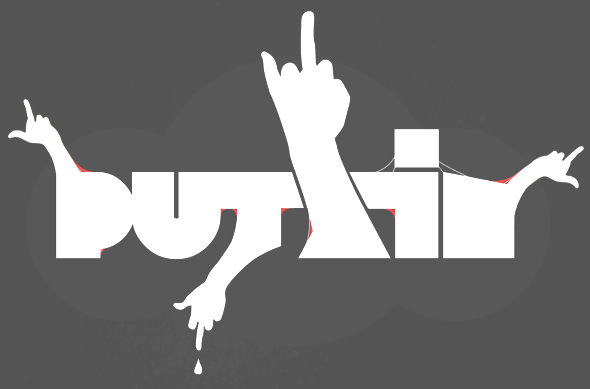

 Russian graphic and web design studio in Moscow, run by
Russian graphic and web design studio in Moscow, run by  Russian co-designer, with Elena Kowalski, of the flexible all-caps display grotesk typeface
Russian co-designer, with Elena Kowalski, of the flexible all-caps display grotesk typeface 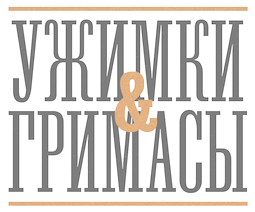 Russian type and graphic designer. Creator of
Russian type and graphic designer. Creator of 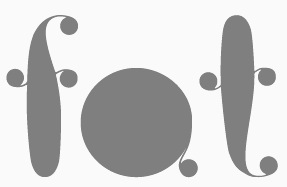 Art director in Moscow, b. 1985. His (mostly free) typefaces include the ultra fat art deco typeface
Art director in Moscow, b. 1985. His (mostly free) typefaces include the ultra fat art deco typeface 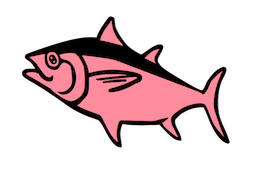 [
[ Russian type designer in St. Petersburg who made the faux oriental font
Russian type designer in St. Petersburg who made the faux oriental font 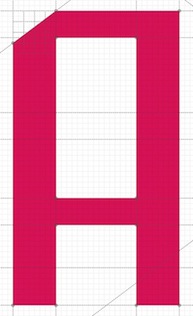 Based in Saint Petersburg, Russia, Aleksandra Gundorova created an unnamed Latin
Based in Saint Petersburg, Russia, Aleksandra Gundorova created an unnamed Latin  Graduate of Moscow University of Printing Arts in 2006 where she studied under Alexander Tarbeev. She teaches type design and typography there. In 2007, her book for Russian students on typography was published (English title: Alive Typography). She received many awards for her work and is a frequent speaker at type design conferences. In particular, she received the prestigious Prix Charles Peignot in 2013. After that she became Type Director at ParaType in Moscow.
Graduate of Moscow University of Printing Arts in 2006 where she studied under Alexander Tarbeev. She teaches type design and typography there. In 2007, her book for Russian students on typography was published (English title: Alive Typography). She received many awards for her work and is a frequent speaker at type design conferences. In particular, she received the prestigious Prix Charles Peignot in 2013. After that she became Type Director at ParaType in Moscow. 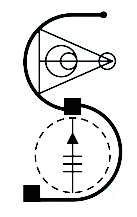 Saint Petersburg, Russia-based designer.
Saint Petersburg, Russia-based designer. 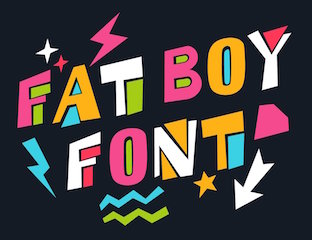 Russian designer of the (vector format) decorative typeface Robot (2016) and the ironwork typeface Twig (2016). In 2017, he designed Fat Boy (colorful caps) and Hiking Icons. [
Russian designer of the (vector format) decorative typeface Robot (2016) and the ironwork typeface Twig (2016). In 2017, he designed Fat Boy (colorful caps) and Hiking Icons. [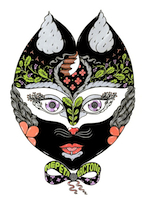 Designer in Toronto (b. 1986, Siberia) who has some nice botanical illustrations in her
Designer in Toronto (b. 1986, Siberia) who has some nice botanical illustrations in her 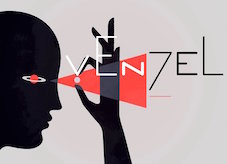 Moscow-based artist who created these typefaces in 2016: Buena Onda, Londa (a connected script), Foie Gras (signage script), Fuego, Cama (a thick connected script), Blackthorn,
Moscow-based artist who created these typefaces in 2016: Buena Onda, Londa (a connected script), Foie Gras (signage script), Fuego, Cama (a thick connected script), Blackthorn, 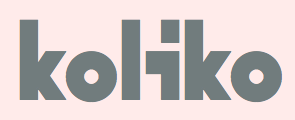 [
[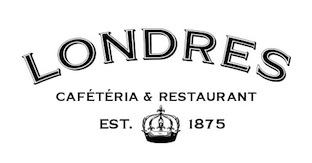 [
[ Born in Russia in 1995, Alex Mihaylov designed the octagonal typeface Reflectors (2013, FontStruct) and the hexagonal typeface
Born in Russia in 1995, Alex Mihaylov designed the octagonal typeface Reflectors (2013, FontStruct) and the hexagonal typeface  [
[ Alexander Cherepanov (White Russian Studio, Moscow) designed the Latin / Cyrillic sans typeface Transgender Grotesque (and Transgender Grotesk), the serifed display typeface New York City, Sport Super Italic, the blackletter typeface Kendrick Human Sacrifice, the avant garde typeface Hueviy Thin, and the piano key typeface Trust Me, the sans typeface November, the triangle-serifed Naaah, and Sestra Thin in 2017. [
Alexander Cherepanov (White Russian Studio, Moscow) designed the Latin / Cyrillic sans typeface Transgender Grotesque (and Transgender Grotesk), the serifed display typeface New York City, Sport Super Italic, the blackletter typeface Kendrick Human Sacrifice, the avant garde typeface Hueviy Thin, and the piano key typeface Trust Me, the sans typeface November, the triangle-serifed Naaah, and Sestra Thin in 2017. [ Alexander Kirillov studied at the Faculty of Economics of the St. Petersburg Polytechnic University. As a student at
Alexander Kirillov studied at the Faculty of Economics of the St. Petersburg Polytechnic University. As a student at 
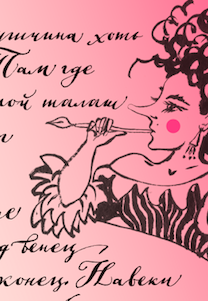 Talented Russian graphic and type designer who works for ParaType in Moscow. His typefaces:
Talented Russian graphic and type designer who works for ParaType in Moscow. His typefaces:  Aleksandr Mikhailovich Rodtschenko (1891-1956), or Rodchenko, emerged in the 1920s as one of the most influential Russian constructivists. Their lettering is always austere and geometrical, and they influenced all visual arts. A typical Cyrillic family of typefaces was recreated by Tagir Safayev at ParaType in 1996-2002, called
Aleksandr Mikhailovich Rodtschenko (1891-1956), or Rodchenko, emerged in the 1920s as one of the most influential Russian constructivists. Their lettering is always austere and geometrical, and they influenced all visual arts. A typical Cyrillic family of typefaces was recreated by Tagir Safayev at ParaType in 1996-2002, called 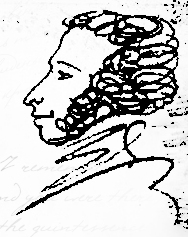
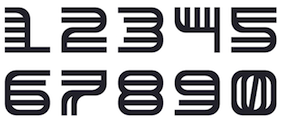 [
[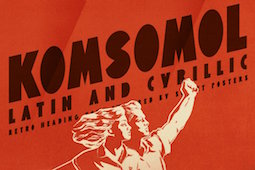 [
[ Russian creator of the free chess font
Russian creator of the free chess font 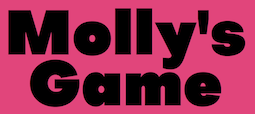 Designer from Siberia who graduated from Ladislav Sutnar Faculty of Design and Art, University of West Bohemia and is now based in Prague, Czechia. Type, graphic and motion graphics designer who created these typefaces:
Designer from Siberia who graduated from Ladislav Sutnar Faculty of Design and Art, University of West Bohemia and is now based in Prague, Czechia. Type, graphic and motion graphics designer who created these typefaces: 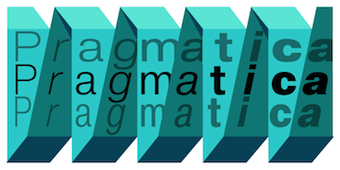 [
[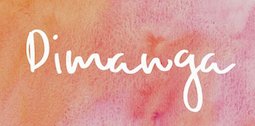 [
[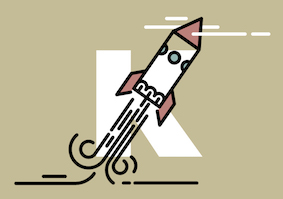 Saint Petersburg, Russia-based designer of the scientific decorative all caps typeface Letter Symbol (2017).
Saint Petersburg, Russia-based designer of the scientific decorative all caps typeface Letter Symbol (2017). 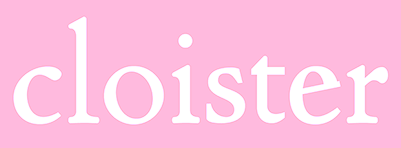 Moscow-based graphic designer. During her studies in 2015, she revived the Venetian typeface Cloister Lightface from a scan, which is described by McGrew as follows: Cloister Lightface was designed in 1919 [by ATF] but not cut until 1924, with Italic the following year. It is considered the most faithful reproduction of Jenson's original type [Eusebius]; substantially the same as Cloister Oldstyle but cut lighter to allow for the heavying which results from printing on rough or dampened papers with a strong impression, as was done in the fifteenth century. [
Moscow-based graphic designer. During her studies in 2015, she revived the Venetian typeface Cloister Lightface from a scan, which is described by McGrew as follows: Cloister Lightface was designed in 1919 [by ATF] but not cut until 1924, with Italic the following year. It is considered the most faithful reproduction of Jenson's original type [Eusebius]; substantially the same as Cloister Oldstyle but cut lighter to allow for the heavying which results from printing on rough or dampened papers with a strong impression, as was done in the fifteenth century. [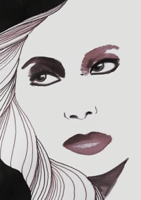
 Russian designer of typefaces who collaborates with Ivan Zeifert and specializes in revivals, cyrillizations and beautiful digitizations, some of them done with Anatole Gophmann. There have been complaints about her practice of borrowing fonts from type designers without asking. One typophile writes: I have cracked open fonts she claims as hers, Bolero, Bickham and others, she has copied and pasted glyphs, copyright data, added Cyrillic and changed the copyright string. As an example, Angelica is a copy of Alejandro Paul's Miss Fajardose. Alejandro has drawn the numerals in his font in 2004 to accompany the letters found in an old catalog of alphabets. There is no other source of the numerals, and Angelica has them. Michael Clark writes: I initiated a battle with the illustrious Alexandra "Bitch" from Russia who has renamed Pouty (FontBureau) and copyrighted [it as] Bolero. She and her partner Anatoly shithead. Available on Fonts101.com for anyone who wants it free. The ass's site, Jagdesh, is in Pakistan and we cannot touch him. 260+ viewings and 140+ downloads. Let's see that is 1400$ I will never see! Others have complained as well about her practice of taking and extending fonts without permission. Anyway, her "fonts" are:
Russian designer of typefaces who collaborates with Ivan Zeifert and specializes in revivals, cyrillizations and beautiful digitizations, some of them done with Anatole Gophmann. There have been complaints about her practice of borrowing fonts from type designers without asking. One typophile writes: I have cracked open fonts she claims as hers, Bolero, Bickham and others, she has copied and pasted glyphs, copyright data, added Cyrillic and changed the copyright string. As an example, Angelica is a copy of Alejandro Paul's Miss Fajardose. Alejandro has drawn the numerals in his font in 2004 to accompany the letters found in an old catalog of alphabets. There is no other source of the numerals, and Angelica has them. Michael Clark writes: I initiated a battle with the illustrious Alexandra "Bitch" from Russia who has renamed Pouty (FontBureau) and copyrighted [it as] Bolero. She and her partner Anatoly shithead. Available on Fonts101.com for anyone who wants it free. The ass's site, Jagdesh, is in Pakistan and we cannot touch him. 260+ viewings and 140+ downloads. Let's see that is 1400$ I will never see! Others have complained as well about her practice of taking and extending fonts without permission. Anyway, her "fonts" are: 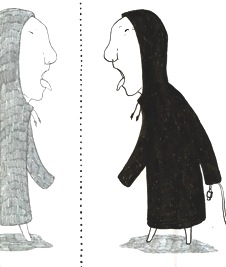 Artist and graphic designer in Moscow. In 2014, she created the Latin / Cyrillic display sans typeface
Artist and graphic designer in Moscow. In 2014, she created the Latin / Cyrillic display sans typeface  Digital type artist at ParaType. Among her contributions is the digital version of a bastarda blackletter alphabet (
Digital type artist at ParaType. Among her contributions is the digital version of a bastarda blackletter alphabet (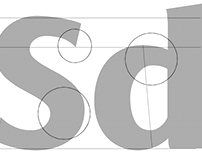 Moscow, Russia-based designer of the fantastic modulated Latin/Cyrillic sans typeface Glypt (2015). [
Moscow, Russia-based designer of the fantastic modulated Latin/Cyrillic sans typeface Glypt (2015). [ Russian designer. Her typefaces for Latin and Cyrillic:
Russian designer. Her typefaces for Latin and Cyrillic:  [
[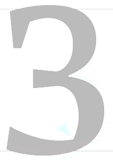 [
[ Russian
Russian  Web designer in Saint Petersburg, Russia. His typefaces are often experimental and include:
Web designer in Saint Petersburg, Russia. His typefaces are often experimental and include: 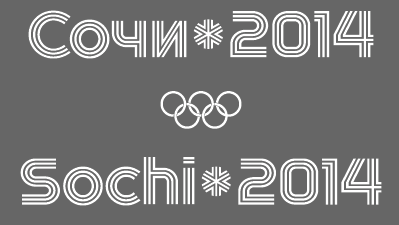 Alexey Carlove (Carlove Design) is the Dzerzhinsk, Russia-based creator of the tri-lined prismatic Latin / Cyrillic typeface
Alexey Carlove (Carlove Design) is the Dzerzhinsk, Russia-based creator of the tri-lined prismatic Latin / Cyrillic typeface 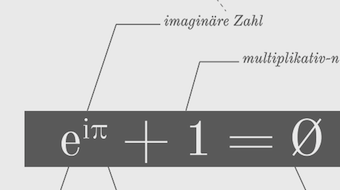 Russian developer of these free font families, quite exquisite and complete:
Russian developer of these free font families, quite exquisite and complete: 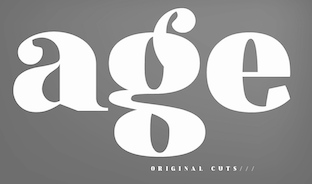 Type designer from Novosibirsk, Russia, b. 1985, Altay, whose design and branding company is called Newface Studio. He designed the ball terminal typeface
Type designer from Novosibirsk, Russia, b. 1985, Altay, whose design and branding company is called Newface Studio. He designed the ball terminal typeface  Moscow-based graphic artist and illustrator of books and periodicals, who has worked with the Gelios publishing house and the magazines Pioner, Smena, Literaturnaya Gazeta, Bolshoi Gorod and InLiberty. In 2016-2017, he designed the CSTM Emoji character font, which is a set of emoticons that comprises illustrations of emotions, facial expressions, gestures, and assorted objects. [
Moscow-based graphic artist and illustrator of books and periodicals, who has worked with the Gelios publishing house and the magazines Pioner, Smena, Literaturnaya Gazeta, Bolshoi Gorod and InLiberty. In 2016-2017, he designed the CSTM Emoji character font, which is a set of emoticons that comprises illustrations of emotions, facial expressions, gestures, and assorted objects. [ Saint Petersburg, Russia-based designer of the decorative typeface Boroda (2019: stencil, and oriental emulation), Tetris (2019: pixelish) and Blender (2019: prismatic). All typefaces cover Latin and Cyrillic. [
Saint Petersburg, Russia-based designer of the decorative typeface Boroda (2019: stencil, and oriental emulation), Tetris (2019: pixelish) and Blender (2019: prismatic). All typefaces cover Latin and Cyrillic. [ Industrial designer in Moscow. He created some funny and original
Industrial designer in Moscow. He created some funny and original  Designer in Moscow. In 2016, for a type design course given by Tagir Safaev, she designed Dutch Plus, a typeface with considerable contrast based on Egmont (a serifed typeface, designed by Sjoerd Hendrik DeRoos for Amsterdam Type foundry in 1933). She writes: The main goal was to create a unique Cyrillic version of the typeface and to make a modern interpretation of Latin letter forms. [...] It is a Modern serif typeface with long ascenders, perfect for titles or texts. [
Designer in Moscow. In 2016, for a type design course given by Tagir Safaev, she designed Dutch Plus, a typeface with considerable contrast based on Egmont (a serifed typeface, designed by Sjoerd Hendrik DeRoos for Amsterdam Type foundry in 1933). She writes: The main goal was to create a unique Cyrillic version of the typeface and to make a modern interpretation of Latin letter forms. [...] It is a Modern serif typeface with long ascenders, perfect for titles or texts. [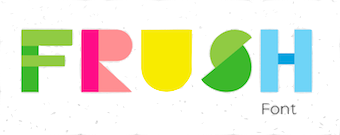 Saint Petersburg, Russia-based designer of the color typeface Frush (2018). [
Saint Petersburg, Russia-based designer of the color typeface Frush (2018). [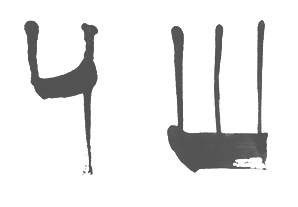 Moscow-based creator of the low contrast Latin / Cyrillic sans typeface Ami (2015), which was a school project at Stroganoff Art Academy in Moscow. Other school projects include a sketched typeface and a Cyrillic origami typeface. She created a great Treefrog-style Latin / Cyrillic alpghabet in 2015.
Moscow-based creator of the low contrast Latin / Cyrillic sans typeface Ami (2015), which was a school project at Stroganoff Art Academy in Moscow. Other school projects include a sketched typeface and a Cyrillic origami typeface. She created a great Treefrog-style Latin / Cyrillic alpghabet in 2015. 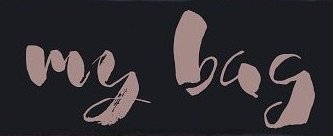 Irkutsk, Siberia-based designer of Simple Ink (2016, brush script), Double Ink (2016), Grunge Dry Brush (2016), Sponge (2016, a high-contrast calligraphic script), Christmas Snowy (2016), Grunge Stamp (2016), Simple Handdrawn (2016), Grunge Display (2016: a dry brush font), Grunge Display Formal (2016), Rhubarb Pie (2016), Yndina (2016, script), Boriska (2016, watercolor grunge), 3D Sketch Font (2016), Blooming Sally (2016), Pride & Prejudice (2016), Ribbon Display (2016), Melted Font (2016), Leaves Display Font (2016, a floral decorative caps typeface), Concept Round Font (2016), Quick Handwritten Font (2016), Snabbyshoe (2016, grungy handcrafted typeface), the Latin typeface Old Typewriter (2016), Old Destroyed Typewriter (2016), Retro Typewriter (2016), and Heart Font (2016).
Irkutsk, Siberia-based designer of Simple Ink (2016, brush script), Double Ink (2016), Grunge Dry Brush (2016), Sponge (2016, a high-contrast calligraphic script), Christmas Snowy (2016), Grunge Stamp (2016), Simple Handdrawn (2016), Grunge Display (2016: a dry brush font), Grunge Display Formal (2016), Rhubarb Pie (2016), Yndina (2016, script), Boriska (2016, watercolor grunge), 3D Sketch Font (2016), Blooming Sally (2016), Pride & Prejudice (2016), Ribbon Display (2016), Melted Font (2016), Leaves Display Font (2016, a floral decorative caps typeface), Concept Round Font (2016), Quick Handwritten Font (2016), Snabbyshoe (2016, grungy handcrafted typeface), the Latin typeface Old Typewriter (2016), Old Destroyed Typewriter (2016), Retro Typewriter (2016), and Heart Font (2016). 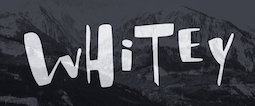 Aka Wewhitelist. Blagoveshchensk, Russia-based graphic designer who created the brush script typefaces Insouciance (2017), Soul Run (2017), Young+Wild (2017), Acquainted Script (2017), Amaury (2017), Sylvestre (2017), Acquainted (2017: watercolor brush), Felicitous (2017), Whitey (2017), Sandrine Brush (2017), Darkshine (2017) and Luuna (2017, an emotional brush font). She also designed Iolanthe (2017).
Aka Wewhitelist. Blagoveshchensk, Russia-based graphic designer who created the brush script typefaces Insouciance (2017), Soul Run (2017), Young+Wild (2017), Acquainted Script (2017), Amaury (2017), Sylvestre (2017), Acquainted (2017: watercolor brush), Felicitous (2017), Whitey (2017), Sandrine Brush (2017), Darkshine (2017) and Luuna (2017, an emotional brush font). She also designed Iolanthe (2017). 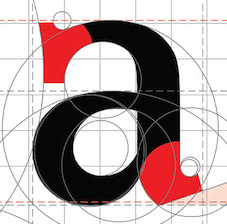 Graphic designer in Saint Petersburg, Russia. In 2018, she designed the text typeface family Academi. [
Graphic designer in Saint Petersburg, Russia. In 2018, she designed the text typeface family Academi. [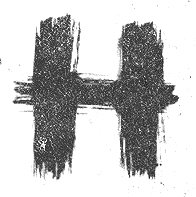 Russian designer of Dry Brush (2017). [
Russian designer of Dry Brush (2017). [ Moscow-based designer of a
Moscow-based designer of a 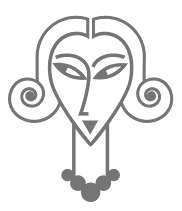 Russian type designer. His typefaces:
Russian type designer. His typefaces: 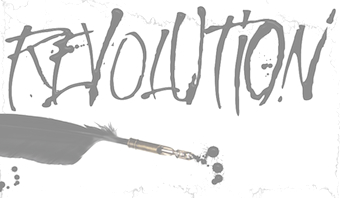 [
[ Moscow-based creator of
Moscow-based creator of  Moscow-based designer of the
Moscow-based designer of the  Russian designer of the rounded Latin / Cyrillic sans typeface family Inglobal (2014), together with Denis Davydov and Evgeny Yurtaev. This typeface was either commissioned for
Russian designer of the rounded Latin / Cyrillic sans typeface family Inglobal (2014), together with Denis Davydov and Evgeny Yurtaev. This typeface was either commissioned for  [
[
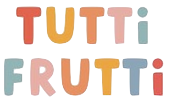 Graphic designer from Saint Petersburg, Russia, who specializes in hand-printed typefaces, often with applications in children's books. In 2020, she released these typefaces: Touch (display), Gravitas (a thin avant garde sans), Little Dinosaur, Jamie (script), Rocking Horse.
Graphic designer from Saint Petersburg, Russia, who specializes in hand-printed typefaces, often with applications in children's books. In 2020, she released these typefaces: Touch (display), Gravitas (a thin avant garde sans), Little Dinosaur, Jamie (script), Rocking Horse. 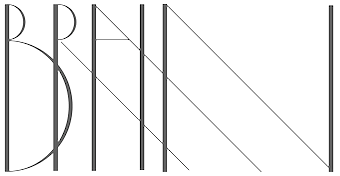 Graphic designer and food stylist in Moscow. Creator of an avant-garde Latin / Cyrillic typeface (2014). [
Graphic designer and food stylist in Moscow. Creator of an avant-garde Latin / Cyrillic typeface (2014). [ Moscow-based designer of the artsy typeface
Moscow-based designer of the artsy typeface 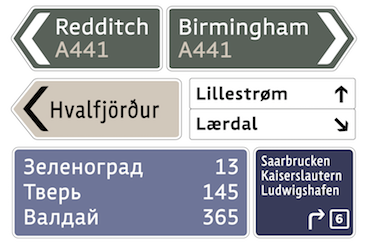 Type designer who is employed by Artem Gorbunov (Gorbunov Bureau) in Moscow. Her typefaces there:
Type designer who is employed by Artem Gorbunov (Gorbunov Bureau) in Moscow. Her typefaces there: 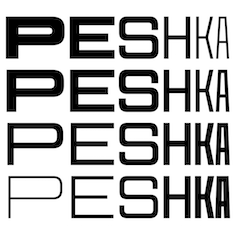 Member of the Contrast Type Foundry in Moscow.
Member of the Contrast Type Foundry in Moscow. 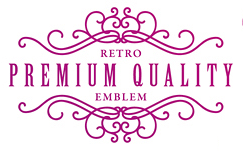 Russian designer of a magnificent set of 600 (vector format) vintage frames and emblems (2016), and of 350 Line Business Icons (2016). In addition, she designed the brush typefaces Bobervons (2016) and Momentique (2016) and the script typeface Likonder (2016). [
Russian designer of a magnificent set of 600 (vector format) vintage frames and emblems (2016), and of 350 Line Business Icons (2016). In addition, she designed the brush typefaces Bobervons (2016) and Momentique (2016) and the script typeface Likonder (2016). [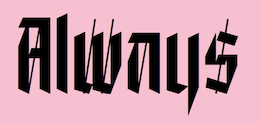 [
[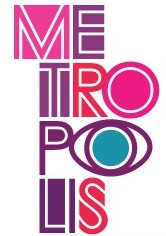 Saint Petersburg, Russia-based designer of the colorful typographic identity of the Metropolis Film Festival (2014). [
Saint Petersburg, Russia-based designer of the colorful typographic identity of the Metropolis Film Festival (2014). [ [
[ Russian codesigner with Jovanny Lemonad of the free Latin / Cyrillic handcrafted typeface
Russian codesigner with Jovanny Lemonad of the free Latin / Cyrillic handcrafted typeface  [
[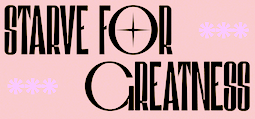 Russian designer of the experimental deco typeface
Russian designer of the experimental deco typeface  Anton Kudin (Abstrukt) is the Russian co-designer with Jovanny Lemonad of
Anton Kudin (Abstrukt) is the Russian co-designer with Jovanny Lemonad of 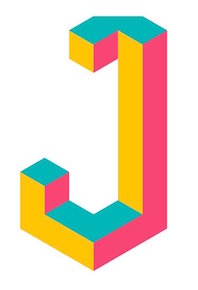 Russian designer of the LED lights font LED (2015), the colorful 3d typeface Isometric (2016), and the bubblegum font Bubble Letters (2016). In 2017, he designed the colorful geometric all caps alphabet Memphis and the colorful sketched typeface Funky.
Russian designer of the LED lights font LED (2015), the colorful 3d typeface Isometric (2016), and the bubblegum font Bubble Letters (2016). In 2017, he designed the colorful geometric all caps alphabet Memphis and the colorful sketched typeface Funky. 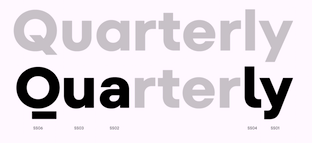 Saint Petersburg, Russia-based designer of
Saint Petersburg, Russia-based designer of 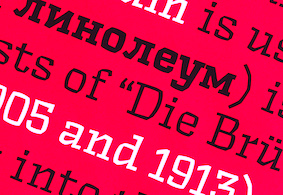 Anya Danilova is a type designer from Moscow, currently based in The Hague. She studied at Moscow State University of Printing Arts and worked as a graphic designer at Labs Studio and as a type designer at Bureau Gorbunov. She now works on type-related projects and is always open to new collaborations. Graduate of the
Anya Danilova is a type designer from Moscow, currently based in The Hague. She studied at Moscow State University of Printing Arts and worked as a graphic designer at Labs Studio and as a type designer at Bureau Gorbunov. She now works on type-related projects and is always open to new collaborations. Graduate of the 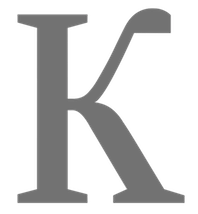 Born in Severodvinsk, Russia, Anya Polunina graduated from Bonch-Bruevich Saint Petersburg State University of Telecommunications. As a student at
Born in Severodvinsk, Russia, Anya Polunina graduated from Bonch-Bruevich Saint Petersburg State University of Telecommunications. As a student at 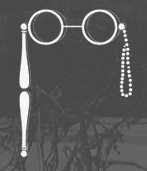 Anya Pro (Moscow) created the circle-based monoline Latin sans typeface
Anya Pro (Moscow) created the circle-based monoline Latin sans typeface  Miass, Russia-based type designer offering mainly handcrafted script or brush fonts. Her typefaces from 2021: Fruity Morning (a color SVG font), Coffee Break, Gradient Quirky, Aster Glow, Vintage, WMN Power, Carnival (and party masks), Snowflake Christmas, Cupid, Vegan.
Miass, Russia-based type designer offering mainly handcrafted script or brush fonts. Her typefaces from 2021: Fruity Morning (a color SVG font), Coffee Break, Gradient Quirky, Aster Glow, Vintage, WMN Power, Carnival (and party masks), Snowflake Christmas, Cupid, Vegan. 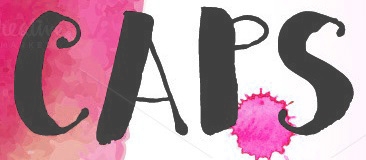 Russian designer of the beautiful handcrafted poster typeface Crafty Caps (2015) that emulates watercolor. [
Russian designer of the beautiful handcrafted poster typeface Crafty Caps (2015) that emulates watercolor. [ Dmitry Mashkin (or Dmitry Mankoff, or Artcoast Design, located in Sochi and/or Krasnodar and/or Moscow, Russia) created the absolutely wonderful restaurant menu deco typeface Montclar (2015, +food icons), the vintage letterpress emulation typeface family Stampbor (2015), the handcrafted Karmina (2015), the brush typeface Hypsletters Script (2015, with Nadi Spasibenko), the vintage letterpress typeface Marktype (2015), and the sans typefaces Albori Sans (2015, rounded and monoline) and Brentwood Sans (2015).
Dmitry Mashkin (or Dmitry Mankoff, or Artcoast Design, located in Sochi and/or Krasnodar and/or Moscow, Russia) created the absolutely wonderful restaurant menu deco typeface Montclar (2015, +food icons), the vintage letterpress emulation typeface family Stampbor (2015), the handcrafted Karmina (2015), the brush typeface Hypsletters Script (2015, with Nadi Spasibenko), the vintage letterpress typeface Marktype (2015), and the sans typefaces Albori Sans (2015, rounded and monoline) and Brentwood Sans (2015).  Or
Or  St. Petersburg-based Russian designer of
St. Petersburg-based Russian designer of  [
[ Russian designer of Artcity (2014), a military stencil typeface that won an award at
Russian designer of Artcity (2014), a military stencil typeface that won an award at 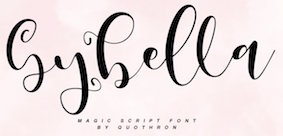 [
[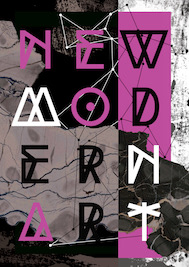 Moscow-based student-designer of a great modern hipster art poster (2018). [
Moscow-based student-designer of a great modern hipster art poster (2018). [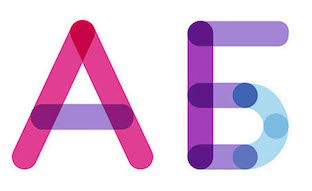 Novocherkassk, Russia-based designer of two Cyrillic color fonts in 2017. [
Novocherkassk, Russia-based designer of two Cyrillic color fonts in 2017. [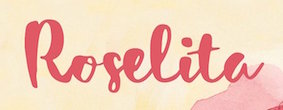 Perm, Russia-based designer (b. 1986) of mainly script typefaces. Creator of the brush script typefaces Mushrooms (2017), Kangary (2017), Loveit (2017), Boronic (2017), Wildlife (2017), Fully Flared (2017), School of Rock (2017), Seek & Destroy (2017), Secret Service (2017: a
Perm, Russia-based designer (b. 1986) of mainly script typefaces. Creator of the brush script typefaces Mushrooms (2017), Kangary (2017), Loveit (2017), Boronic (2017), Wildlife (2017), Fully Flared (2017), School of Rock (2017), Seek & Destroy (2017), Secret Service (2017: a  Voskresenk, Russia-based designer of
Voskresenk, Russia-based designer of  Creators in 2008 of a series of detailed free fonts:
Creators in 2008 of a series of detailed free fonts: 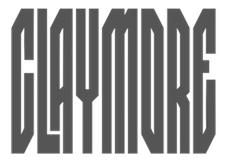 Borislav Korablev is a former journalist and now a layout and type designer. He runs a foundry under his own name based in St. Petersburg, Russia. In 2022, he released
Borislav Korablev is a former journalist and now a layout and type designer. He runs a foundry under his own name based in St. Petersburg, Russia. In 2022, he released 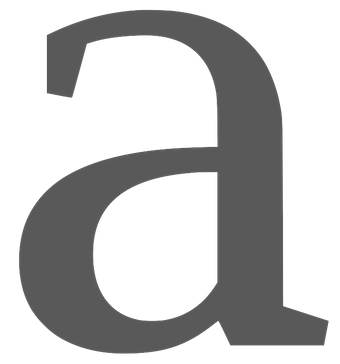 Ekaterinburg, Russia-based creator of the
Ekaterinburg, Russia-based creator of the  A graduate of Moscow State University of Printing Arts, Gayaneh has designed Cyrillic localizations for most major type libraries, including Linotype, Bitstream, The Font Bureau, ITC, Berthold, Typotheque, Emigre, and ParaType. She began her type design career at ParaType in 1996 and started Brownfox (her type foundry) in 2012.
A graduate of Moscow State University of Printing Arts, Gayaneh has designed Cyrillic localizations for most major type libraries, including Linotype, Bitstream, The Font Bureau, ITC, Berthold, Typotheque, Emigre, and ParaType. She began her type design career at ParaType in 1996 and started Brownfox (her type foundry) in 2012. 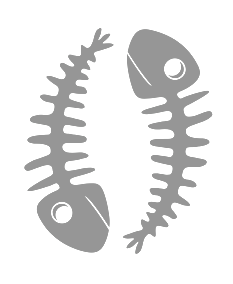 Free Latin and Cyrillic captcha-inspired font made in 2011 by one hundred Russian designers: Andrey Konstantinov, Daniel Chernoguz, Ivan Pashenko, Dmitriy Zagidullin, Roman Ershov, Anatoliy Gromov, Ruslan Lobachev, Alexey Kondakov, Artem Moiseev, Olga Tjukova, Dmitry Akva, Maxim Deyev, Evgeniy Ivanov, Andrey Taranenko, Boris Grigorjev, Ivan Sharenkov, Artem Mazurchak, Andrey Kolpakov, Konstantin Kakovkin, Ivan Lyanguzov, Daria Uskova, Konstantin Golovchenko, Yulya Leonova, Artem Kazakov, Vasilev Eugeny, Alexey Rud, Protey Temen, Vladimir Lev, Alexey Krylov, Mikhail Simakov, Andrew Arbenin, Petr Mukhin, Lubov Fedorova, Aleksandr Kirillov, Dmitriy Knyazev, Shashi Martynova, David Fedulov, Alexey Murashko, Maria Raschypkina, Vasilij Podtynnikov, Ashot Palanjyan, Aleksandr Korovin, Mikhail Rozov, Anna Hodorkovskaya Aleksandra Titova, Konstantin Groznov, Siarhei Stashkevich, Ksenika Dobrovitskaya, Aleksandr Dolgiy, Ksenia Nunis, Andrey Ilyaskin, Kostsei Koulematon, Semen Krymov, Fiodor Sumkin, Andrew Petrushenko, Nina Holmanskih, Oleg Zhuravlev, Igor Evgrafov, Artem Kolbich, George Konyaev, Maria Ivanova, Vladislav Zhukovets, Loma Sukin, Dmitrij Lukyanenko, Sergey Shvetsov, Aleksandr Solomennikiv, Vladimir Nemchenko, Dmitry Rastvortsev, Vladimir Sedykh, Peter Zharnov, Egor Myznik, Valeriy Uryukov, Egor Akhmetzyanov, Kirill Martianov, Anton Shilinets, Pavel Voloshin, Artem Oberland, Lily Kavlyuk, Oleg Azletskiy, Yana Kutyina & Andrey Belonogov, Stepan Litvinov, Pyotr Bushuev, Egor Deev, Katerina Plas'ka, Nikita Shekhovtsov, Dima Tkach, Alexander Vershinin, Tatyana Shilyaeva, Ivan Kireyev, Vitaliy Zhestkov, Maxim Petov, Marina Butchman, Eugenia Pestova, Alexandr Anisimov, Anatoly Karasov, Gleb Androsov, Vitaly Kuzmin, Sergey Barkov, Sergey Afonkin.
Free Latin and Cyrillic captcha-inspired font made in 2011 by one hundred Russian designers: Andrey Konstantinov, Daniel Chernoguz, Ivan Pashenko, Dmitriy Zagidullin, Roman Ershov, Anatoliy Gromov, Ruslan Lobachev, Alexey Kondakov, Artem Moiseev, Olga Tjukova, Dmitry Akva, Maxim Deyev, Evgeniy Ivanov, Andrey Taranenko, Boris Grigorjev, Ivan Sharenkov, Artem Mazurchak, Andrey Kolpakov, Konstantin Kakovkin, Ivan Lyanguzov, Daria Uskova, Konstantin Golovchenko, Yulya Leonova, Artem Kazakov, Vasilev Eugeny, Alexey Rud, Protey Temen, Vladimir Lev, Alexey Krylov, Mikhail Simakov, Andrew Arbenin, Petr Mukhin, Lubov Fedorova, Aleksandr Kirillov, Dmitriy Knyazev, Shashi Martynova, David Fedulov, Alexey Murashko, Maria Raschypkina, Vasilij Podtynnikov, Ashot Palanjyan, Aleksandr Korovin, Mikhail Rozov, Anna Hodorkovskaya Aleksandra Titova, Konstantin Groznov, Siarhei Stashkevich, Ksenika Dobrovitskaya, Aleksandr Dolgiy, Ksenia Nunis, Andrey Ilyaskin, Kostsei Koulematon, Semen Krymov, Fiodor Sumkin, Andrew Petrushenko, Nina Holmanskih, Oleg Zhuravlev, Igor Evgrafov, Artem Kolbich, George Konyaev, Maria Ivanova, Vladislav Zhukovets, Loma Sukin, Dmitrij Lukyanenko, Sergey Shvetsov, Aleksandr Solomennikiv, Vladimir Nemchenko, Dmitry Rastvortsev, Vladimir Sedykh, Peter Zharnov, Egor Myznik, Valeriy Uryukov, Egor Akhmetzyanov, Kirill Martianov, Anton Shilinets, Pavel Voloshin, Artem Oberland, Lily Kavlyuk, Oleg Azletskiy, Yana Kutyina & Andrey Belonogov, Stepan Litvinov, Pyotr Bushuev, Egor Deev, Katerina Plas'ka, Nikita Shekhovtsov, Dima Tkach, Alexander Vershinin, Tatyana Shilyaeva, Ivan Kireyev, Vitaliy Zhestkov, Maxim Petov, Marina Butchman, Eugenia Pestova, Alexandr Anisimov, Anatoly Karasov, Gleb Androsov, Vitaly Kuzmin, Sergey Barkov, Sergey Afonkin. 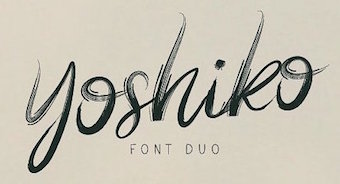 Illustrator based in Ust Sysolsk, Northern Russia, whose first name is Katya. In 2016, she designed the brushy Yoshiko, the connected Neoscopic, Dissentio, the dry brush typeface Sungai, the brushy Elvissa Script, and Arlin Brush.
Illustrator based in Ust Sysolsk, Northern Russia, whose first name is Katya. In 2016, she designed the brushy Yoshiko, the connected Neoscopic, Dissentio, the dry brush typeface Sungai, the brushy Elvissa Script, and Arlin Brush. 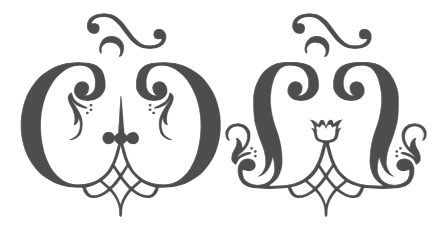 As part of the Church Slavonic Initiative, we find a set of free church slavonic style typefaces at the CTAN site, with TeX support. Church Slavonic (also called Church Slavic, Old Church Slavonic or Old Slavonic; ISO 639-2 code cu) is a literary language used by the Slavic peoples; presently it is used as a liturgical language by the Russian Orthodox Church, other local Orthodox Churches, as well as various Byzantine-Rite Catholic and Old Ritualist communities. The fonts are designed to work with Unicode text encoded in UTF-8. The package is maintained (in 2016, at least) by Mike Kroutikov and Aleksandr Andreev. The main people of the Church Slavonic Initiative are Aleksandr Andreev, Yuri Shardt and Nikita Simmons. The fonts:
As part of the Church Slavonic Initiative, we find a set of free church slavonic style typefaces at the CTAN site, with TeX support. Church Slavonic (also called Church Slavic, Old Church Slavonic or Old Slavonic; ISO 639-2 code cu) is a literary language used by the Slavic peoples; presently it is used as a liturgical language by the Russian Orthodox Church, other local Orthodox Churches, as well as various Byzantine-Rite Catholic and Old Ritualist communities. The fonts are designed to work with Unicode text encoded in UTF-8. The package is maintained (in 2016, at least) by Mike Kroutikov and Aleksandr Andreev. The main people of the Church Slavonic Initiative are Aleksandr Andreev, Yuri Shardt and Nikita Simmons. The fonts:  Russian page about
Russian page about  Contrast Type Foundry (London) was a joint venture of Maria Doreuli, Krista Radoeva and Lisa Rasskazova (Moscow). In 2019, now based in Moscow, the team members are Maria Doreuli, Lisa Rasskazova, Anna Khorash and Nikita Sapozhkov. They do custom and retail type design. Their client list includes Tretyakov Gallery, Strelka Institute, Théâtre de Belleville, The Art Newspaper, Mail.ru, Fader Magazine, Tsaritsino Museum, Weber Grills, Naked Heart Foundation, LaModa, Kaspersky, Rambler&Co, Gosha Rubchinsky, White Russian and Tsentsiper.
Contrast Type Foundry (London) was a joint venture of Maria Doreuli, Krista Radoeva and Lisa Rasskazova (Moscow). In 2019, now based in Moscow, the team members are Maria Doreuli, Lisa Rasskazova, Anna Khorash and Nikita Sapozhkov. They do custom and retail type design. Their client list includes Tretyakov Gallery, Strelka Institute, Théâtre de Belleville, The Art Newspaper, Mail.ru, Fader Magazine, Tsaritsino Museum, Weber Grills, Naked Heart Foundation, LaModa, Kaspersky, Rambler&Co, Gosha Rubchinsky, White Russian and Tsentsiper.  Studio in Moscow. In 2015, it created the fat rounded display sans typeface Smartfont for Latin and Cyrillic. It has Inline and Outline versions. [
Studio in Moscow. In 2015, it created the fat rounded display sans typeface Smartfont for Latin and Cyrillic. It has Inline and Outline versions. [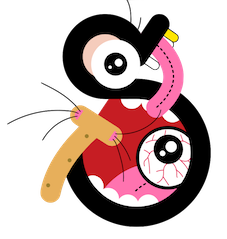 Moscow-based designer of the playful decorative typeface Vile (2018). [
Moscow-based designer of the playful decorative typeface Vile (2018). [ CSTM Fonts is a digital type foundry in Moscow founded by Ilya Ruderman and Yury Ostromentsky in 2014. Educated as graphic designers, Ilya and Yury have created many custom typefaces and Cyrillic versions for a well-known Latin typefaces. Since 2008 Ilya Ruderman is curating the Type and Typography course at the British Higher School of Art and Design (Moscow).
CSTM Fonts is a digital type foundry in Moscow founded by Ilya Ruderman and Yury Ostromentsky in 2014. Educated as graphic designers, Ilya and Yury have created many custom typefaces and Cyrillic versions for a well-known Latin typefaces. Since 2008 Ilya Ruderman is curating the Type and Typography course at the British Higher School of Art and Design (Moscow).  Based in Kaliningrad, Russia, Cyril Mikhailov created the
Based in Kaliningrad, Russia, Cyril Mikhailov created the  Maria Doreuli (Moscow) and Krista Radoeva (London) combined forces in
Maria Doreuli (Moscow) and Krista Radoeva (London) combined forces in 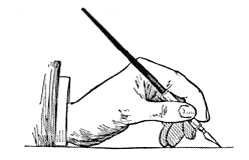 Daily Type is a creative project run by four Russian type designers. Regularly updated page with many new type designs and ideas. Based on a concept of Yury Ostromentsky & Dasha Yarzhambek, the site features designs by Yury Gordon, Yury Ostromentsky, Dasha Yarzhambek, Dmitry Jakovlev and Ilya Ruderman, and was launched in 2005. Daily Type is a creative project run by several Russian type designers. Day by day, they create original typefaces and post their results along with routine. [
Daily Type is a creative project run by four Russian type designers. Regularly updated page with many new type designs and ideas. Based on a concept of Yury Ostromentsky & Dasha Yarzhambek, the site features designs by Yury Gordon, Yury Ostromentsky, Dasha Yarzhambek, Dmitry Jakovlev and Ilya Ruderman, and was launched in 2005. Daily Type is a creative project run by several Russian type designers. Day by day, they create original typefaces and post their results along with routine. [ Or Danila Orlovsky. Student at the Stroganov Moscow State Academy of Applied and Industrial Arts, 2006-2012. Danya (Danila) is the Moscow-based designer of the constructivist version of Didot called
Or Danila Orlovsky. Student at the Stroganov Moscow State Academy of Applied and Industrial Arts, 2006-2012. Danya (Danila) is the Moscow-based designer of the constructivist version of Didot called  During her studies in 2012 in Moscow, Daria Karachenteva designed the army stencil typeface
During her studies in 2012 in Moscow, Daria Karachenteva designed the army stencil typeface 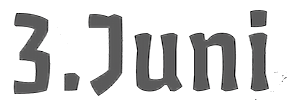 Moscow-born type designer who first studied book design in Moscow and communication design in Berlin, and graduated from the
Moscow-born type designer who first studied book design in Moscow and communication design in Berlin, and graduated from the 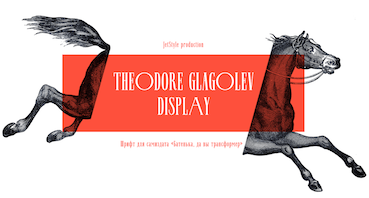 Daria Prokuda (Yekaterinburg, Russia) designed the elegnat super-condensed Skyline style Latin / Cyrillic typeface
Daria Prokuda (Yekaterinburg, Russia) designed the elegnat super-condensed Skyline style Latin / Cyrillic typeface 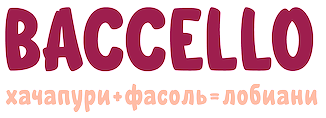 Moscow-based designer of the warm curvy comic book font Baccello (2017) for Latin and Cyrillic. [
Moscow-based designer of the warm curvy comic book font Baccello (2017) for Latin and Cyrillic. [ Russian designer in 2018 of these typefaces: Hillingdon,
Russian designer in 2018 of these typefaces: Hillingdon, 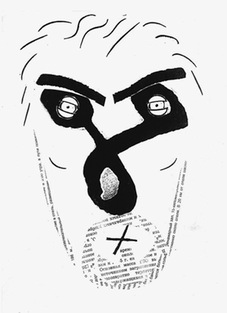 Art director in Moscow who created the multilayer font
Art director in Moscow who created the multilayer font  Designer in Moscow, Russia, b. 1984. In 2018, he created the rounded sans typeface Coiny Cyrillic for Latin and Cyrillic. This appears to be a cyrillization of Marcelo Magalhães Pereira's Google font Coiny (2015).
Designer in Moscow, Russia, b. 1984. In 2018, he created the rounded sans typeface Coiny Cyrillic for Latin and Cyrillic. This appears to be a cyrillization of Marcelo Magalhães Pereira's Google font Coiny (2015).  Moscow-based designer of the Latin / Cyrillic typeface
Moscow-based designer of the Latin / Cyrillic typeface 
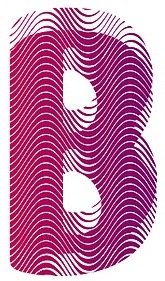 Russian designer. In 2008, he created a number of commercial Cyrillic/Latin typefaces, including
Russian designer. In 2008, he created a number of commercial Cyrillic/Latin typefaces, including 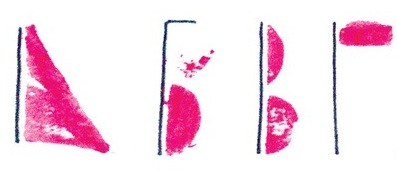 Moscow-based creator of some striking painted Cyrillic alphabets in 2014. She also created Fishtail Font (2014) and Potato Script (2014, for Cyrillic). [
Moscow-based creator of some striking painted Cyrillic alphabets in 2014. She also created Fishtail Font (2014) and Potato Script (2014, for Cyrillic). [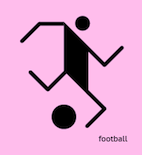 Graphic designerr in Moscow who made a colorful Cyrillic stencil alphabet dedicated to Neville Brody (2015). Other typefaces for Latin and Cyrillic include Hollow Pixels (2015), Adhesive Tape (2015), and Multicolore (2015, a rounded sans done for his graduation). He also designed the pictograms Olympic Gods (2015) and Sportsmen (2015).
Graphic designerr in Moscow who made a colorful Cyrillic stencil alphabet dedicated to Neville Brody (2015). Other typefaces for Latin and Cyrillic include Hollow Pixels (2015), Adhesive Tape (2015), and Multicolore (2015, a rounded sans done for his graduation). He also designed the pictograms Olympic Gods (2015) and Sportsmen (2015).  [
[ [
[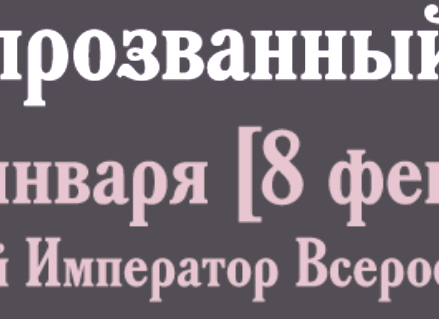 [
[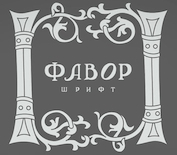 Nizhniy Novgorod, Russia-based illustrator and designer. Creator in 2012 of the Cyrillic typeface
Nizhniy Novgorod, Russia-based illustrator and designer. Creator in 2012 of the Cyrillic typeface  Perm, Russia-based designer of the retro signage fonts Beauford (2015) and California Dreaming (2015), the connected script typeface Jennifer's Flowers (2015) and the heavy calligraphic typeface Magnificent (2015).
Perm, Russia-based designer of the retro signage fonts Beauford (2015) and California Dreaming (2015), the connected script typeface Jennifer's Flowers (2015) and the heavy calligraphic typeface Magnificent (2015).  [
[ Russian type designer who made the calligraphic greetings typeface Gala 72 (2012) and Congratulatory (2010: Latin and Cyrillic) and the curly psychedelic all-caps typeface
Russian type designer who made the calligraphic greetings typeface Gala 72 (2012) and Congratulatory (2010: Latin and Cyrillic) and the curly psychedelic all-caps typeface  [
[ Russian type foundry, est. 2014 by Dmitry Goloub, the Moscow-based codesigner with Lucas Perdidaão of the
Russian type foundry, est. 2014 by Dmitry Goloub, the Moscow-based codesigner with Lucas Perdidaão of the  Designer of the Latin/Cyrillic
Designer of the Latin/Cyrillic 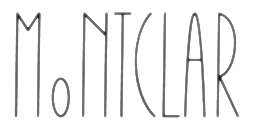 [
[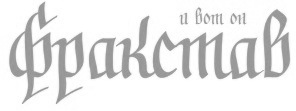 Moscow-based graphic designer and photographer. During his studies at the British Higher School of Design in Moscow, he created the Latin/Cyrillic packaging script typeface
Moscow-based graphic designer and photographer. During his studies at the British Higher School of Design in Moscow, he created the Latin/Cyrillic packaging script typeface  Russian designer in Arzamas (b. 1987) of the free Latin / Cyrillic typeface
Russian designer in Arzamas (b. 1987) of the free Latin / Cyrillic typeface  Cyrillic type outfit, whose fonts were mostly designed by
Cyrillic type outfit, whose fonts were mostly designed by  Russian foundry. In 2008, they produced these Old Slavonic typefaces: Archimandrite, Arhimandrite 2, Kalinov_Most, Moscowit-Capital, Moscowit, Nikodym, Pelagy, Pelagy_SG, Plyusnin, Serebro,
Russian foundry. In 2008, they produced these Old Slavonic typefaces: Archimandrite, Arhimandrite 2, Kalinov_Most, Moscowit-Capital, Moscowit, Nikodym, Pelagy, Pelagy_SG, Plyusnin, Serebro,  DStudio, or Design Studio, is run by Nikolay Dubina, a prolific type designer. He is also a graphic designer, book designer and journalistic writer. He also runs the educational web site ProDTP. Their original Latin/Cyrillic fonts are of the highest quality, and include: Werewolf (2003), Werewolf NU (2003), DS Cosmo,
DStudio, or Design Studio, is run by Nikolay Dubina, a prolific type designer. He is also a graphic designer, book designer and journalistic writer. He also runs the educational web site ProDTP. Their original Latin/Cyrillic fonts are of the highest quality, and include: Werewolf (2003), Werewolf NU (2003), DS Cosmo, 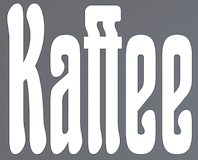 Russian type designer specializing in historical revivals of old Cyrillic typefaces. creator of these Latin / Cyrillic typefaces:
Russian type designer specializing in historical revivals of old Cyrillic typefaces. creator of these Latin / Cyrillic typefaces: 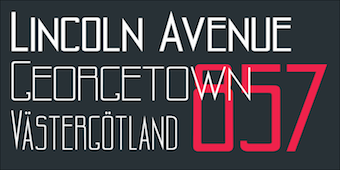 Russian civil engineer with experience in technical drawing and graphic design. His typefaces:
Russian civil engineer with experience in technical drawing and graphic design. His typefaces:  Bystrogorskiy, Russia-based designer of the
Bystrogorskiy, Russia-based designer of the 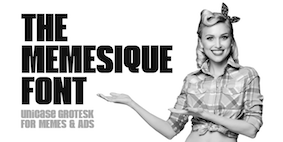 Novosibirsk, Siberia-based designer. In 2017, he created
Novosibirsk, Siberia-based designer. In 2017, he created  Designer of the Latin/Cyrillic text superfamily Fregata (2010) while she was a student at the British Higher School of Art and Design in Moscow.
Designer of the Latin/Cyrillic text superfamily Fregata (2010) while she was a student at the British Higher School of Art and Design in Moscow. 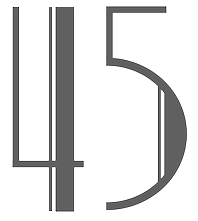 Moscow-based creator of some experimental typefaces, including the Cyrillic art deco typeface Type 02 (2014) and Cherry Type (2014). [
Moscow-based creator of some experimental typefaces, including the Cyrillic art deco typeface Type 02 (2014) and Cherry Type (2014). [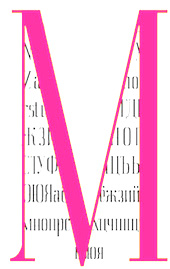 At the British Higher School of Art and Design in Moscow in 2015, Ekaterina Malinina designed the Latin/Cyrillic text typeface Jurgen and the condensed fashionable Latin/Cyrillic didone typeface Matthias. [
At the British Higher School of Art and Design in Moscow in 2015, Ekaterina Malinina designed the Latin/Cyrillic text typeface Jurgen and the condensed fashionable Latin/Cyrillic didone typeface Matthias. [ [
[ Born in Ioshkar-oila in 1984, Elena Novoselova graduated from the Moscow State University of Printing Arts in 2006. She also teaches at the British Higher School of Art and Design in Moscow. From 2006 until 2011, she designed type and worked as a calligrapher at Art Lebedev Studio, where she made ALS Dereza (2010, a grotesk comic book style typeface for children's books), ALS Mezzo (2009, a flared sans), ALS Heino (2008, a decorative typeface with two styles that was inspired by a piece of lettering in an old magazine),
Born in Ioshkar-oila in 1984, Elena Novoselova graduated from the Moscow State University of Printing Arts in 2006. She also teaches at the British Higher School of Art and Design in Moscow. From 2006 until 2011, she designed type and worked as a calligrapher at Art Lebedev Studio, where she made ALS Dereza (2010, a grotesk comic book style typeface for children's books), ALS Mezzo (2009, a flared sans), ALS Heino (2008, a decorative typeface with two styles that was inspired by a piece of lettering in an old magazine), 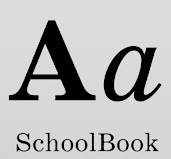 Or Yelena Tzaregorodtseva. Russian type designer who designed
Or Yelena Tzaregorodtseva. Russian type designer who designed 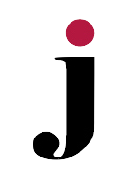 Saint Petersburg, Russia-based designer of Capsula (2019: a Cyrillic piano key stencil font) and Speaker Icons (2019). She also cyrillicized the didone typeface Elephant (2019). [
Saint Petersburg, Russia-based designer of Capsula (2019: a Cyrillic piano key stencil font) and Speaker Icons (2019). She also cyrillicized the didone typeface Elephant (2019). [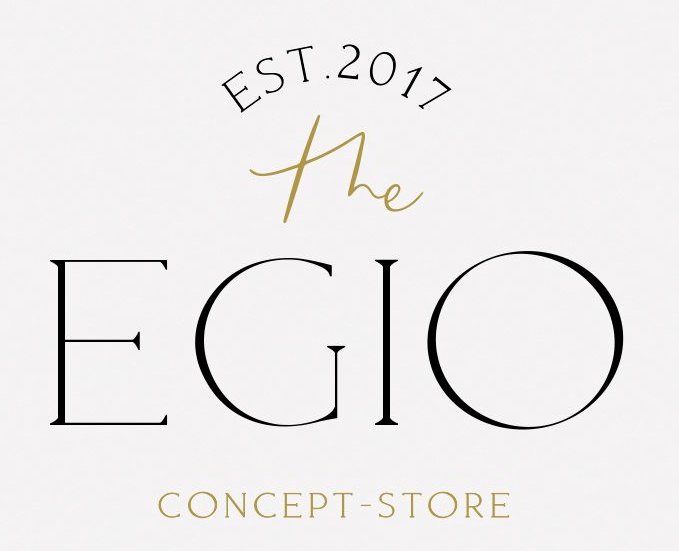 Russian graphic designer who loves soft tones. Creator of these typefaces:
Russian graphic designer who loves soft tones. Creator of these typefaces: 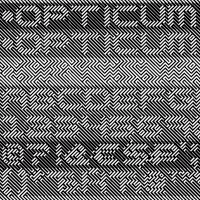 Art director. Designer of the op art font
Art director. Designer of the op art font 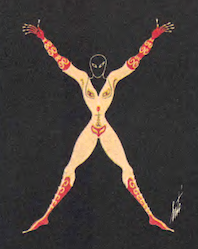 Erté (Romain de Tirtoff) was a well-known art deco era artist. Born in St. Petersburg, Russia in 1892, he died in 1990 in Paris. In 1912, Erté moved to Paris. In 1915, he began an association with Harper's Bazaar by designing covers of each of their magazines for the next 22 years. He became known for elegant lithographs and sculptures for the fashion industry. On my pages, you find an elegant set of capitals and numerals in which the glyphs are formed by elegantly drawn naked women, from The Alphabet Suite (Chicago, 1976).
Erté (Romain de Tirtoff) was a well-known art deco era artist. Born in St. Petersburg, Russia in 1892, he died in 1990 in Paris. In 1912, Erté moved to Paris. In 1915, he began an association with Harper's Bazaar by designing covers of each of their magazines for the next 22 years. He became known for elegant lithographs and sculptures for the fashion industry. On my pages, you find an elegant set of capitals and numerals in which the glyphs are formed by elegantly drawn naked women, from The Alphabet Suite (Chicago, 1976).  Eugene Yukechev is a designer, typographer and type designer who drifts between Berlin and Moscow. He was born in Novosibirsk, Russia, in 1980. After obtaining a degree in philology and independent practice in editorial and graphic design, Yukechev moved to Moscow to study type design. He graduated in 2010 from the British Higher School of Design in Moscow (Type and Typography program). Since 2013, he runs a Moscow-based Publishing Schrift and Type Journal online (typejournal.ru) with his colleagues. He created typefaces for magazines and books (Kommersant, Financial Director, Intersection, Barcode). Eugene gives lectures and workshops on type design, lettering and typography. He cooperates with Paratype and Fontshop.
Eugene Yukechev is a designer, typographer and type designer who drifts between Berlin and Moscow. He was born in Novosibirsk, Russia, in 1980. After obtaining a degree in philology and independent practice in editorial and graphic design, Yukechev moved to Moscow to study type design. He graduated in 2010 from the British Higher School of Design in Moscow (Type and Typography program). Since 2013, he runs a Moscow-based Publishing Schrift and Type Journal online (typejournal.ru) with his colleagues. He created typefaces for magazines and books (Kommersant, Financial Director, Intersection, Barcode). Eugene gives lectures and workshops on type design, lettering and typography. He cooperates with Paratype and Fontshop. 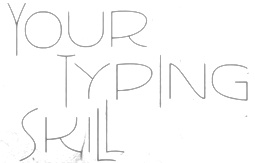 Inspiring graphic design talent in Moscow. During her studies at the British School of Arts and Design in Moscow, she created the hairline Latin / Cyrillic display typefaces Folio (2015) and Liquid Secession (2015). [
Inspiring graphic design talent in Moscow. During her studies at the British School of Arts and Design in Moscow, she created the hairline Latin / Cyrillic display typefaces Folio (2015) and Liquid Secession (2015). [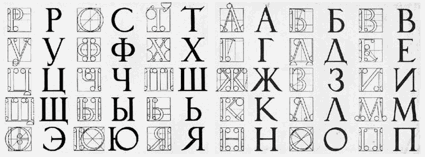 Russian type designer.
Russian type designer.  Based in Vladivostok, calligrapher Evgeny Tkhorzhevsky (Robot Smith, or ET Lettering Studio) created
Based in Vladivostok, calligrapher Evgeny Tkhorzhevsky (Robot Smith, or ET Lettering Studio) created 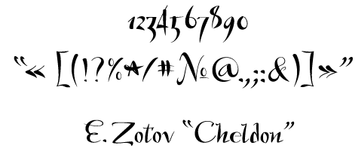 Russian designer of the elegant Latin / Cyrillic script typefaces
Russian designer of the elegant Latin / Cyrillic script typefaces 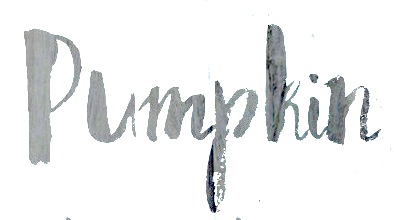 Moscow and/or Riga, Latvia-based designer of the pleasingly rough brush typeface Bronks Script (2015) and of the handcrafted typeface Marshmallow (2015). In 2016, she made the dry brush font Density (2016), the brush scripts Firecracker, Caricia, Pepper, Lady in Red (a fine brush script), Asparagus, Siberia (crayon style), Newport (marker font), Emerald and Haiti, Ambrosia Script, the wide calligraphic font Lancaster, the curly watercolor brush script typeface Candyland, Fallen Angel, the Treefrog-style script Lemon, Penelopa, Cutout, and the creamy brush script Marmaris.
Moscow and/or Riga, Latvia-based designer of the pleasingly rough brush typeface Bronks Script (2015) and of the handcrafted typeface Marshmallow (2015). In 2016, she made the dry brush font Density (2016), the brush scripts Firecracker, Caricia, Pepper, Lady in Red (a fine brush script), Asparagus, Siberia (crayon style), Newport (marker font), Emerald and Haiti, Ambrosia Script, the wide calligraphic font Lancaster, the curly watercolor brush script typeface Candyland, Fallen Angel, the Treefrog-style script Lemon, Penelopa, Cutout, and the creamy brush script Marmaris.  Font City is a Russian foundry headed by
Font City is a Russian foundry headed by 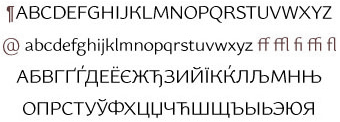 Russian designer (also spelled
Russian designer (also spelled 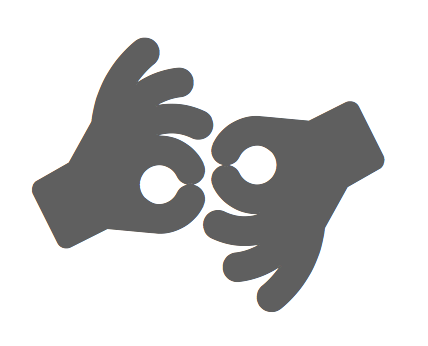 Iconic font scissors. This free tool can be used to combine icons into a single font. There is, for example, a tool called
Iconic font scissors. This free tool can be used to combine icons into a single font. There is, for example, a tool called  Russian designer based in Turkey. Creator of these typefaces in 2017:
Russian designer based in Turkey. Creator of these typefaces in 2017: 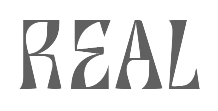 During his studies in Saint Petersburg, Russia, Viktor Pesotsky designed the
During his studies in Saint Petersburg, Russia, Viktor Pesotsky designed the 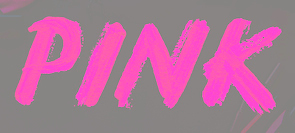 Gala Studio (Israel) was founded by Galina Bleikh and Lilia Chak. Lilia Chak is an artist and designer, b. Saint Petersburg, Russia. She graduated from the Stieglitz St. Petersburg State Academy of Art and Industry. Since 1990, she lives in Jerusalem. In 2015, Lilia created the acrylic brush typeface Pink, 3D Ink, the crayon fonts Orange Oil Pastel and Red (based on watercolors), the sketched typeface ABC Handwritten, the watercolor brush typefaces Red Handdwritten, Black Handwritten, Blue Handwritten and Green Handwritten, Bold, the brush typeface Ink, and the sketch font Chalk Expressive.
Gala Studio (Israel) was founded by Galina Bleikh and Lilia Chak. Lilia Chak is an artist and designer, b. Saint Petersburg, Russia. She graduated from the Stieglitz St. Petersburg State Academy of Art and Industry. Since 1990, she lives in Jerusalem. In 2015, Lilia created the acrylic brush typeface Pink, 3D Ink, the crayon fonts Orange Oil Pastel and Red (based on watercolors), the sketched typeface ABC Handwritten, the watercolor brush typefaces Red Handdwritten, Black Handwritten, Blue Handwritten and Green Handwritten, Bold, the brush typeface Ink, and the sketch font Chalk Expressive. 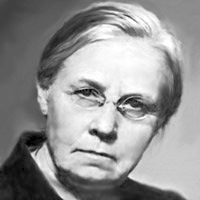 Russian type designer, 1901-1972 (d. Moscow). Her typefaces include Bannikovskaya (1946-1951, at Polygrafmash, which was inspired by the Russian Grazhdansky early and mid 18th century typefaces: the digital version is
Russian type designer, 1901-1972 (d. Moscow). Her typefaces include Bannikovskaya (1946-1951, at Polygrafmash, which was inspired by the Russian Grazhdansky early and mid 18th century typefaces: the digital version is  Gaslight-type-foundry is collaboration between three type designers---Valery Zaveryaev, Maria Luarvik, and Roman Shchyukin---, founded in 2011. Valery Zaveryaev is a
Gaslight-type-foundry is collaboration between three type designers---Valery Zaveryaev, Maria Luarvik, and Roman Shchyukin---, founded in 2011. Valery Zaveryaev is a  [
[ Russian designer of the bouncy script
Russian designer of the bouncy script 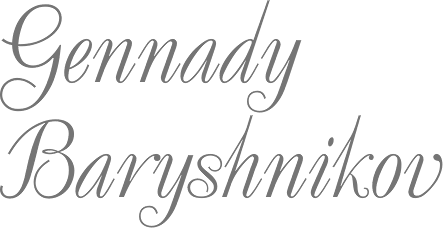 Russian designer of Anons (a Cyrillic sans family),
Russian designer of Anons (a Cyrillic sans family), 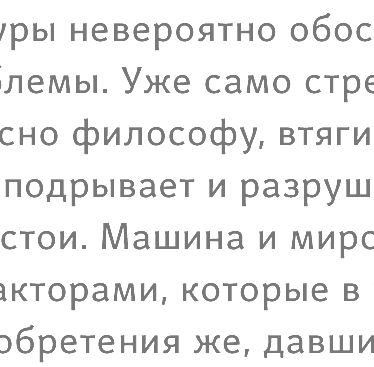 Glen Jan is the foundry of type designer Elena Kowalski (b. 1986) in Ufa, Russia. Elena created the Latin / Cyrillic typeface
Glen Jan is the foundry of type designer Elena Kowalski (b. 1986) in Ufa, Russia. Elena created the Latin / Cyrillic typeface 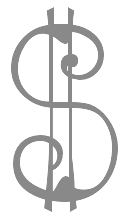 Russian language site with an archive (specializing in calligraphic and display scripts), some original fonts by Ivan Zeifert of Ivan Zeifert Works, tens of free fonts by Alexandra Gophmann, and links to free and commercial font sites. Commercial scripts nearly all by Zeifert, and nearly all are cyrillicized versions of Latin typefaces. Free scripts: Cansellarist (2003, Ivan Zeifert, cyrillicized version of Cancellaresca Script Plain), ChampagneCyrillic (2005), Copyist (2004, Ivan Zeifert), Drakkar (2004),
Russian language site with an archive (specializing in calligraphic and display scripts), some original fonts by Ivan Zeifert of Ivan Zeifert Works, tens of free fonts by Alexandra Gophmann, and links to free and commercial font sites. Commercial scripts nearly all by Zeifert, and nearly all are cyrillicized versions of Latin typefaces. Free scripts: Cansellarist (2003, Ivan Zeifert, cyrillicized version of Cancellaresca Script Plain), ChampagneCyrillic (2005), Copyist (2004, Ivan Zeifert), Drakkar (2004), 
 Russian designer of the all caps sans typeface
Russian designer of the all caps sans typeface 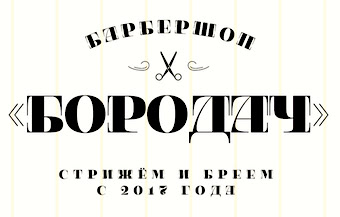 Graduate of Pedagogical Academy in Nizhny Tagil. Yekaterinburg, Russia-based designer of the extravagant Latin / Cyrillic typeface
Graduate of Pedagogical Academy in Nizhny Tagil. Yekaterinburg, Russia-based designer of the extravagant Latin / Cyrillic typeface 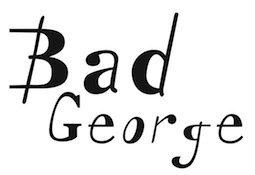 Moscow-based designer of Cone (2015, a decorative Cyrillic typeface), Aesthete (2015, a hairline all-caps circle-based typeface, done at BHSAD) and Bad George (2015, a hybrid created at BHSAD using Bad Script and Georgia as models, in honor of George Clooney).
Moscow-based designer of Cone (2015, a decorative Cyrillic typeface), Aesthete (2015, a hairline all-caps circle-based typeface, done at BHSAD) and Bad George (2015, a hybrid created at BHSAD using Bad Script and Georgia as models, in honor of George Clooney). 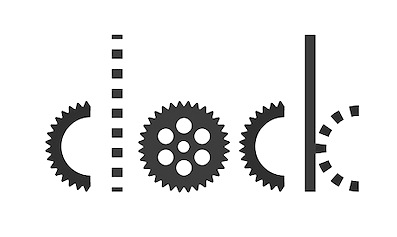 Graphic designer in Saint Petersburg, Russia, who created the great experimental typeface Somnium (2015), the connect-the-dots typeface Saturn (2015) and the artsy steampunk typeface Clock (2015). [
Graphic designer in Saint Petersburg, Russia, who created the great experimental typeface Somnium (2015), the connect-the-dots typeface Saturn (2015) and the artsy steampunk typeface Clock (2015). [ Korolyov, Russia-based designer of the sturdy poster typeface Wooden (2018; for Latin and Cyrillic). [
Korolyov, Russia-based designer of the sturdy poster typeface Wooden (2018; for Latin and Cyrillic). [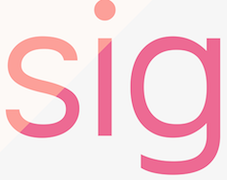 Perm, Russia-based designer of the clean, natural and energetic typeface Vocal (2016). [
Perm, Russia-based designer of the clean, natural and energetic typeface Vocal (2016). [ Also written Igor Mustaev. Born in 1982 in Khabarovsk, Mustayev was first an architect. In 2009, he finished the Type and Typography course at the British Higher School of Art and Design, supervised by Ilya Ruderman.
Also written Igor Mustaev. Born in 1982 in Khabarovsk, Mustayev was first an architect. In 2009, he finished the Type and Typography course at the British Higher School of Art and Design, supervised by Ilya Ruderman. 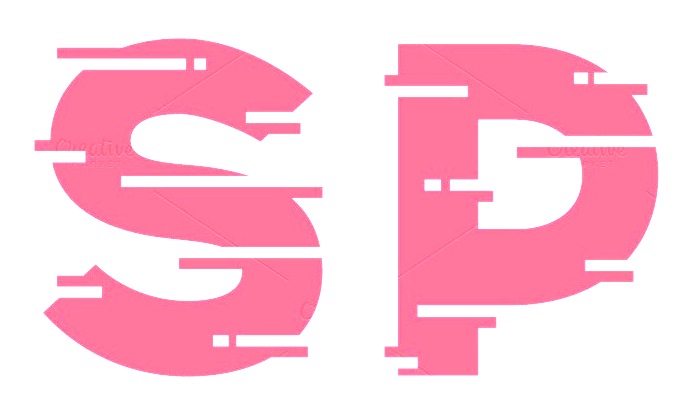 Komi Republic, Russia-based creator of the speed emulation techno typefaces Line World (2015) and Speed World (2015). [
Komi Republic, Russia-based creator of the speed emulation techno typefaces Line World (2015) and Speed World (2015). [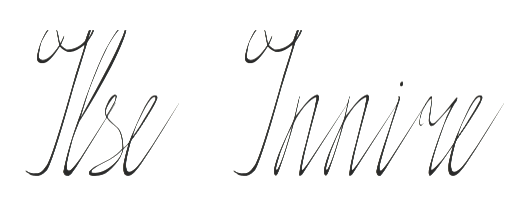 Aka Lupus Es. Russian designer of the thin calligraphic typeface Elegance (2016) and the beautiful handwriting font Departure (2017). [
Aka Lupus Es. Russian designer of the thin calligraphic typeface Elegance (2016) and the beautiful handwriting font Departure (2017). [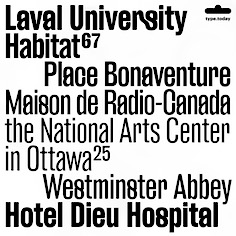 Artist and type and graphic designer. His fascination with street art has led him to typography and visual arts. Ilya received a diploma in graphic design from the Russian-British Institute of Management (Chelyabinsk, Russia). He graduated from the Faculty of Arts and Design at UJEP (Usti nad Labem, Czechia). He also studied at the HSD University of Applied Sciences in Düsseldorf, Germany, and at the Graduate School of Applied Arts in Prague, UMPRUM. His typefaces cover Latin and Cyrillic:
Artist and type and graphic designer. His fascination with street art has led him to typography and visual arts. Ilya received a diploma in graphic design from the Russian-British Institute of Management (Chelyabinsk, Russia). He graduated from the Faculty of Arts and Design at UJEP (Usti nad Labem, Czechia). He also studied at the HSD University of Applied Sciences in Düsseldorf, Germany, and at the Graduate School of Applied Arts in Prague, UMPRUM. His typefaces cover Latin and Cyrillic:  Graphic and type designer from Moscow, b. 1985. Since 2005 he has been working in international advertising and creative agencies. Creator of the geometric typeface Discoteque (sic) (2012, +
Graphic and type designer from Moscow, b. 1985. Since 2005 he has been working in international advertising and creative agencies. Creator of the geometric typeface Discoteque (sic) (2012, +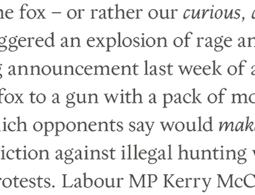 Also Ilya Naumov, b. Russia. Paris-based graphic and type designer, whose typefaces are fabulous. His typefaces:
Also Ilya Naumov, b. Russia. Paris-based graphic and type designer, whose typefaces are fabulous. His typefaces:  [
[ Russian type design graduate of the Moscow State University of the Printing Arts (2002) and Type & Media at KABK in Den Haag, The Netherlands. Cofounder in 2005 of
Russian type design graduate of the Moscow State University of the Printing Arts (2002) and Type & Media at KABK in Den Haag, The Netherlands. Cofounder in 2005 of  Designer of the Latin/Cyrillic
Designer of the Latin/Cyrillic  [
[ Moscow-based designer of the
Moscow-based designer of the 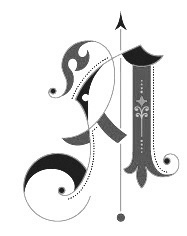 Moscow-based designer of the decorative caps typefaces Gothic Ornamental (2016: this blackletter typeface also has lowercase letters, and is based on "Gems of Penmanship" by Williams&Packard, 1867) and Vintage Ornamental (2016, also based on "Gems of Penmanship" by Williams&Packard, 1867). All fonts are in vector format. [
Moscow-based designer of the decorative caps typefaces Gothic Ornamental (2016: this blackletter typeface also has lowercase letters, and is based on "Gems of Penmanship" by Williams&Packard, 1867) and Vintage Ornamental (2016, also based on "Gems of Penmanship" by Williams&Packard, 1867). All fonts are in vector format. [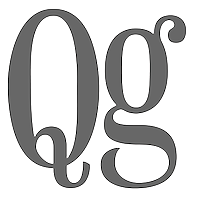 Alexander Bobrov (Indian Summer Studio, or simply Indians, Moscow) designed the vintage didone typeface family
Alexander Bobrov (Indian Summer Studio, or simply Indians, Moscow) designed the vintage didone typeface family  Or Vera Evstafeva. Infonta is Vera Evstafieva's foundry in Moscow, est. ca. 2011. Born in Moscow to a family of artists and architects in 1980,
Or Vera Evstafeva. Infonta is Vera Evstafieva's foundry in Moscow, est. ca. 2011. Born in Moscow to a family of artists and architects in 1980, 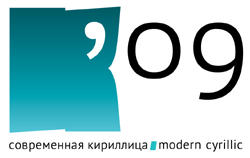 This competition was held by ParaType and dedicated to the Tercentenary of Russian Civil Type (Peter the Great's historic reform of Russian typography). Cyrillic typeface projects and completed typefaces created and/or released after January 1, 2006 were eligible. There was no admission fee. The jury consisted of Vladimir Yefimov (chair, ParaType), Yuri Gordon (LetterHead), Alexander Konoplev (Moscow State University of Printing Arts), Artemy Lebedev (Art. Lebedev Studio), Vladimir Muzychenko (Stroganov University), Tagir Safayev (Higher Academical School of Graphic Design), and Maxim Zhukov (ATypI). In September 2009, the winners were announced:
This competition was held by ParaType and dedicated to the Tercentenary of Russian Civil Type (Peter the Great's historic reform of Russian typography). Cyrillic typeface projects and completed typefaces created and/or released after January 1, 2006 were eligible. There was no admission fee. The jury consisted of Vladimir Yefimov (chair, ParaType), Yuri Gordon (LetterHead), Alexander Konoplev (Moscow State University of Printing Arts), Artemy Lebedev (Art. Lebedev Studio), Vladimir Muzychenko (Stroganov University), Tagir Safayev (Higher Academical School of Graphic Design), and Maxim Zhukov (ATypI). In September 2009, the winners were announced: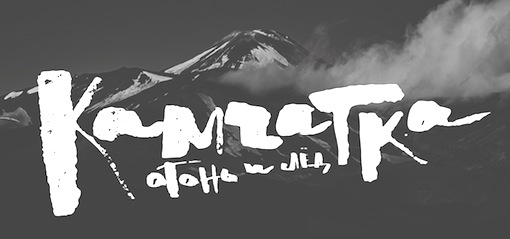 Talented lettering artist, calligrapher and type designer in Volgograd, Russia, who graduated from BHSAD in Moscow in 2014. Ira's typefaces include Stuff (2014), Filum (2014, thin, techno face), Koolhaas (2014: inspired by architect Rem Koolhaas; renamed Gebouw), Staket (2014, a war movie font), Bodler (2014, named after Charles Baudelaire, this inky calligraphic typeface is exceptionally beautiful). All fonts cover Latin and Cyrillic.
Talented lettering artist, calligrapher and type designer in Volgograd, Russia, who graduated from BHSAD in Moscow in 2014. Ira's typefaces include Stuff (2014), Filum (2014, thin, techno face), Koolhaas (2014: inspired by architect Rem Koolhaas; renamed Gebouw), Staket (2014, a war movie font), Bodler (2014, named after Charles Baudelaire, this inky calligraphic typeface is exceptionally beautiful). All fonts cover Latin and Cyrillic. 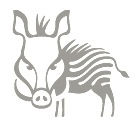 Moscow-based illustrator and digital artist.
Moscow-based illustrator and digital artist. 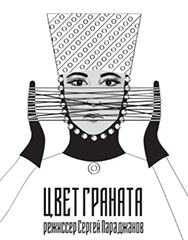 During her Masters studies in Saint Petersburg, Russia, Irina Kliusova designed an award-winning film poster called Cvet Granata (2016), and a multilined typeface, Aim (2016). She also designed several alphabets in 2016 that are based on the shapes of funky sunglasses. [
During her Masters studies in Saint Petersburg, Russia, Irina Kliusova designed an award-winning film poster called Cvet Granata (2016), and a multilined typeface, Aim (2016). She also designed several alphabets in 2016 that are based on the shapes of funky sunglasses. [ Moscow-based designer of a hybrid Latin typeface (2016) based on Garamond Italic and New Courier Italic. She also created a set of Olympic pictograms and a Cyrillic military stencil typeface called Ulichnyj in 2016. [
Moscow-based designer of a hybrid Latin typeface (2016) based on Garamond Italic and New Courier Italic. She also created a set of Olympic pictograms and a Cyrillic military stencil typeface called Ulichnyj in 2016. [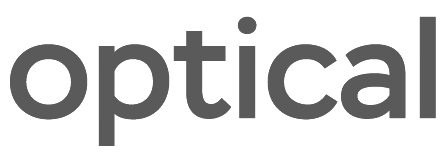 Russian type designer called Olga Chaeva at
Russian type designer called Olga Chaeva at 
 [
[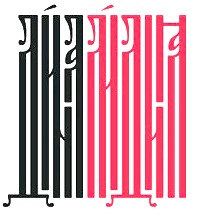 Russian graphic designer working out of San Francisco. His work includes a few nice Cyrillic typographic pieces, some icon sets and digitally revived Vjaz lettering (2014). [
Russian graphic designer working out of San Francisco. His work includes a few nice Cyrillic typographic pieces, some icon sets and digitally revived Vjaz lettering (2014). [ Ivan Petrov is based in Saint Petersburg, Russia. Bulgarian codesigner with Julia Zhdanova of the free typeface
Ivan Petrov is based in Saint Petersburg, Russia. Bulgarian codesigner with Julia Zhdanova of the free typeface 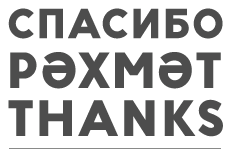 Designer in Saint Petersburg, Russia. In 2014, he created the Latin / Cyrillic geometric sans typeface family Ufa.
Designer in Saint Petersburg, Russia. In 2014, he created the Latin / Cyrillic geometric sans typeface family Ufa. 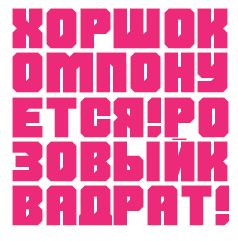 Russian designer of the
Russian designer of the 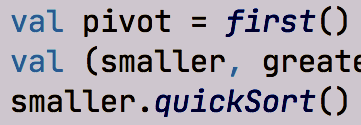 In 2020, Philipp Nurullin (type designer, Saint Petersburg, Russia) and Konstantin Bulenkov (project lead) published the carefully designed free programming font family
In 2020, Philipp Nurullin (type designer, Saint Petersburg, Russia) and Konstantin Bulenkov (project lead) published the carefully designed free programming font family  [
[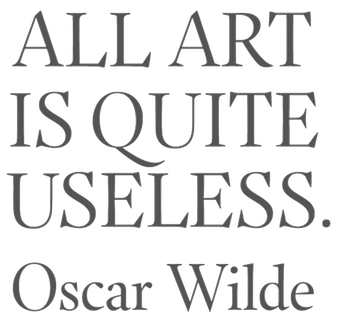 [
[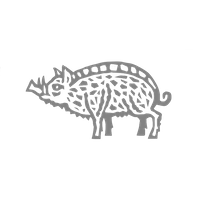 Russian designer of the pictogram typeface
Russian designer of the pictogram typeface 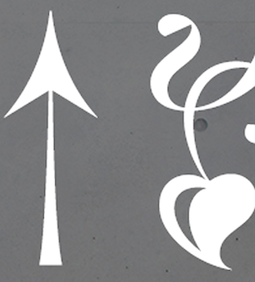 Graduate of BHSAD in Moscow, class of 2013. Aka Julia Artamanova, she presently is a graphic designer in Moscow. Julia created the flared (lapidary) Latin / Cyrillic text typeface
Graduate of BHSAD in Moscow, class of 2013. Aka Julia Artamanova, she presently is a graphic designer in Moscow. Julia created the flared (lapidary) Latin / Cyrillic text typeface 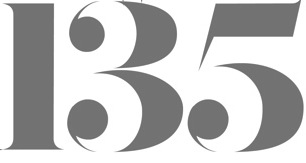 Graphic designer in Moscow. Creator of the Latin/Cyrillic typefaces
Graphic designer in Moscow. Creator of the Latin/Cyrillic typefaces 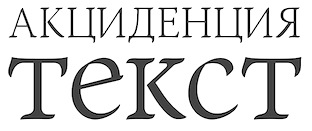 Graphic designer and illustrator in Moscow, who created the broad nibbed calligraphic text typeface Tocano (2016) for Latin and Cyrillic. In 2019, she released the deconstructed Cyrillic typeface Bukvy. [
Graphic designer and illustrator in Moscow, who created the broad nibbed calligraphic text typeface Tocano (2016) for Latin and Cyrillic. In 2019, she released the deconstructed Cyrillic typeface Bukvy. [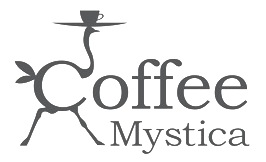 Designer of the Latin/Cyrillic
Designer of the Latin/Cyrillic 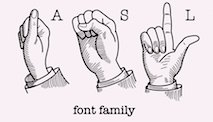 Roman Korolev (Kaer, Vologda, Russia) designed the wood stick brush typeface WoodStick in 2016.
Roman Korolev (Kaer, Vologda, Russia) designed the wood stick brush typeface WoodStick in 2016. 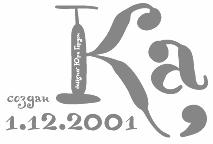 Kak is a Russian type and design magazine run by Peter Bankov and Katerina Kozhukhova. Alexander Tarbeev designed the typefaces KakC and DenHaag for the mag.
Kak is a Russian type and design magazine run by Peter Bankov and Katerina Kozhukhova. Alexander Tarbeev designed the typefaces KakC and DenHaag for the mag. 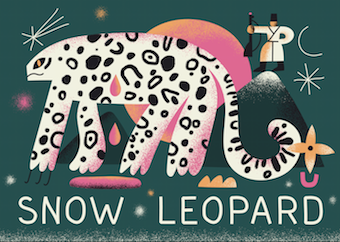 Russian graphic designer and illustrator. In 2017 she drew Russian Alphabet For Children, and in 2019 English Alphabet for Children. [
Russian graphic designer and illustrator. In 2017 she drew Russian Alphabet For Children, and in 2019 English Alphabet for Children. [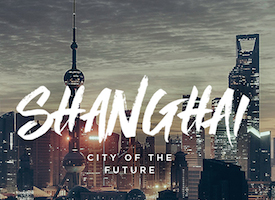 Moscow (was: Krasnodar), Russia-based designer of the brush script typefaces Geneva (2016, a fat signage brush font), Florence Brush (2016), Brownie Brush (2016), Jumper Script (2016), Leviafan (2016), Kelium (2016) and Milestone (2016), and the handcrafted Kelium Grotesque (2016) and Milestone Grotesque (2016).
Moscow (was: Krasnodar), Russia-based designer of the brush script typefaces Geneva (2016, a fat signage brush font), Florence Brush (2016), Brownie Brush (2016), Jumper Script (2016), Leviafan (2016), Kelium (2016) and Milestone (2016), and the handcrafted Kelium Grotesque (2016) and Milestone Grotesque (2016). 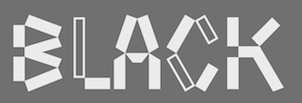 A pioneer of geometric abstract art and the originator of the avant-garde suprematist movement,
A pioneer of geometric abstract art and the originator of the avant-garde suprematist movement,  Graphic designer from Moscow who is based in London, and who is studying Design for Graphic Communication in London College of Communication, UAL.
Graphic designer from Moscow who is based in London, and who is studying Design for Graphic Communication in London College of Communication, UAL. 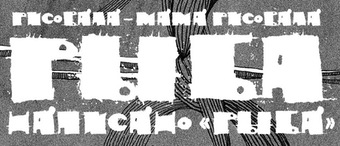 Moscow-based letterer, and graphic and type designer, b. Tver, 1979. He graduated from the Venezianov Art College in Tver in 1998, and entered Moscow State Printing University. Kirill works as a graphic designer at Leo Bernett, Moscow.
Moscow-based letterer, and graphic and type designer, b. Tver, 1979. He graduated from the Venezianov Art College in Tver in 1998, and entered Moscow State Printing University. Kirill works as a graphic designer at Leo Bernett, Moscow.  Moscow-based designer of these typefaces in 2018:
Moscow-based designer of these typefaces in 2018:  Saint Petersburg, Russia-based designer of the high-contrast display typeface
Saint Petersburg, Russia-based designer of the high-contrast display typeface 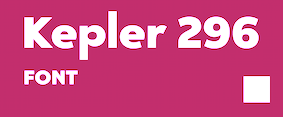 Aka Pj154. Graphic designer in Noyabrsk (northern central Siberia). In 2017, he added a Cyrillic part to Manh Nguyen's Arcadia, and created the
Aka Pj154. Graphic designer in Noyabrsk (northern central Siberia). In 2017, he added a Cyrillic part to Manh Nguyen's Arcadia, and created the 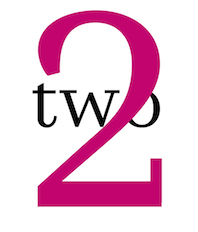 Graduate of the British Higher School of Art and Design, Moscow. Saint Petersburg, Russia-based designer of the Bauhaus genre sans typeface Travertine (2015, influenced by Mies van der Rohe), the
Graduate of the British Higher School of Art and Design, Moscow. Saint Petersburg, Russia-based designer of the Bauhaus genre sans typeface Travertine (2015, influenced by Mies van der Rohe), the 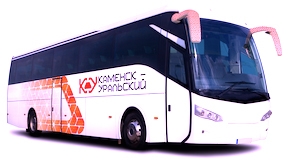 Yekaterinburg, Russia-based design studio. Creators of the modular branding typeface Brend G Kamensk Uralskij (2015, Latin and Cyrillic).
Yekaterinburg, Russia-based design studio. Creators of the modular branding typeface Brend G Kamensk Uralskij (2015, Latin and Cyrillic).  Kristina Gess (aka Sproot, based in Chelyabinsk, Russia) created the Latin paper-cut typeface
Kristina Gess (aka Sproot, based in Chelyabinsk, Russia) created the Latin paper-cut typeface 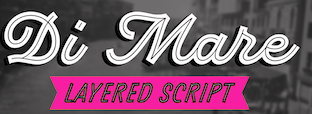 Type designer, calligrapher and lettering artist in Moscow. Initially, she was working for Artem Gorbunov Design Bureau. Her typefaces there:
Type designer, calligrapher and lettering artist in Moscow. Initially, she was working for Artem Gorbunov Design Bureau. Her typefaces there:  Illustrator, graphic and type designer, b. 1997 in Moscow. She graduated from MGHPA (Faculty of Graphic Design of the Stroganov Academy) in 2018.
Illustrator, graphic and type designer, b. 1997 in Moscow. She graduated from MGHPA (Faculty of Graphic Design of the Stroganov Academy) in 2018. 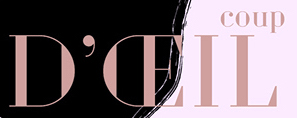 Moscow-based designer of the
Moscow-based designer of the 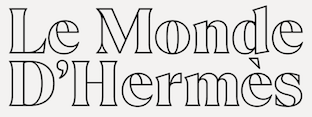 Russian type designer associated with TypeType in Saint Petersburg, Russia. She is originally from Rostov-on-Don. In 2020, Antonina Zhulkova, Yulia Gonina and Kseniya Karataeva co-designed the octagonal typeface superfamily
Russian type designer associated with TypeType in Saint Petersburg, Russia. She is originally from Rostov-on-Don. In 2020, Antonina Zhulkova, Yulia Gonina and Kseniya Karataeva co-designed the octagonal typeface superfamily  [
[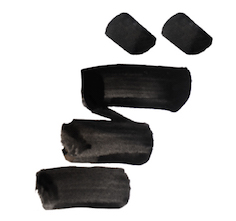 Kursk, Russia-based designer of the great Cyrillic brush typeface Voronijo (Crow) in 2017. [
Kursk, Russia-based designer of the great Cyrillic brush typeface Voronijo (Crow) in 2017. [ Ksenya Samarskaya (b. Saint Petersburg, Russia) studied at the University of Oregon and New York University (class of 2010). From 2007 until 2011, she worked for Hoefler&Frere-Jones in New York. After a brief stint as type consultant for Apple in Cupertino, CA (2012-2013), she set up her own design studio, Samarskaya & Partners, in 2015, in Brooklyn, NY. That same year, she co-founded Alphabettes. Samarskaya has taught typography and design at Harbour.Space University in Barcelona, University of the Arts in Philadelphia, and the School of Visual Arts in New York. She splits her time between Brooklyn, NY, and Lisbon, Portugal. The typefaces she worked on at Hoefler include Exchange, Ideal Sans, Landmark, Retina, Sentinel, Sterling, Verlag, Archer, Forza, Gotham, Historical Allsorts, Numbers, Shades, Tungsten, Vitesse and Whitney. Her contributions covered design direction, drawing, kerning, interpolation, opentype features, hinting, production, testing and troubleshooting.
Ksenya Samarskaya (b. Saint Petersburg, Russia) studied at the University of Oregon and New York University (class of 2010). From 2007 until 2011, she worked for Hoefler&Frere-Jones in New York. After a brief stint as type consultant for Apple in Cupertino, CA (2012-2013), she set up her own design studio, Samarskaya & Partners, in 2015, in Brooklyn, NY. That same year, she co-founded Alphabettes. Samarskaya has taught typography and design at Harbour.Space University in Barcelona, University of the Arts in Philadelphia, and the School of Visual Arts in New York. She splits her time between Brooklyn, NY, and Lisbon, Portugal. The typefaces she worked on at Hoefler include Exchange, Ideal Sans, Landmark, Retina, Sentinel, Sterling, Verlag, Archer, Forza, Gotham, Historical Allsorts, Numbers, Shades, Tungsten, Vitesse and Whitney. Her contributions covered design direction, drawing, kerning, interpolation, opentype features, hinting, production, testing and troubleshooting.  Moscow-based designer of the experimental typeface El Lissitzky (2014). [
Moscow-based designer of the experimental typeface El Lissitzky (2014). [ Taganrog, Russia-based designer of Mash-up (2017), the copperplate emulation typeface Highbridge (2017), the elegant caps only sans typeface
Taganrog, Russia-based designer of Mash-up (2017), the copperplate emulation typeface Highbridge (2017), the elegant caps only sans typeface 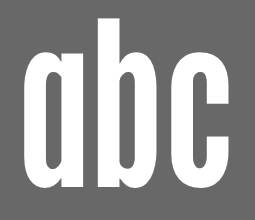 Extinct 20th century foundry in Saint Petersburg. Their fonts included Placard, which was an adaptation of Hermes Grotesk (Wilhelm Woellmer, 1911). [
Extinct 20th century foundry in Saint Petersburg. Their fonts included Placard, which was an adaptation of Hermes Grotesk (Wilhelm Woellmer, 1911). [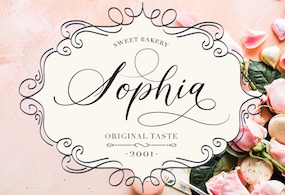 Pasha Larin or Pavel Larin is the Perm, Russia-based designer of these handcrafted typefaces in 2017: Andrea, Alaska (brush script), Phaeton, Modesty, Quarter (brush script), Magdolena, Casamia, Natalia, Kemuri.
Pasha Larin or Pavel Larin is the Perm, Russia-based designer of these handcrafted typefaces in 2017: Andrea, Alaska (brush script), Phaeton, Modesty, Quarter (brush script), Magdolena, Casamia, Natalia, Kemuri. 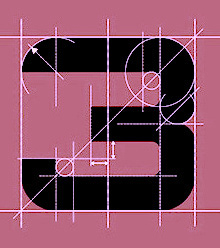 Russian designer of the modular Cyrillc sans typeface Monolit (2019). [
Russian designer of the modular Cyrillc sans typeface Monolit (2019). [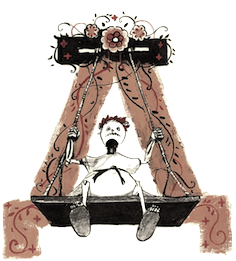 Saint Petersburg, Russia-based graphic designer and illustrator. Creator of
Saint Petersburg, Russia-based graphic designer and illustrator. Creator of 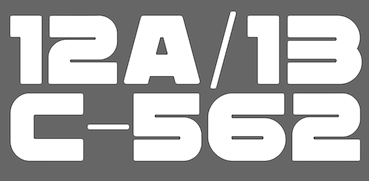 Moscow, Russia-based co-designer, with Vladyslav Boyko, of the
Moscow, Russia-based co-designer, with Vladyslav Boyko, of the 


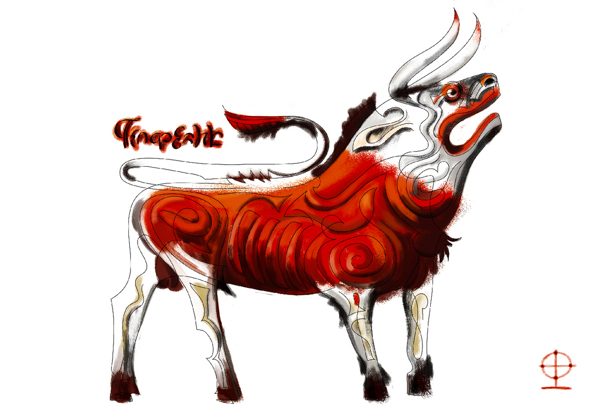
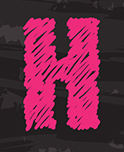 [
[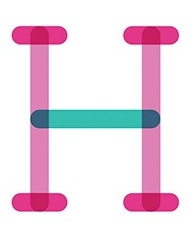 [
[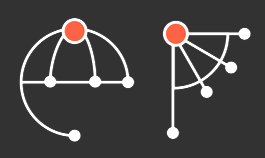 Moscow-based designer of the Cyrillic connect-the-dots typefaces Eyeye (2015) and Fire Sans (2015), which were school projects at HSE Art and Design School. She also created thge colorful blocky typeface TwoPic (2015). [
Moscow-based designer of the Cyrillic connect-the-dots typefaces Eyeye (2015) and Fire Sans (2015), which were school projects at HSE Art and Design School. She also created thge colorful blocky typeface TwoPic (2015). [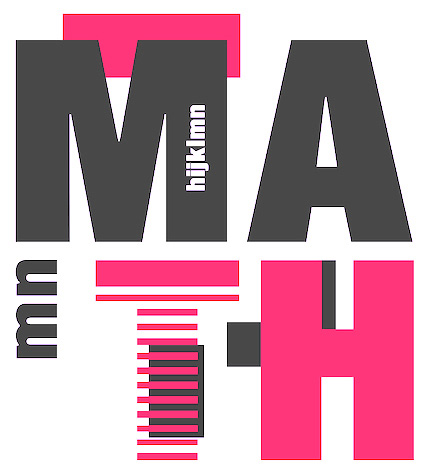 For her final project in 2015 at the Tagir Safaev Typography School in Moscow, Lina Tumarkina designed Mathilda Bold, a grotesque typeface for Latin and Cyrillic that is modeled after Morris Fuller Benton's Headline Gothic (1936).
For her final project in 2015 at the Tagir Safaev Typography School in Moscow, Lina Tumarkina designed Mathilda Bold, a grotesque typeface for Latin and Cyrillic that is modeled after Morris Fuller Benton's Headline Gothic (1936).  Type designer in Volgograd and Saint Petersburg, Russia, who created these display typefaces in 2018:
Type designer in Volgograd and Saint Petersburg, Russia, who created these display typefaces in 2018: 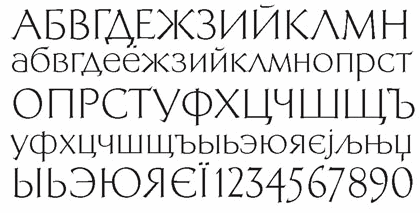 Moscow-based type, graphic and book designer (b. Tula, 1928, d. Moscow, 2008). In 1951, after her graduation from Moscow Printing Institute, she joined the type design team of VNII Polygraphmash, and worked there for forty years as a designer, head of the design department, and chief of the oriental type design unit. From 1992 until her death, she was a staff designer at
Moscow-based type, graphic and book designer (b. Tula, 1928, d. Moscow, 2008). In 1951, after her graduation from Moscow Printing Institute, she joined the type design team of VNII Polygraphmash, and worked there for forty years as a designer, head of the design department, and chief of the oriental type design unit. From 1992 until her death, she was a staff designer at  Russian calligrapher.
Russian calligrapher.  Maxim and Denis Schepin are the Krasnoyarsk, Russia-based designers of these fonts:
Maxim and Denis Schepin are the Krasnoyarsk, Russia-based designers of these fonts:  Moscow-based Armenian type designer (b. 1960, Artashat, Armenia) and graphic artist. In 1984 graduated from the Moscow Poligraphic Institute, department of Polygraphic Product Design. He worked for the Type Department of Committee of Print in Yerevan, and for the publishing houses Ayastan, Luys and Sovetakan Grokh. At Microsoft's request, in 1999, he was consulted for the Armenian section of the Sylfaen project.
Moscow-based Armenian type designer (b. 1960, Artashat, Armenia) and graphic artist. In 1984 graduated from the Moscow Poligraphic Institute, department of Polygraphic Product Design. He worked for the Type Department of Committee of Print in Yerevan, and for the publishing houses Ayastan, Luys and Sovetakan Grokh. At Microsoft's request, in 1999, he was consulted for the Armenian section of the Sylfaen project. 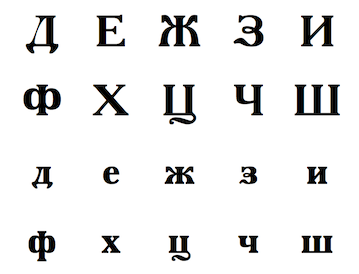 Marath Salychow (b. 1980) is the Moscow-based designer of the free typefaces Alhueia (2001, for Greek) and Akademie Alte (2016, for Latin and Cyrillic; based on a Berthold original from 1910).
Marath Salychow (b. 1980) is the Moscow-based designer of the free typefaces Alhueia (2001, for Greek) and Akademie Alte (2016, for Latin and Cyrillic; based on a Berthold original from 1910). 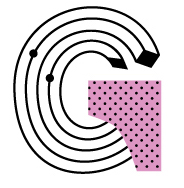 Saint Petersburg, Russia-based designer of the postmodernist neo deco decorative caps alphabet Memphis (2017).
Saint Petersburg, Russia-based designer of the postmodernist neo deco decorative caps alphabet Memphis (2017).  [
[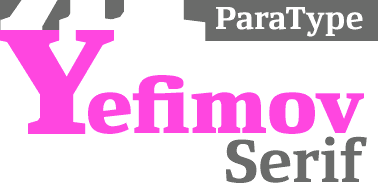 [
[ Codesigner with Jovanny Lemonad (Ivan Gladkikh) of the constructivist Latin / Cyrillic typeface
Codesigner with Jovanny Lemonad (Ivan Gladkikh) of the constructivist Latin / Cyrillic typeface  Moscow-based type designer, known first as
Moscow-based type designer, known first as 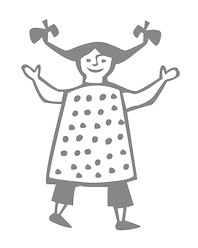 Graduate of Moscow State University of Printing Arts. Graphic designer in Moscow, who published the handcrafted Cyrillic typeface Razgulay (2017), a fun decorative font for grain holding. [
Graduate of Moscow State University of Printing Arts. Graphic designer in Moscow, who published the handcrafted Cyrillic typeface Razgulay (2017), a fun decorative font for grain holding. [ Russian type designer who created the dynamic hand-printed typeface
Russian type designer who created the dynamic hand-printed typeface  Tolyatti, Russia-based designer of the nihilist Cyrillic typeface Malevich (2019). [
Tolyatti, Russia-based designer of the nihilist Cyrillic typeface Malevich (2019). [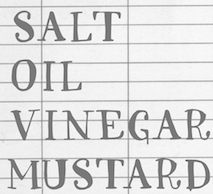 Novosibirsk, Siberia-based designer of the watercolor brush script Sillyserif (2017), the quill script Arfa Quill (2017), the calligraphic Siberius (2017), the brush signage typeface Signifique (2017), and the rough but attractive handwriting font Adjika (2017).
Novosibirsk, Siberia-based designer of the watercolor brush script Sillyserif (2017), the quill script Arfa Quill (2017), the calligraphic Siberius (2017), the brush signage typeface Signifique (2017), and the rough but attractive handwriting font Adjika (2017). 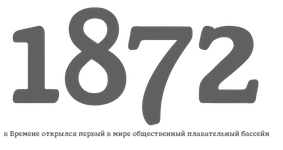 As a student at
As a student at  Russian
Russian 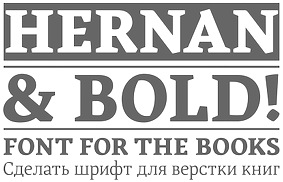 During her graphic design stuies in Moscow, Marina Zakynian created the serifed text typeface family
During her graphic design stuies in Moscow, Marina Zakynian created the serifed text typeface family 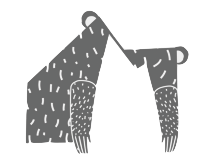 During her studies in Moscow, Marsha Barsukova designed
During her studies in Moscow, Marsha Barsukova designed 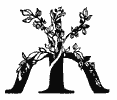 Russian designer of
Russian designer of  Russian designer of these typefaces in 2019: Vesievi, Soceri (for sports shirts), Rocari (cartoon style), Playlomer (blackletter), Emporia (monoline script), Driona, Dirjen, Clelia (monoline sans), Botote (dry brush), Aniies (a painted font).
Russian designer of these typefaces in 2019: Vesievi, Soceri (for sports shirts), Rocari (cartoon style), Playlomer (blackletter), Emporia (monoline script), Driona, Dirjen, Clelia (monoline sans), Botote (dry brush), Aniies (a painted font). 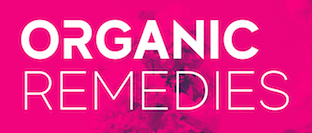 [
[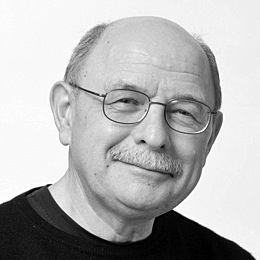 Maxim Zhukov (b. Moscow, 1943) specializes in multilingual typography. He was a typographic coordinator for the United Nations in New York from 1977 until 2003. Solomon Telingater was one of his mentors. Early on, he designed some typefaces such as Meandr (1972). He taught at the Moscow Printing Institute in 1984-1985, and at the British School of Art and Design in Moscowand is affiliated with the Type Directors Club and ATypI. He now teaches at Parsons School of Design in New York. He also taught a course on advanced typography at The Cooper Union, also New York.
Maxim Zhukov (b. Moscow, 1943) specializes in multilingual typography. He was a typographic coordinator for the United Nations in New York from 1977 until 2003. Solomon Telingater was one of his mentors. Early on, he designed some typefaces such as Meandr (1972). He taught at the Moscow Printing Institute in 1984-1985, and at the British School of Art and Design in Moscowand is affiliated with the Type Directors Club and ATypI. He now teaches at Parsons School of Design in New York. He also taught a course on advanced typography at The Cooper Union, also New York. 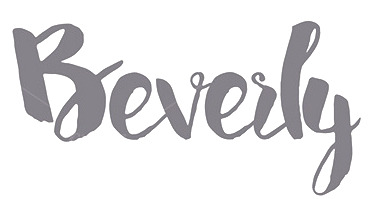 In 2015, Dmitriy Chirkov (or: D.C. Store, or: Media Lab, or: Dima Evans, located in Moscow) created the brush typefaces Lovehearts, Cascade, Foliage, Something Wild, Pepper Mint, Summertime (watercolor brush), Breathe, Starshine Script, Seashore (an attractive dry brush style), The Moment, Cupcake, Anemone, Water, Adventurer, Sweet Brush, You & Me, Beverly Script, Sabrina, Onevia, Andrea and Dreamboat. He also created the Treefrog-style gonzo script typeface Sileighty and the handcrafted typefaces Scratchy, Julia's Dream, Begonia, Matryoshka (handcrafted Cyrillic sans) and Simpleton.
In 2015, Dmitriy Chirkov (or: D.C. Store, or: Media Lab, or: Dima Evans, located in Moscow) created the brush typefaces Lovehearts, Cascade, Foliage, Something Wild, Pepper Mint, Summertime (watercolor brush), Breathe, Starshine Script, Seashore (an attractive dry brush style), The Moment, Cupcake, Anemone, Water, Adventurer, Sweet Brush, You & Me, Beverly Script, Sabrina, Onevia, Andrea and Dreamboat. He also created the Treefrog-style gonzo script typeface Sileighty and the handcrafted typefaces Scratchy, Julia's Dream, Begonia, Matryoshka (handcrafted Cyrillic sans) and Simpleton.  [
[ [
[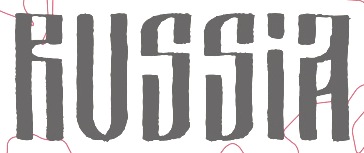 [
[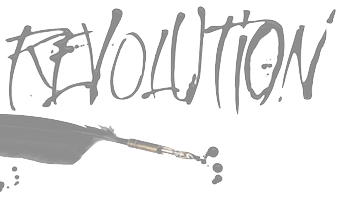 Russian designer in St. Petersburg, aka Mister Chek, b. 1983. Dafont carries his free demos. He sells his typefaces
Russian designer in St. Petersburg, aka Mister Chek, b. 1983. Dafont carries his free demos. He sells his typefaces 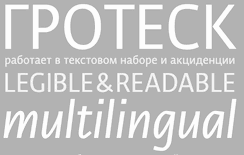 Designer of
Designer of 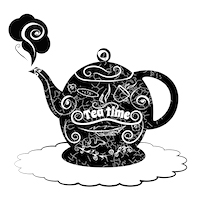 Or Nadin Oldy. Perm, Russia-based designer of the handcrafted typefaces Winter Loves (2016, brush script), Mandarin Juicy (2016), Grumbler (2016), Careless (2016), Jovial (2016), Fabler (2016, hyper-curly, almost a vampire script) and Diletant (2016), and the script typeface Morning Regular (2016).
Or Nadin Oldy. Perm, Russia-based designer of the handcrafted typefaces Winter Loves (2016, brush script), Mandarin Juicy (2016), Grumbler (2016), Careless (2016), Jovial (2016), Fabler (2016, hyper-curly, almost a vampire script) and Diletant (2016), and the script typeface Morning Regular (2016). 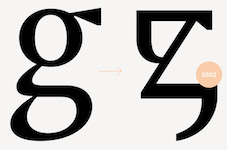 Nadezhda Polomoshnova was educated in classical art in Yaroslavl and at the Department of Graphic Design of the Polytechnic University in St. Petersburg, Russia. In 2016-2017, during the
Nadezhda Polomoshnova was educated in classical art in Yaroslavl and at the Department of Graphic Design of the Polytechnic University in St. Petersburg, Russia. In 2016-2017, during the  Illustrator and motion graphics artist in Moscow, who garduated from Moscow State Academic Art College (2011), and started studies at the Stroganov Moscow State Academy of Industrial and Applied Arts in 2011. During her studies in Moscow, Nadira Filatova created the Cyrillic typeface Berliitz (2014) and the 3d Latin display typeface Think of Jack (2014). In 2020, she designed the stunning
Illustrator and motion graphics artist in Moscow, who garduated from Moscow State Academic Art College (2011), and started studies at the Stroganov Moscow State Academy of Industrial and Applied Arts in 2011. During her studies in Moscow, Nadira Filatova created the Cyrillic typeface Berliitz (2014) and the 3d Latin display typeface Think of Jack (2014). In 2020, she designed the stunning 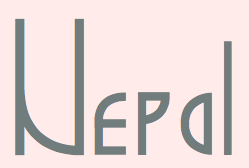 Moscow-based designer of the tweetware typefaces Kathnew (2015, hipster style),
Moscow-based designer of the tweetware typefaces Kathnew (2015, hipster style),  Moscow-based designer of the Latin / Cyrillic geometric sans typeface family Este (2016). [
Moscow-based designer of the Latin / Cyrillic geometric sans typeface family Este (2016). [ Graduate of Saint-Petersburg State Polytechnical University, and graphic designer in Saint Petersburg. She created the dingbat typeface
Graduate of Saint-Petersburg State Polytechnical University, and graphic designer in Saint Petersburg. She created the dingbat typeface  Natalya Vasilyeva (from Barnaul, Siberia) is a type designer, book designer and calligrapher, also engaged in editing, publishing, photography and computer design. She published these typefaces, which, unless explicitly mentioned, are all done at Paratype:
Natalya Vasilyeva (from Barnaul, Siberia) is a type designer, book designer and calligrapher, also engaged in editing, publishing, photography and computer design. She published these typefaces, which, unless explicitly mentioned, are all done at Paratype: 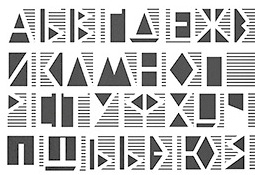 Saint Petersburg, Russia-based designer of the op-art Cyrillic typeface Polosa (2015) and of the experimental typeface Charms (2015), whichh was inspired by the work of Daniil Ivanovich Kharms. [
Saint Petersburg, Russia-based designer of the op-art Cyrillic typeface Polosa (2015) and of the experimental typeface Charms (2015), whichh was inspired by the work of Daniil Ivanovich Kharms. [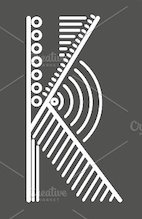 [
[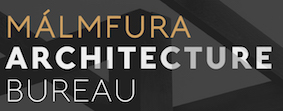 Peter or Pyotr Bushuev is the Pskov, Russia-based designer of the geometric typeface families
Peter or Pyotr Bushuev is the Pskov, Russia-based designer of the geometric typeface families  Alexander Alexandrowitsch Roth, or just Alexander Roth, was born in the Tajik Soviet Socialist Republic and immigrated from Dushanbe to Germany in 1993. He is a Berlin-based graphic designer who holds a bachelor degree in Media Production from the Hochschule Ostwestfalen-Lippe University of Applied Sciences. Alexander is one of the founders of
Alexander Alexandrowitsch Roth, or just Alexander Roth, was born in the Tajik Soviet Socialist Republic and immigrated from Dushanbe to Germany in 1993. He is a Berlin-based graphic designer who holds a bachelor degree in Media Production from the Hochschule Ostwestfalen-Lippe University of Applied Sciences. Alexander is one of the founders of  Russian designer of the crisp fashion mag sans font
Russian designer of the crisp fashion mag sans font  Cyrillic typeface competition with a December 31, 2012 deadline. Unlike many competitions in which participants and winners have to pay, this competition actually pays the winners---there is a 15,000 Euro prize fund for the top three. The top ten projects for 2012:
Cyrillic typeface competition with a December 31, 2012 deadline. Unlike many competitions in which participants and winners have to pay, this competition actually pays the winners---there is a 15,000 Euro prize fund for the top three. The top ten projects for 2012: 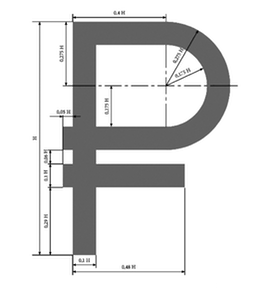 Discussion of the new ruble sign by Yuri Gordon. In Russian. The Russian ruble sign, approved in 2013, looks like a Latin P (the Russian R) with an extra horizontal bar underneath. Easy to remember. Good consistent design. [
Discussion of the new ruble sign by Yuri Gordon. In Russian. The Russian ruble sign, approved in 2013, looks like a Latin P (the Russian R) with an extra horizontal bar underneath. Easy to remember. Good consistent design. [ Kirov, Russia-based type and graphic designer. Creator in 2008 of
Kirov, Russia-based type and graphic designer. Creator in 2008 of 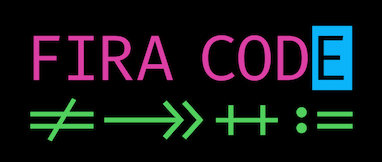 Moscow-based designer of the free monospaced programming font Fira Code (2015), which is based on Fira Mono (by Carrois and Edenspiekermann).
Moscow-based designer of the free monospaced programming font Fira Code (2015), which is based on Fira Mono (by Carrois and Edenspiekermann). 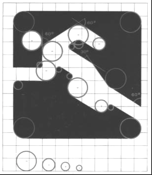 Russian graphic designer, who was selected to design the
Russian graphic designer, who was selected to design the 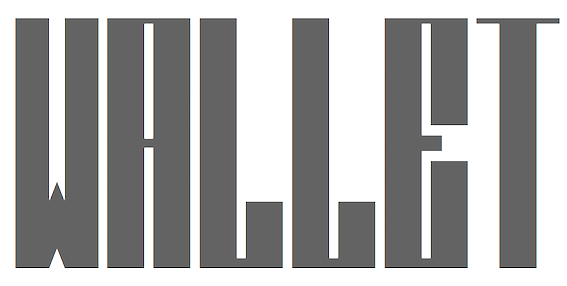 Goryachiy Klyuch, Russia-based creator of the unruly Rhyhorn (2016), the brush typeface Come Alive (2016), the
Goryachiy Klyuch, Russia-based creator of the unruly Rhyhorn (2016), the brush typeface Come Alive (2016), the 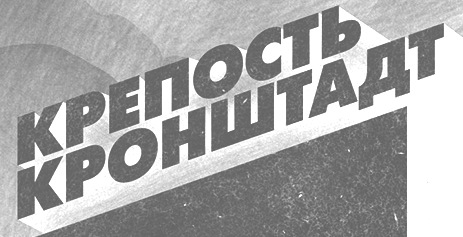 A joint venture by
A joint venture by 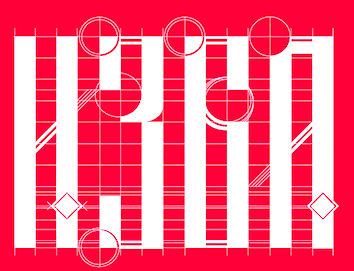 Graduate of Amur State University Of Humanities And Pedagogy, class of 2016, Komsomolsk-on-Amur, Russia-based designer of a wonderful Latin / Cyrillic typeface that is based on Old Slavonic writing (2016). [
Graduate of Amur State University Of Humanities And Pedagogy, class of 2016, Komsomolsk-on-Amur, Russia-based designer of a wonderful Latin / Cyrillic typeface that is based on Old Slavonic writing (2016). [ Russian creator (aka A55) at FontStruct in 2009 of Constructivist 1, Index Mono (based on the Russian code grids that was printed on envelopes to standardize the lettering---originally for numbers only), ABC, and Plain Square Mono (+Outline). [
Russian creator (aka A55) at FontStruct in 2009 of Constructivist 1, Index Mono (based on the Russian code grids that was printed on envelopes to standardize the lettering---originally for numbers only), ABC, and Plain Square Mono (+Outline). [ [
[ Saint Petersburg, Russia-based designer of the
Saint Petersburg, Russia-based designer of the 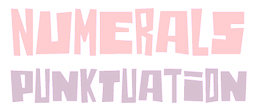 Aka Youhhou. Tbilisi, Georgia and now, Moscow-based Russian designer of Splinter (2016),
Aka Youhhou. Tbilisi, Georgia and now, Moscow-based Russian designer of Splinter (2016), 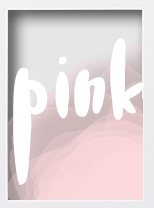 Olga Aleksandrova (Samara, Russia) designed the brush script typefaces Miss Agyness and Der Abend in 2016. Aka Holaholga. [
Olga Aleksandrova (Samara, Russia) designed the brush script typefaces Miss Agyness and Der Abend in 2016. Aka Holaholga. [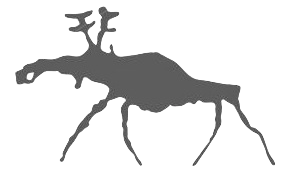 Graphic designer in Altay, Russia. She created Barbariska (2015, a curly script), Petroglif (2015) and Broad Brush Font in 2015. [
Graphic designer in Altay, Russia. She created Barbariska (2015, a curly script), Petroglif (2015) and Broad Brush Font in 2015. [ New York City (ex-Moscow)-based art director and graphic designer Olga Balina was born in 1988. She is associated with Flëve, a design agency in New York that was founded by Vit Abramov.
New York City (ex-Moscow)-based art director and graphic designer Olga Balina was born in 1988. She is associated with Flëve, a design agency in New York that was founded by Vit Abramov. 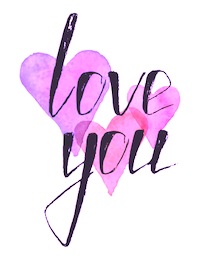 Krimean artist and illustrator based in Simferopol. Her work includes Narrow (2015, a hand-drawn Latin alphabet), Romantic Alphabet (2015), Ice Cream Alphabet (2015), Snacks and Drinks Doodles (2015), Floral Brushes (2015) and Hand-drawn Zen Letters (2015). [
Krimean artist and illustrator based in Simferopol. Her work includes Narrow (2015, a hand-drawn Latin alphabet), Romantic Alphabet (2015), Ice Cream Alphabet (2015), Snacks and Drinks Doodles (2015), Floral Brushes (2015) and Hand-drawn Zen Letters (2015). [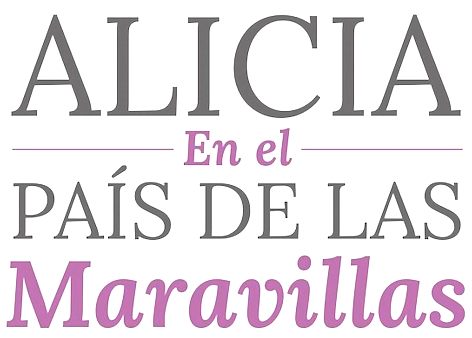 Designer of the Latin/Cyrillic very humanist
Designer of the Latin/Cyrillic very humanist  Sometimes it is just right---all the i's are dotted and all t's are crossed. Olga Kovalenko's Latin/Cyrillic plump sans typeface
Sometimes it is just right---all the i's are dotted and all t's are crossed. Olga Kovalenko's Latin/Cyrillic plump sans typeface 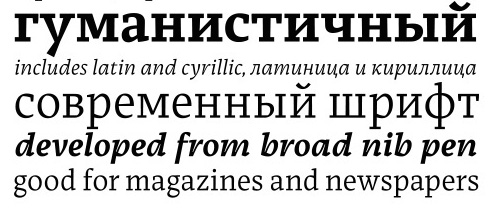 Moscow-based graphic and type designer who graduated from the design department of Moscow Power Engineering Institute in 2009 and completed a two-year Type&Typography course at British Higher School of Art and Design in 2014. Pankova does stone carving, delivers lectures, organizes master classes on type and chalk lettering. Pankova collaborates with CSTM Fonts, Moscow Design Studio, Bang! Bang! Agency, Izdatelsky Dom MeshcheryakovаPpublishingHhouse, Mann, Ivanov and Ferber publishing company (MIF).
Moscow-based graphic and type designer who graduated from the design department of Moscow Power Engineering Institute in 2009 and completed a two-year Type&Typography course at British Higher School of Art and Design in 2014. Pankova does stone carving, delivers lectures, organizes master classes on type and chalk lettering. Pankova collaborates with CSTM Fonts, Moscow Design Studio, Bang! Bang! Agency, Izdatelsky Dom MeshcheryakovаPpublishingHhouse, Mann, Ivanov and Ferber publishing company (MIF). 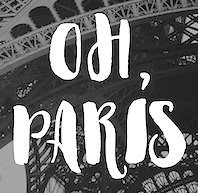 [
[
 Denis Serikov (OT Lab) is the Moscow-based Russian designer of DionisiiOTF (2003), the caps font
Denis Serikov (OT Lab) is the Moscow-based Russian designer of DionisiiOTF (2003), the caps font  Udmurtia, Izhevsk, Russia-based type foundry, est. 2018. Their typefaces are mostly in the comic book or cartoon genre. They include
Udmurtia, Izhevsk, Russia-based type foundry, est. 2018. Their typefaces are mostly in the comic book or cartoon genre. They include  [
[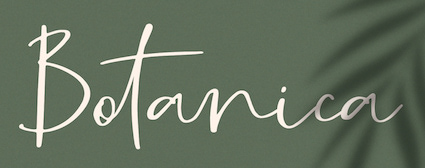 Art director in Moscow who published these script typefaces in 2018: Planty, Jasmine, Marmalade (brush), Sophie (a signature font). In 2019, he designed Justices, Better Signature, Hey Babes, Dunes, Seville Signature, Mystery, Charleston, Saturday, Camellia, Botanica, Little Rock (monoline script), Darling, Sophia (a great signature script), Pacific and Pretty Peach. [
Art director in Moscow who published these script typefaces in 2018: Planty, Jasmine, Marmalade (brush), Sophie (a signature font). In 2019, he designed Justices, Better Signature, Hey Babes, Dunes, Seville Signature, Mystery, Charleston, Saturday, Camellia, Botanica, Little Rock (monoline script), Darling, Sophia (a great signature script), Pacific and Pretty Peach. [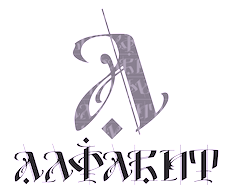 Art director and calligrapher based in Moscow. In 2017, he published the wonderfully dramatic
Art director and calligrapher based in Moscow. In 2017, he published the wonderfully dramatic 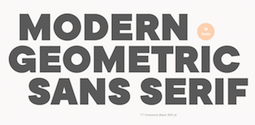 Pavel Emelyanov (b. 1982, Kandalaksha, Russia) is a graphic designer, art director and web designer based in Murmansk. He is part of Ivan Gladkikh's typeType team.
Pavel Emelyanov (b. 1982, Kandalaksha, Russia) is a graphic designer, art director and web designer based in Murmansk. He is part of Ivan Gladkikh's typeType team.  [
[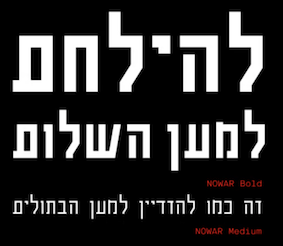 Illustrator, graphic and type designer, and 3d modeler, b. 2001 in Moscow. He graduated from MGHPA (Faculty of Graphic Design of the Stroganov Academy) in 2018.
Illustrator, graphic and type designer, and 3d modeler, b. 2001 in Moscow. He graduated from MGHPA (Faculty of Graphic Design of the Stroganov Academy) in 2018. 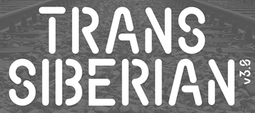 Omsk, Russia-based designer of the rounded sans stencil font Trans Siberian (2015; Latin and Cyrillic). [
Omsk, Russia-based designer of the rounded sans stencil font Trans Siberian (2015; Latin and Cyrillic). [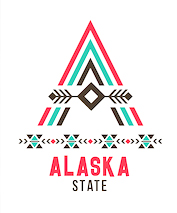 Or Ksenia Kuznetsova. Moscow-based designer of the tribal patterned color typeface
Or Ksenia Kuznetsova. Moscow-based designer of the tribal patterned color typeface  Russian graphic and type designer. His typefaces are mostly experimental and explore interesting paths: PF Square One (2009, +
Russian graphic and type designer. His typefaces are mostly experimental and explore interesting paths: PF Square One (2009, +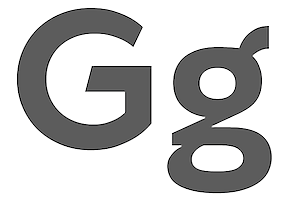 Or Phill Nurullin. Designer from Saint Petersburg, Russia, specializing in type design, typography and web design, active at TypeType. His typefaces include
Or Phill Nurullin. Designer from Saint Petersburg, Russia, specializing in type design, typography and web design, active at TypeType. His typefaces include 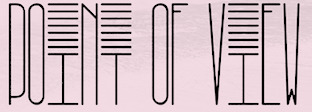 Sochi and/or Moscow, Russia-based designer of Stuva (2018: futuristic), Geometric Pattern (2016), the fine poster typeface Tall Stripes (2016, for Latin) and the colored EPS format deco typeface Five Decor (2016). [
Sochi and/or Moscow, Russia-based designer of Stuva (2018: futuristic), Geometric Pattern (2016), the fine poster typeface Tall Stripes (2016, for Latin) and the colored EPS format deco typeface Five Decor (2016). [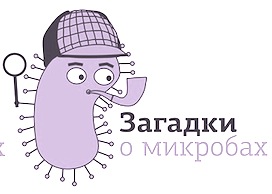 Moscow-based designer of the
Moscow-based designer of the  Letterer, open source supporter, and visual designer from Russia (b. 1988) who is based in San Francisco. Graduate of BHSAD (the British Higher School of Art and Design) in Moscow, class of 2013. She founded Popkern. Her typefaces:
Letterer, open source supporter, and visual designer from Russia (b. 1988) who is based in San Francisco. Graduate of BHSAD (the British Higher School of Art and Design) in Moscow, class of 2013. She founded Popkern. Her typefaces: 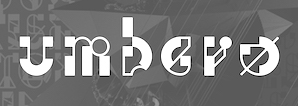 [
[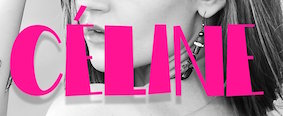 Veronika Golovko or Veronika Qilli (Qilli Design, Novorossiysk, Russian Federation) specializes in scrapbook fonts. She designed the brush typefaces Michelly (2015) and Jemmer (2015), and the hand-painted font Bellious (2015). In 2016, she designed Gentle Air, Clouds Caprice, Drawing A Life, Sorcery (a curly vampire script), Magic Snow (brushed), Joy In Night (Halloween font), Autumn Madness (perhaps for children's books), Belles Script, and the brush typefaces Adeline and Melony Script.
Veronika Golovko or Veronika Qilli (Qilli Design, Novorossiysk, Russian Federation) specializes in scrapbook fonts. She designed the brush typefaces Michelly (2015) and Jemmer (2015), and the hand-painted font Bellious (2015). In 2016, she designed Gentle Air, Clouds Caprice, Drawing A Life, Sorcery (a curly vampire script), Magic Snow (brushed), Joy In Night (Halloween font), Autumn Madness (perhaps for children's books), Belles Script, and the brush typefaces Adeline and Melony Script.  Tommy James or Arthur Quathron or Arthur Ilyin, claiming to be in the UK, b. 1990. MyFonts mentions that Arthur Ilyin is based in Russia. His type collection consists mainly of calligraphic or semi-calligraphic scripts. As Tommy James, he ran TJ Creative and designed these script typefaces in 2018: Ultralife Sansa, The Forest Factory, Sallie, Beginning, Dammiano, Embrain, Unforgiven, South Pimllin, Sloothine, Zeatoner, Autumn Mood, Roottenberg, Snallie Soul, Nindalla, Quick Cloud, Glimpse, Fall of the Ghost, Exella, Lamhawk, Rattun, The Shellra, Cinthia Font, The Quick Brown, The Yellon, Elevation, Morale, The Breat, So Fresh, Vander, Belashic, Snaus, Wanda, Weendovre, Avantyre, Gamodora, Bring, Rakhino, Kahendra, Some One, Horizon, The Monse, Across, The Nicco, The Pamele. Lovely Barthy was done at TJ Creative in 2019.
Tommy James or Arthur Quathron or Arthur Ilyin, claiming to be in the UK, b. 1990. MyFonts mentions that Arthur Ilyin is based in Russia. His type collection consists mainly of calligraphic or semi-calligraphic scripts. As Tommy James, he ran TJ Creative and designed these script typefaces in 2018: Ultralife Sansa, The Forest Factory, Sallie, Beginning, Dammiano, Embrain, Unforgiven, South Pimllin, Sloothine, Zeatoner, Autumn Mood, Roottenberg, Snallie Soul, Nindalla, Quick Cloud, Glimpse, Fall of the Ghost, Exella, Lamhawk, Rattun, The Shellra, Cinthia Font, The Quick Brown, The Yellon, Elevation, Morale, The Breat, So Fresh, Vander, Belashic, Snaus, Wanda, Weendovre, Avantyre, Gamodora, Bring, Rakhino, Kahendra, Some One, Horizon, The Monse, Across, The Nicco, The Pamele. Lovely Barthy was done at TJ Creative in 2019.  Vladivostok, Russia-based designer of
Vladivostok, Russia-based designer of 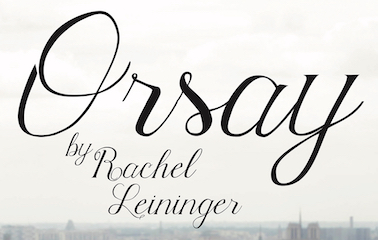 Rachel Raye Leininger grew up in Russia, and lives in Kansas City, KS. In 2017, she designed the calligraphic typeface Orsay. [
Rachel Raye Leininger grew up in Russia, and lives in Kansas City, KS. In 2017, she designed the calligraphic typeface Orsay. [ [
[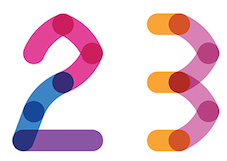 Omsk, Russia-based designer of an experimental Latin typeface created by superimposing circles (2015), and Point (2015). She also created a set of icons and several color fonts in 2015, including the
Omsk, Russia-based designer of an experimental Latin typeface created by superimposing circles (2015), and Point (2015). She also created a set of icons and several color fonts in 2015, including the 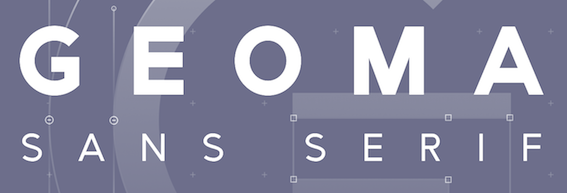 Kazan, Russia-based designer of Geoma Sans (2019). [
Kazan, Russia-based designer of Geoma Sans (2019). [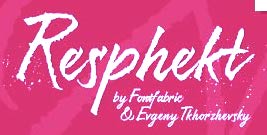 [
[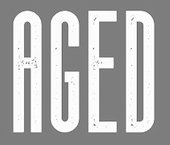 Saratov, Russia-based creator of Kronshtadt (2020: an almost monolinear titling sans), Roundhouse (2018), Thunderbrother (2018: an old vintage logotype font), The Harmony (2018: weathered condensed sans), Searocks (2018:
Saratov, Russia-based creator of Kronshtadt (2020: an almost monolinear titling sans), Roundhouse (2018), Thunderbrother (2018: an old vintage logotype font), The Harmony (2018: weathered condensed sans), Searocks (2018:  [
[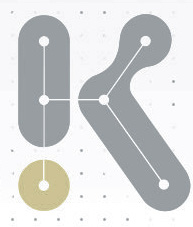 Moscow-based designer of the decorative inline (Cyrillic) typeface Amperiya Deko (2018) for IQ Goods.
Moscow-based designer of the decorative inline (Cyrillic) typeface Amperiya Deko (2018) for IQ Goods.  Designer of
Designer of 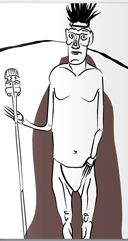 Graphic designer in St. Petersburg, Russia. He made the counterless geometric fat typeface
Graphic designer in St. Petersburg, Russia. He made the counterless geometric fat typeface 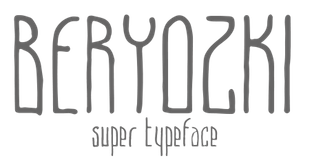 Misha Panfilov (Russian Fonts, St. Petersburg, Russia) created the
Misha Panfilov (Russian Fonts, St. Petersburg, Russia) created the 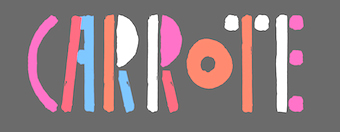 Graphic designer in Moscow who made the
Graphic designer in Moscow who made the 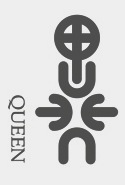 Samara, Russia-based designer of several experimental typefaces, mostly, but not exclusively from 2009 until 2013. These include
Samara, Russia-based designer of several experimental typefaces, mostly, but not exclusively from 2009 until 2013. These include 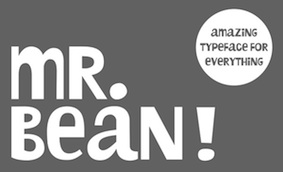 Moscow-based designer of the comic book Latin typeface
Moscow-based designer of the comic book Latin typeface  Born in Moscow in 1963. A graduate of Moscow Institute of Physics and Technology in 1985, he became a TeX specialist. Since 2003, he creates his own typefaces. Gaithersburg, MD-based designer of a
Born in Moscow in 1963. A graduate of Moscow Institute of Physics and Technology in 1985, he became a TeX specialist. Since 2003, he creates his own typefaces. Gaithersburg, MD-based designer of a  Sergey Vasil'evich Tchehonine (Chekhonin) (b. 1878, Valdayka, Novgorod province, d. 1936, Loerrach, Germany) was a Russian graphic artist, portrait miniaturist, ceramicist, and illustrator, who belonged to the World of Art (Mir Iskusstva) group in early 20th century Russia. He was a master vignette, logo and illuminated letter drawer. Wikipedia: In 1928, Chekhonin left the Soviet Union and emigrated to Paris. There he worked in the field of artistic industry and stage set design. He also lived in Germany, worked in theaters and engaged himself in painting porcelain and working on book design, preferring them to decorative multi-color printing painting on fabrics.
Sergey Vasil'evich Tchehonine (Chekhonin) (b. 1878, Valdayka, Novgorod province, d. 1936, Loerrach, Germany) was a Russian graphic artist, portrait miniaturist, ceramicist, and illustrator, who belonged to the World of Art (Mir Iskusstva) group in early 20th century Russia. He was a master vignette, logo and illuminated letter drawer. Wikipedia: In 1928, Chekhonin left the Soviet Union and emigrated to Paris. There he worked in the field of artistic industry and stage set design. He also lived in Germany, worked in theaters and engaged himself in painting porcelain and working on book design, preferring them to decorative multi-color printing painting on fabrics.  [
[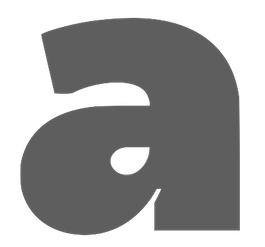 Russian motion and 3D designer based in Nizhny Tagil. In 2017, Sergei graduated from the six month font design course at
Russian motion and 3D designer based in Nizhny Tagil. In 2017, Sergei graduated from the six month font design course at 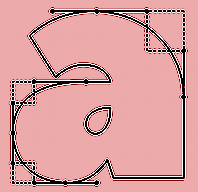 In 2016, Sergey Ryadovoy (Yekaterinburg, Russia) and Jovanny Lemonad co-designed the
In 2016, Sergey Ryadovoy (Yekaterinburg, Russia) and Jovanny Lemonad co-designed the 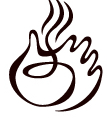 Moscow-based graphic and print designer, whose lettering in his logos is stunning.
Moscow-based graphic and print designer, whose lettering in his logos is stunning. 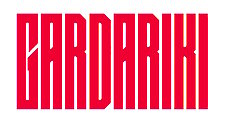 Saint Petersburg, Russia-based designer who studied at studied design courses at: Michigan State University and at California Institute of the Arts. In 2022, he released
Saint Petersburg, Russia-based designer who studied at studied design courses at: Michigan State University and at California Institute of the Arts. In 2022, he released  Russian graphic designer, graffiti writer, and lettering artist, b. 1980, USSR.
Russian graphic designer, graffiti writer, and lettering artist, b. 1980, USSR.  At ATFI (Moscow) and later Shriftovik Foundry (also in Moscow), Tikhon Reztcov designed the
At ATFI (Moscow) and later Shriftovik Foundry (also in Moscow), Tikhon Reztcov designed the 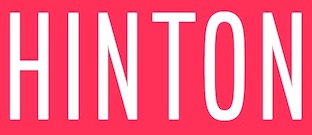 Dima Pole (Slovolitni de Grande Tartaria, Yalta, Russia) is a Russian type designer [as a joke, he claimed on Behance to be from Russellstown, Ireland and on Hellofont he said that he was in Berjozovskii, Iceland].
Dima Pole (Slovolitni de Grande Tartaria, Yalta, Russia) is a Russian type designer [as a joke, he claimed on Behance to be from Russellstown, Ireland and on Hellofont he said that he was in Berjozovskii, Iceland]. 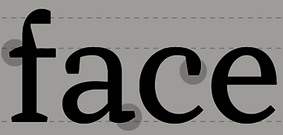 Sofia (Saint Petersburg, Russia) has a Masters degree in information technology. As a student at
Sofia (Saint Petersburg, Russia) has a Masters degree in information technology. As a student at 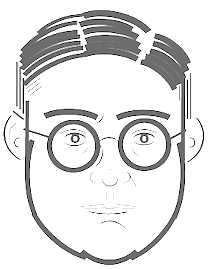 Soviet book and type designer, b. Tiflis, 1903, d. Moscow, 1969, best known for his constructivist work. His typefaces include
Soviet book and type designer, b. Tiflis, 1903, d. Moscow, 1969, best known for his constructivist work. His typefaces include  SPSL is a Russian foundry, offering mostly fonts made by Igor Nastenko. These include Brush (1990, based E. Shaar and S. Hess's Flash No. 373),
SPSL is a Russian foundry, offering mostly fonts made by Igor Nastenko. These include Brush (1990, based E. Shaar and S. Hess's Flash No. 373), 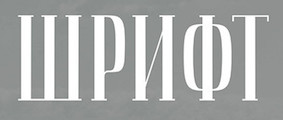 Saint Petersburg, Russia-based designer of the Latin / Cyrillic calligraphic typeface Antarctic (2018) and the Latin / Cyrillic skyline typeface Journalism (2016). [
Saint Petersburg, Russia-based designer of the Latin / Cyrillic calligraphic typeface Antarctic (2018) and the Latin / Cyrillic skyline typeface Journalism (2016). [ Roman Postovoy is a web and graphic designer based in Dedovsk, Russia. His typefaces mostly return to the Bauhaus period and the era of Swiss typography. In 2020, he published the 5-style wide geometric headline sans
Roman Postovoy is a web and graphic designer based in Dedovsk, Russia. His typefaces mostly return to the Bauhaus period and the era of Swiss typography. In 2020, he published the 5-style wide geometric headline sans  As a student in the British Higher School of art and Design, under the leadership of Ilya Ruderman, Sveta Sebyakina designed
As a student in the British Higher School of art and Design, under the leadership of Ilya Ruderman, Sveta Sebyakina designed  Russian graphic designer. She made the soothing curly informal Cyrillic typeface
Russian graphic designer. She made the soothing curly informal Cyrillic typeface 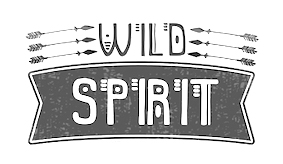 Siberian designer of the handcrafted typefaces Jungle (2016, African-themed font set), Elephant (2016), Elephant Lines (2016) and Tribal Elephant (2016). Aka Swet TS. [
Siberian designer of the handcrafted typefaces Jungle (2016, African-themed font set), Elephant (2016), Elephant Lines (2016) and Tribal Elephant (2016). Aka Swet TS. [ Russian type and graphic designer at Polygraphmash. She made the Cyrillic typeface
Russian type and graphic designer at Polygraphmash. She made the Cyrillic typeface 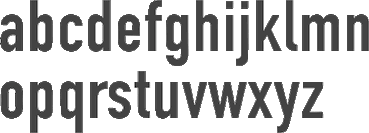
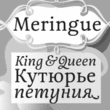 Aka Taya. Russian designer at Art Lebedev Studio of these typefaces:
Aka Taya. Russian designer at Art Lebedev Studio of these typefaces:  Ekaterinburg, Russia-based lettering artist. Designer, with Ivan Gladkikh (Jovanny Lemonad), of the
Ekaterinburg, Russia-based lettering artist. Designer, with Ivan Gladkikh (Jovanny Lemonad), of the 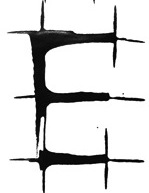 Moscow, Russia-based designer of the hand-painted Cyrillic typeface Handmade Font (2016). [
Moscow, Russia-based designer of the hand-painted Cyrillic typeface Handmade Font (2016). [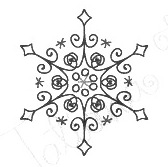 Tatiana Kostysheva (Tatiana Kost Design, Russia) designed a hand-sketched ampersand set and a collection of snowflakes in 2015. She also designed the watercolor splash font simply called Ink (2015). [
Tatiana Kostysheva (Tatiana Kost Design, Russia) designed a hand-sketched ampersand set and a collection of snowflakes in 2015. She also designed the watercolor splash font simply called Ink (2015). [ Russian type and web designer associated with ParaGraph. Since 1999, she is a head of Taitl Design (USA). She designed the Cyrillic version of
Russian type and web designer associated with ParaGraph. Since 1999, she is a head of Taitl Design (USA). She designed the Cyrillic version of  Moscow, and before that, St. Petersburg, Russia-based foundry, first called Abstrkt, and later extended to The Temporary State. All fonts are by
Moscow, and before that, St. Petersburg, Russia-based foundry, first called Abstrkt, and later extended to The Temporary State. All fonts are by 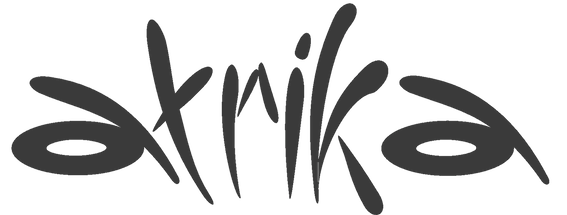 Russian designer of some great illustrations and lettering for Cafe Bar Afrika in 2014. [
Russian designer of some great illustrations and lettering for Cafe Bar Afrika in 2014. [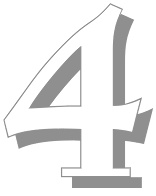 Alexander Tarbeev is Russian type designer, graphic artist and tutor. He graduated from Moscow Electrotechnical Institute of Communication in 1979 and Moscow Polygraphic Institute in 1988, and worke in the type department of NII Polygrafmash (Institute for Scientific Research of Printing Machinery, Moscow). Between 1989 and 1997, Tarbeev worked as type designer at ParaGraph. He set up the type studio TFaces in Moscow.
Alexander Tarbeev is Russian type designer, graphic artist and tutor. He graduated from Moscow Electrotechnical Institute of Communication in 1979 and Moscow Polygraphic Institute in 1988, and worke in the type department of NII Polygrafmash (Institute for Scientific Research of Printing Machinery, Moscow). Between 1989 and 1997, Tarbeev worked as type designer at ParaGraph. He set up the type studio TFaces in Moscow.  [
[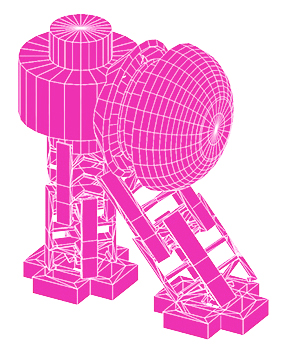 Inspired by the work of Vladimir Shukhov and the period of industrialization in the Soviet Union, Timofei Dekalo (Marafont, Moscow) created several decorative caps typefaces in 2014. He created quite a few other experimental geometric or multicolored fonts as well.
Inspired by the work of Vladimir Shukhov and the period of industrialization in the Soviet Union, Timofei Dekalo (Marafont, Moscow) created several decorative caps typefaces in 2014. He created quite a few other experimental geometric or multicolored fonts as well. 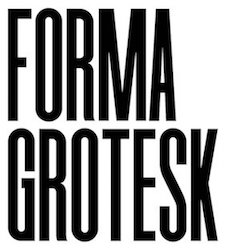 Novosibirsk, Russia-based graphic designer who created G Display (2017, a
Novosibirsk, Russia-based graphic designer who created G Display (2017, a  Ramiz Guseynov was born in Russia and educated as an architect and graphic designer. After moving to the USA in 1991, where he worked as a graphic designer, Ramiz Guseynov became a part-time type designer who published his work at
Ramiz Guseynov was born in Russia and educated as an architect and graphic designer. After moving to the USA in 1991, where he worked as a graphic designer, Ramiz Guseynov became a part-time type designer who published his work at 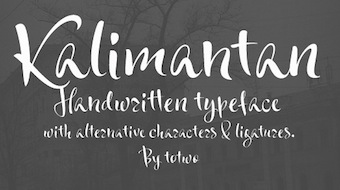 Yana Kutyina and Andrey Belonogov together form totwo (or Atelier Otadoya), a studio in Moscow. Their typefaces include the award-winning calligraphic Latin / Cyrillic font
Yana Kutyina and Andrey Belonogov together form totwo (or Atelier Otadoya), a studio in Moscow. Their typefaces include the award-winning calligraphic Latin / Cyrillic font  TripleHely is the personal type foundry of Olga Ktitorova, a graphic designer from Moscow, Russia. After graduation at Moscow Institute of Contemporary Arts, she worked as an editorial designer.
TripleHely is the personal type foundry of Olga Ktitorova, a graphic designer from Moscow, Russia. After graduation at Moscow Institute of Contemporary Arts, she worked as an editorial designer. 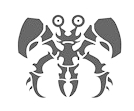 Russian creator of the
Russian creator of the  Ufa, Russia-based creator of Shihan (2015), which is a free squarish Latin / Cyrillic typeface that was inspired by Bashkirian geometrical ornaments. He also designed the tweetware Latin / Cyrillic slab serif typeface Ikra Slab (2015), and the tweetware constructivist Measure (2015, with special support for Bashkir).
Ufa, Russia-based creator of Shihan (2015), which is a free squarish Latin / Cyrillic typeface that was inspired by Bashkirian geometrical ornaments. He also designed the tweetware Latin / Cyrillic slab serif typeface Ikra Slab (2015), and the tweetware constructivist Measure (2015, with special support for Bashkir).  A major project in 2019 by the TypeType team in Saint Petersburg, Russia, meant to provide a sans typeface family that can be broadly used in modern media. There are four monospaced styles, and 20 other styles, with the goal of providing competition, in their own words, to Arial, Roboto, and San Francisco Text. While this bar is quite low, the Type Type team of nine members, listed below, did an extraordinary technical job in terms of hinting and opentype features. The initial brief:
A major project in 2019 by the TypeType team in Saint Petersburg, Russia, meant to provide a sans typeface family that can be broadly used in modern media. There are four monospaced styles, and 20 other styles, with the goal of providing competition, in their own words, to Arial, Roboto, and San Francisco Text. While this bar is quite low, the Type Type team of nine members, listed below, did an extraordinary technical job in terms of hinting and opentype features. The initial brief:  Type Market is a Russian type foundry. Alexey Kustov made most fonts at Type Market (Moscow) between 1993-1995. Many of these are cyrillizations of Western typefaces: Aksent (futuristic, based on a design by Yevgeny Dobrovinsky), Bebit (similar to Baby Teeth by Milton Glaser, Photo Lettering),
Type Market is a Russian type foundry. Alexey Kustov made most fonts at Type Market (Moscow) between 1993-1995. Many of these are cyrillizations of Western typefaces: Aksent (futuristic, based on a design by Yevgeny Dobrovinsky), Bebit (similar to Baby Teeth by Milton Glaser, Photo Lettering), 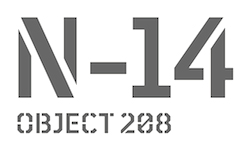 Russian type designer who was part of the
Russian type designer who was part of the 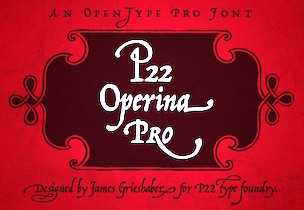 Russian type competition in March 2005. The jury consisted of Yuri Gordon, Vladimir Efimov, Dimitri Kirsanov, Tagir Safayev and Nikolay Dubina. The winners:
Russian type competition in March 2005. The jury consisted of Yuri Gordon, Vladimir Efimov, Dimitri Kirsanov, Tagir Safayev and Nikolay Dubina. The winners:  Prolific
Prolific 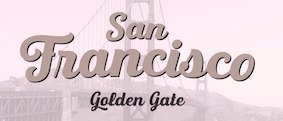 Uniontype is a Russian type foundry in Perm, est. 2016. Roman Avdiushkin is a Russian type designer, b. 1989. In 2016, he created the classic Americana signage typeface
Uniontype is a Russian type foundry in Perm, est. 2016. Roman Avdiushkin is a Russian type designer, b. 1989. In 2016, he created the classic Americana signage typeface 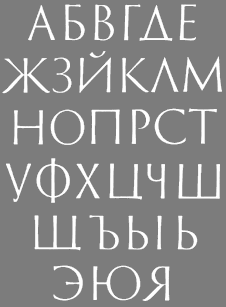 Moscow-based book designer and type designer, b. 1909 (Odessa), d. 1994 (Moscow). At Paratype, one can buy his font Lazurski (1962), of which many freeware versions exist as well. He worked for the state typographic institute Polygraphmash, where he made numerous typefaces such as Ribbon Antique (1965). A Lazurski Award has been established in his honor, and several typefaces called Lazurski circulate in the type ether. An example includes
Moscow-based book designer and type designer, b. 1909 (Odessa), d. 1994 (Moscow). At Paratype, one can buy his font Lazurski (1962), of which many freeware versions exist as well. He worked for the state typographic institute Polygraphmash, where he made numerous typefaces such as Ribbon Antique (1965). A Lazurski Award has been established in his honor, and several typefaces called Lazurski circulate in the type ether. An example includes 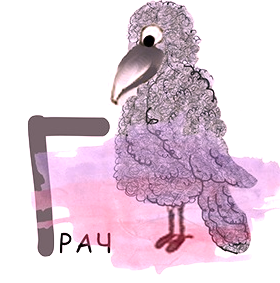 Graphic and motion designer in Moscow, who created New Animal Alphabet in 2015.
Graphic and motion designer in Moscow, who created New Animal Alphabet in 2015.  Russian designer of
Russian designer of 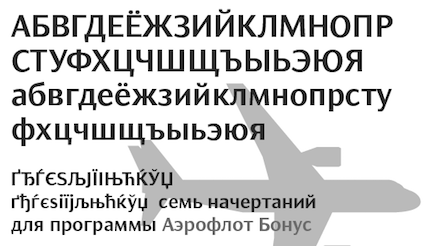 [
[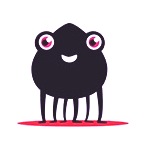 Moscow-based designer who created the display type Linear (2015) in vector format. He also drew a great set of Monsters in vector format. Icon sets by him include 1000 Icons, Churches, Christmas, Flat Cars, Thin Line Icons.
Moscow-based designer who created the display type Linear (2015) in vector format. He also drew a great set of Monsters in vector format. Icon sets by him include 1000 Icons, Churches, Christmas, Flat Cars, Thin Line Icons.  [
[ Or Vladimir Ilnitzky. Vladimir Ilnitskiy (Value Studio, Murmansk, Russia) created several typefaces. These include Matryoshka (at
Or Vladimir Ilnitzky. Vladimir Ilnitskiy (Value Studio, Murmansk, Russia) created several typefaces. These include Matryoshka (at  Moscow-based graphic designer. In 2016, he created a connect-the-dots typeface. All links to him or his font seem to have died. [
Moscow-based graphic designer. In 2016, he created a connect-the-dots typeface. All links to him or his font seem to have died. [ Vasily Biryukov graduated from Stroganov University of Industrial and Applied Arts in Moscow as graphic designer specializing mostly in periodicals. Russian designer of Chift, a typeface that won an award at
Vasily Biryukov graduated from Stroganov University of Industrial and Applied Arts in Moscow as graphic designer specializing mostly in periodicals. Russian designer of Chift, a typeface that won an award at 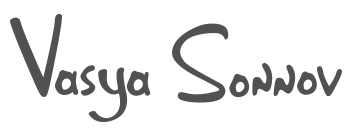 Moscow-based creator of the free oversmoothed typeface Haiko (2014, a circle-based typeface). It is advertised as free, but I can not find any download buttons.
Moscow-based creator of the free oversmoothed typeface Haiko (2014, a circle-based typeface). It is advertised as free, but I can not find any download buttons. 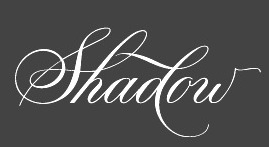 Moscow-based illustrator specializing in vintage style, calligraphy, ornate crests and emblems. In 2014, Vates Design created the commercial copperplate script typeface Bodega Script and the engraved currency font Bold Price. In 2015, Vates added the copperplate gothic typeface Barracuda Display and the curly Austen Display. In 2016, they published the calligraphic chancery style November Script. Fonts from 2017 include Achievement (a brush script) and Black Spot (vintage style).
Moscow-based illustrator specializing in vintage style, calligraphy, ornate crests and emblems. In 2014, Vates Design created the commercial copperplate script typeface Bodega Script and the engraved currency font Bold Price. In 2015, Vates added the copperplate gothic typeface Barracuda Display and the curly Austen Display. In 2016, they published the calligraphic chancery style November Script. Fonts from 2017 include Achievement (a brush script) and Black Spot (vintage style). 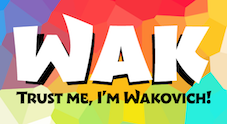 Russian co-designer, with Aleksander Lubovenko at Paratype, of
Russian co-designer, with Aleksander Lubovenko at Paratype, of 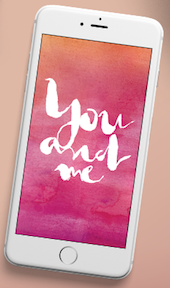 Aka P. Rudakov and Pasha Korzhenko, and operating as Vintage Voyage Design. Perm, Russia-based designer of the vintage handcrafted typefaces West End (2015, spurred Western typeface family), Winter Holidays (2015), The Sugar Cane (2015, eroded signage script), Montana (2015), Canyons (2015), Forest Tramp (2015), Heart of Gold (2015, a think inky brush), La Fa Salt (2015, a connected monoline script), Robinson (2015, handcrafted), Rise (2015, rough brush), Stout (2015, +Stout Roughen), Jack's Guitar (2015) and Bough (2015).
Aka P. Rudakov and Pasha Korzhenko, and operating as Vintage Voyage Design. Perm, Russia-based designer of the vintage handcrafted typefaces West End (2015, spurred Western typeface family), Winter Holidays (2015), The Sugar Cane (2015, eroded signage script), Montana (2015), Canyons (2015), Forest Tramp (2015), Heart of Gold (2015, a think inky brush), La Fa Salt (2015, a connected monoline script), Robinson (2015, handcrafted), Rise (2015, rough brush), Stout (2015, +Stout Roughen), Jack's Guitar (2015) and Bough (2015).  Moscow-based designer of Latin and Cyrillic, or purely Cyrillic, fonts. There is a list of Cyrillizations of existing fonts: Atreyu, LHF Bounce Script, Modeka, Turnpike, PL Barnum, Good Times Regular, Playful JNL (Jeff Levine), Armageda, Showcard Gothic, SF Comic Script, Jolly Good Sans Basic, Enemy (Shaivanalla Perumal), House Slant (House Industries), House Brush (House Industries), Komika Axis (Apostrophic Labs), Snickers (Mark Simonson), Grand Hotel (AOETI), Wisdom Script (Lost Type), Mission Script (Lost Type), Cylburn (Lost Type), House Script (House Industries), House Holiday Gothic (House Industries), LHF Branding Iron (Letterheadfonts), LHF Fancy Full (Letterheadfonts), LHF Firehouse (Letterheadfonts), American West (FontMesa), Champ Ultra (BA Graphics), PL Davison Americana (Monotype), Blenny (Dalton Maag), Bigfish (Floodfonts), Same Same, But Different (Hanoded), Enemy (Lost Type), Special Forces (Typodermic), Serpentine (URW++), Ritts Cursive (Eurotypo), Voga Medium (CD Type), Hermes 1943 (Lukas Krakora), Brand (Lian Types), Tasty (Hubert Jocham), Bullet Regular (House Industries), Filmotype Athens (Filmotype), Signika (Anna Giedrys), Art Department (Jeff Levine), Borg (David Sum, aka titusprod).
Moscow-based designer of Latin and Cyrillic, or purely Cyrillic, fonts. There is a list of Cyrillizations of existing fonts: Atreyu, LHF Bounce Script, Modeka, Turnpike, PL Barnum, Good Times Regular, Playful JNL (Jeff Levine), Armageda, Showcard Gothic, SF Comic Script, Jolly Good Sans Basic, Enemy (Shaivanalla Perumal), House Slant (House Industries), House Brush (House Industries), Komika Axis (Apostrophic Labs), Snickers (Mark Simonson), Grand Hotel (AOETI), Wisdom Script (Lost Type), Mission Script (Lost Type), Cylburn (Lost Type), House Script (House Industries), House Holiday Gothic (House Industries), LHF Branding Iron (Letterheadfonts), LHF Fancy Full (Letterheadfonts), LHF Firehouse (Letterheadfonts), American West (FontMesa), Champ Ultra (BA Graphics), PL Davison Americana (Monotype), Blenny (Dalton Maag), Bigfish (Floodfonts), Same Same, But Different (Hanoded), Enemy (Lost Type), Special Forces (Typodermic), Serpentine (URW++), Ritts Cursive (Eurotypo), Voga Medium (CD Type), Hermes 1943 (Lukas Krakora), Brand (Lian Types), Tasty (Hubert Jocham), Bullet Regular (House Industries), Filmotype Athens (Filmotype), Signika (Anna Giedrys), Art Department (Jeff Levine), Borg (David Sum, aka titusprod). 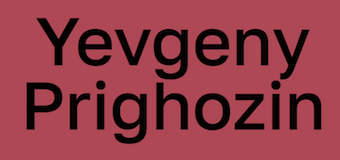 Designer at ParaType of the free 4-weight typeface family
Designer at ParaType of the free 4-weight typeface family 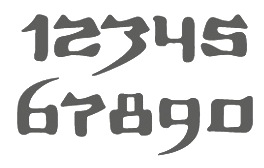 Designer in Kirov, Russia, who imitated the old Slavic alphabet in his Cyrillic/latin creation generically named
Designer in Kirov, Russia, who imitated the old Slavic alphabet in his Cyrillic/latin creation generically named 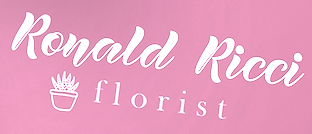 Russian designer of the creamy script typeface Lanikai (2018) and the brush script typeface Cilantro (2018). [
Russian designer of the creamy script typeface Lanikai (2018) and the brush script typeface Cilantro (2018). [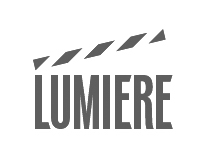
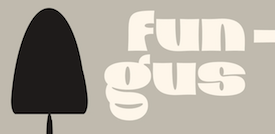 [
[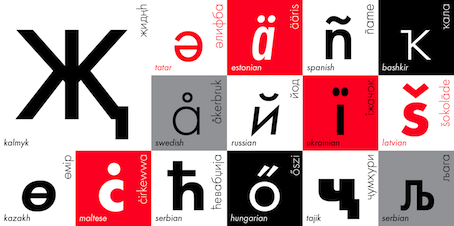 Vladimir Yefimov (b. Moscow, 1949, d. Moscow, 2012) was the art director and a co-founder of ParaType, Ltd., Moscow (since 1992; before that, starting in 1988, it was called ParaGraph, and he had been staff designer there since its inception). He lectured on type design at the Stroganov Higher School of Arts and Crafts, Moscow (1995-96) and the Higher Academical School of Graphic Design, Moscow (1997-98). He worked at the type department of NPO Polygraphmas (1973-1991). He is the designer of many Cyrillic typefaces, and several Indian, Greek, and Hebrew typefaces, and author on typography and type design.
Vladimir Yefimov (b. Moscow, 1949, d. Moscow, 2012) was the art director and a co-founder of ParaType, Ltd., Moscow (since 1992; before that, starting in 1988, it was called ParaGraph, and he had been staff designer there since its inception). He lectured on type design at the Stroganov Higher School of Arts and Crafts, Moscow (1995-96) and the Higher Academical School of Graphic Design, Moscow (1997-98). He worked at the type department of NPO Polygraphmas (1973-1991). He is the designer of many Cyrillic typefaces, and several Indian, Greek, and Hebrew typefaces, and author on typography and type design. 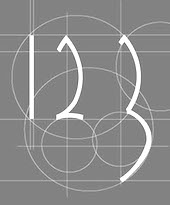 Vladimir Vorobiev (Pushkino, Russia) designed the gothic arch typeface Helma in 2015. [
Vladimir Vorobiev (Pushkino, Russia) designed the gothic arch typeface Helma in 2015. [ Design studio in Toronto. Run by
Design studio in Toronto. Run by 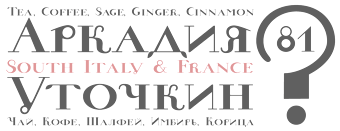 [
[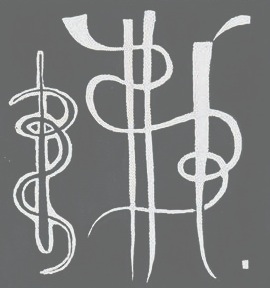 Russian painter and art theorist, 1866-1944. He taught at the Bauhaus school of art and architecture from 1922 until the Nazis closed it in 1933. After that, he moved to France, where he died.
Russian painter and art theorist, 1866-1944. He taught at the Bauhaus school of art and architecture from 1922 until the Nazis closed it in 1933. After that, he moved to France, where he died. 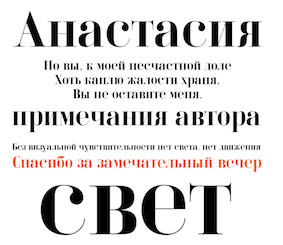 Moscow-based designer of the Latin / Cyrillic didone typeface Botntan (2019). [
Moscow-based designer of the Latin / Cyrillic didone typeface Botntan (2019). [ Moscow-based designer of Nerpa (2014, with Andrey Belogonov),
Moscow-based designer of Nerpa (2014, with Andrey Belogonov), 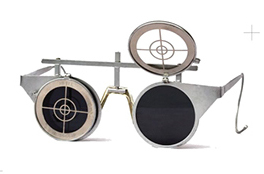 Saint Petersburg, Russia-based designer of the experimental typefaces Medik (2016, inspired by glasses) and Mons (2016, circle-themed). [
Saint Petersburg, Russia-based designer of the experimental typefaces Medik (2016, inspired by glasses) and Mons (2016, circle-themed). [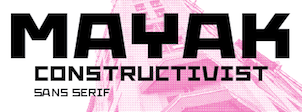 Russian type designer based in Moscow. In 2017, she published the (great!) constructivist typeface family
Russian type designer based in Moscow. In 2017, she published the (great!) constructivist typeface family 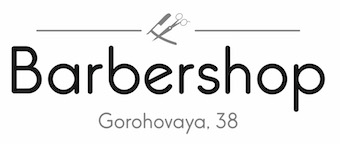 Graduate of Obninsk Franco-Russian Institute of Business Administration with a degree in Organizational Management, After moving to St. Petersburg in 2008, he worked as a designer. As a student at
Graduate of Obninsk Franco-Russian Institute of Business Administration with a degree in Organizational Management, After moving to St. Petersburg in 2008, he worked as a designer. As a student at 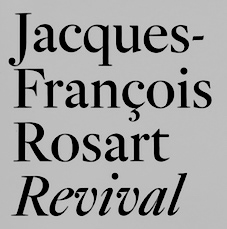 Graphic and type designer (b. Moscow) in Saint Petersburg, Russia, who started studying at UNIC in Moscow in 2015. In 2018, she published a book, Jacques-François Rosart Revival that documents not only Rosart's life but also some of her revivals of Rosart's typefaces. Hers are called Rosart Text and Display and include italics. After graduation, she joined the TypeType team.
Graphic and type designer (b. Moscow) in Saint Petersburg, Russia, who started studying at UNIC in Moscow in 2015. In 2018, she published a book, Jacques-François Rosart Revival that documents not only Rosart's life but also some of her revivals of Rosart's typefaces. Hers are called Rosart Text and Display and include italics. After graduation, she joined the TypeType team. 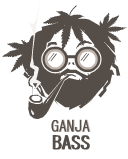 Vladivostok-based creator of the expressive
Vladivostok-based creator of the expressive 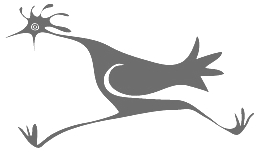 [
[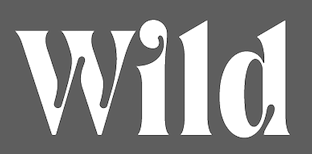 Moscow-based designer of these Latin / Cyrillic typefaces in 2017: Minton 52, Stardate (a trekkie font), Bowsprit (an angular display typeface), Ghost Dancer (a high contrast display typeface). In 2018, he designed Single Malt. In 2019, he added the display typeface Drongo. [
Moscow-based designer of these Latin / Cyrillic typefaces in 2017: Minton 52, Stardate (a trekkie font), Bowsprit (an angular display typeface), Ghost Dancer (a high contrast display typeface). In 2018, he designed Single Malt. In 2019, he added the display typeface Drongo. [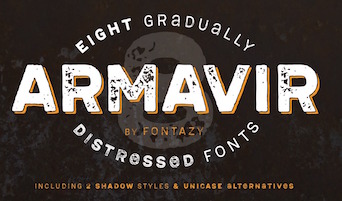 [
[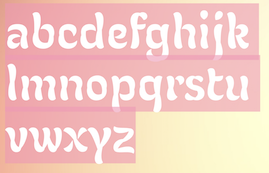 Seryozha Rasskazov is a graphic and type designer, lettering artist, and sign painter from St. Petersburg, Russia, who studied at ECAL's Master in Type Design program in Lausanne, 2020-2022. Under the supervision of Kai Bernau, he designed the optically optimized variable didone stencil typeface Didonist (2021).
Seryozha Rasskazov is a graphic and type designer, lettering artist, and sign painter from St. Petersburg, Russia, who studied at ECAL's Master in Type Design program in Lausanne, 2020-2022. Under the supervision of Kai Bernau, he designed the optically optimized variable didone stencil typeface Didonist (2021). 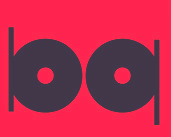 Bryansk, Russia-based cofounder in 2011 with Valery Zaveryaev of the Russian type foundry
Bryansk, Russia-based cofounder in 2011 with Valery Zaveryaev of the Russian type foundry  During his studies at the HSE Art and Design School in Korolyov, Moscow, Russia-based Ilya Zakharov designed the
During his studies at the HSE Art and Design School in Korolyov, Moscow, Russia-based Ilya Zakharov designed the